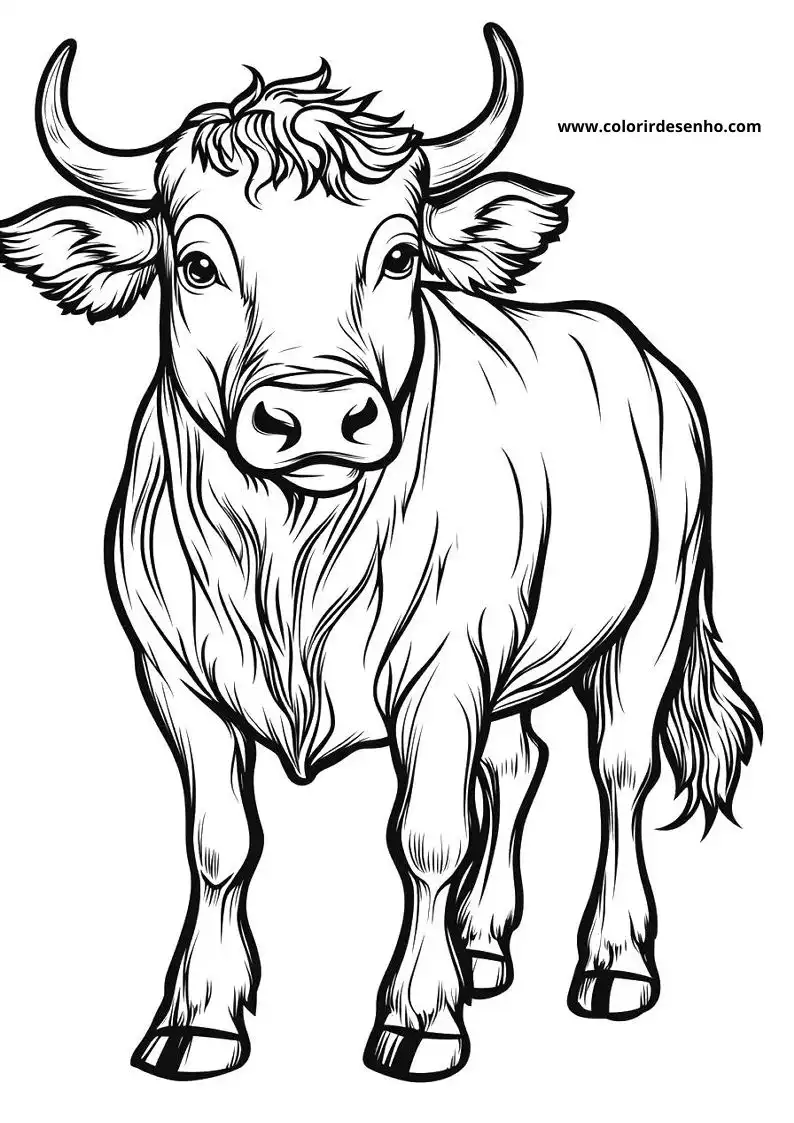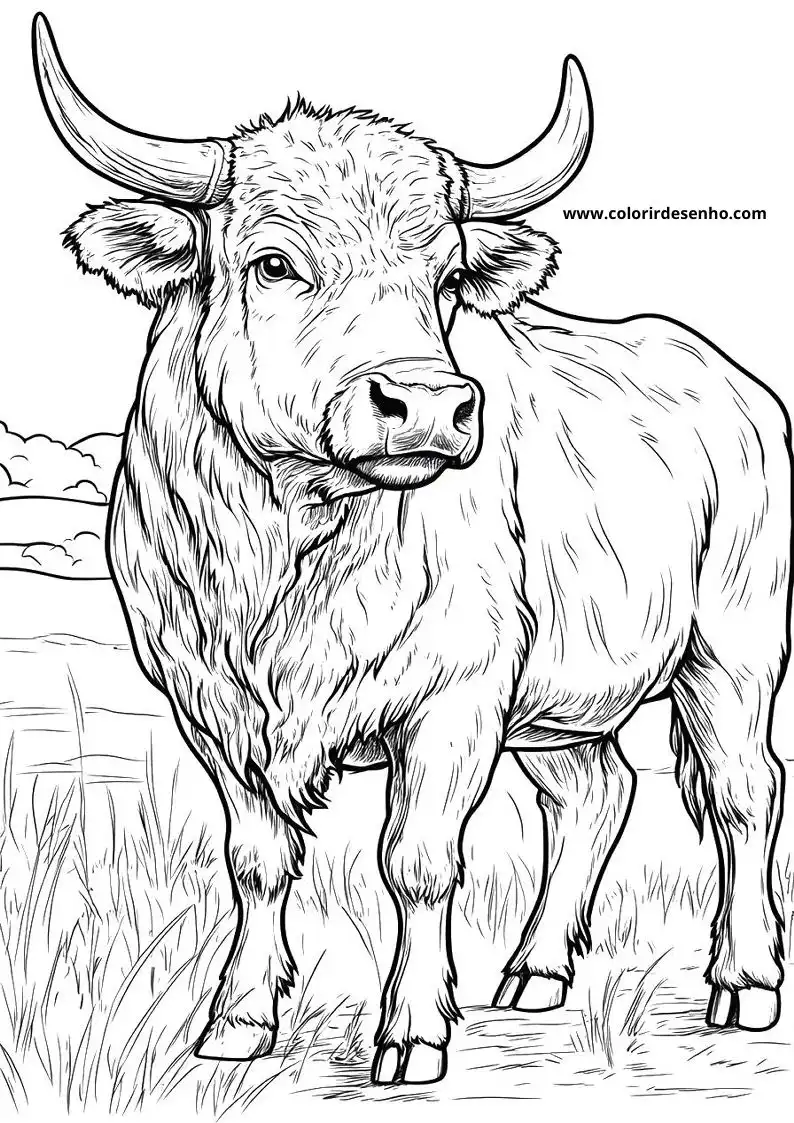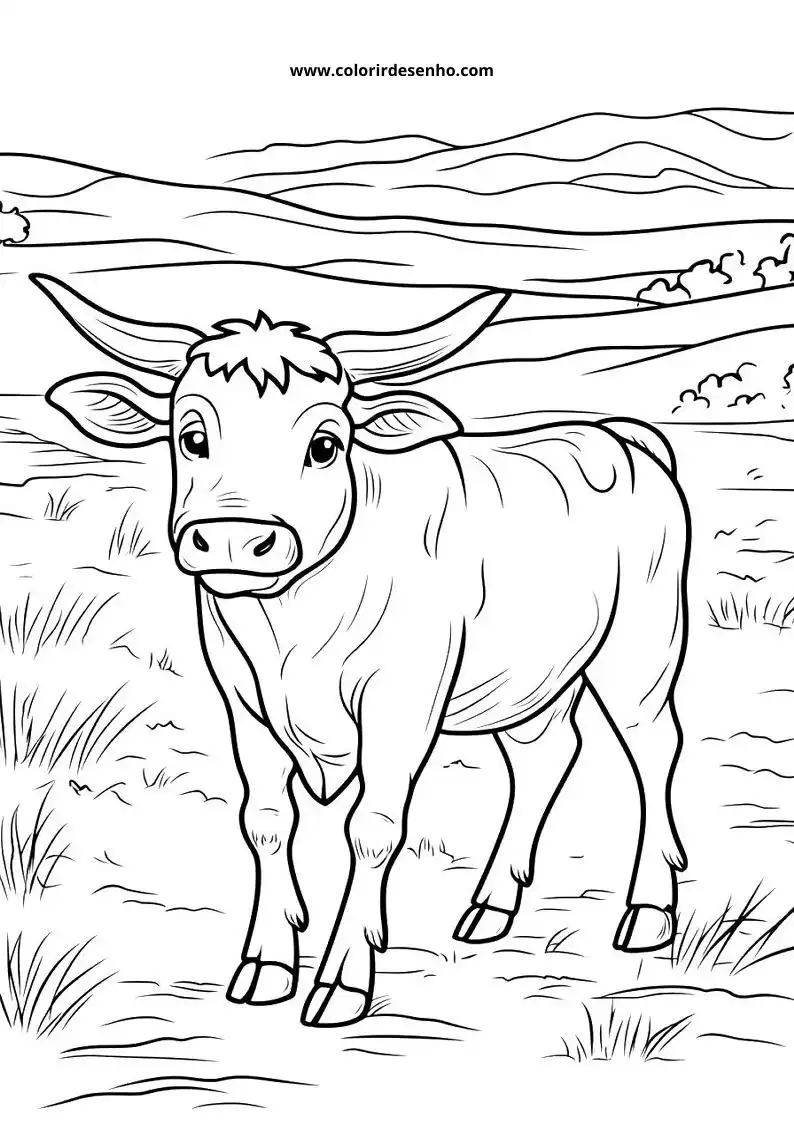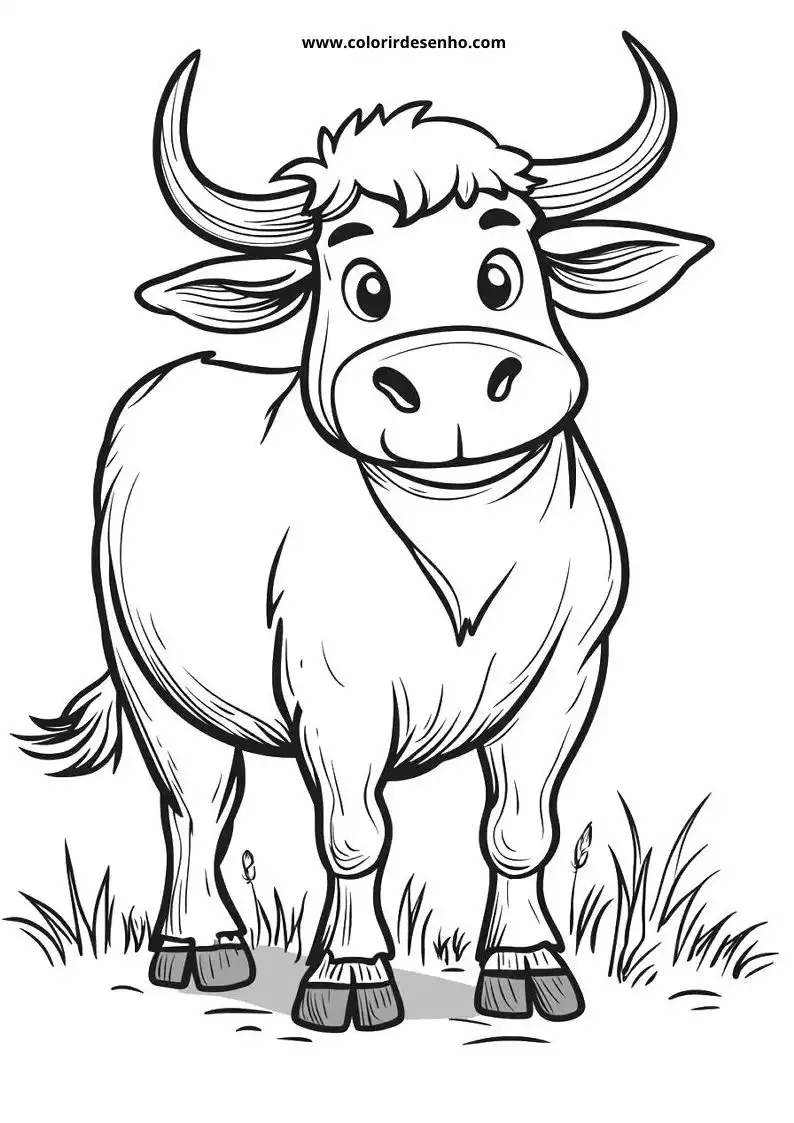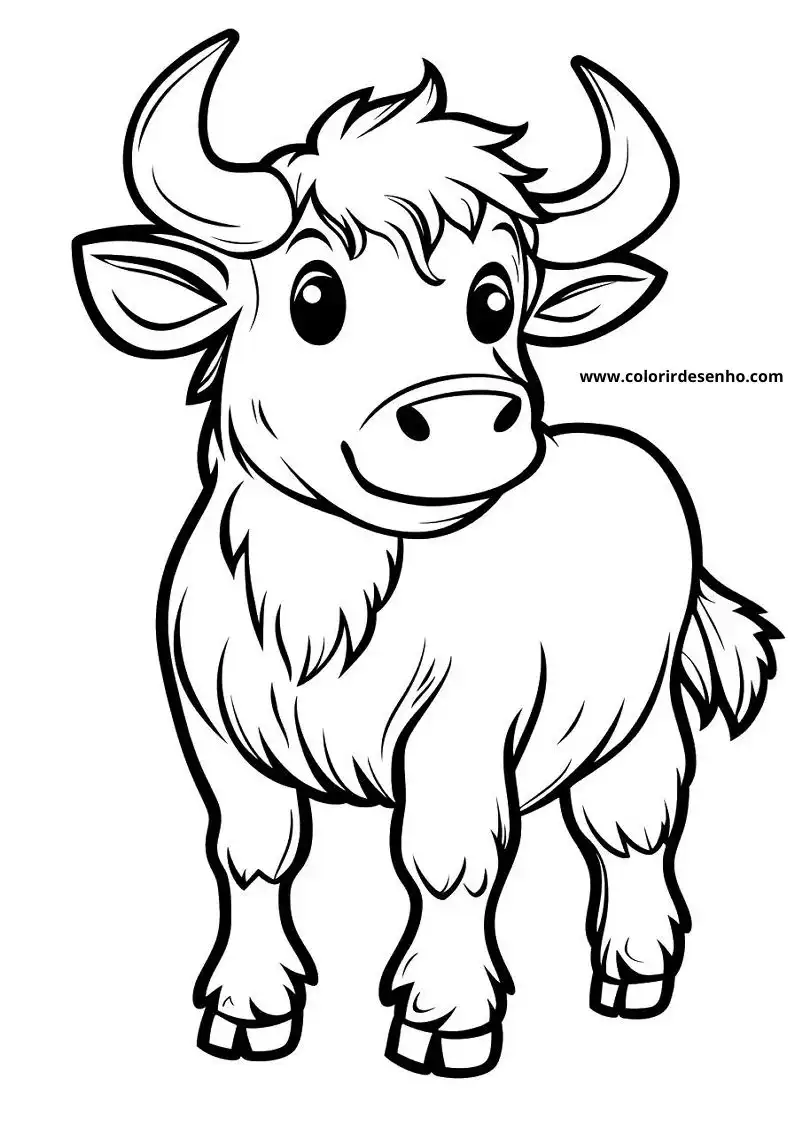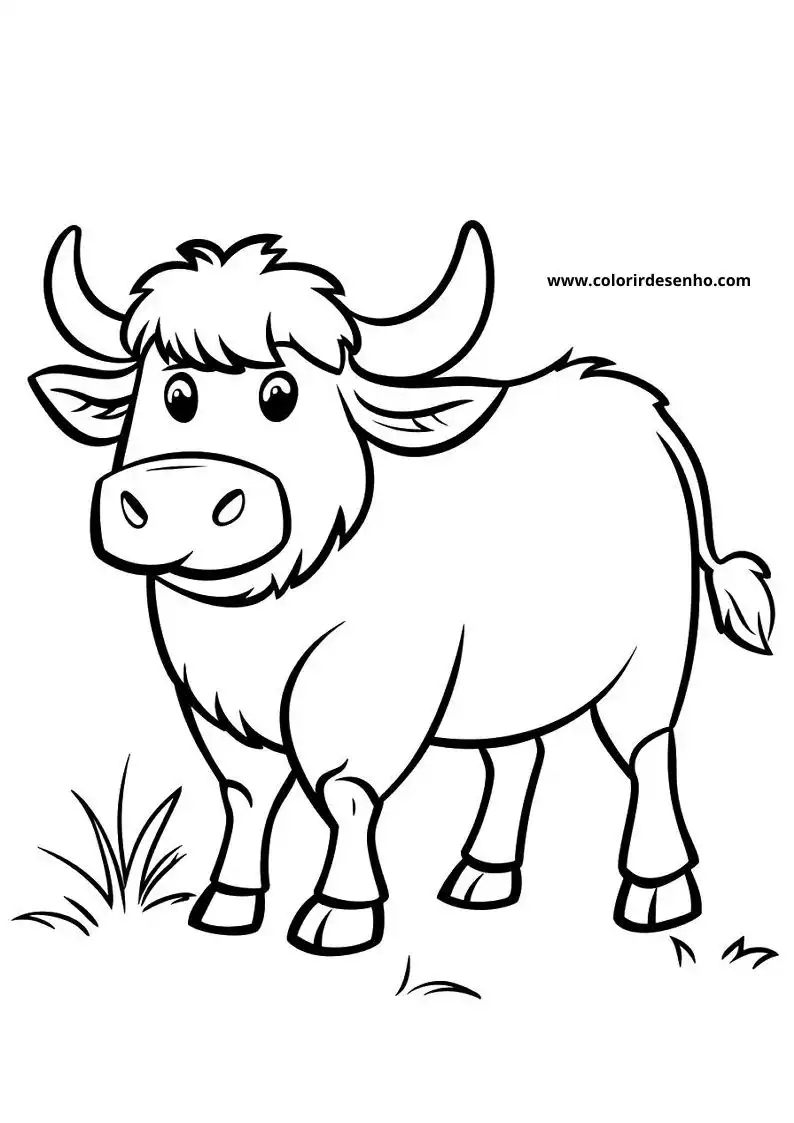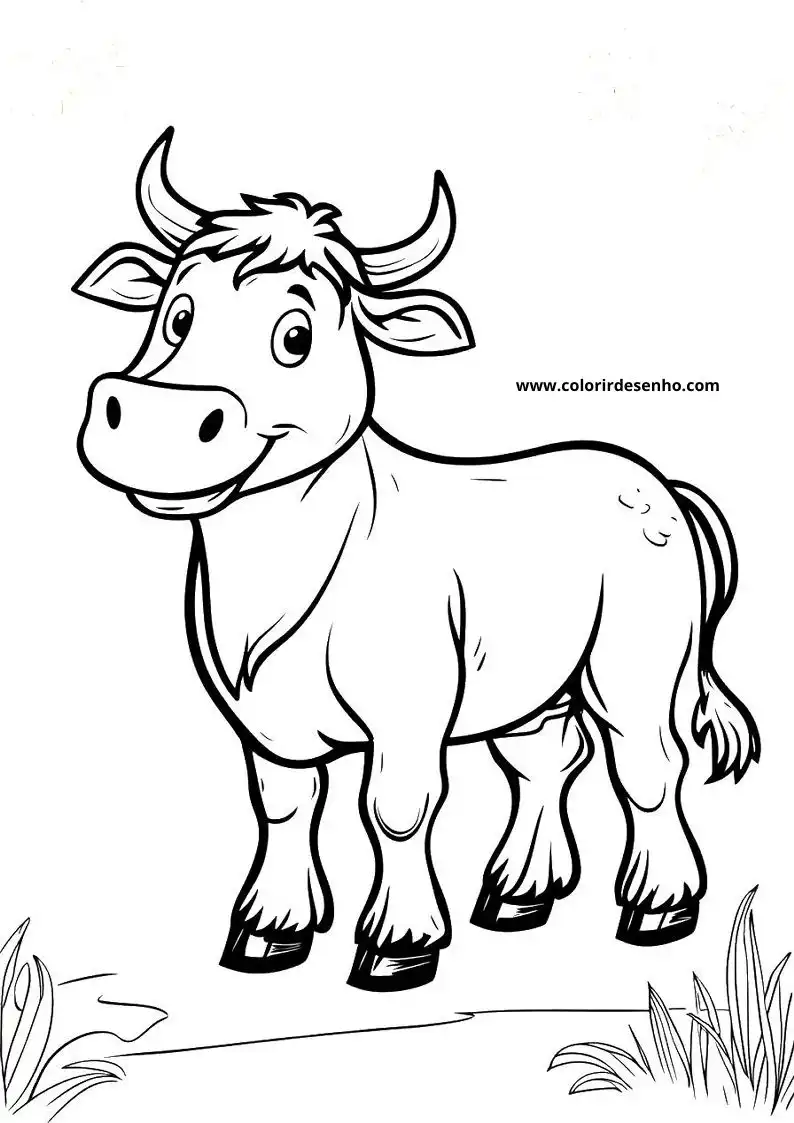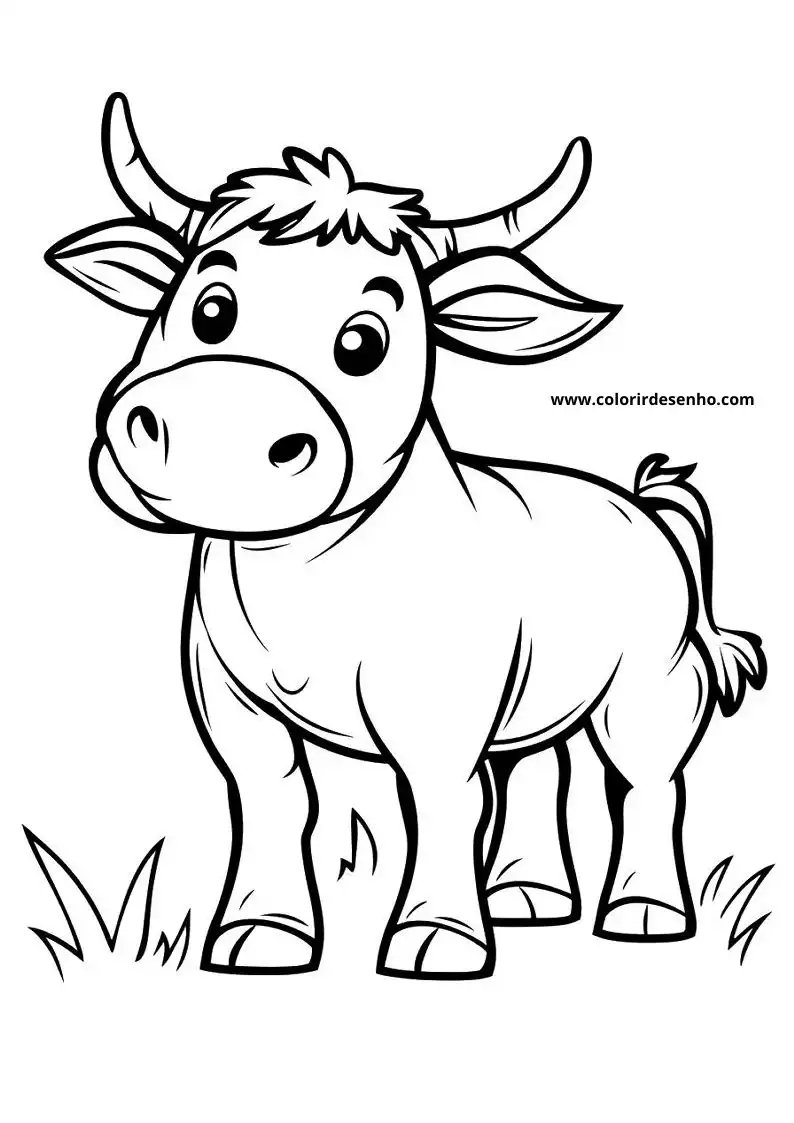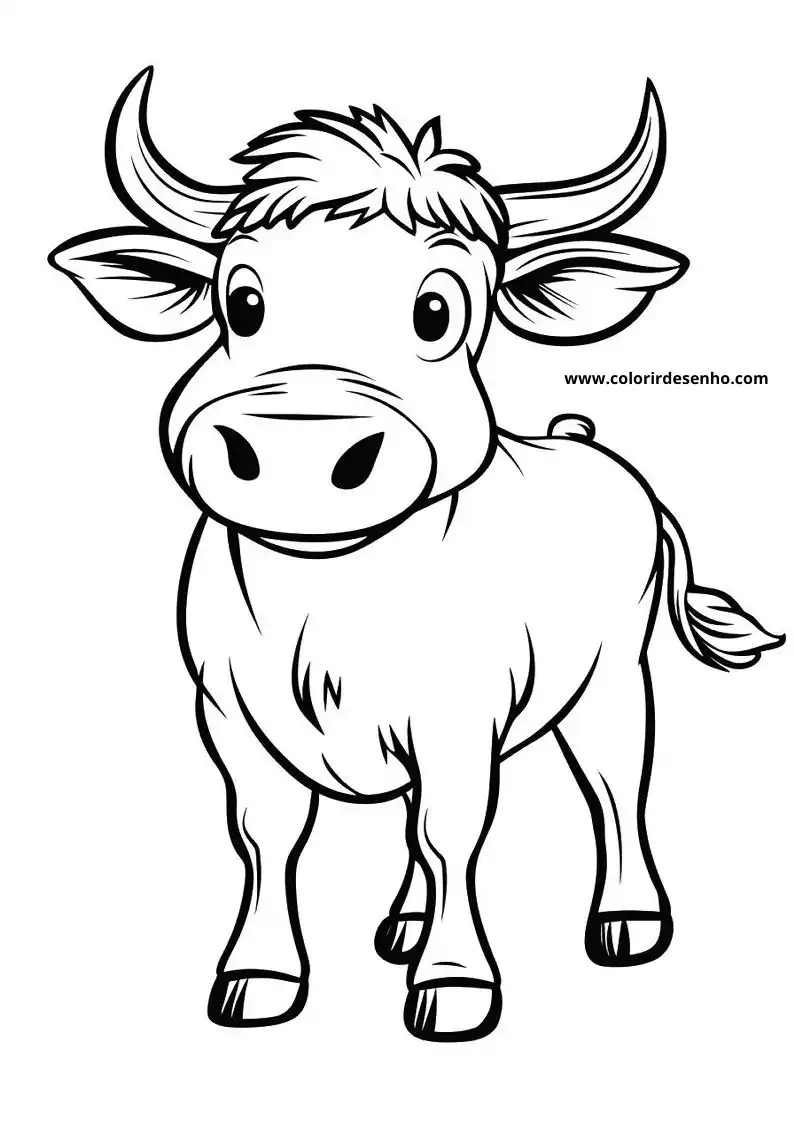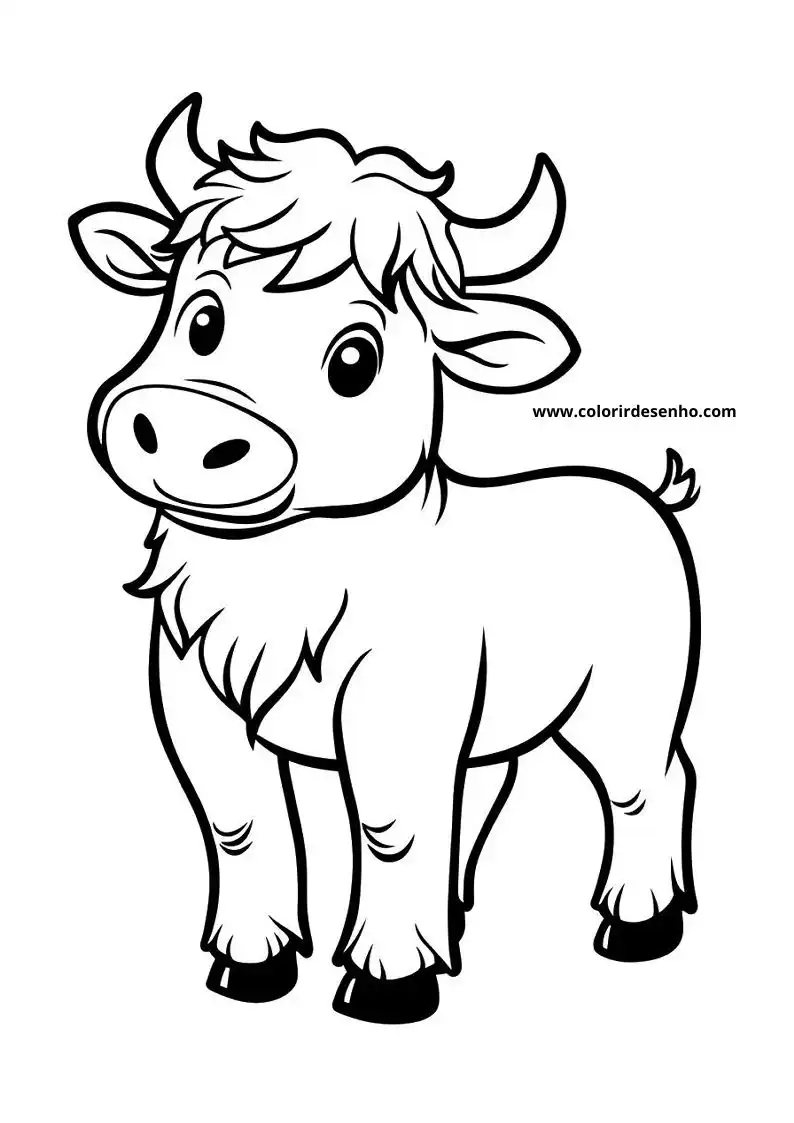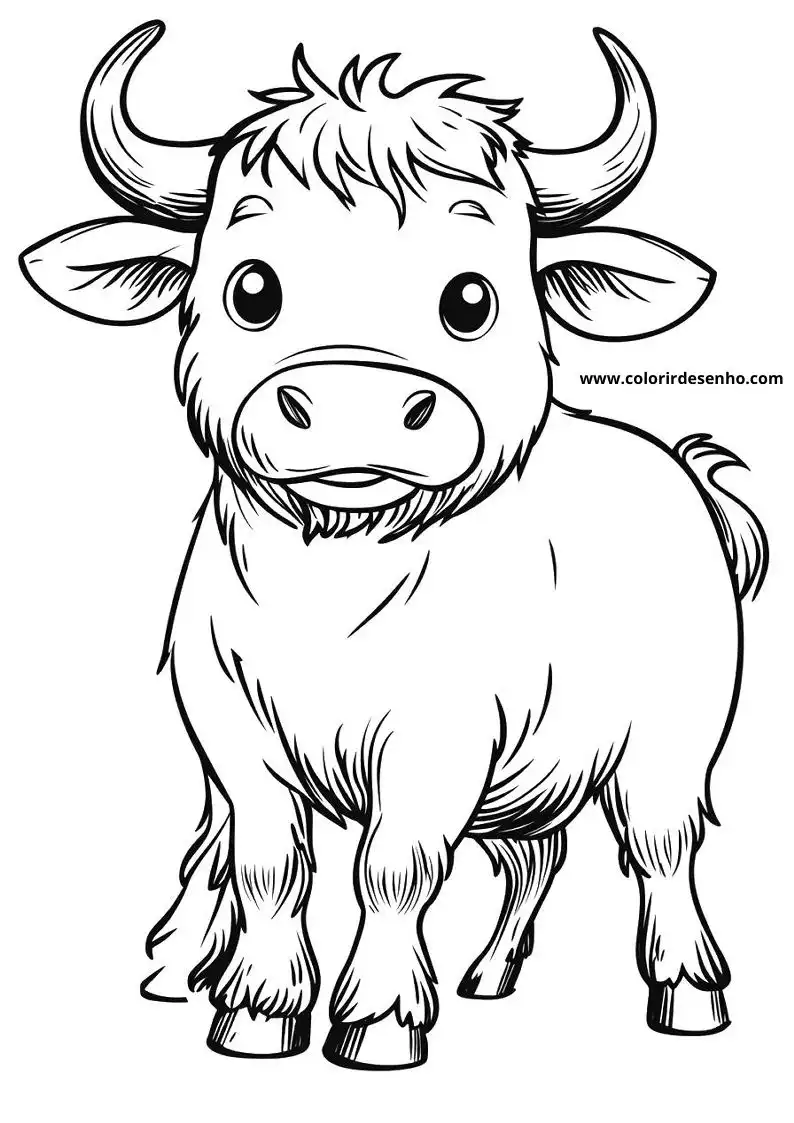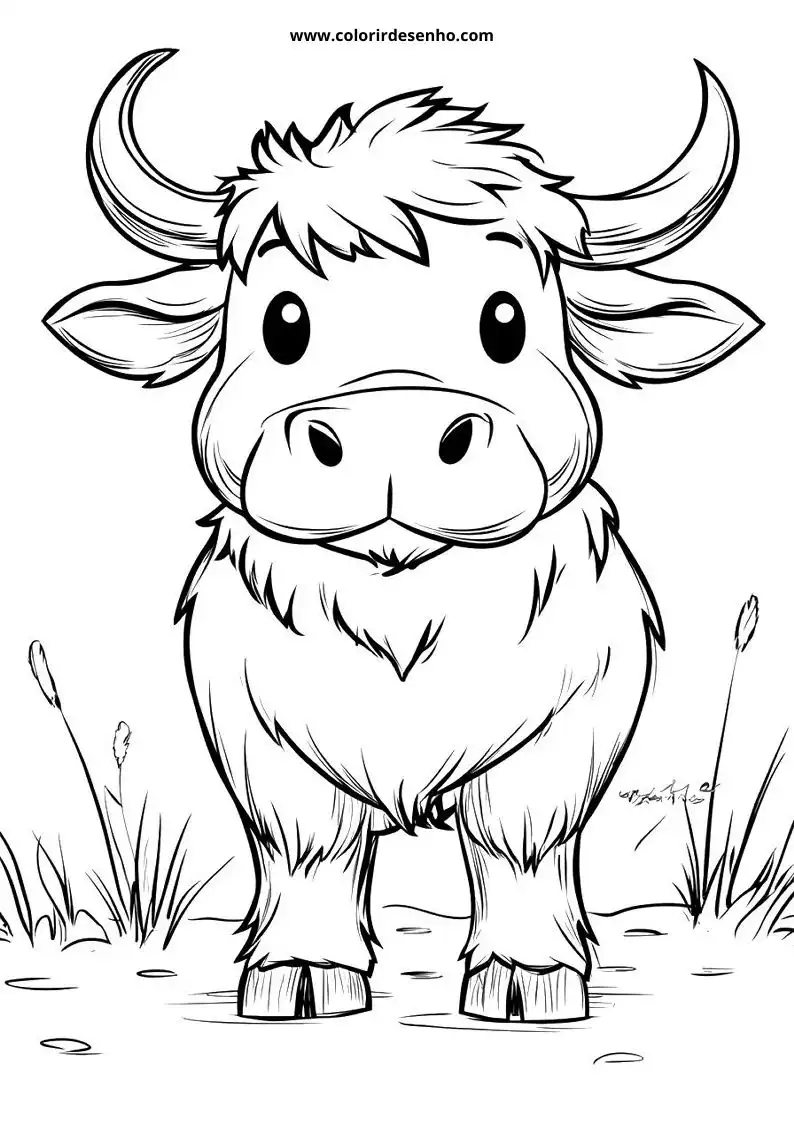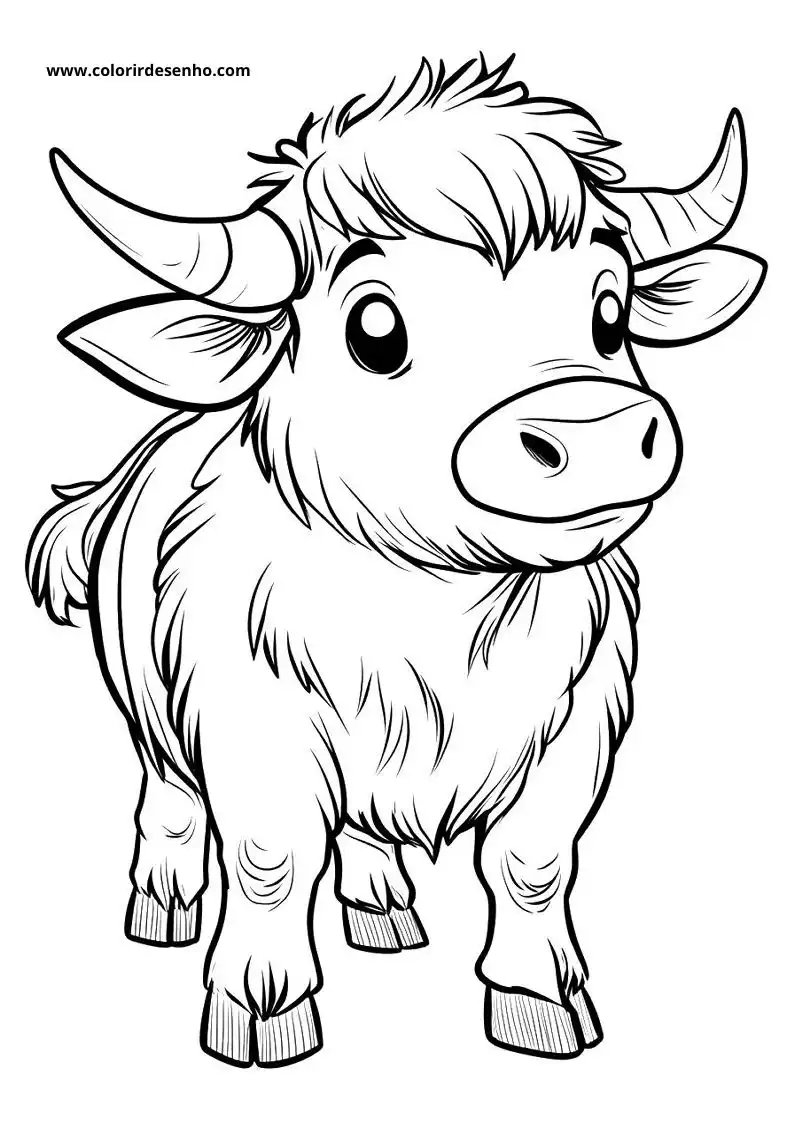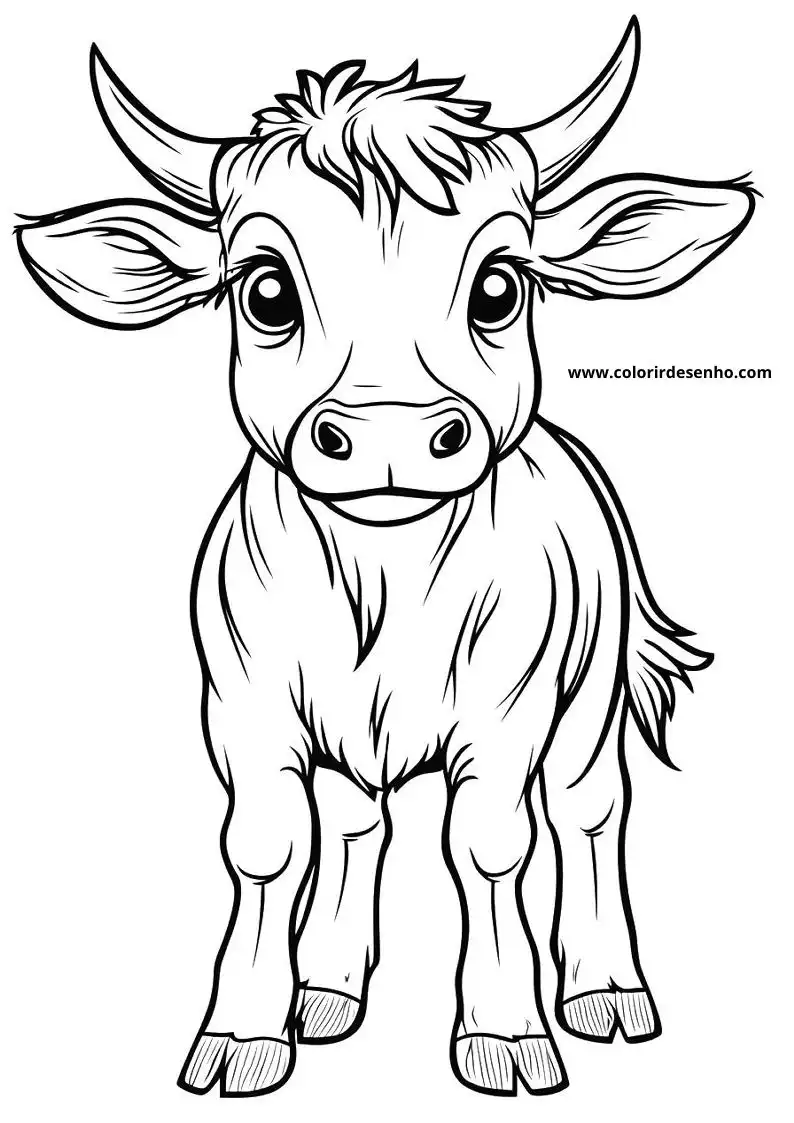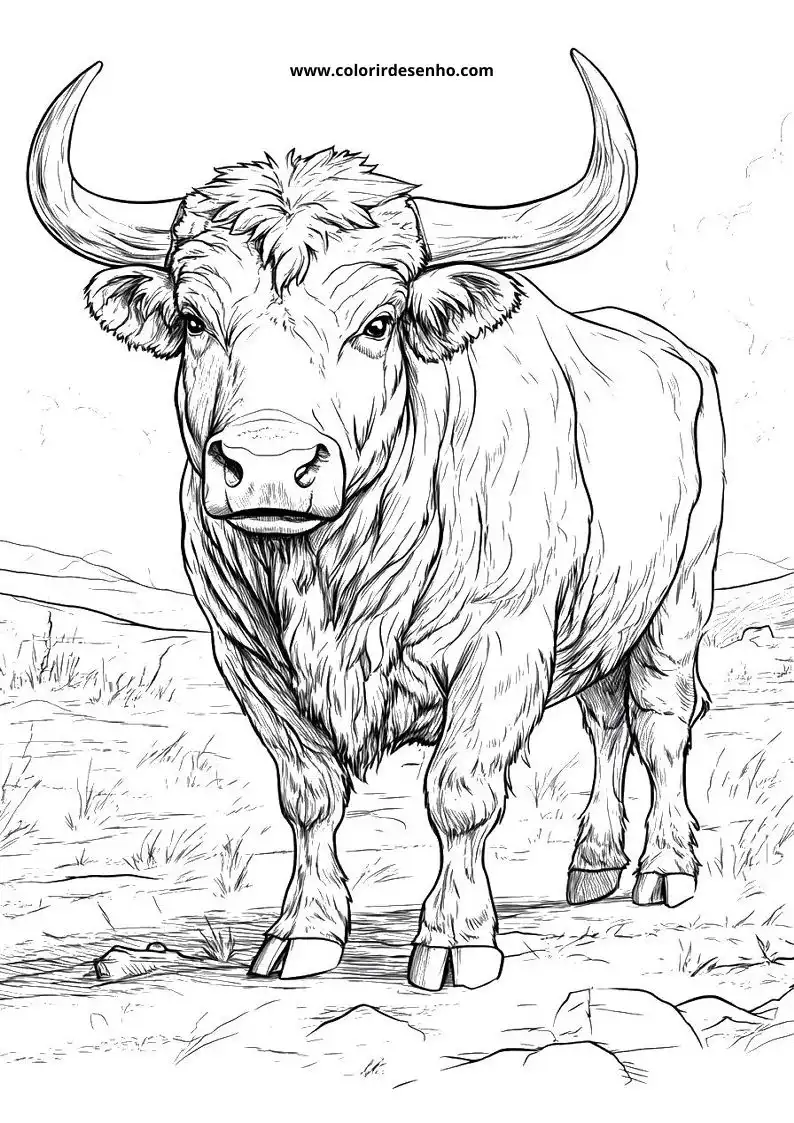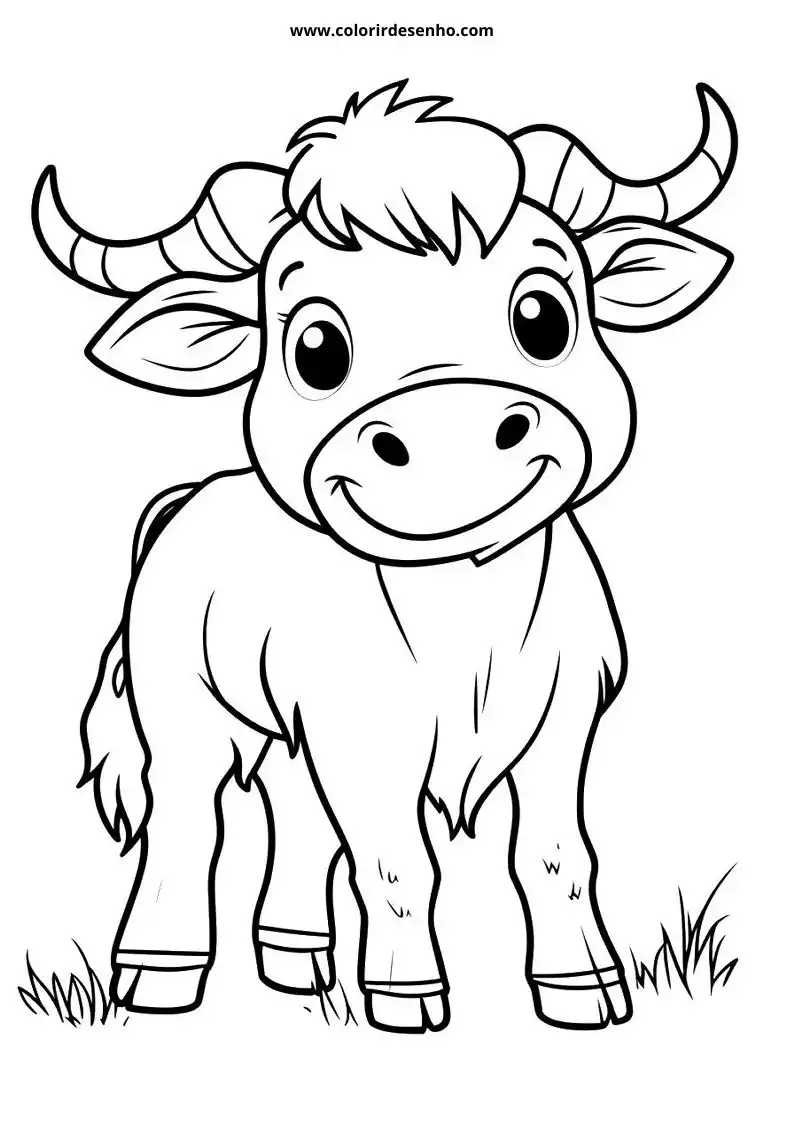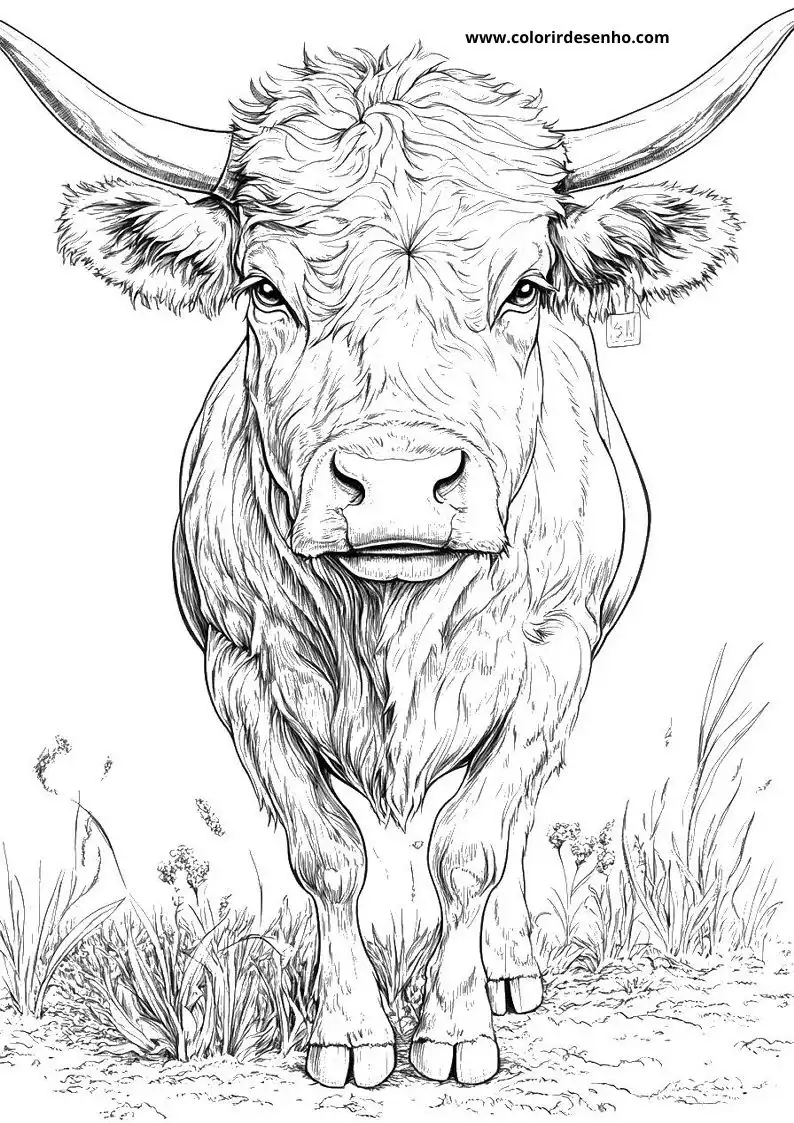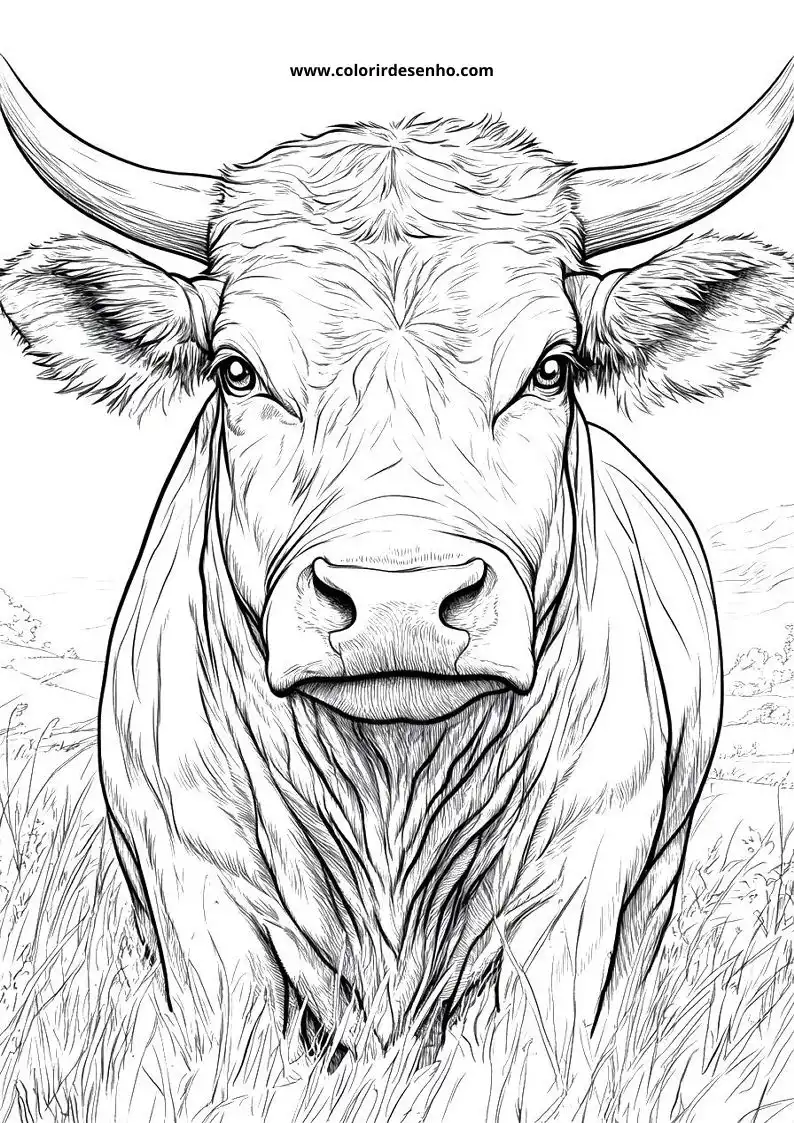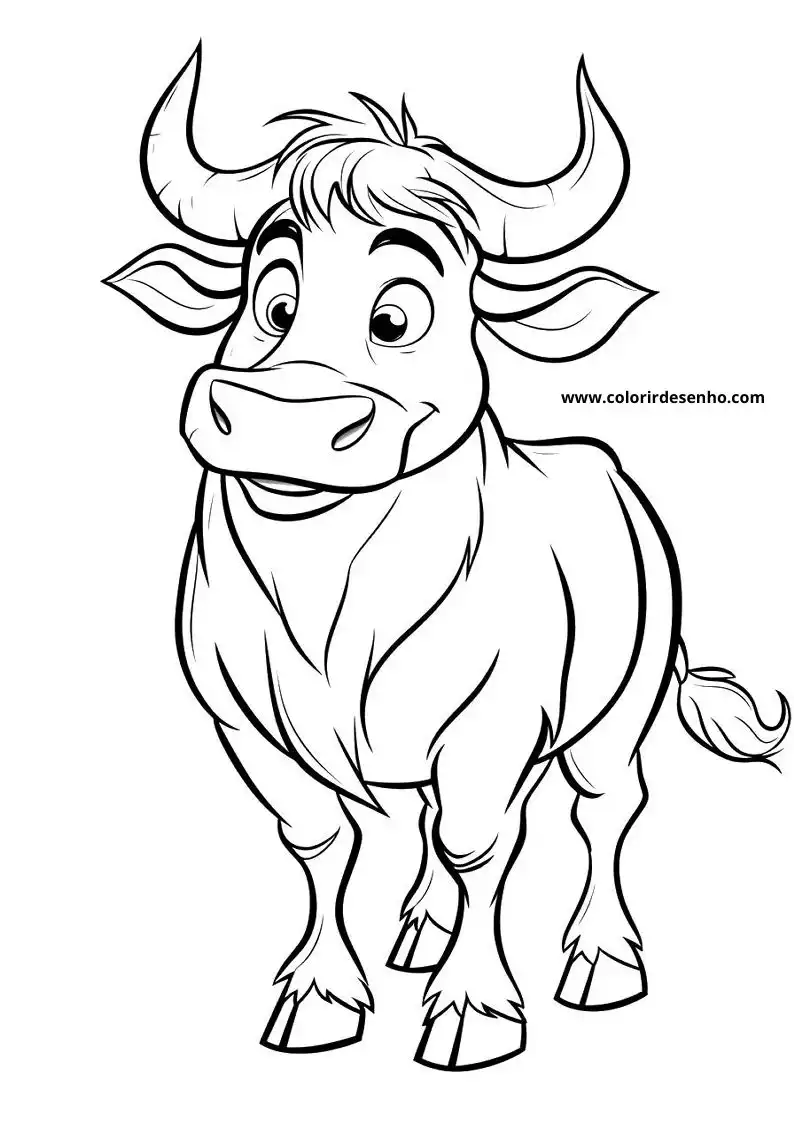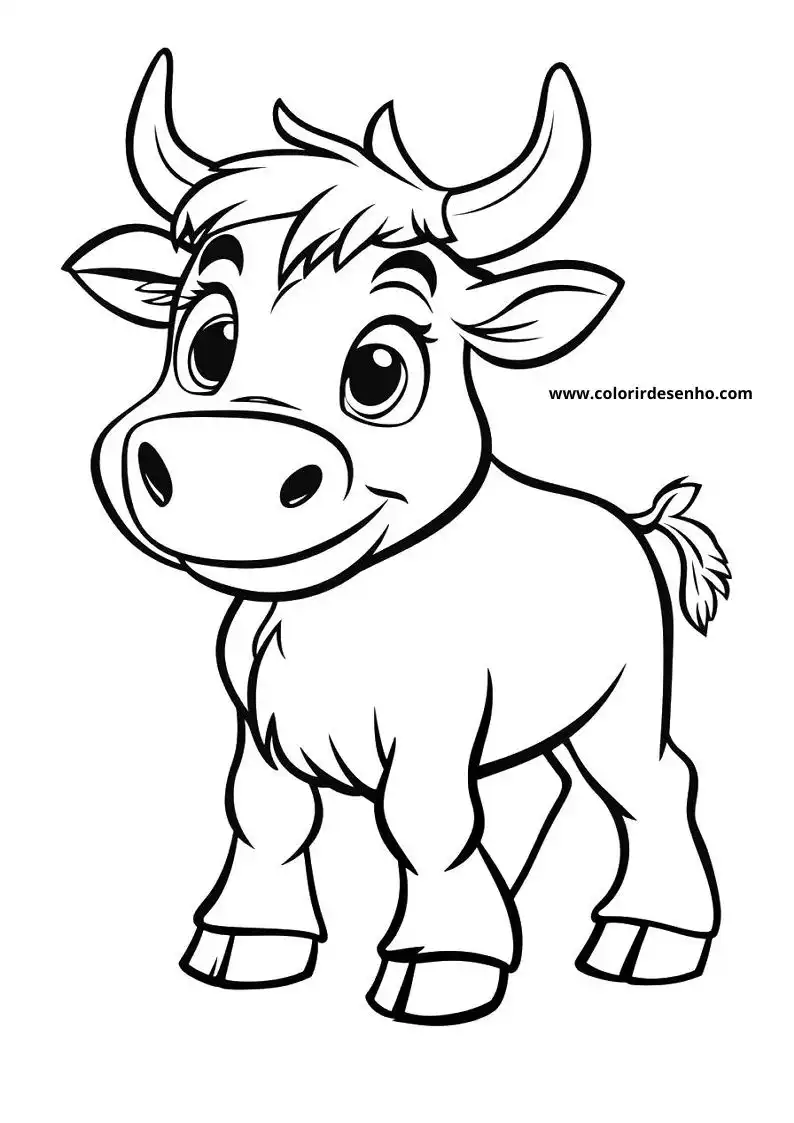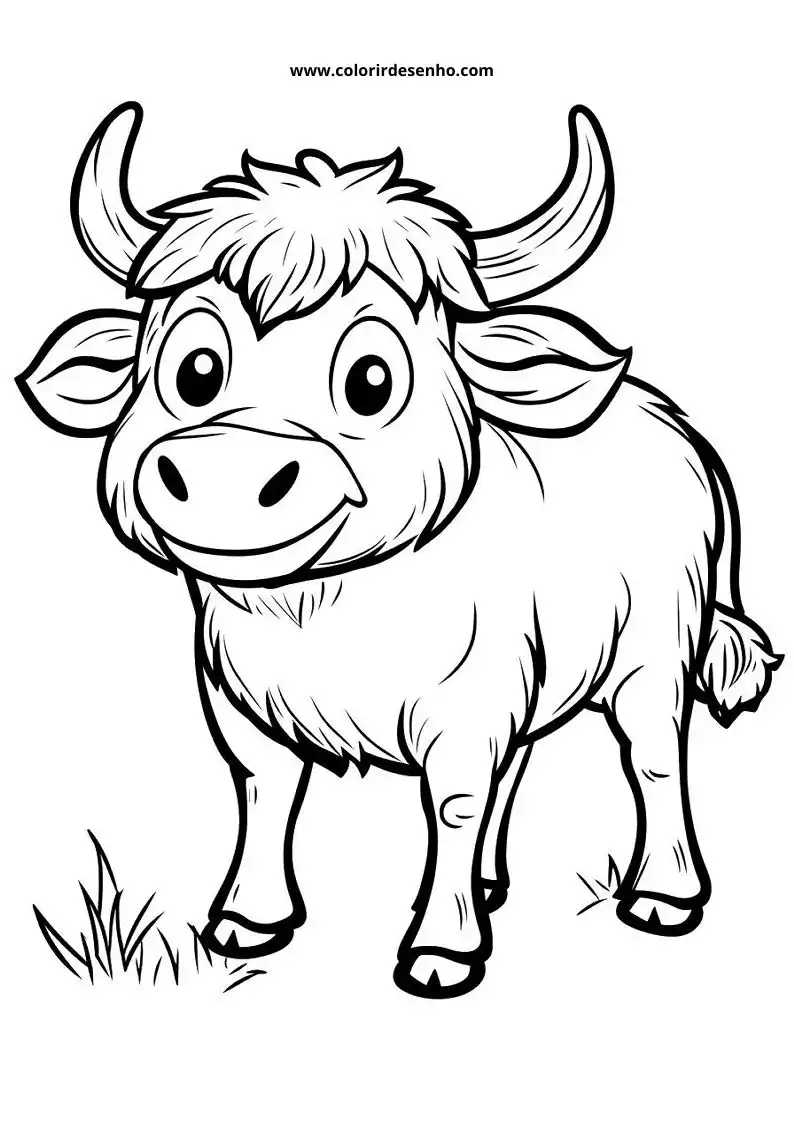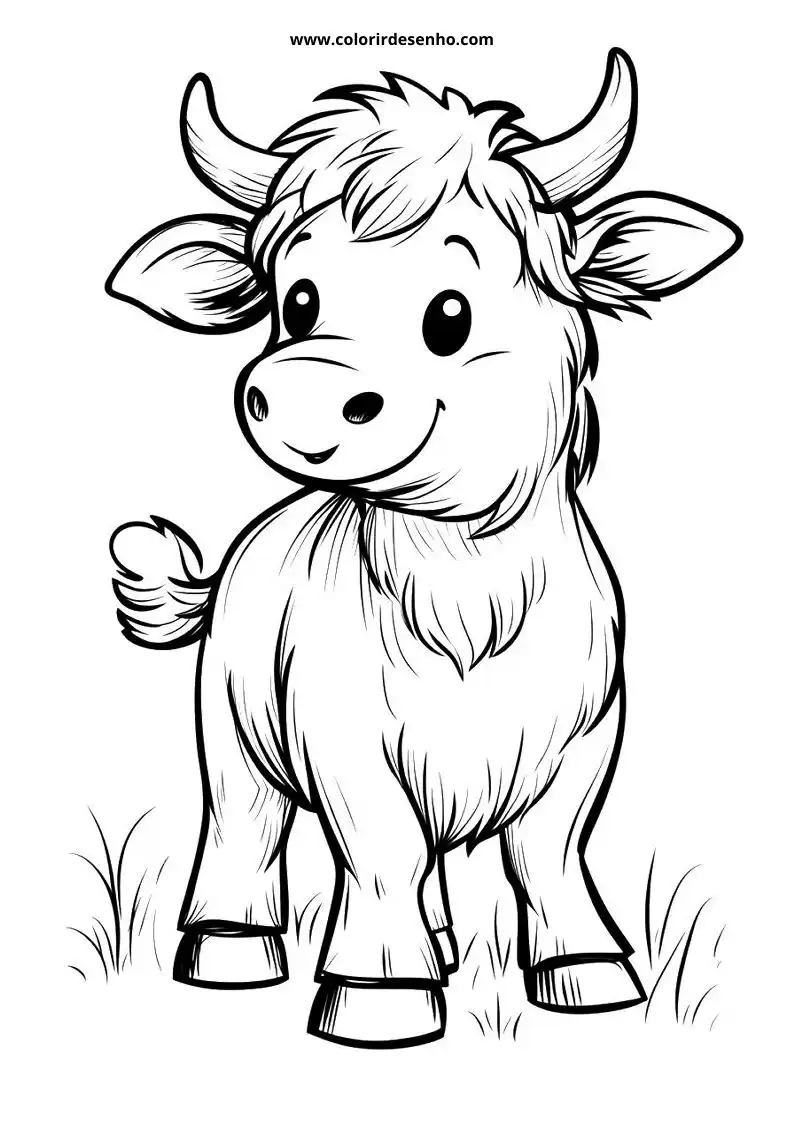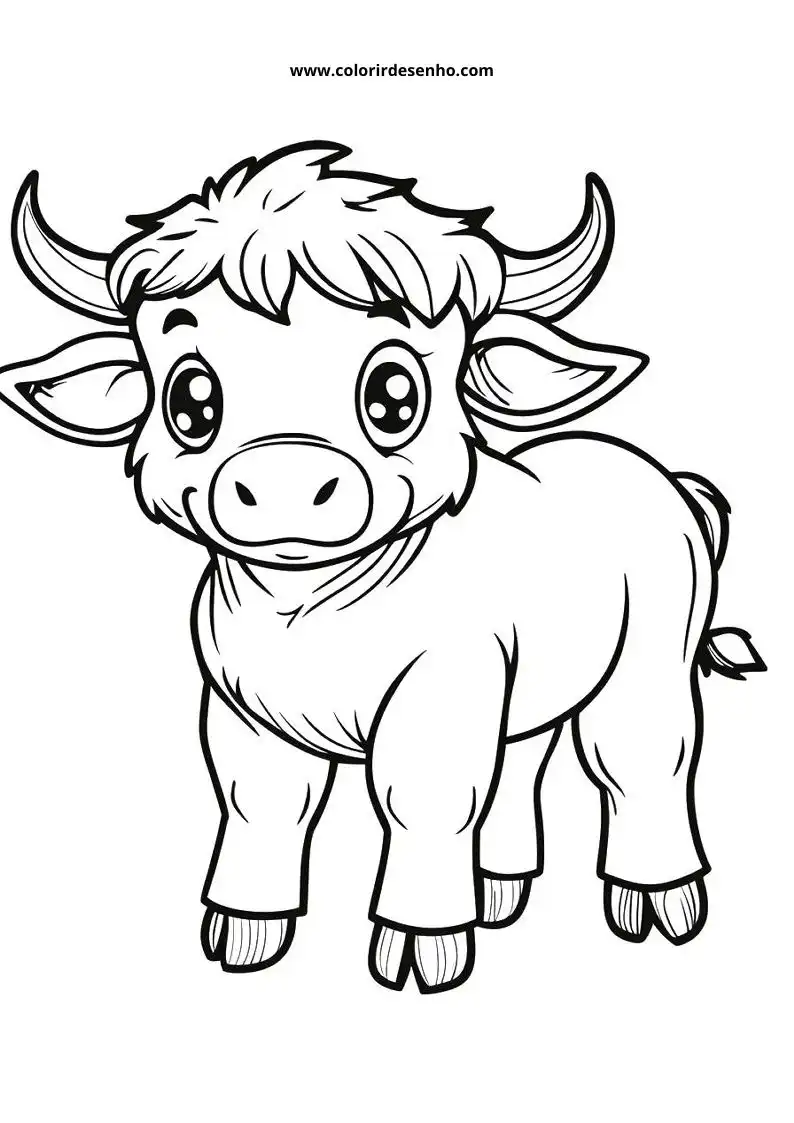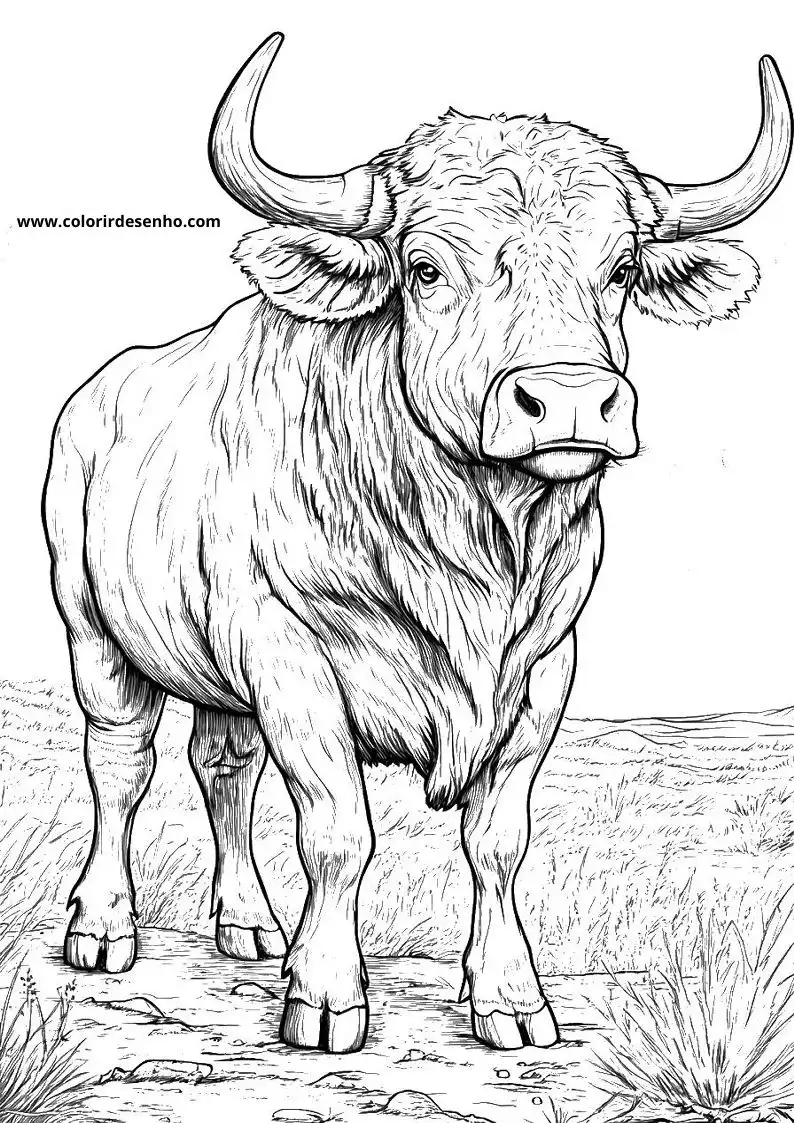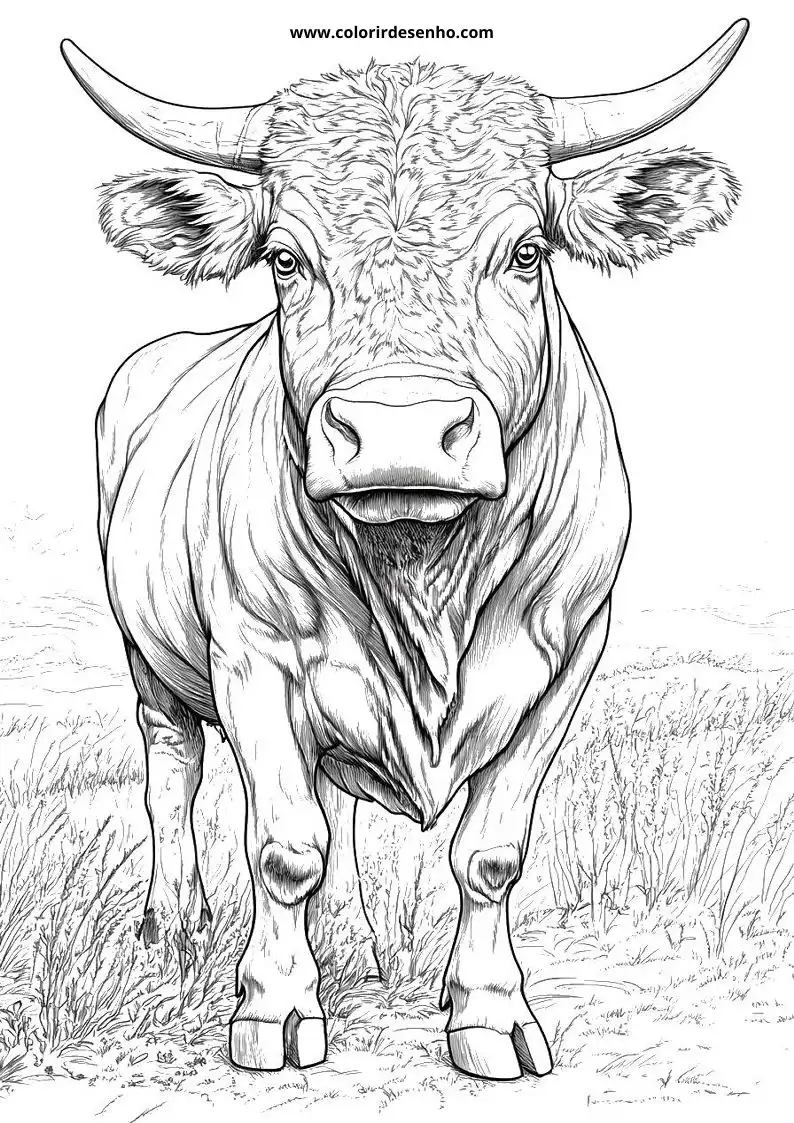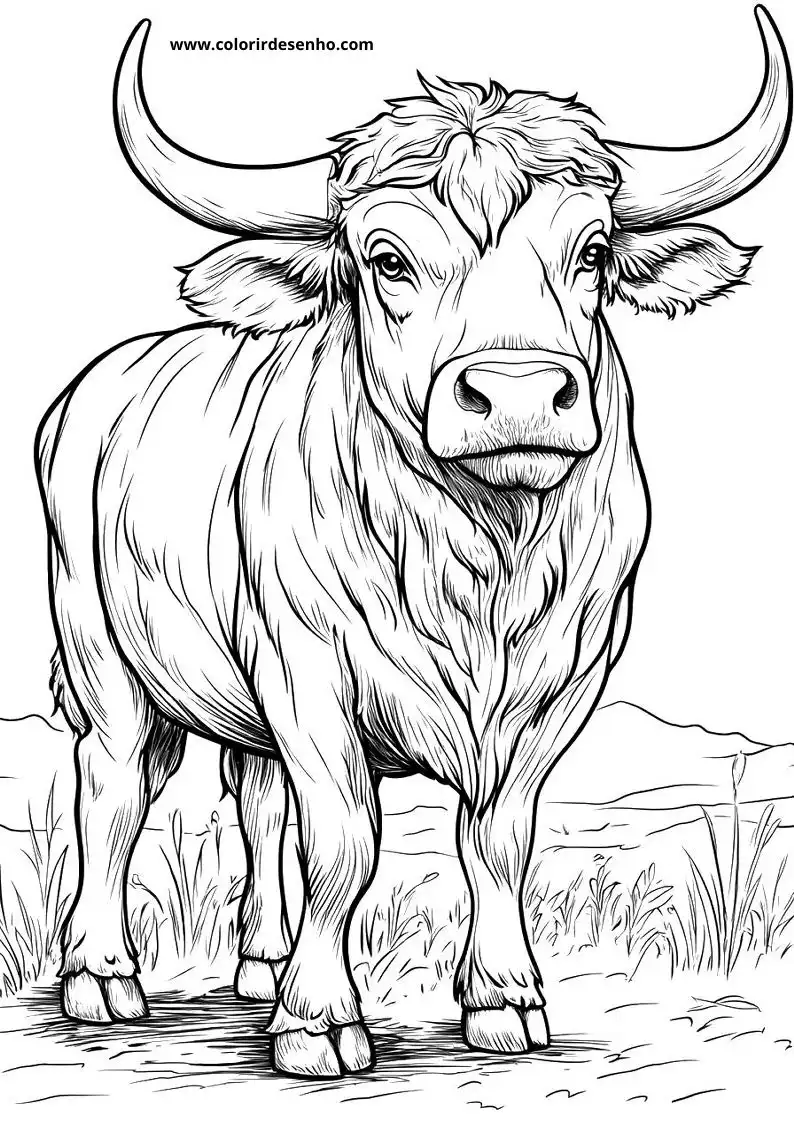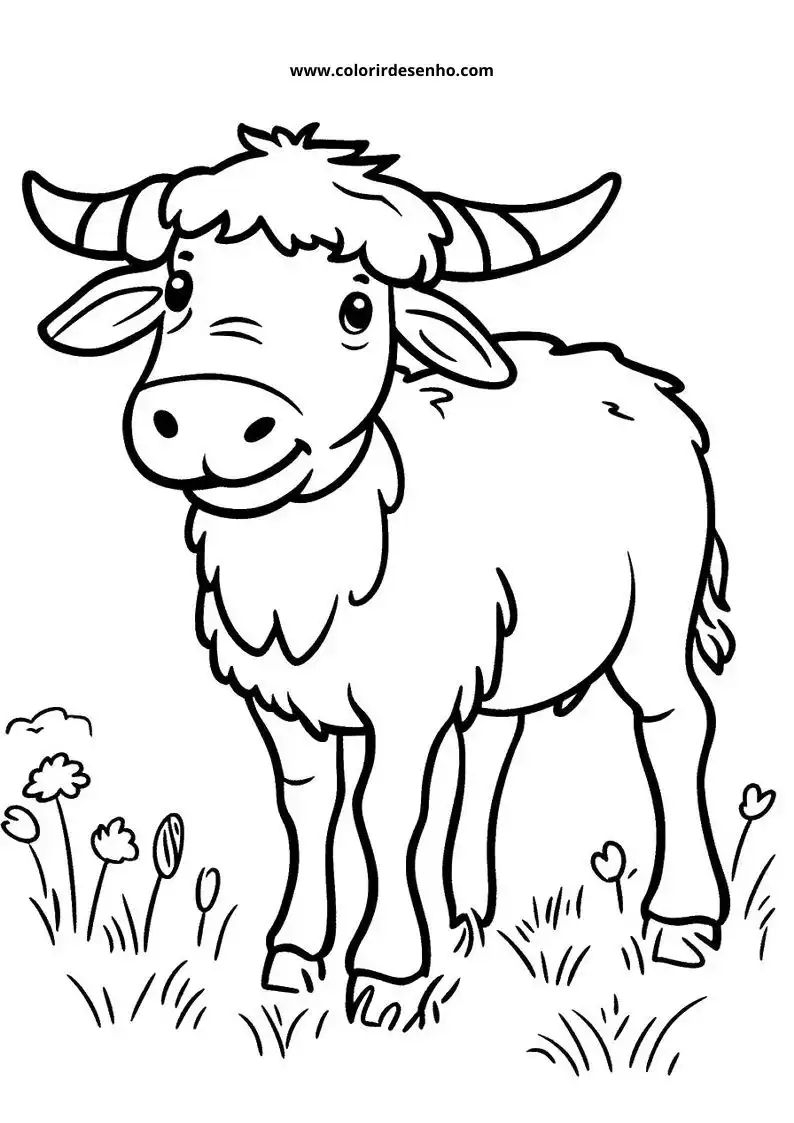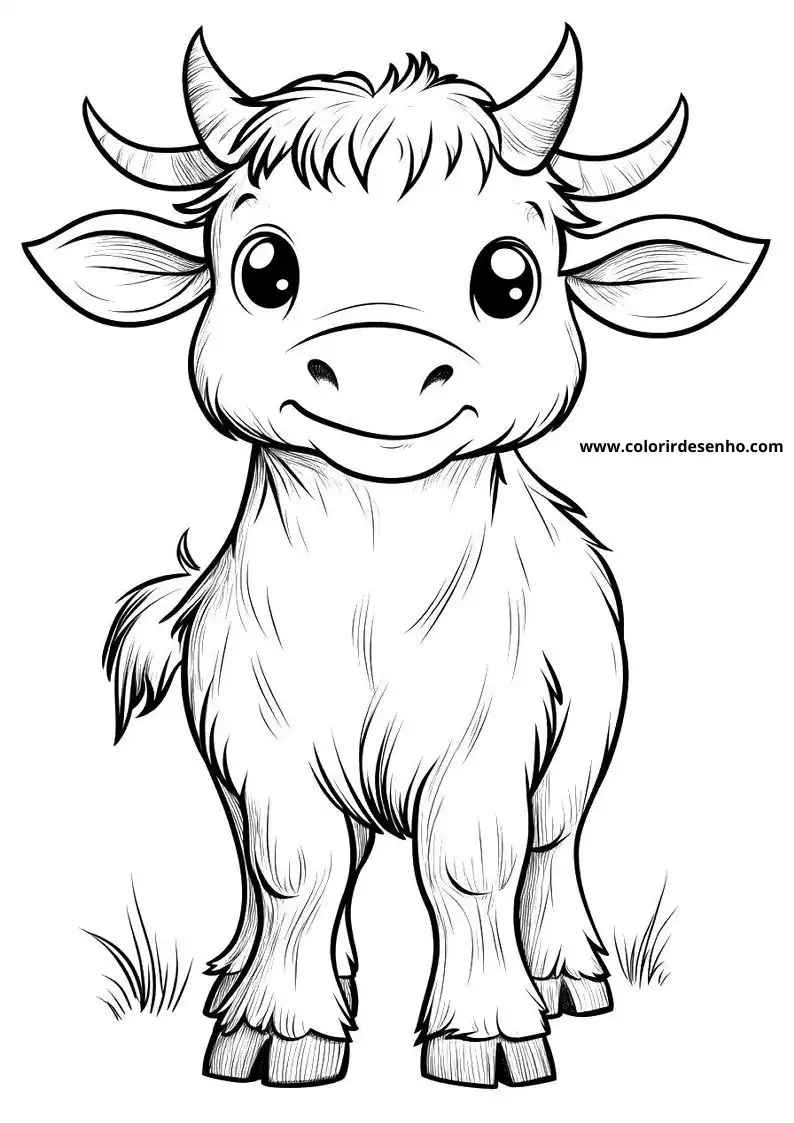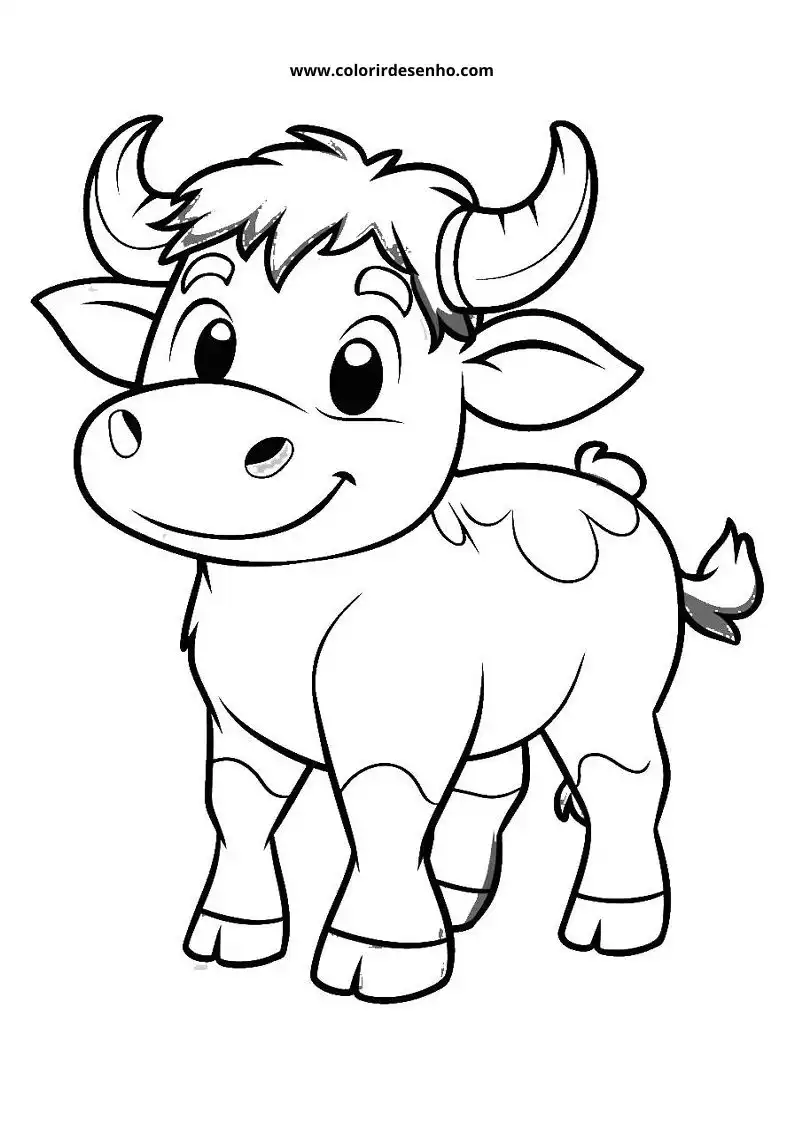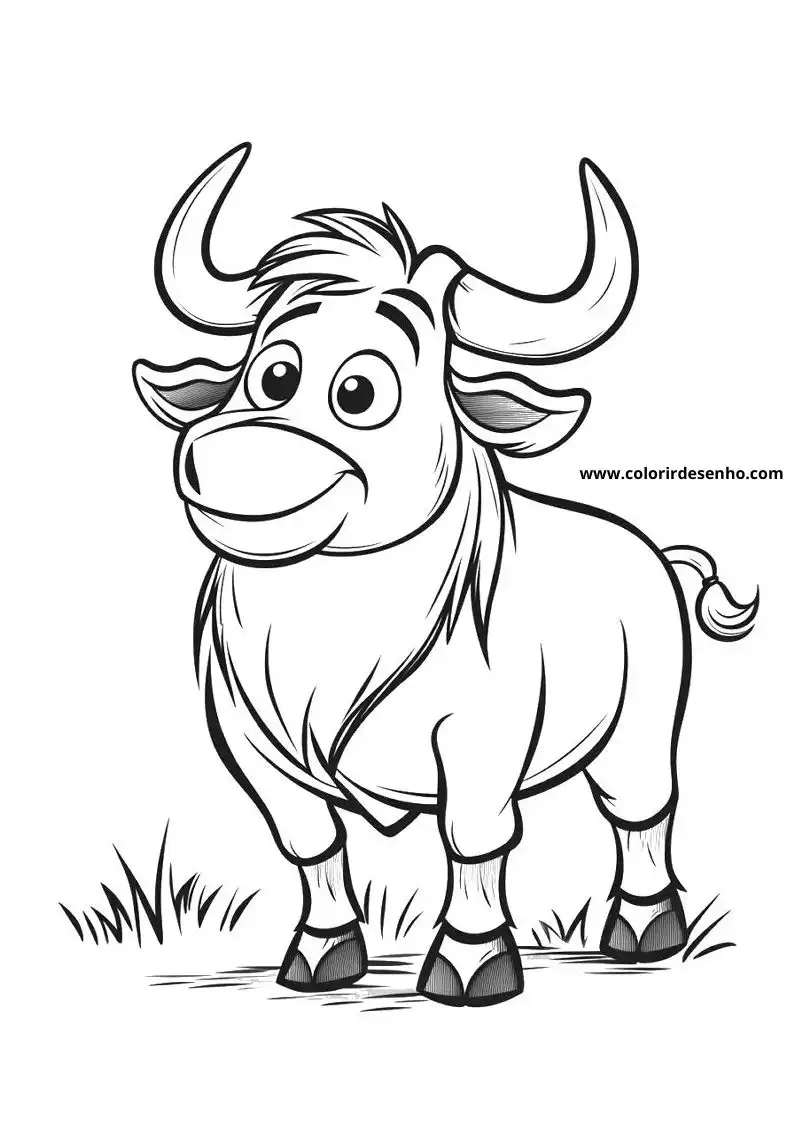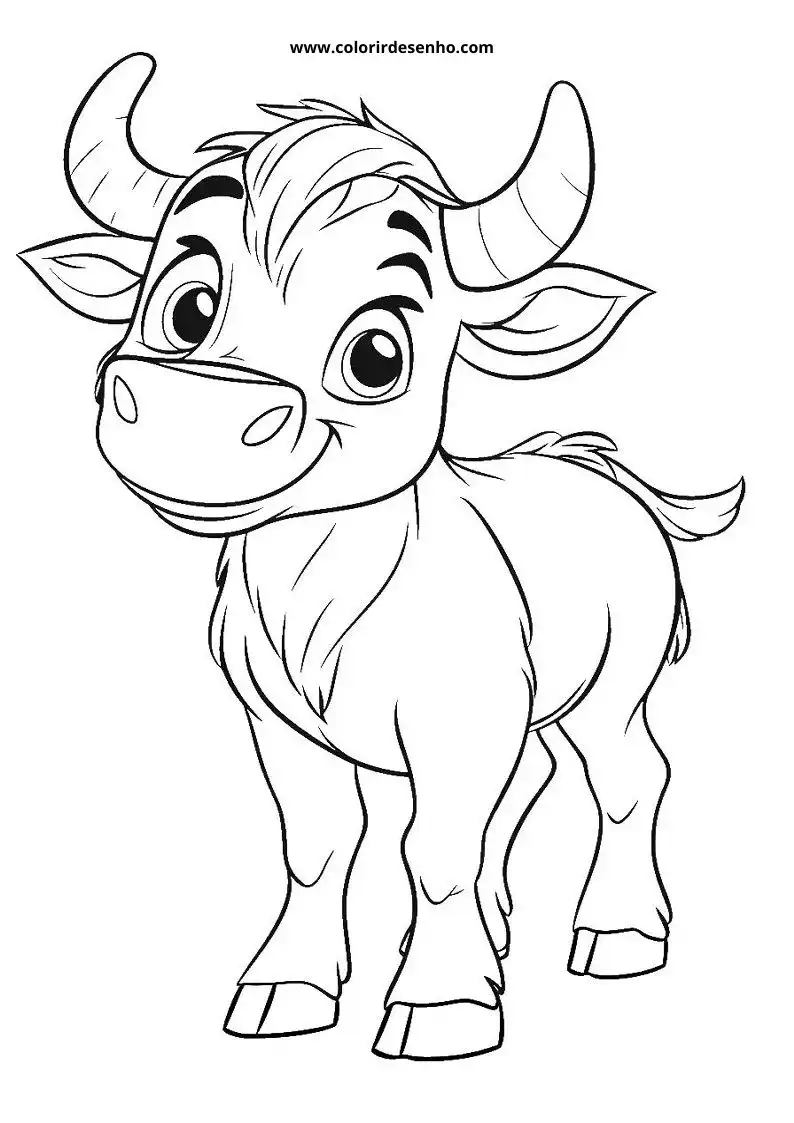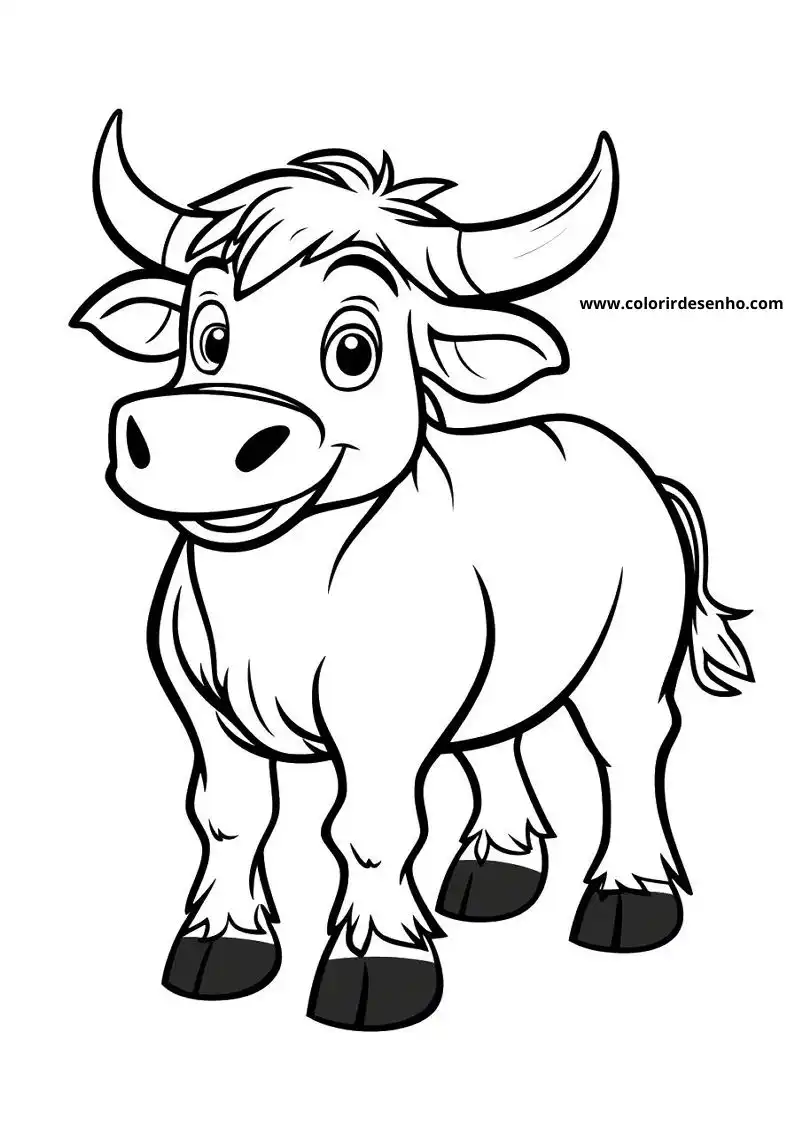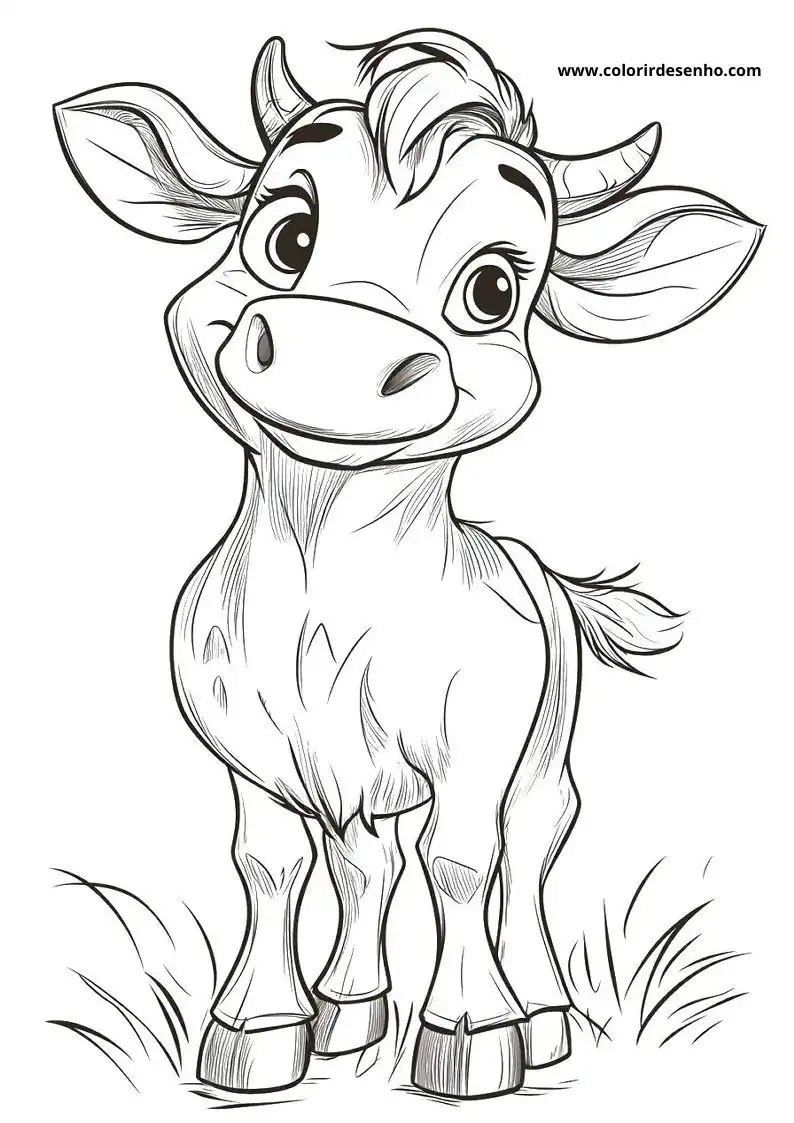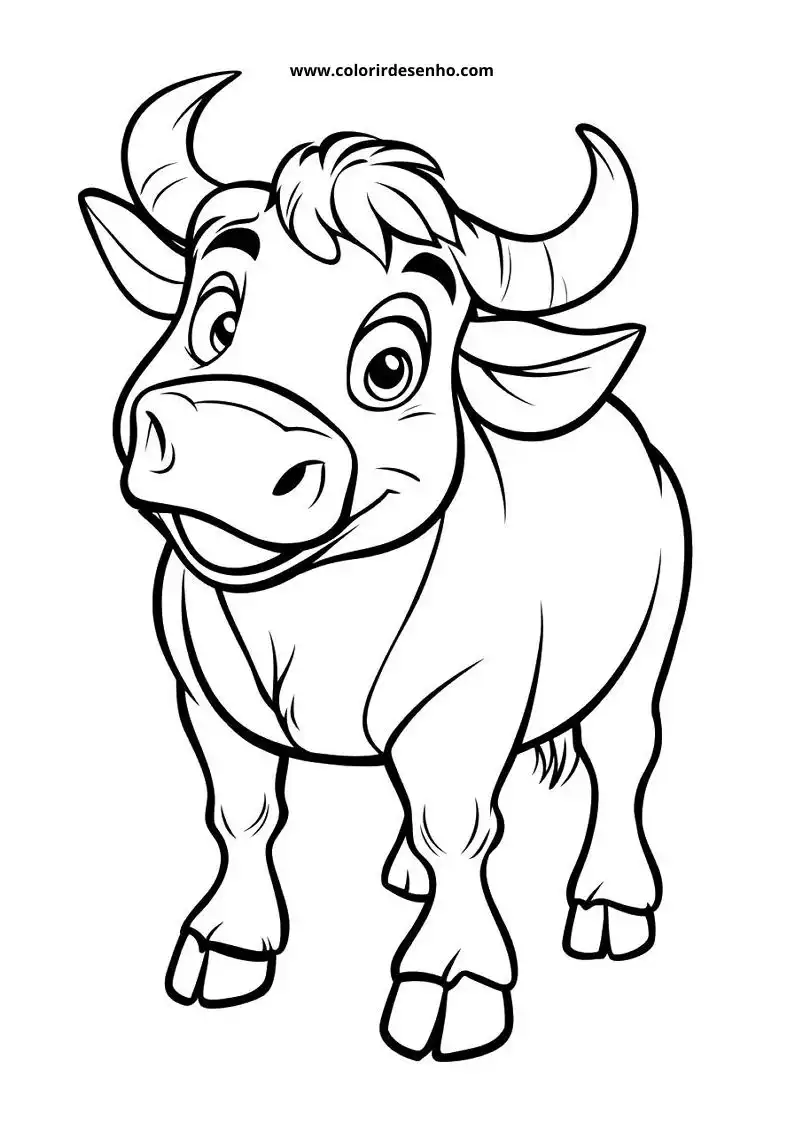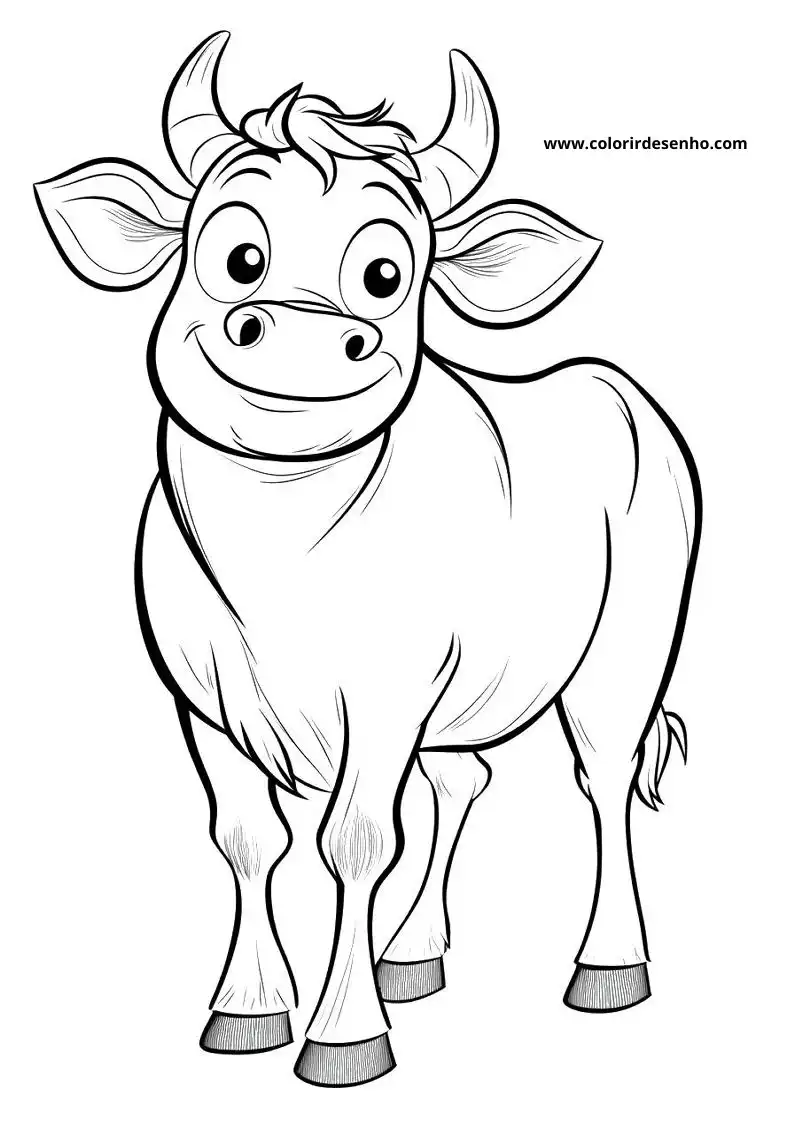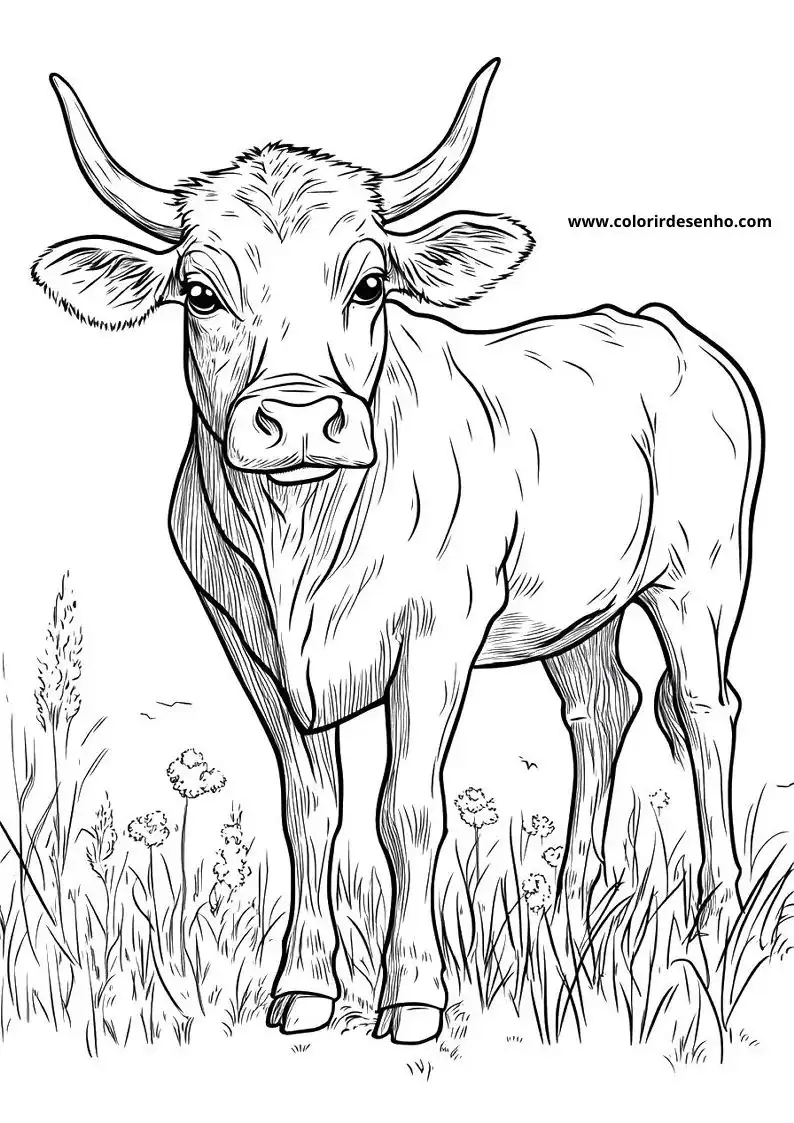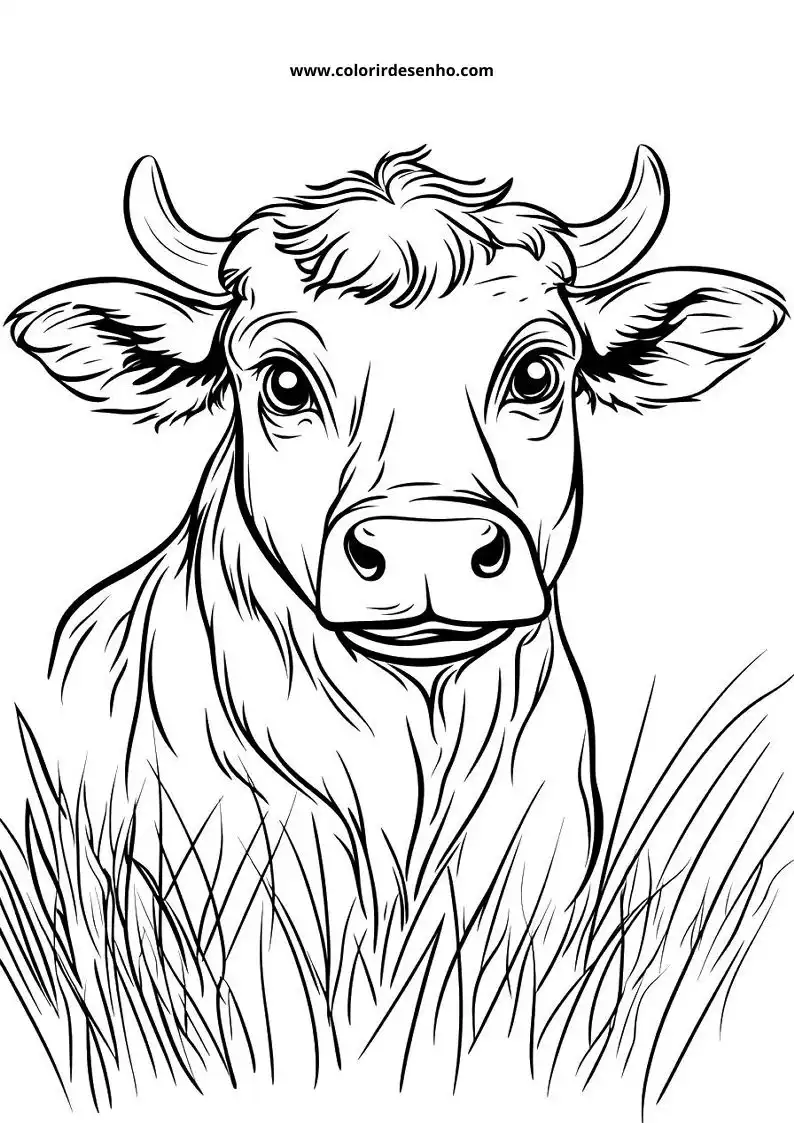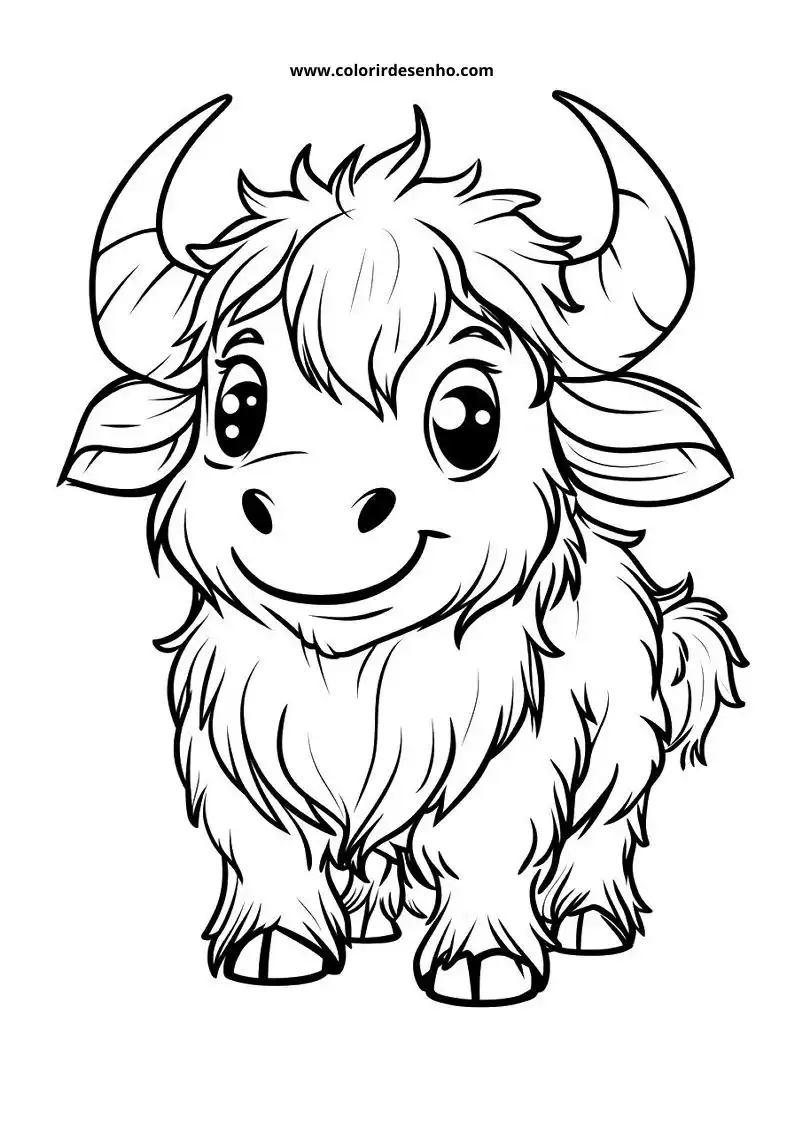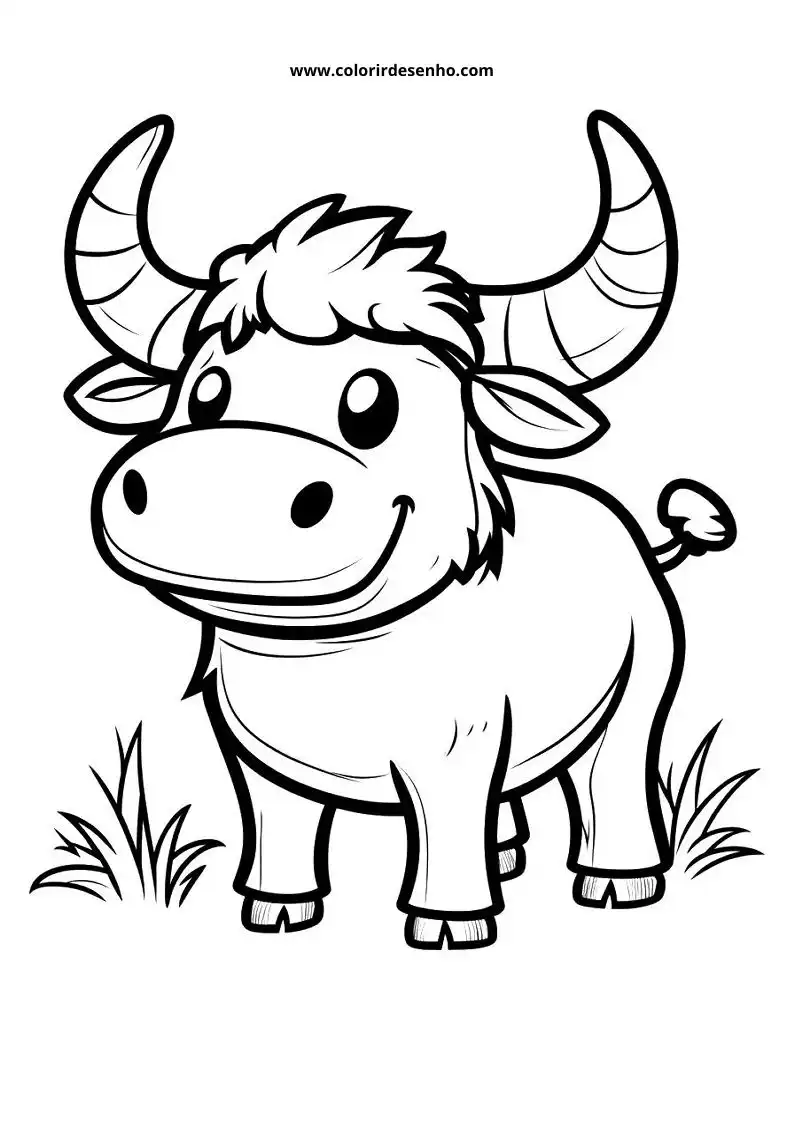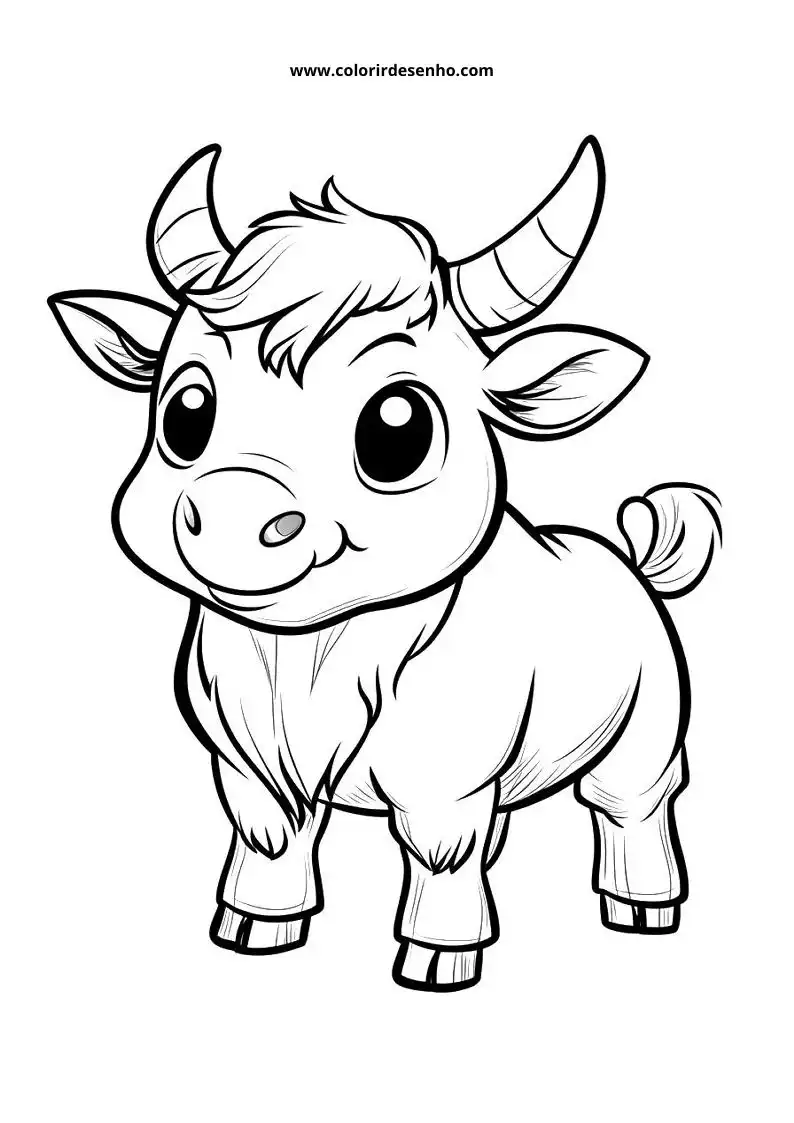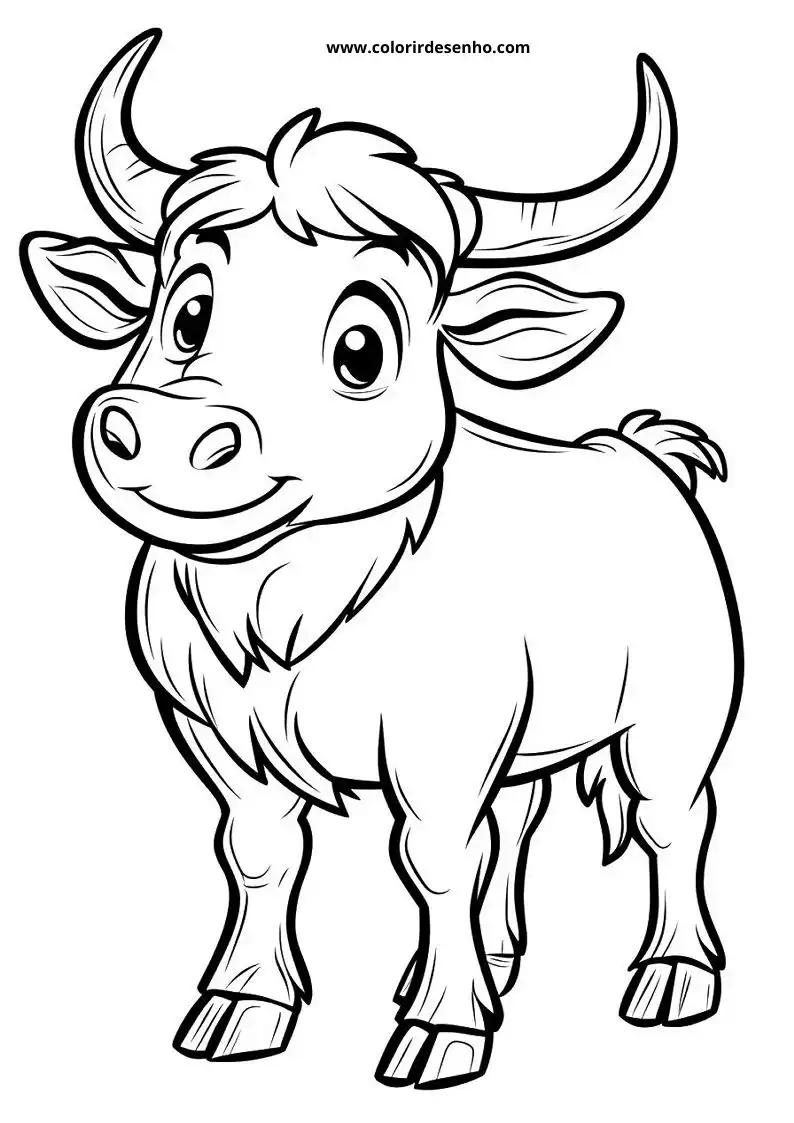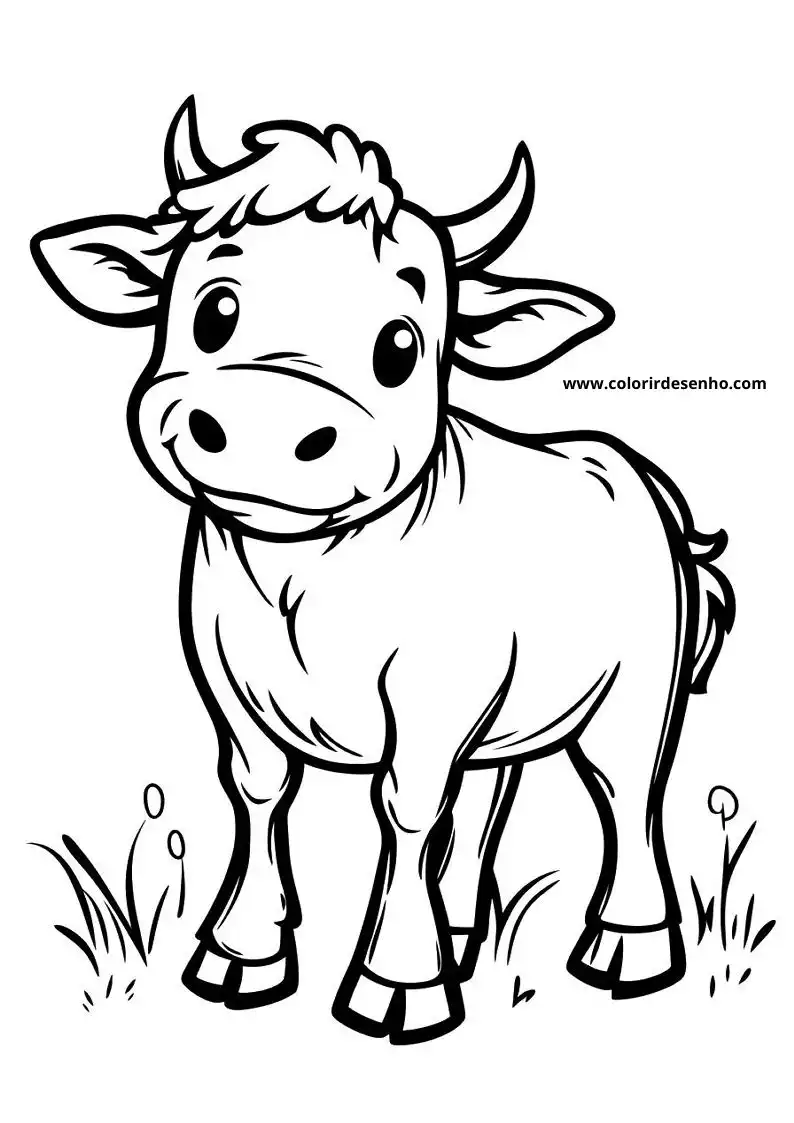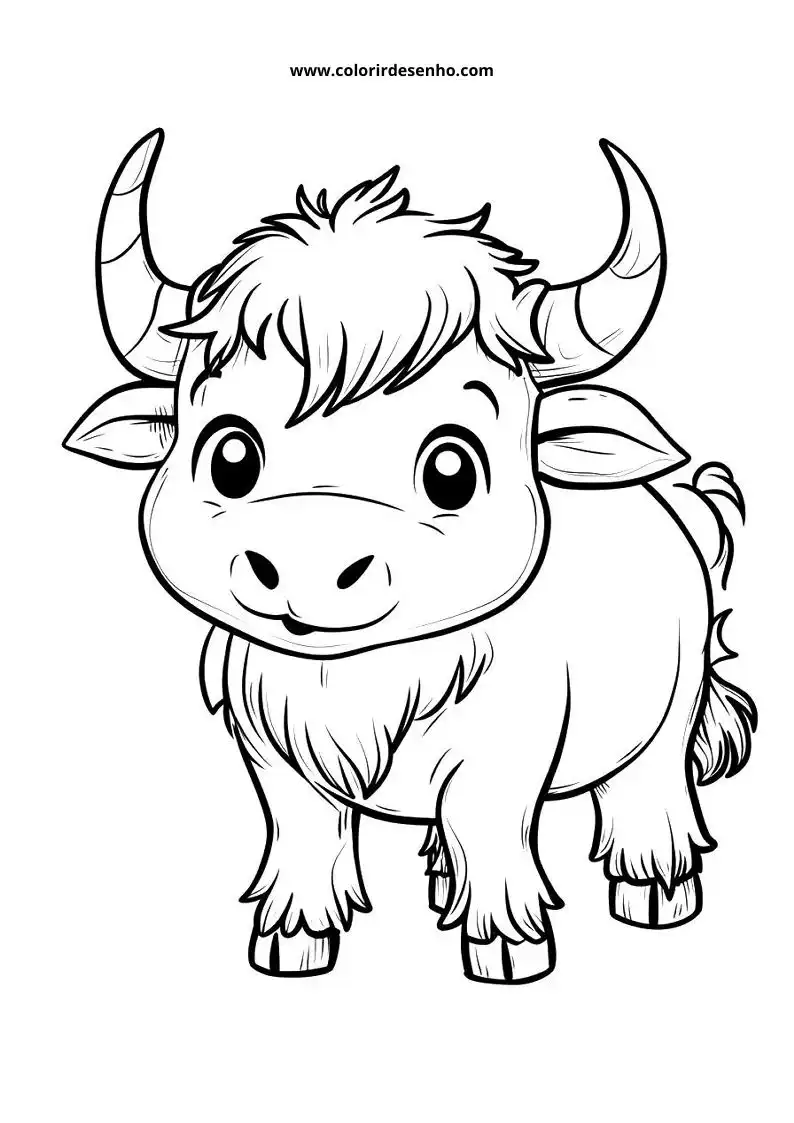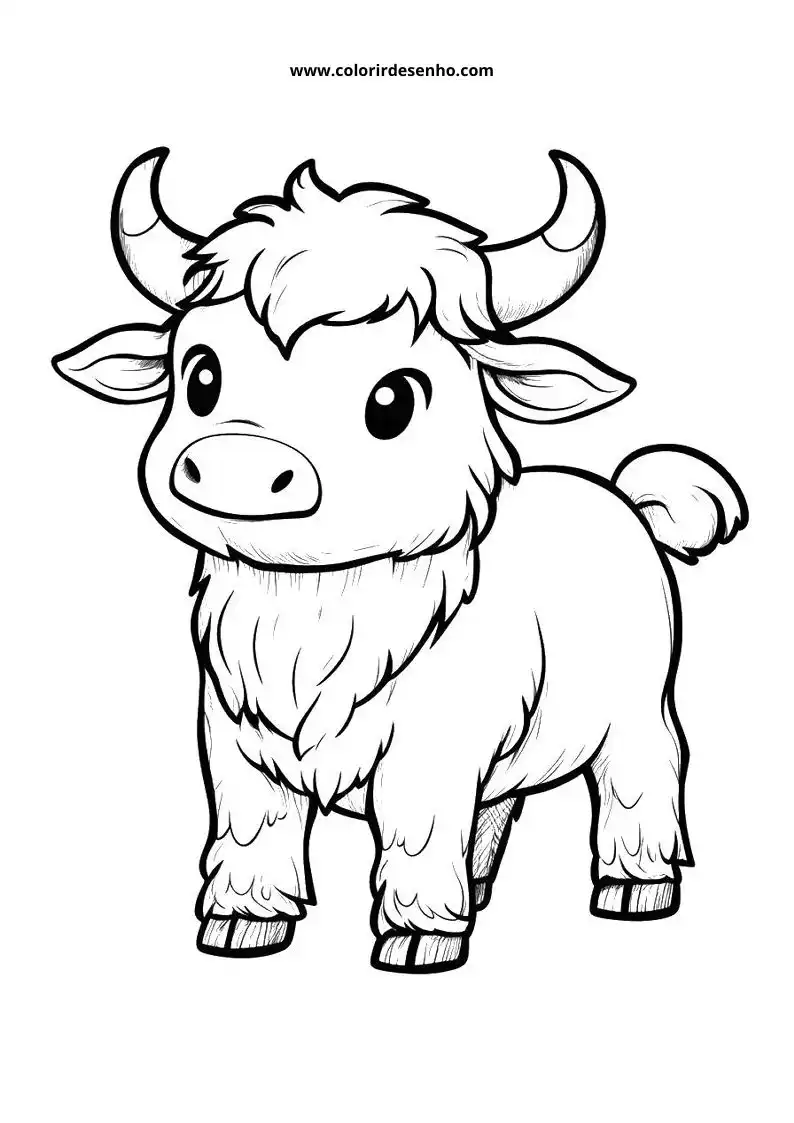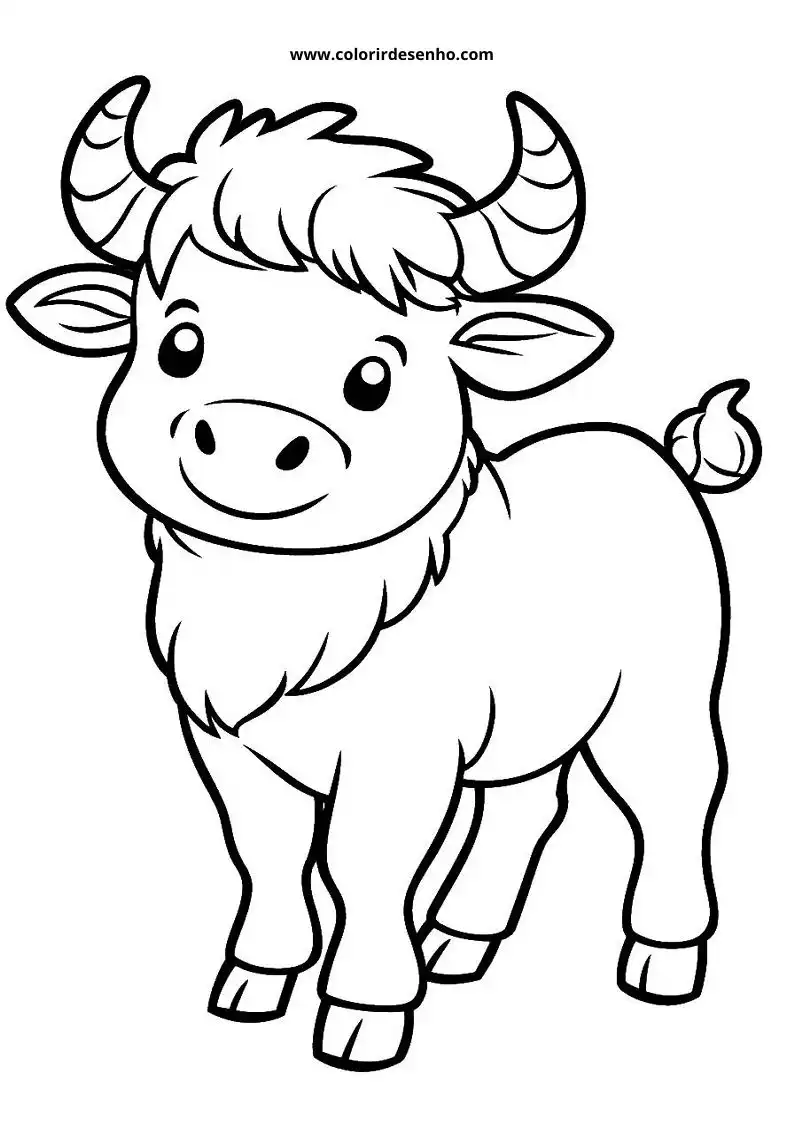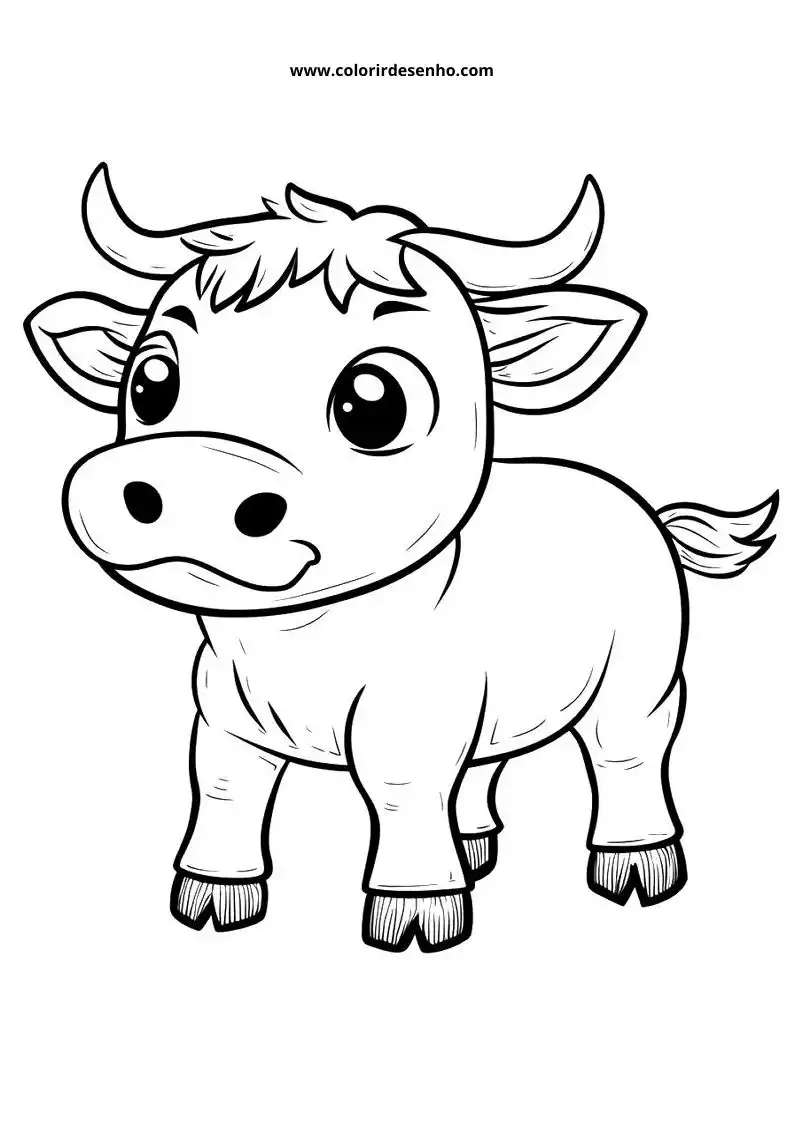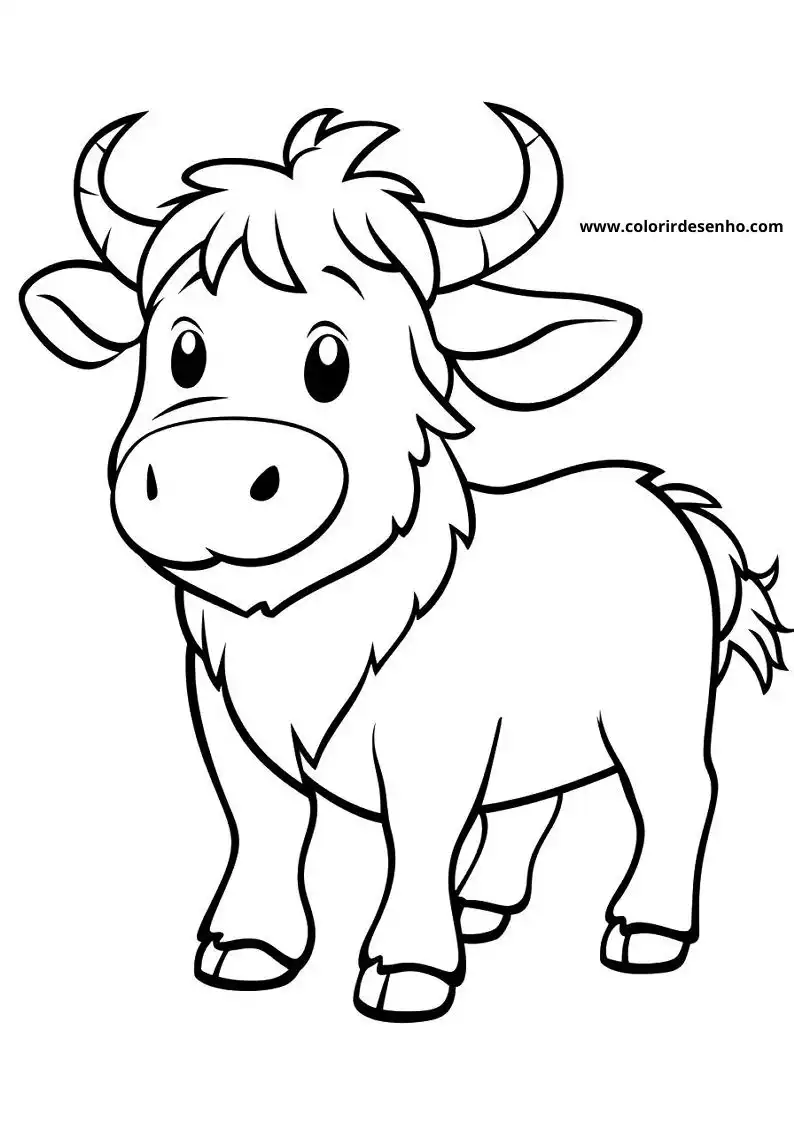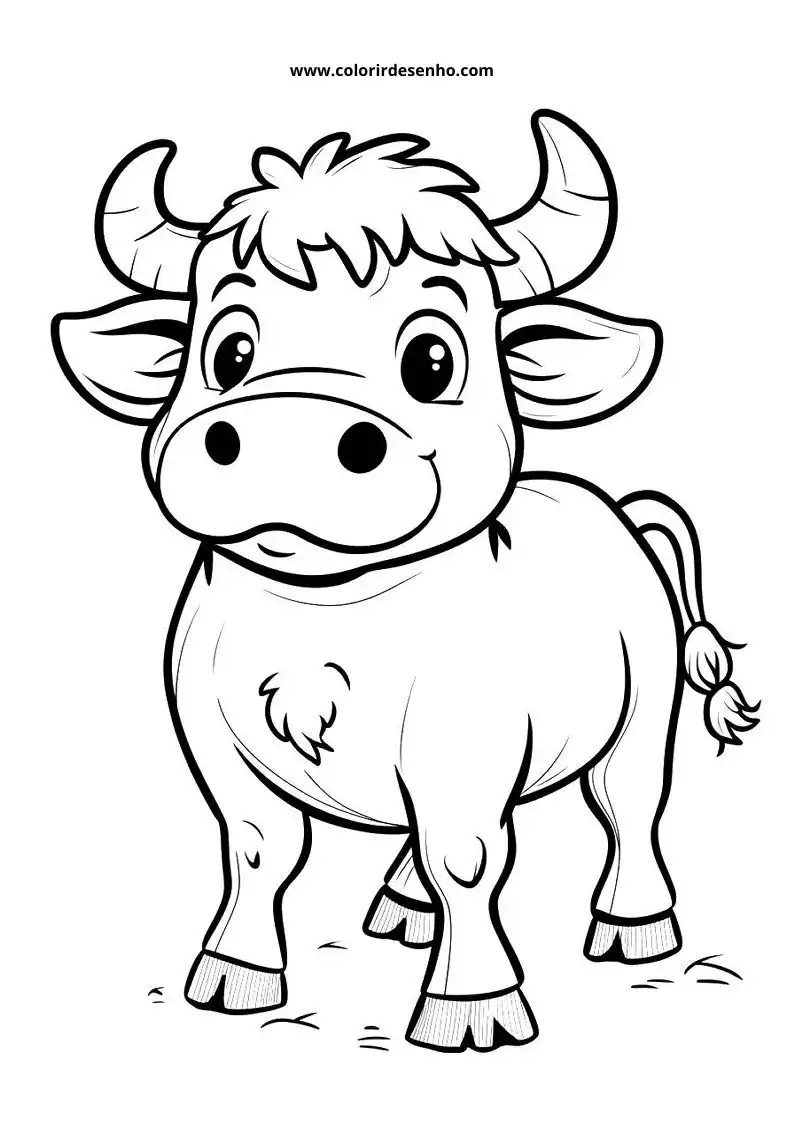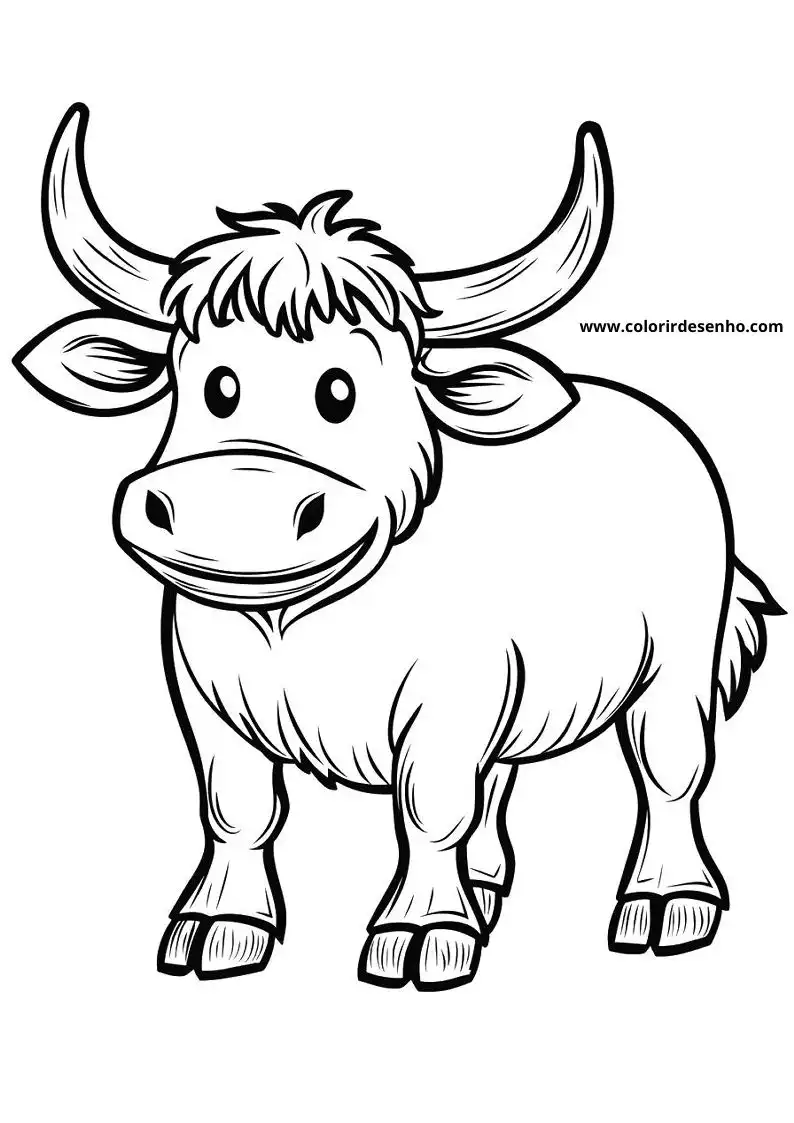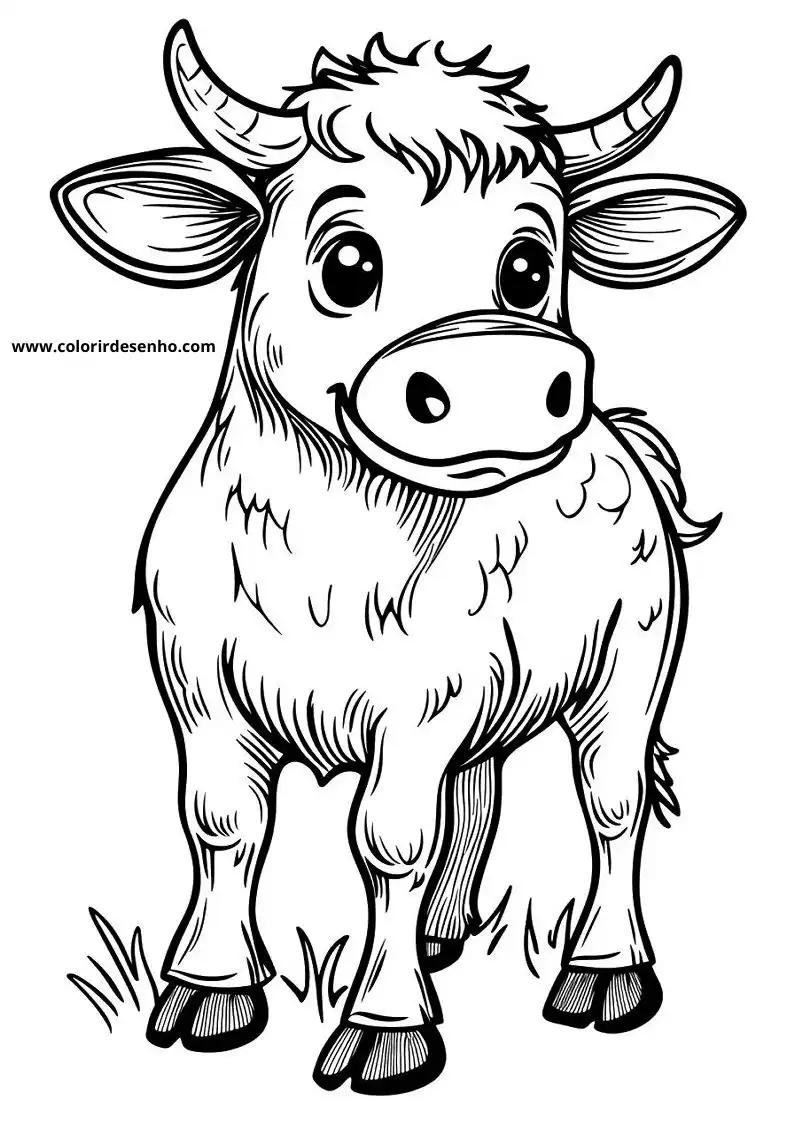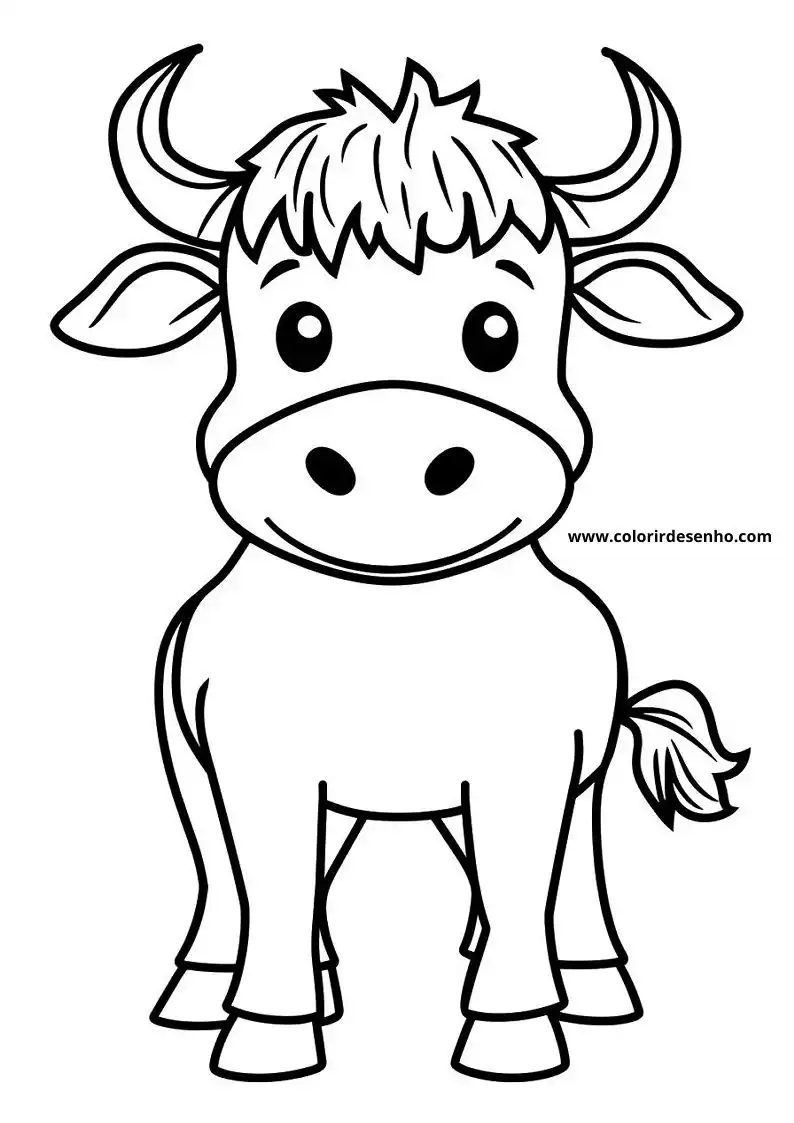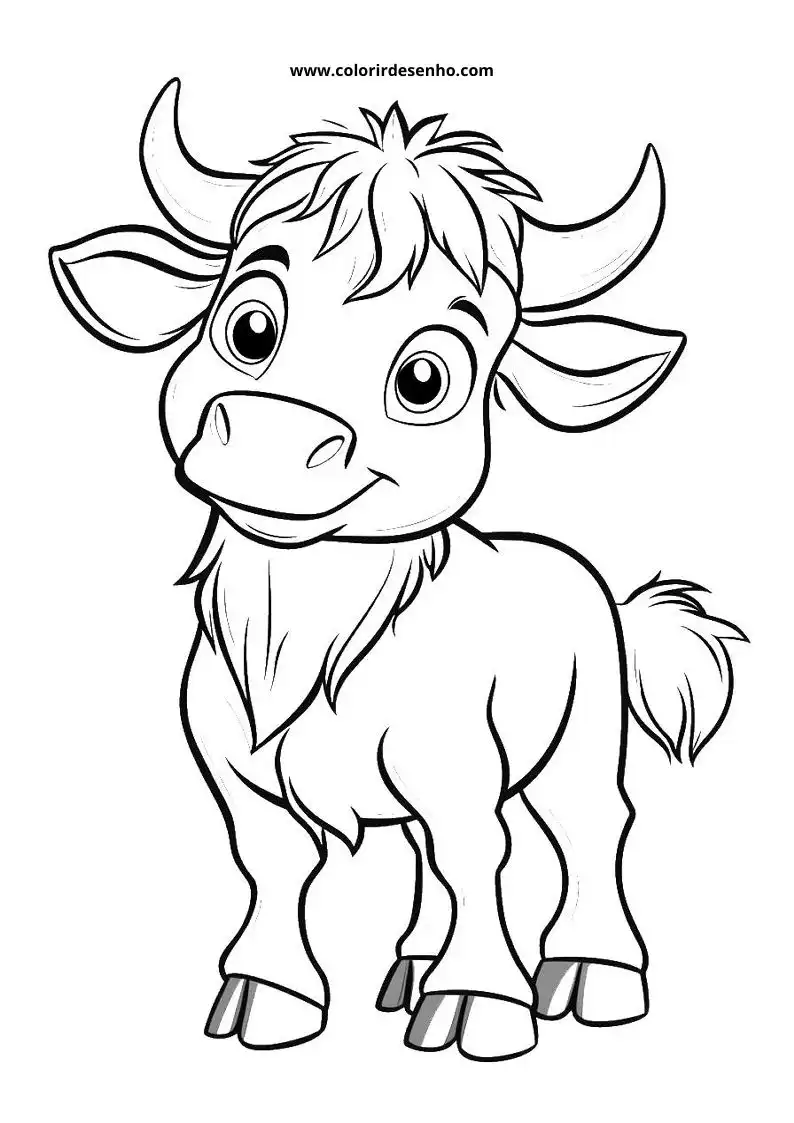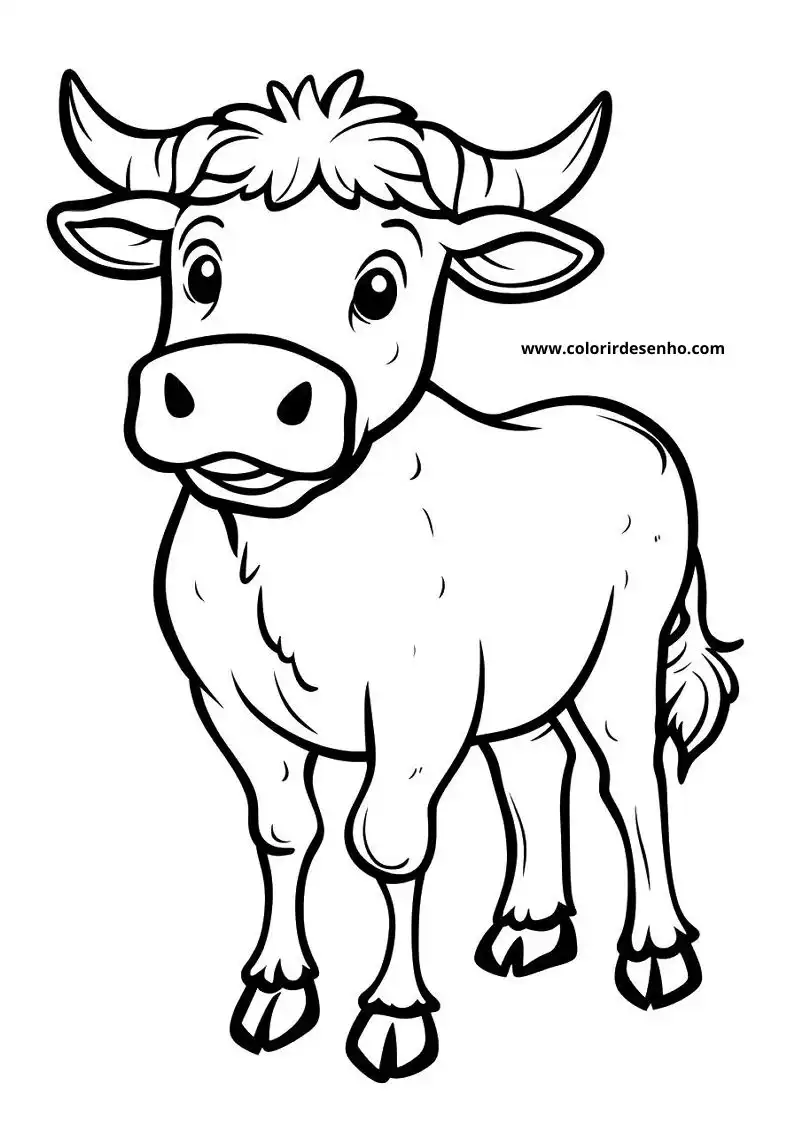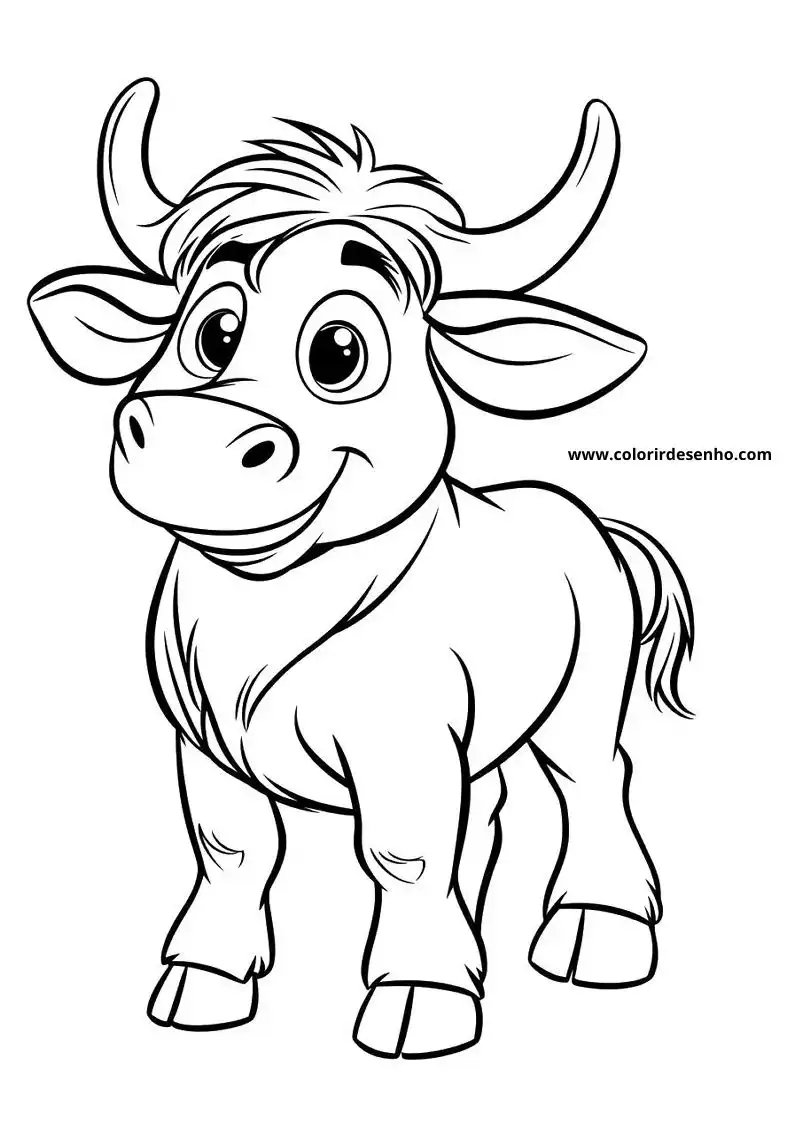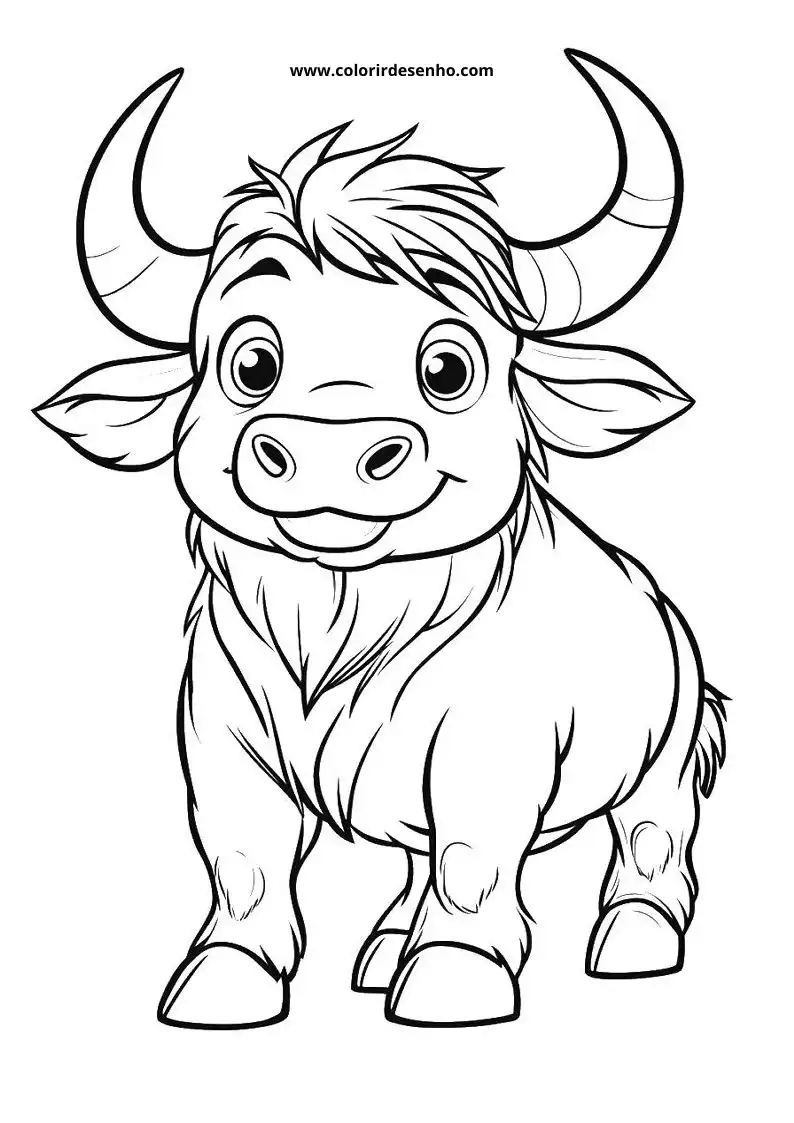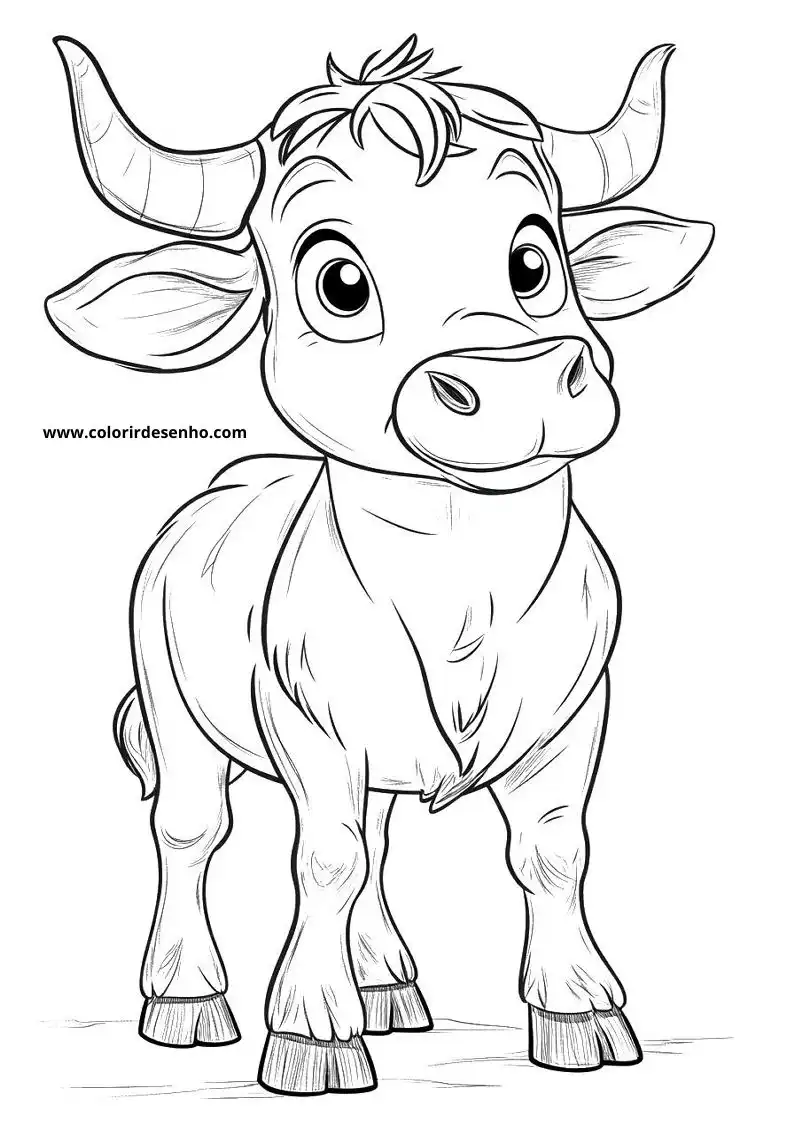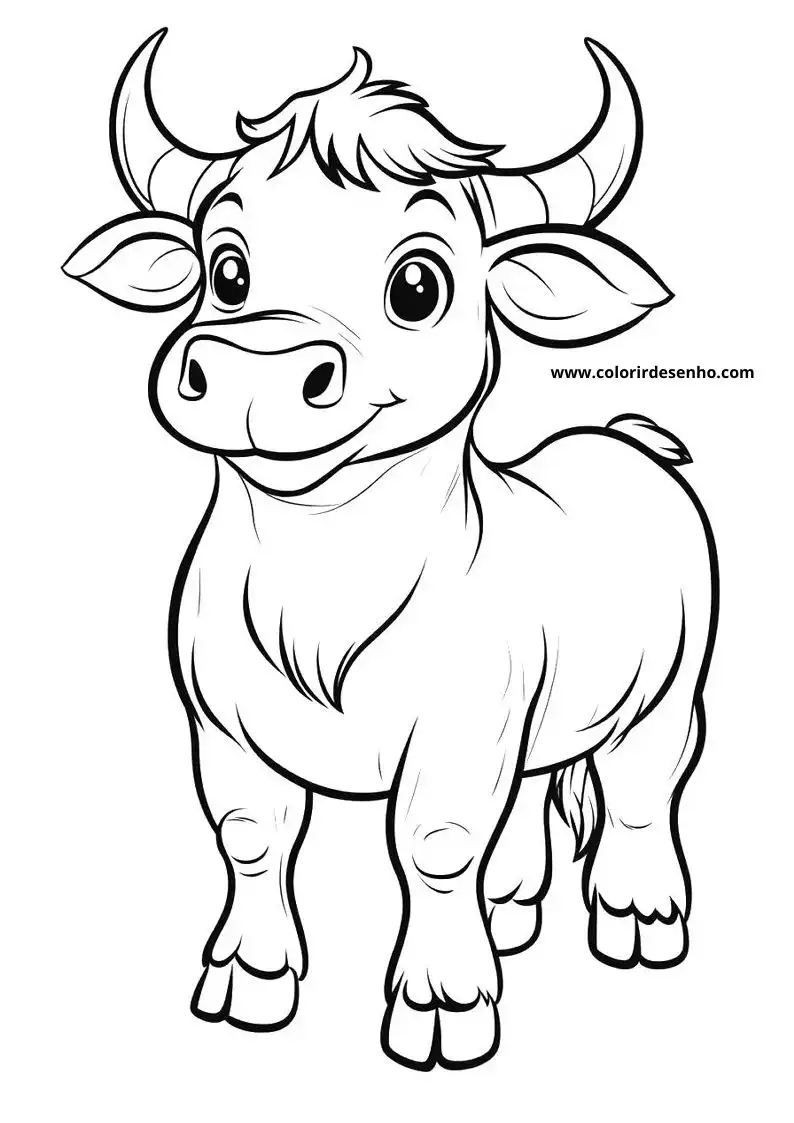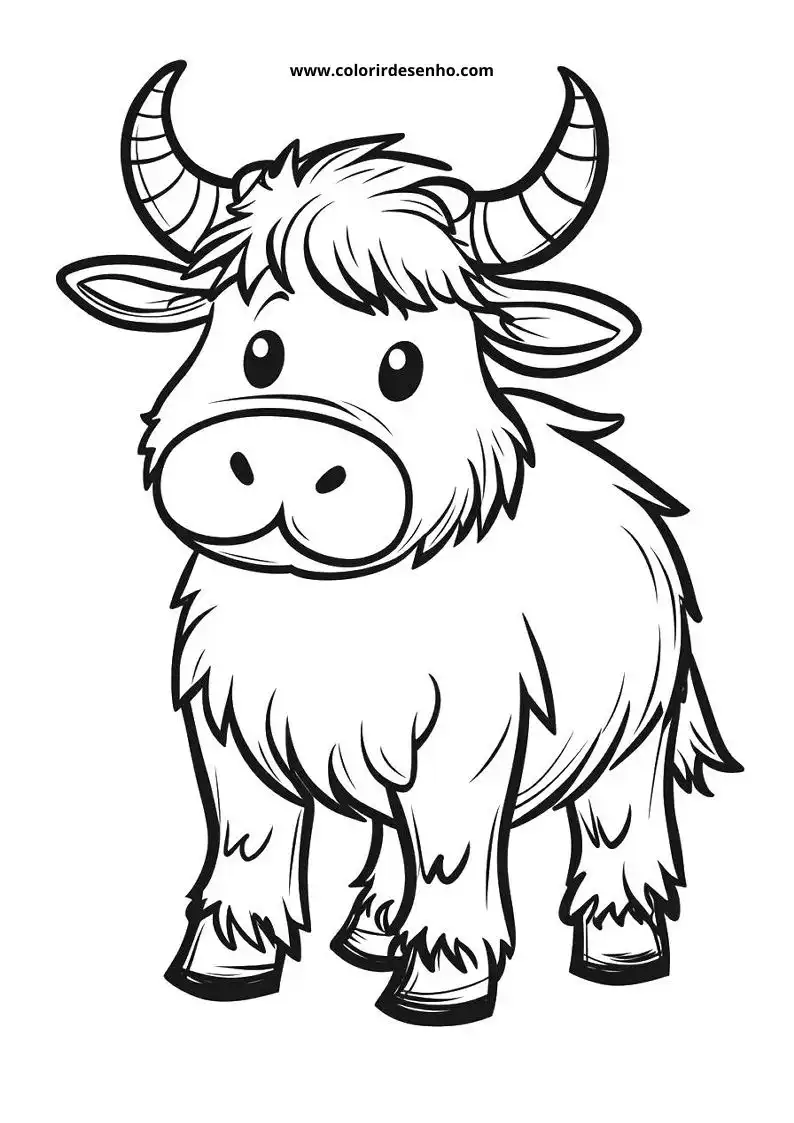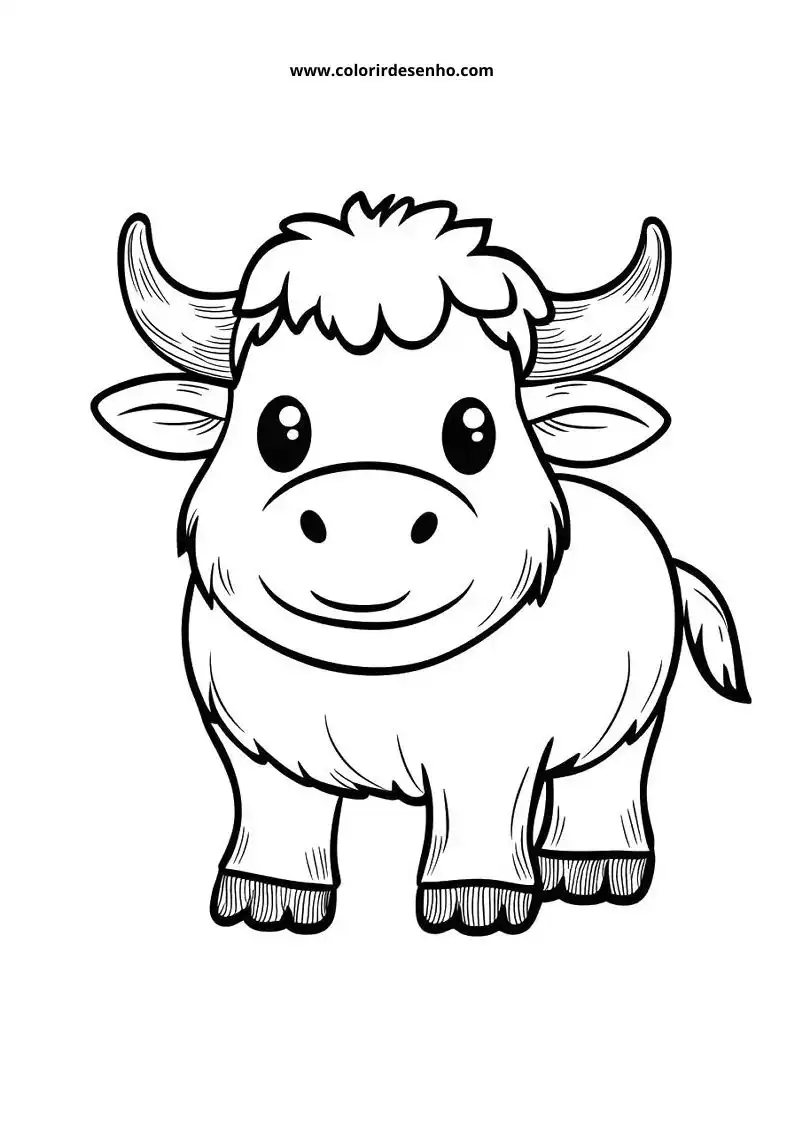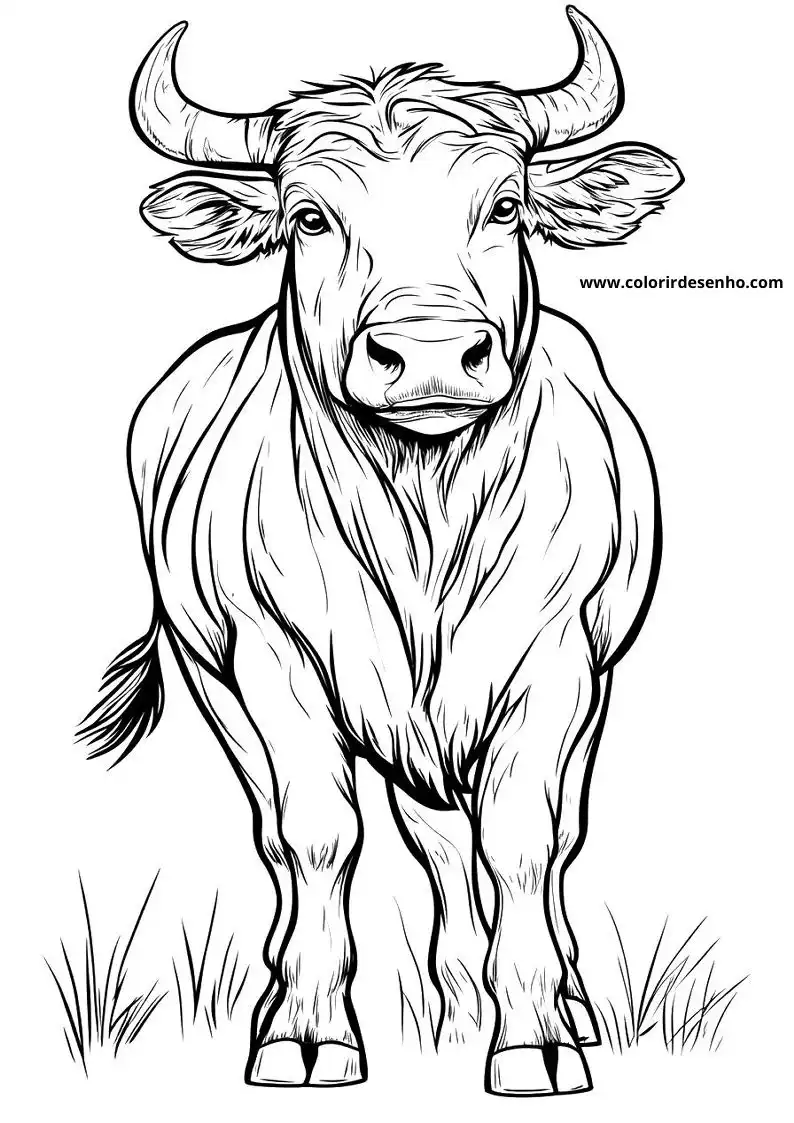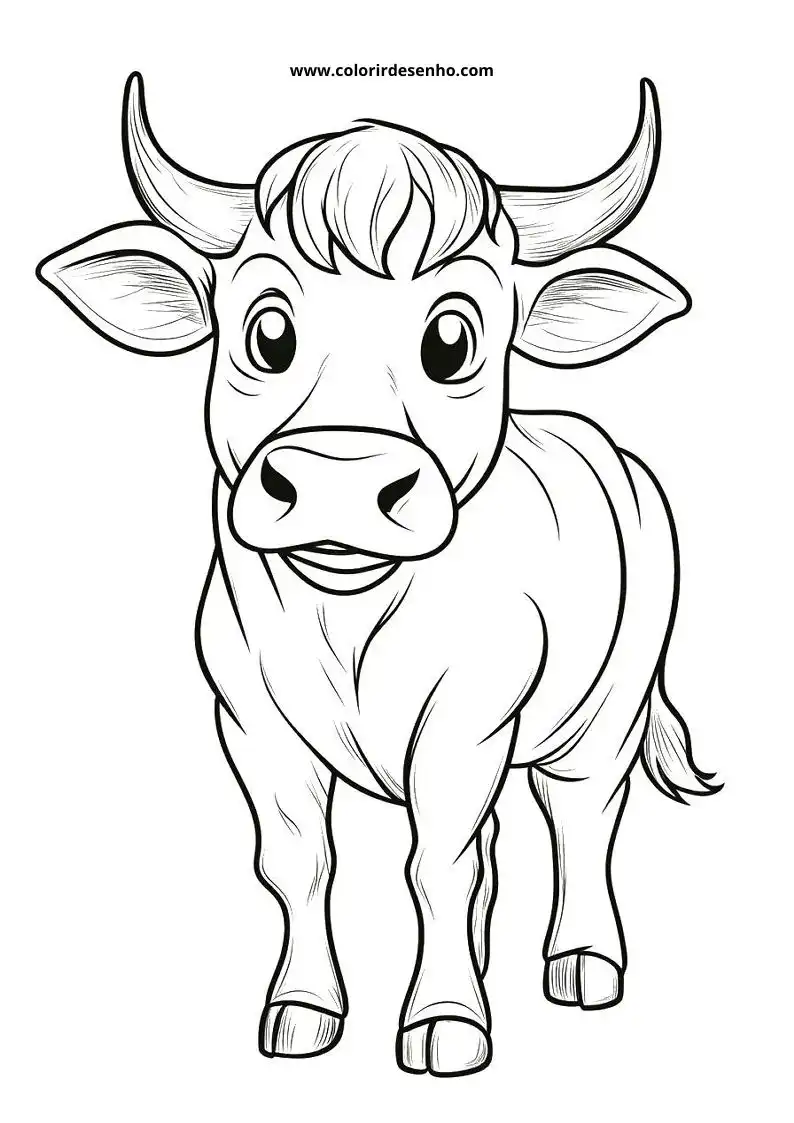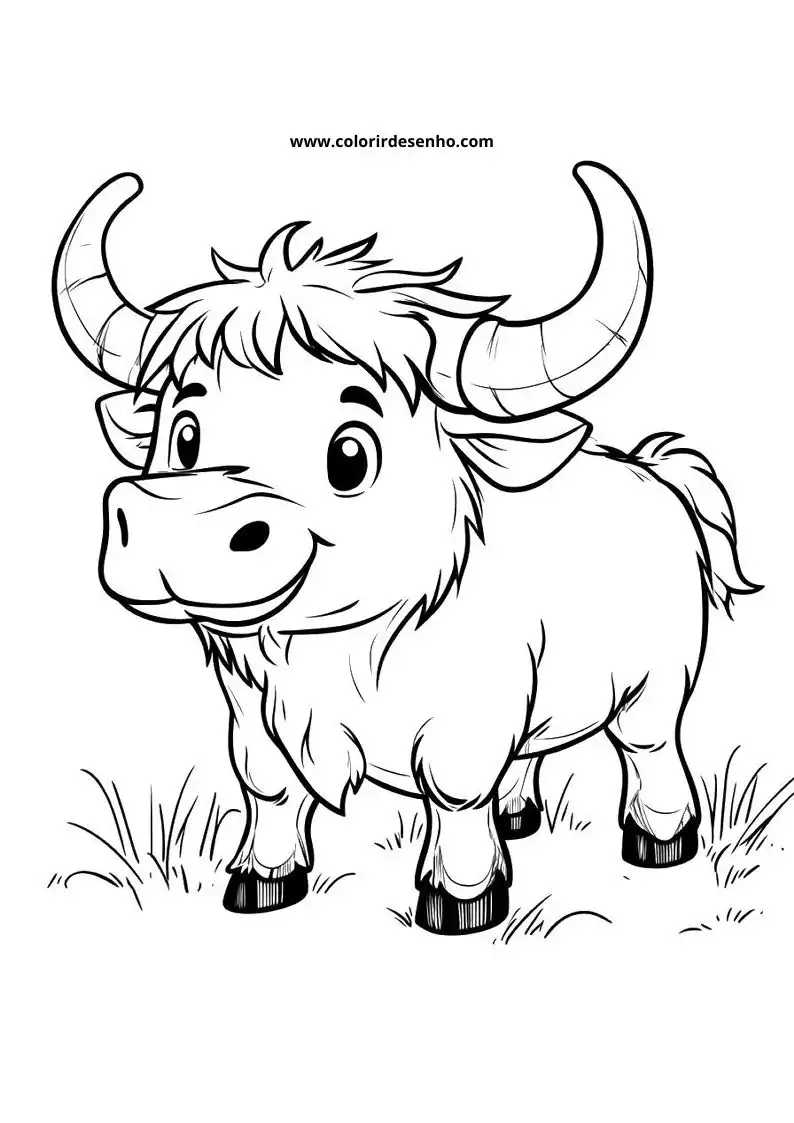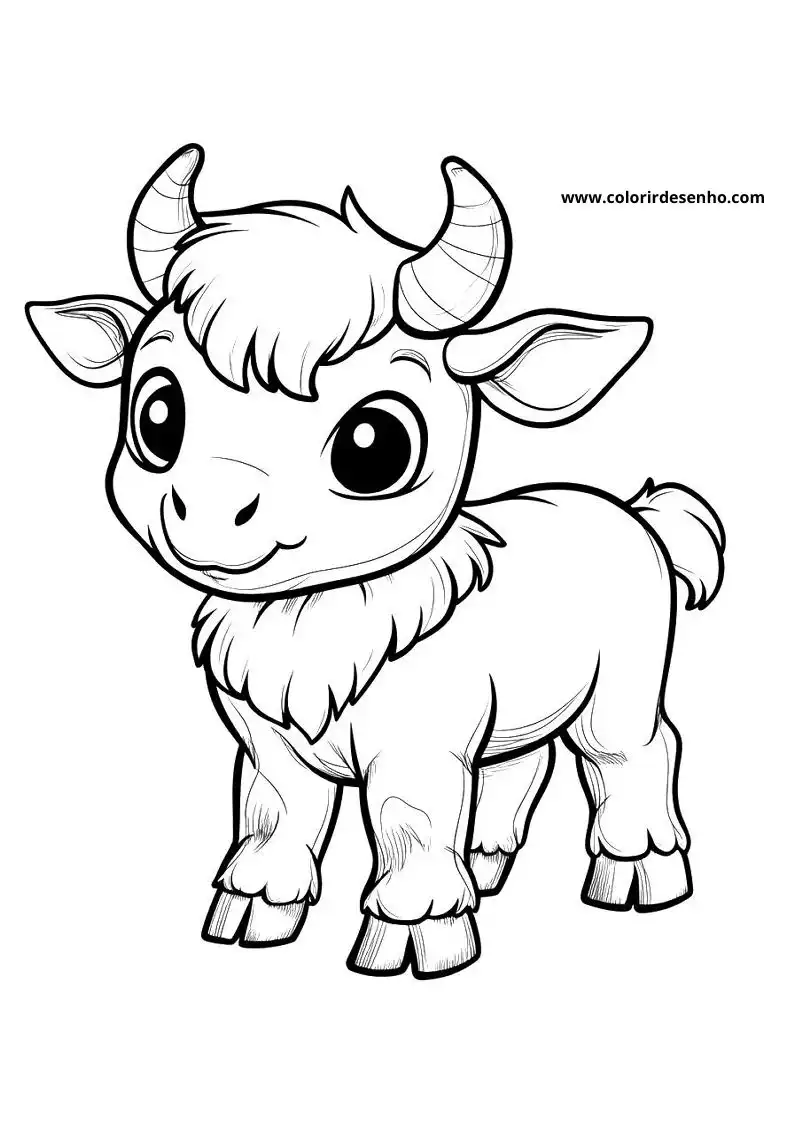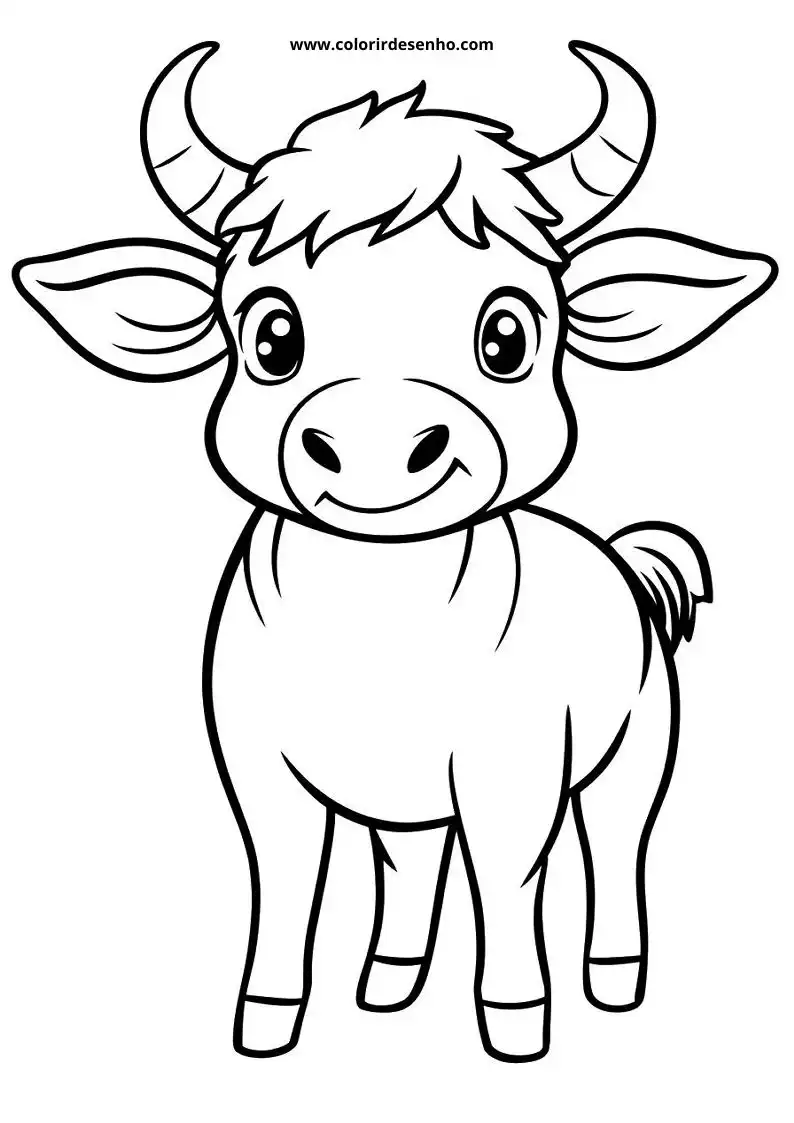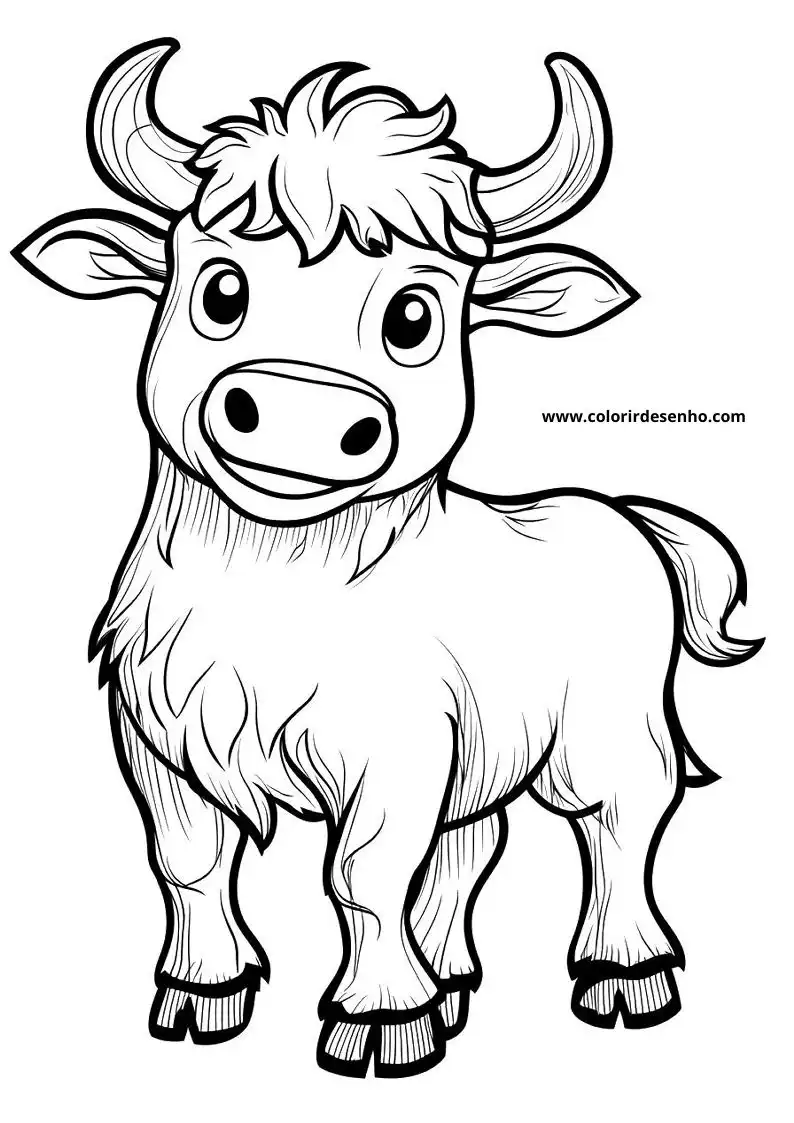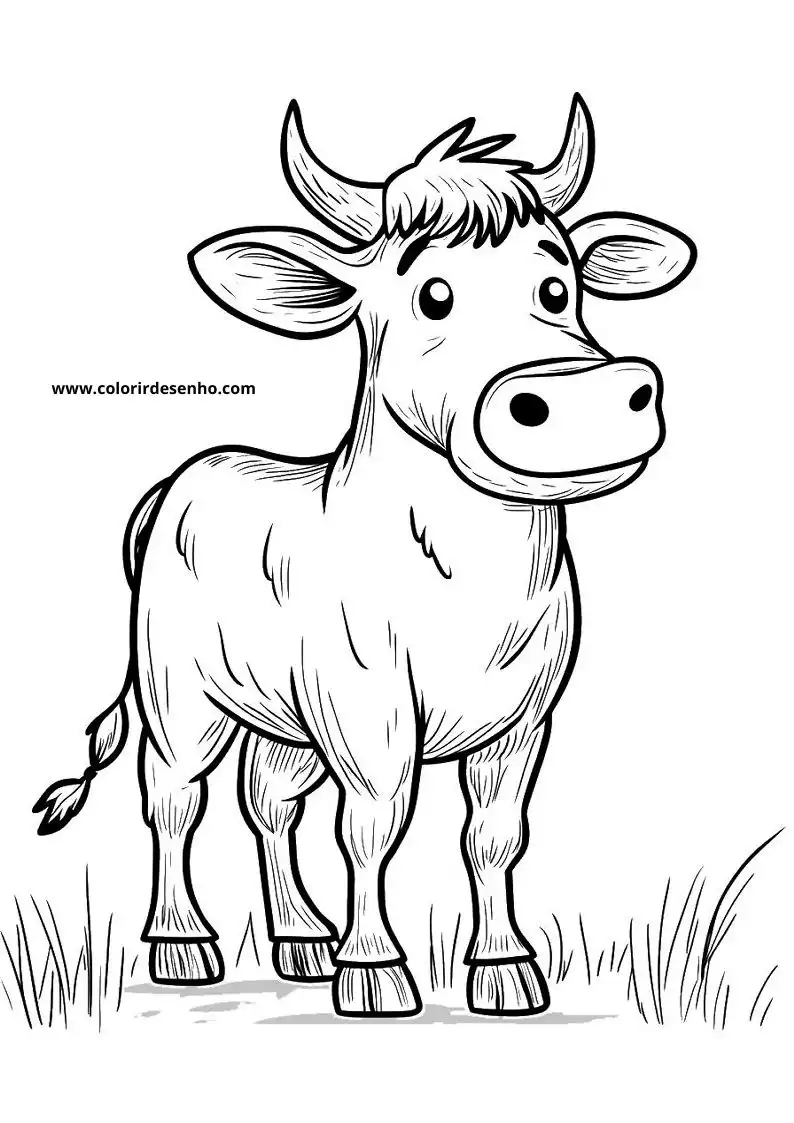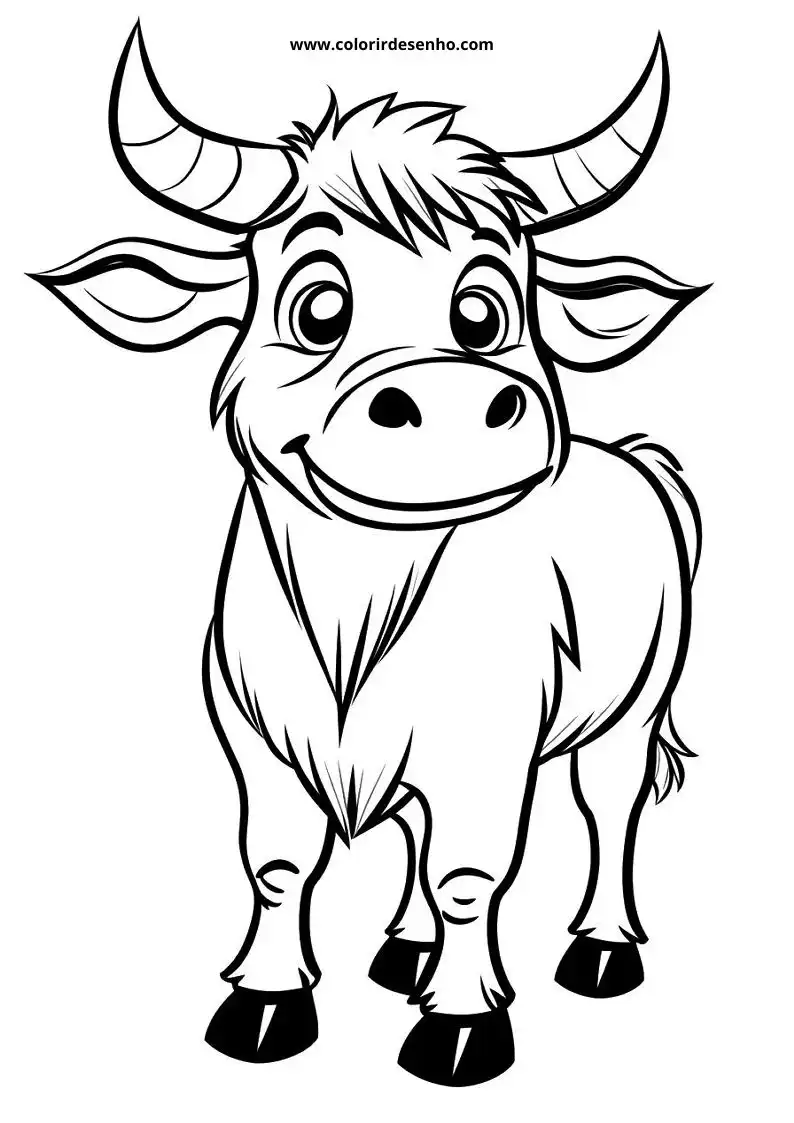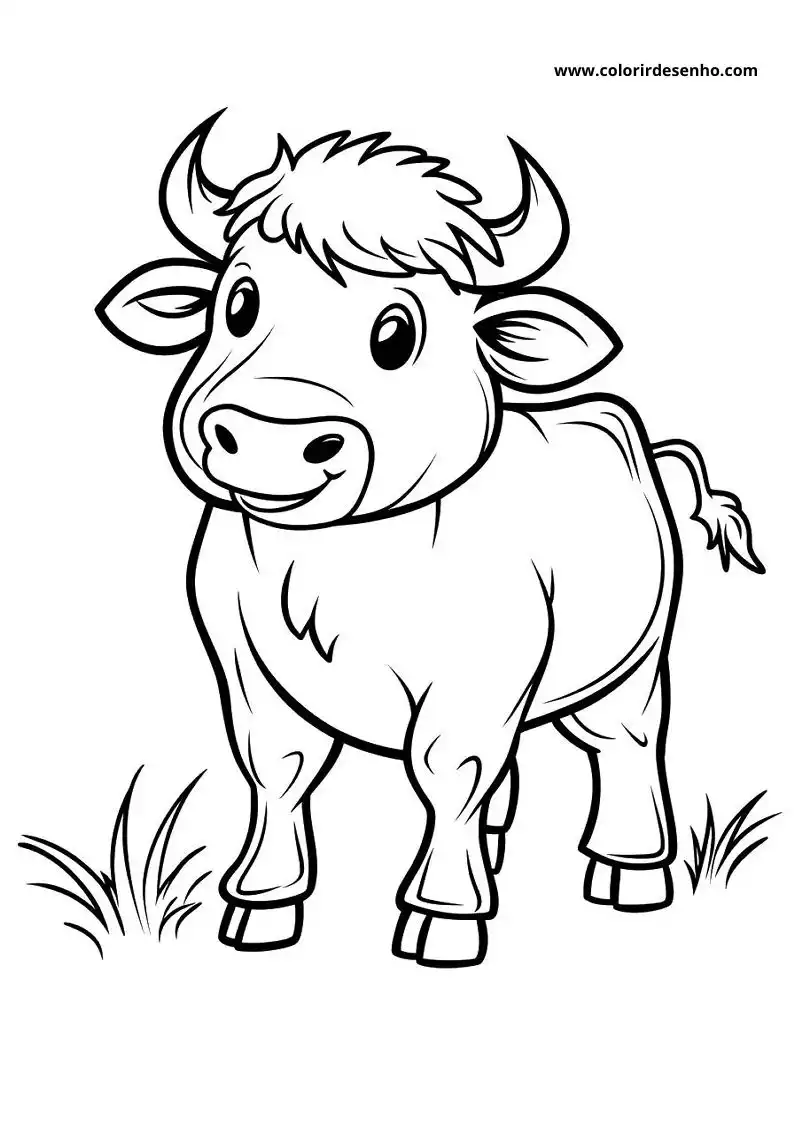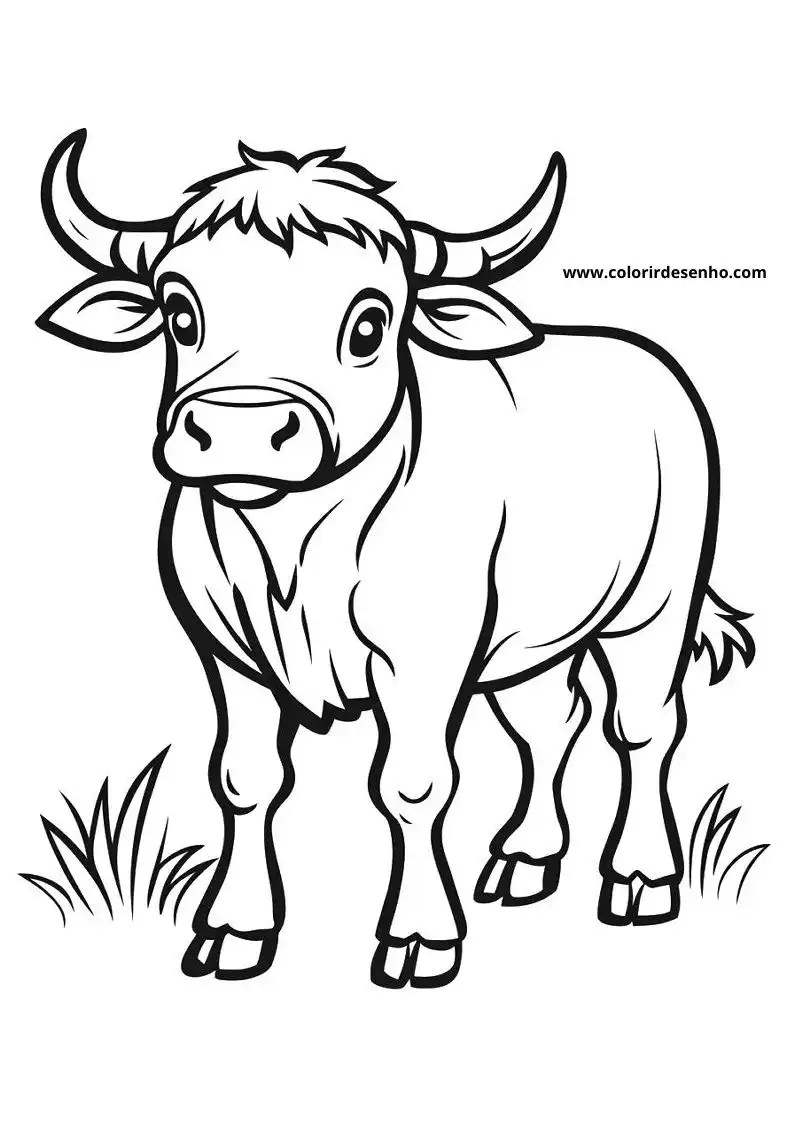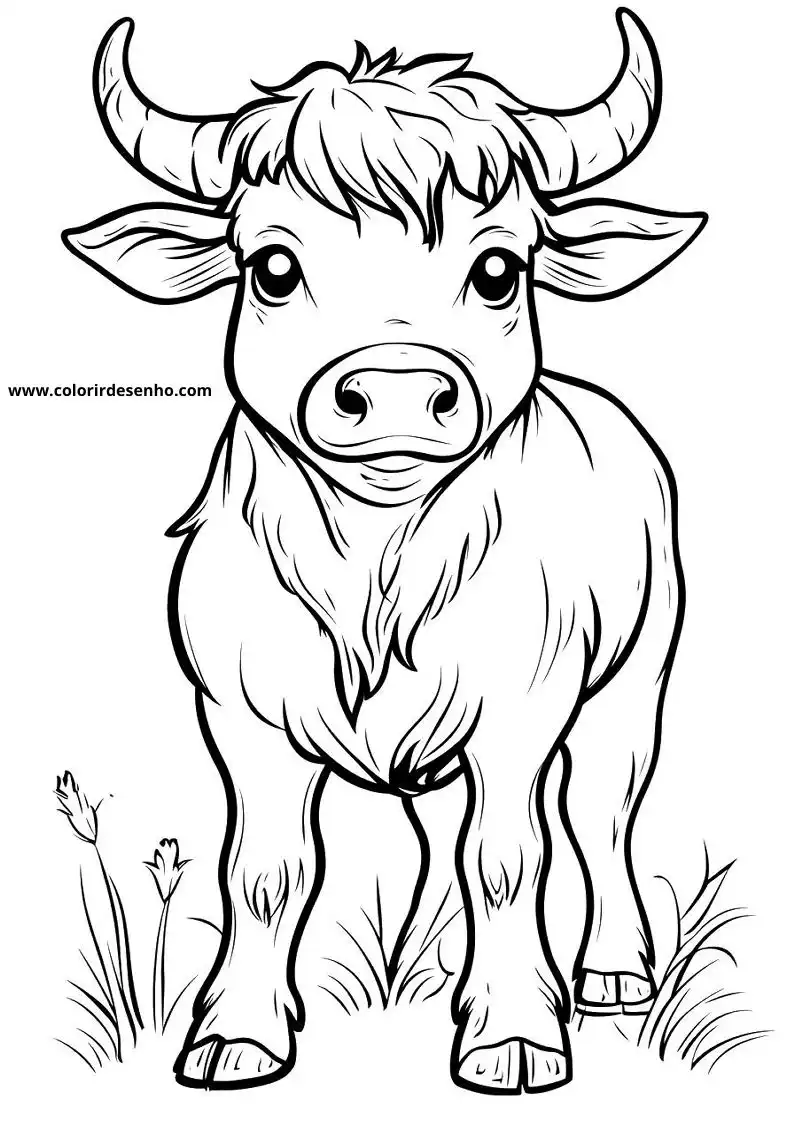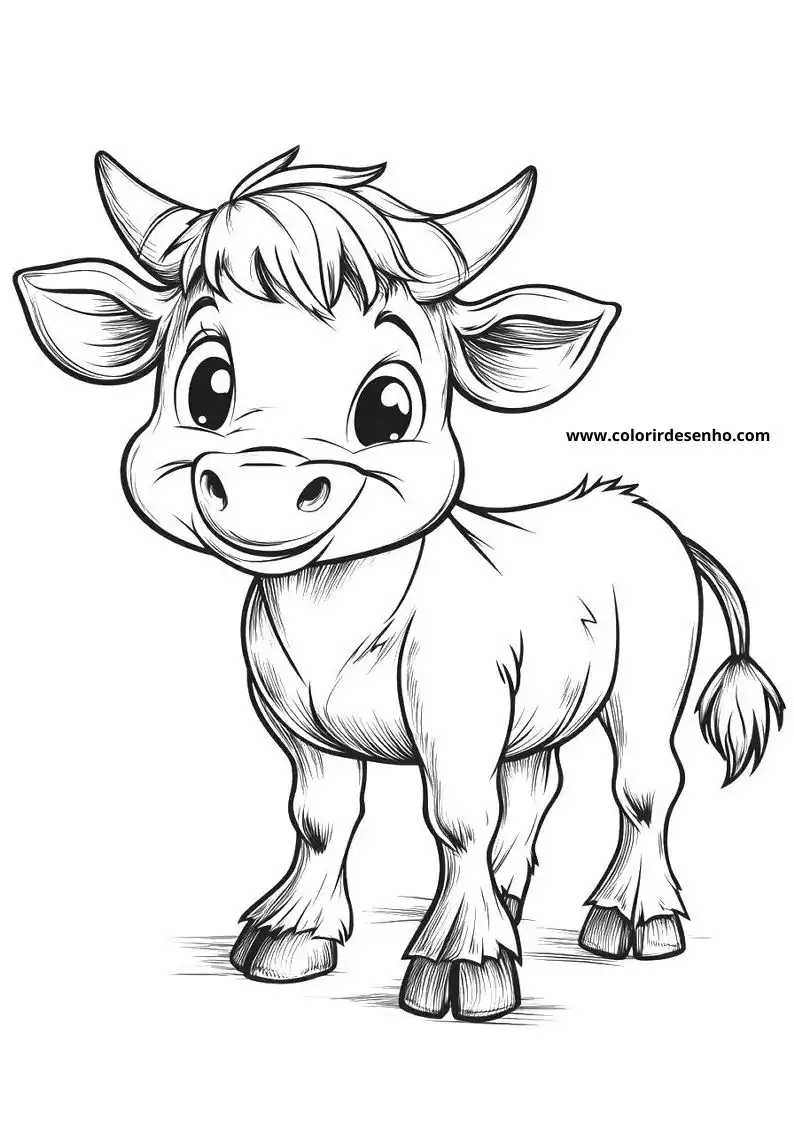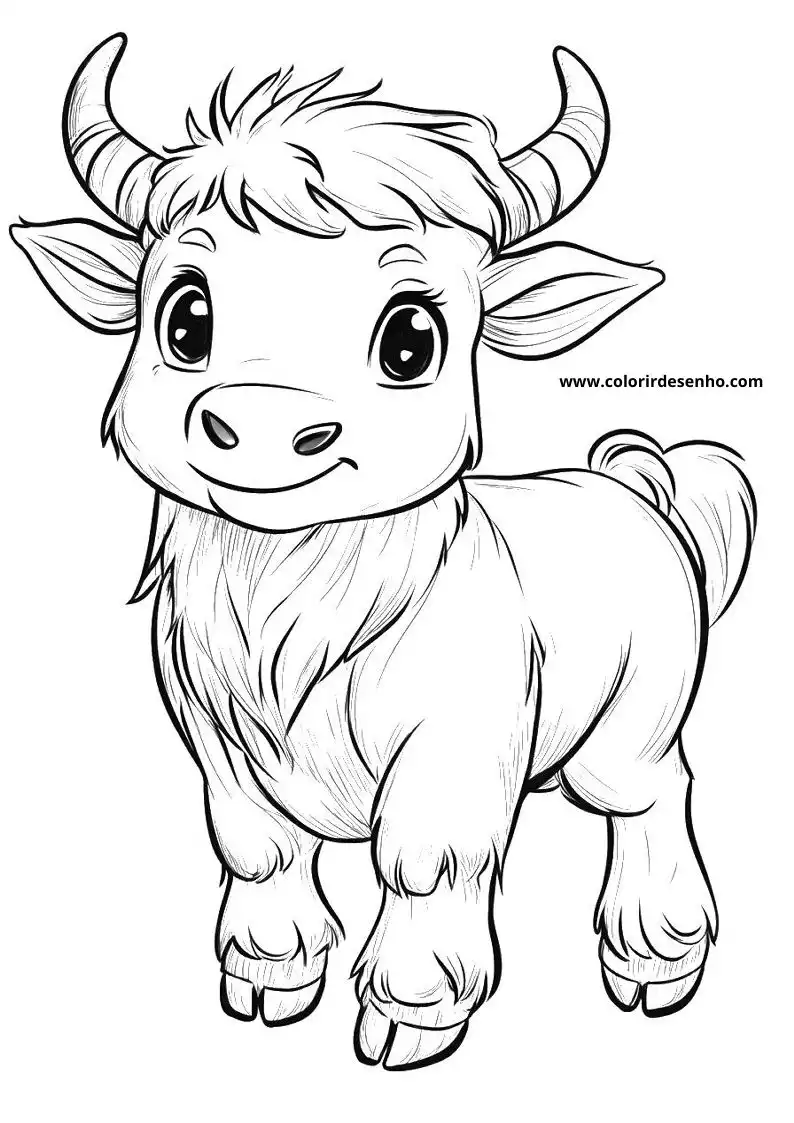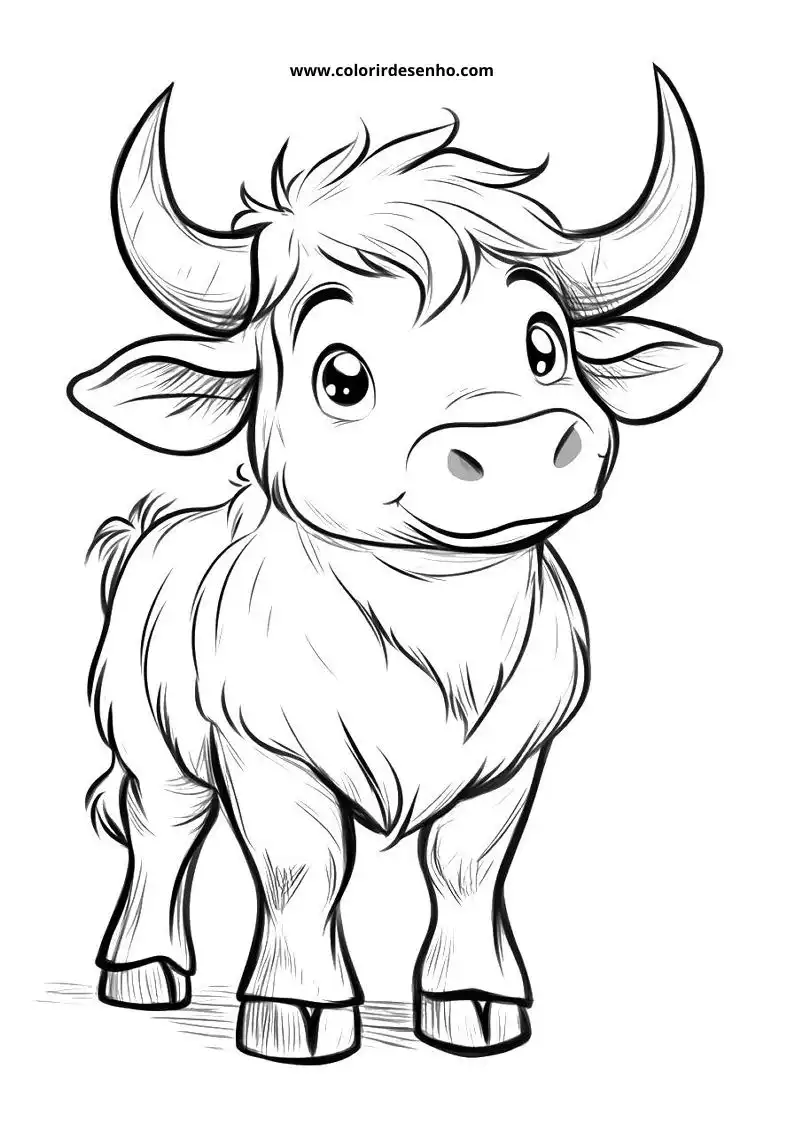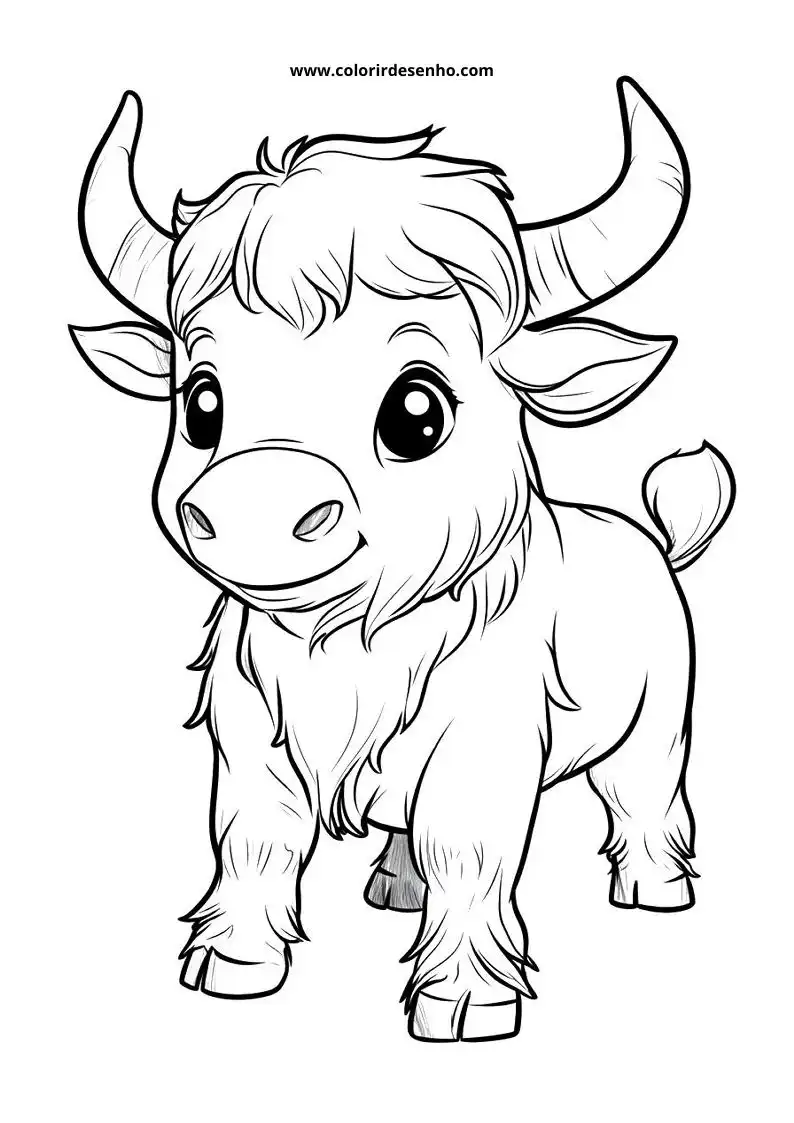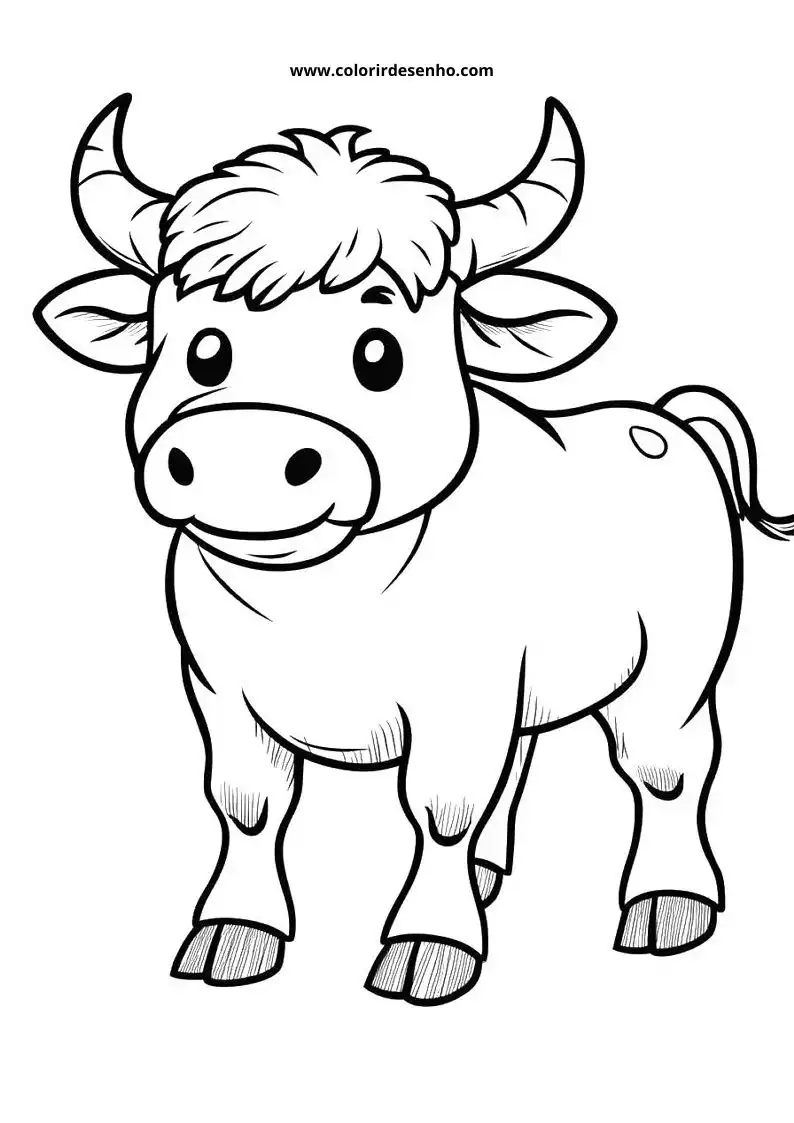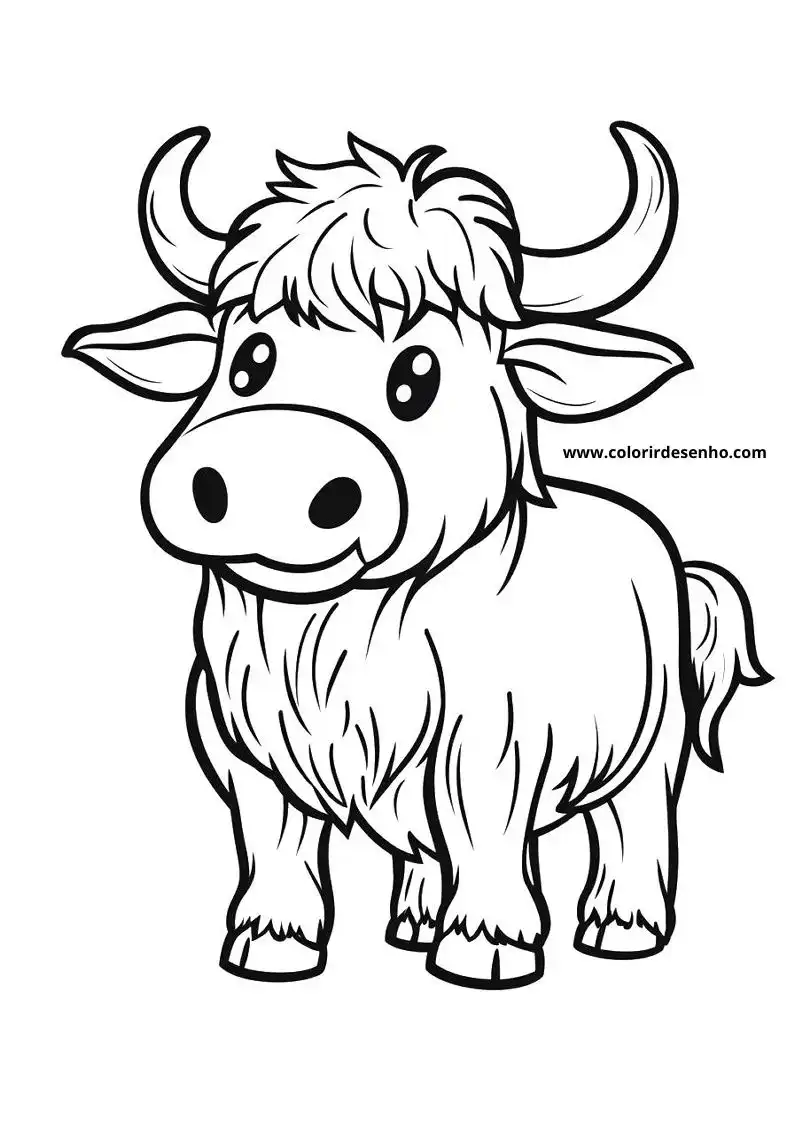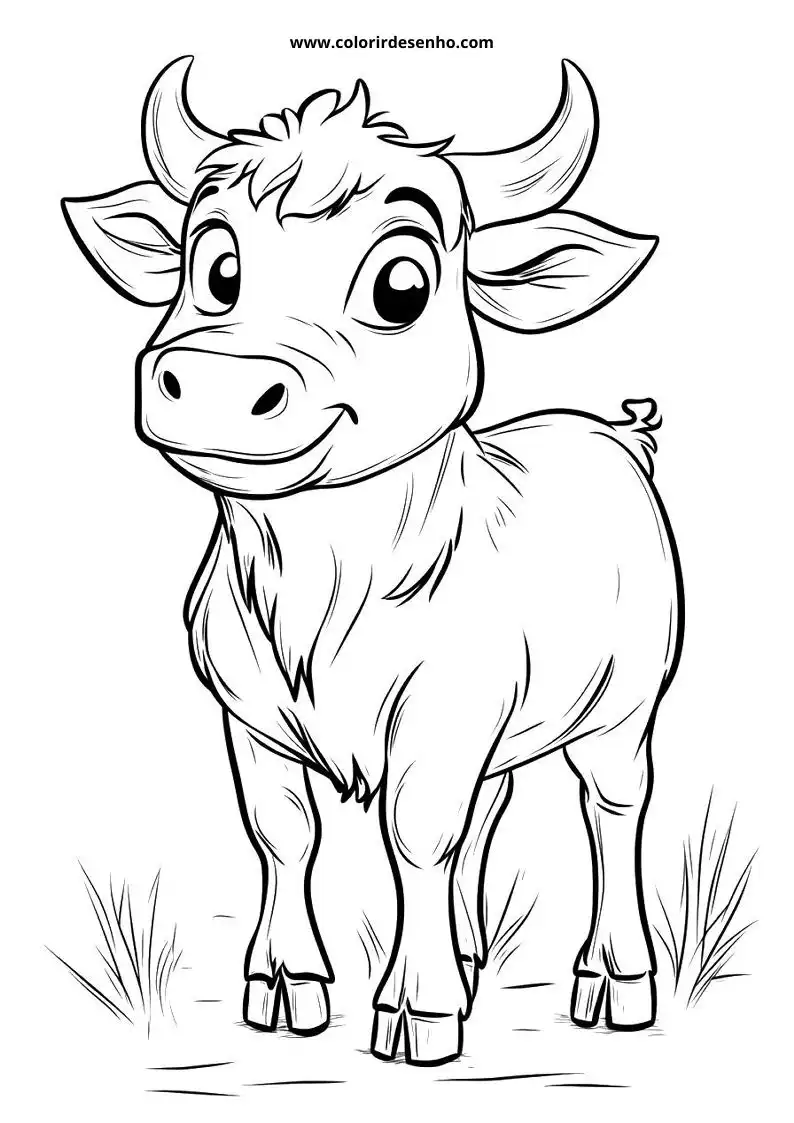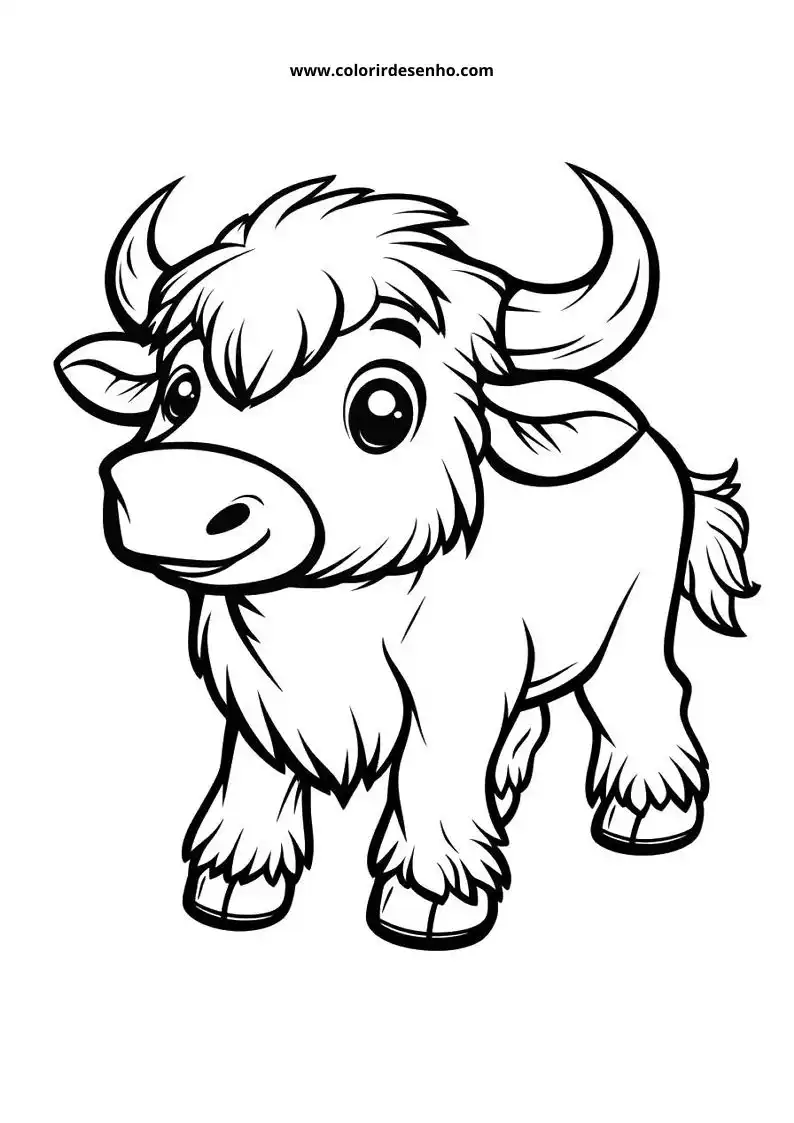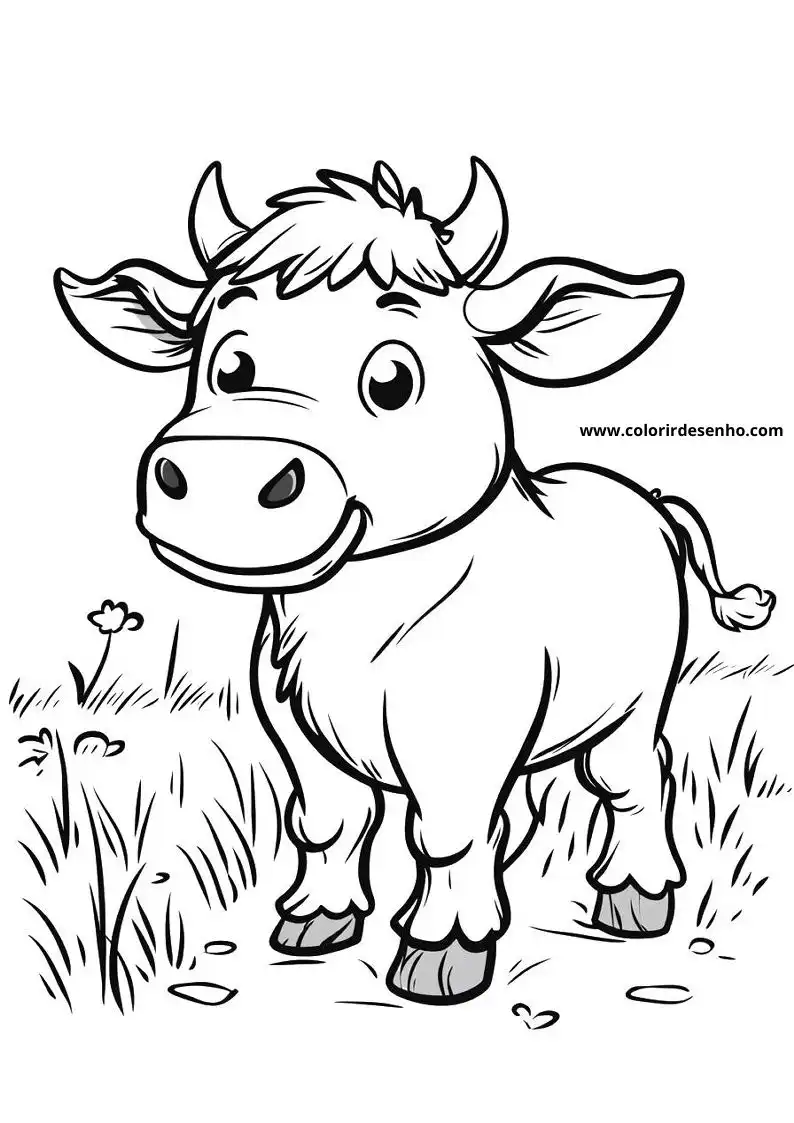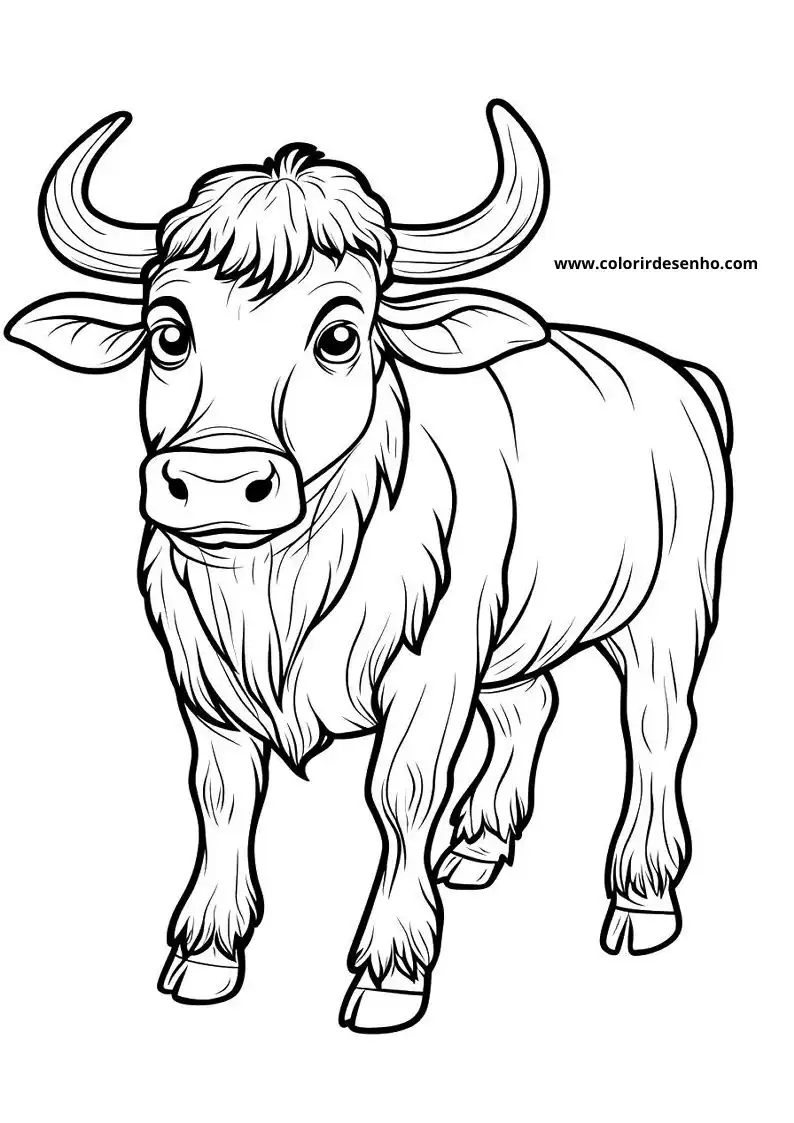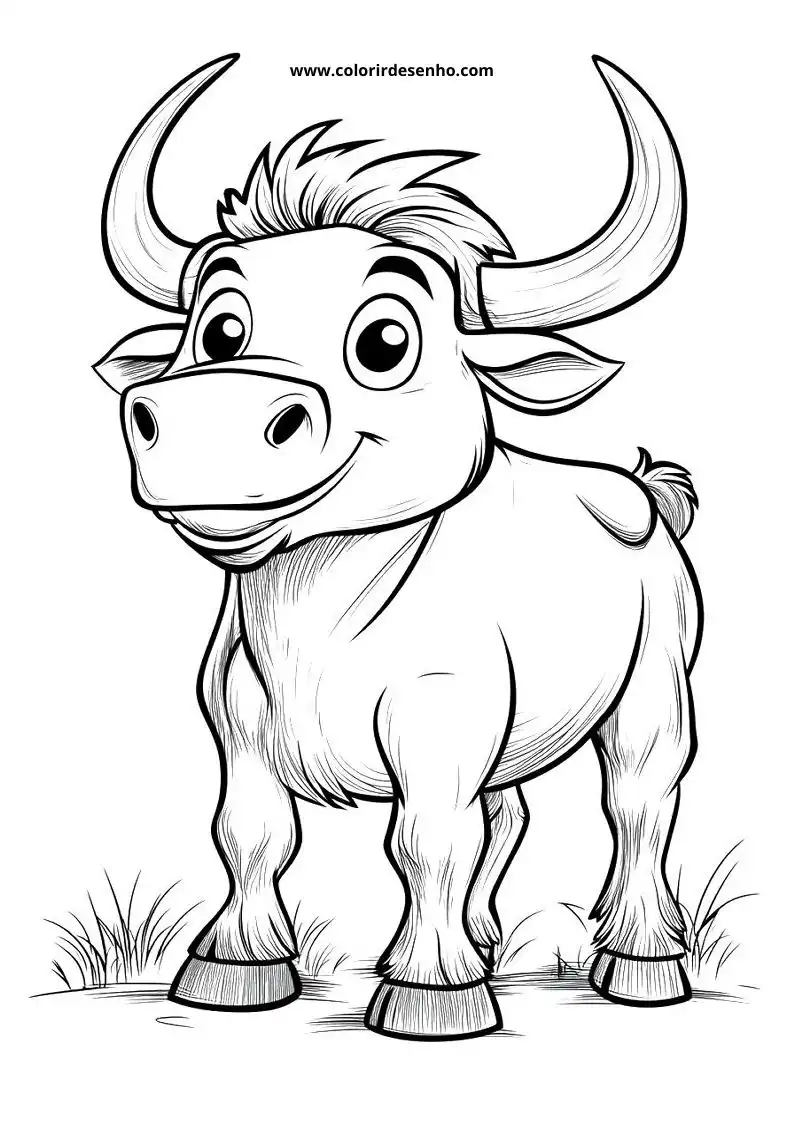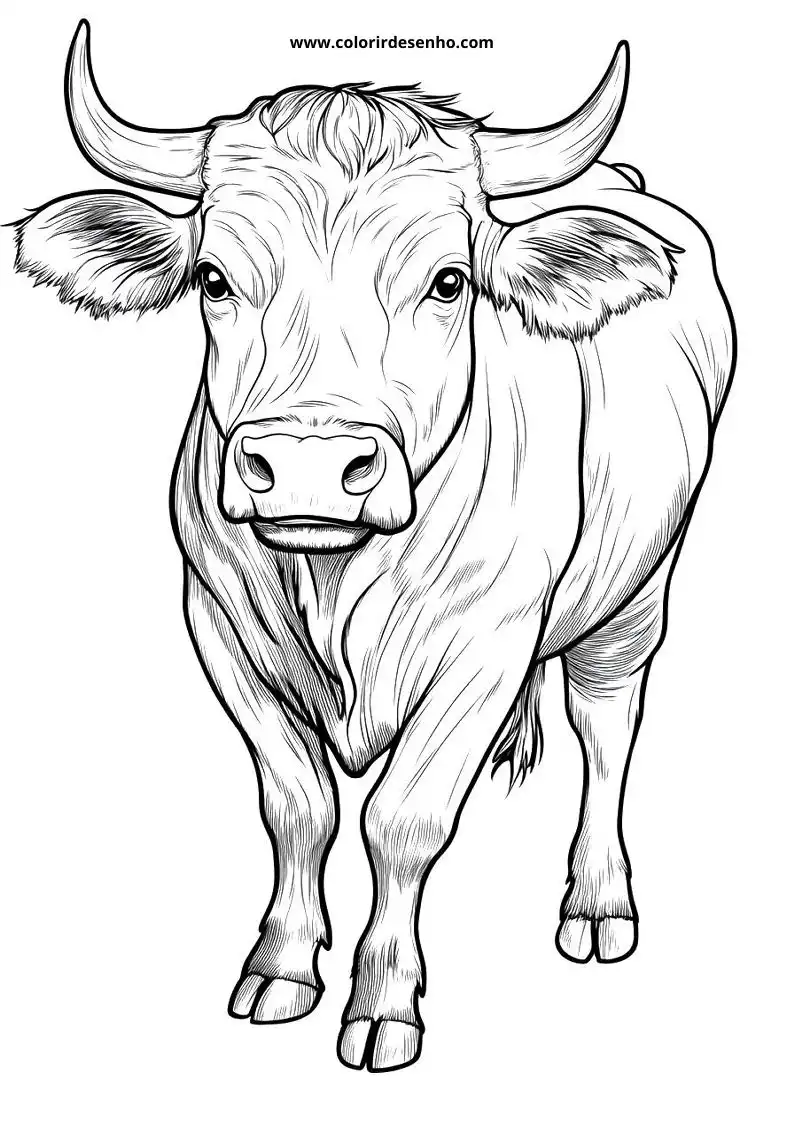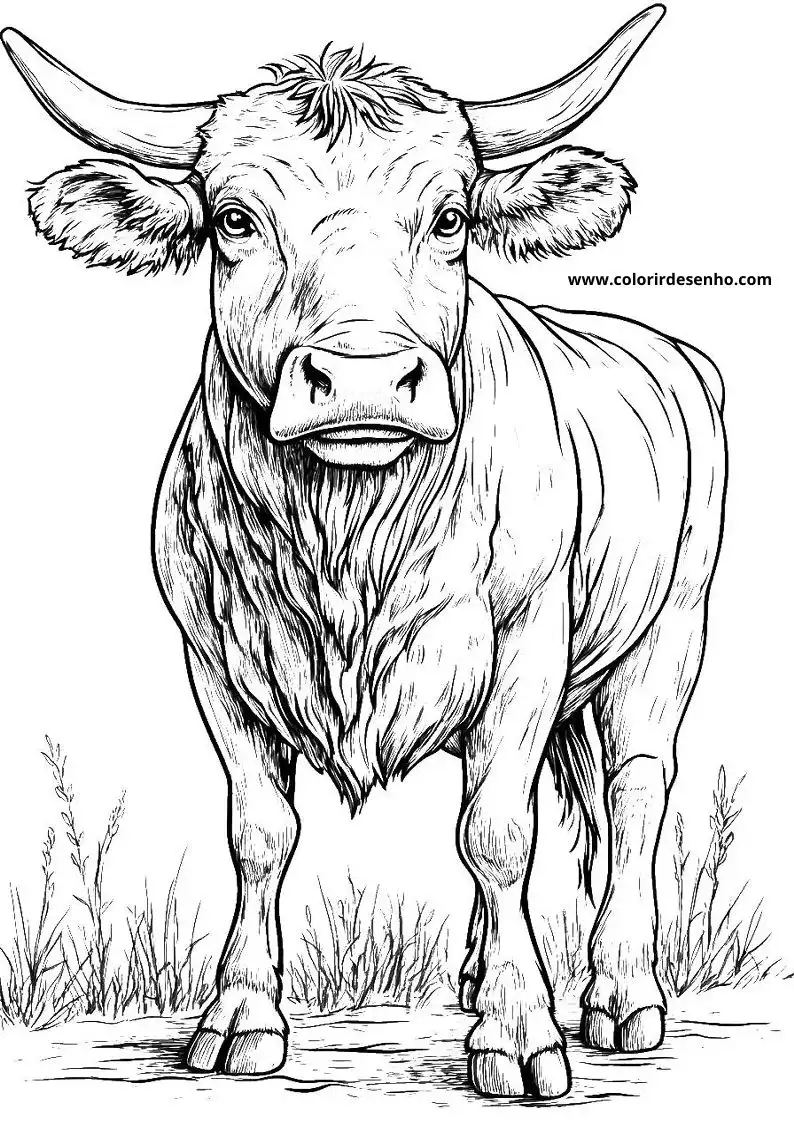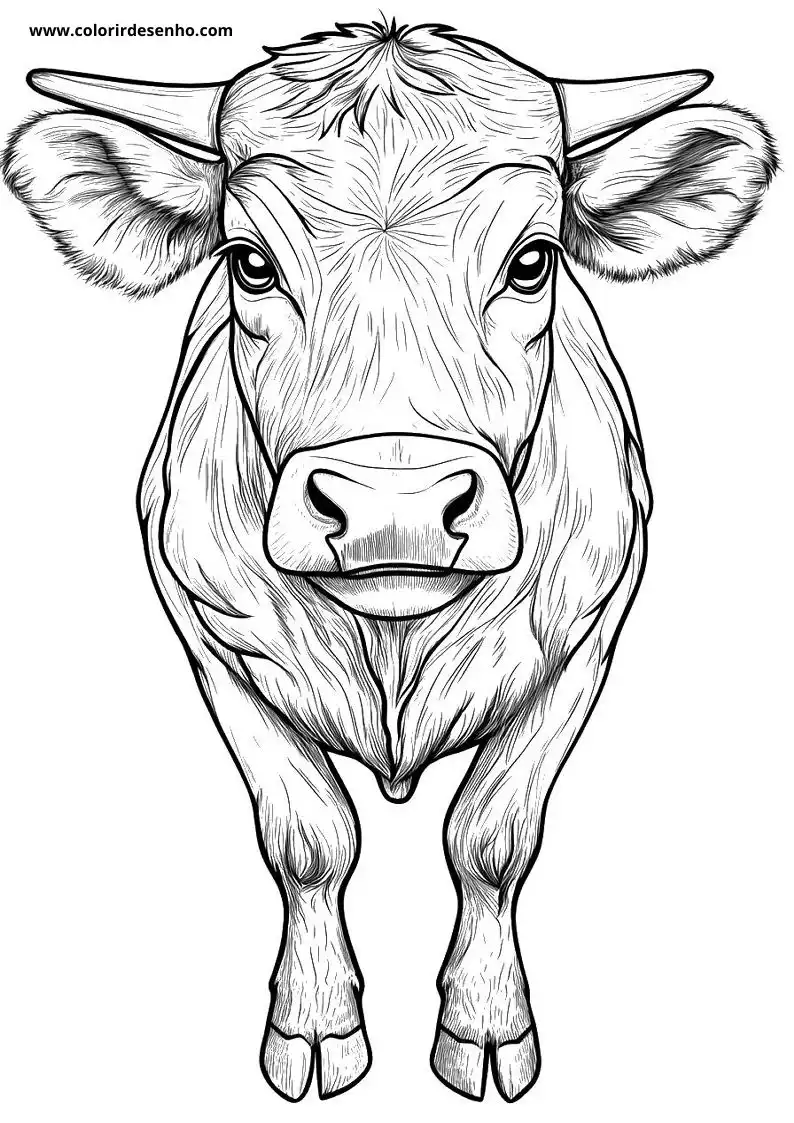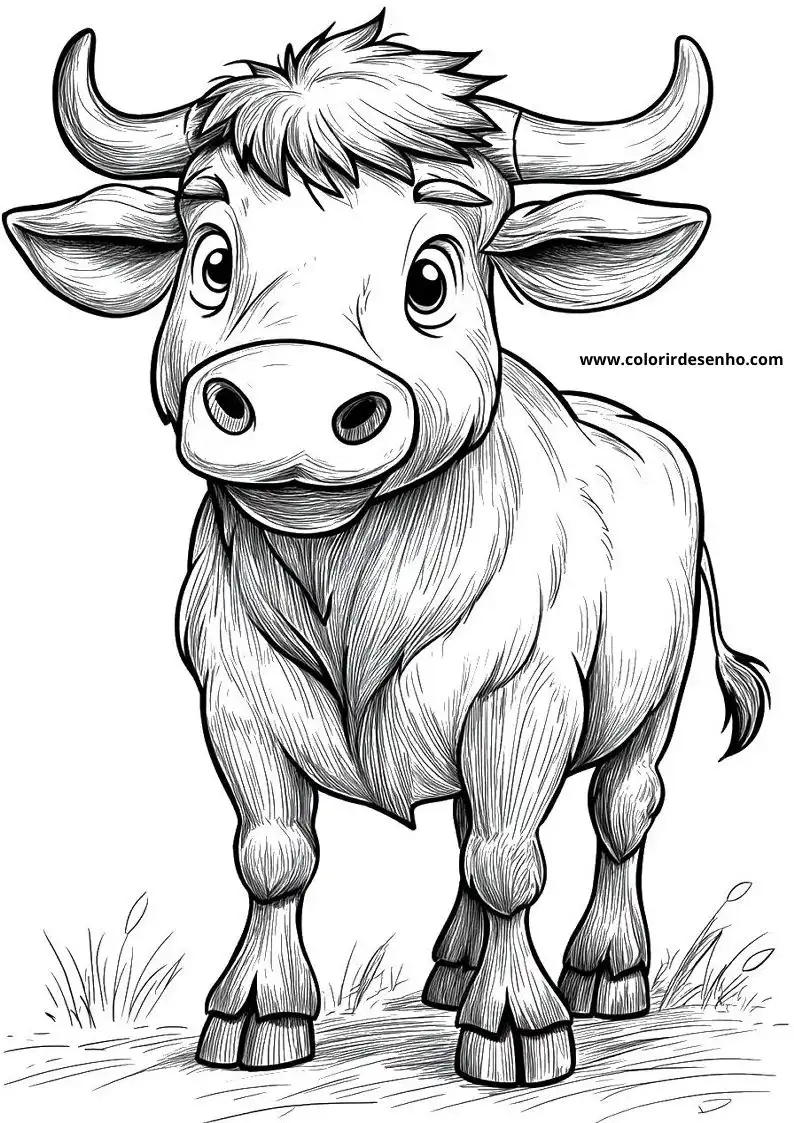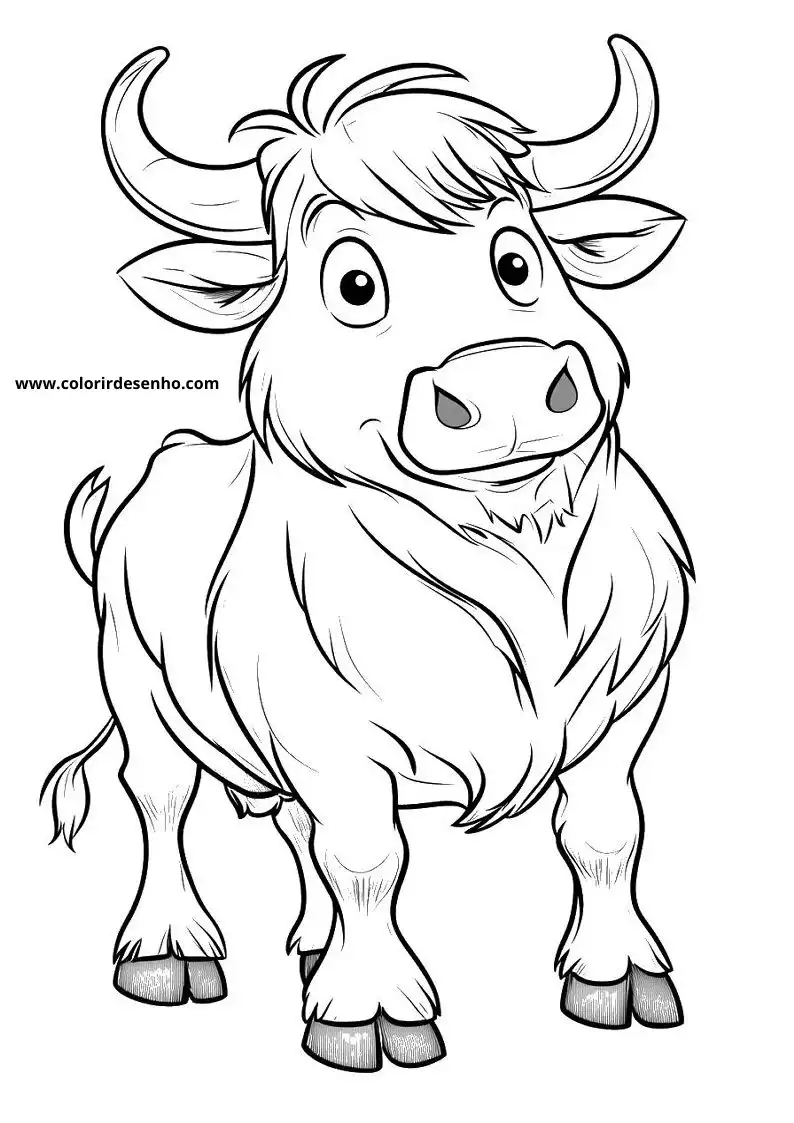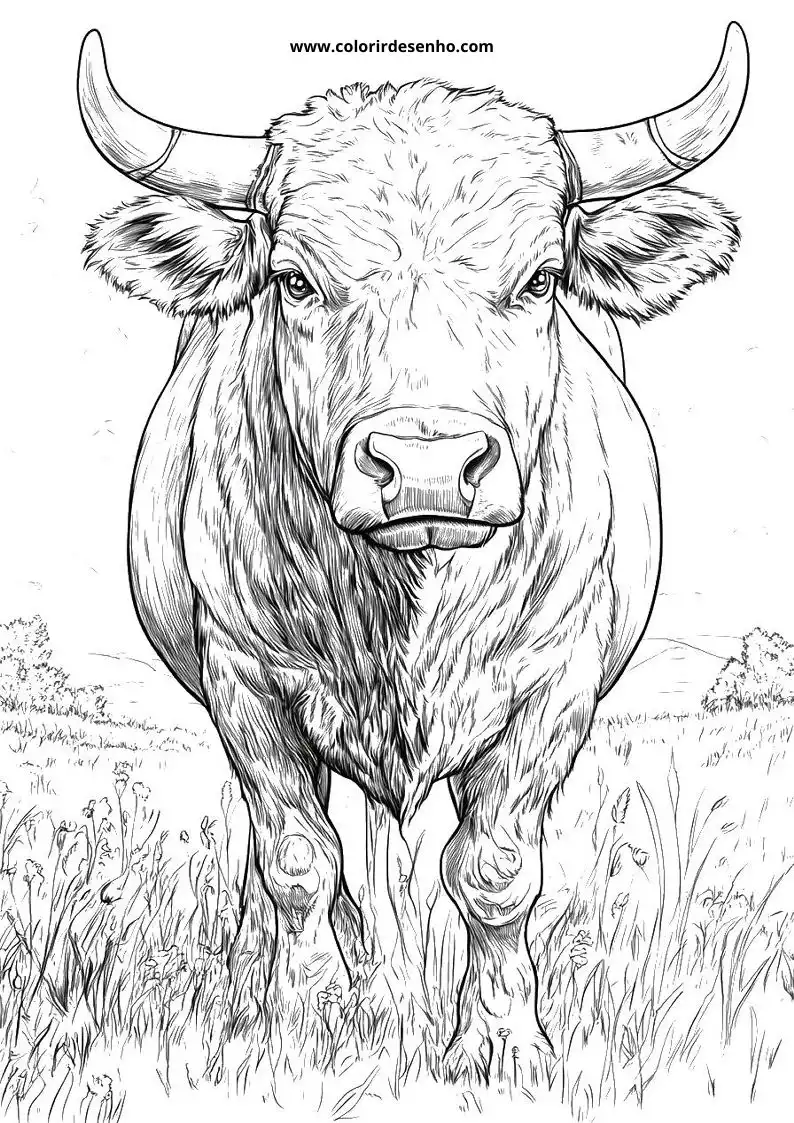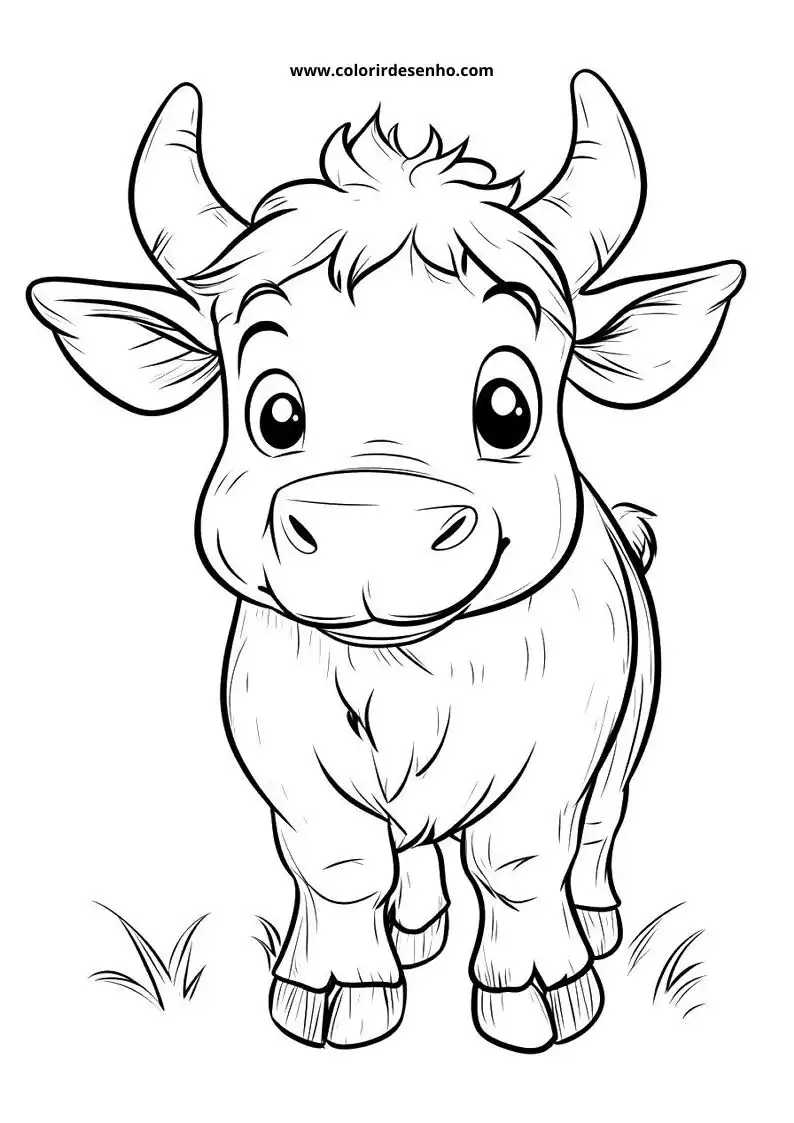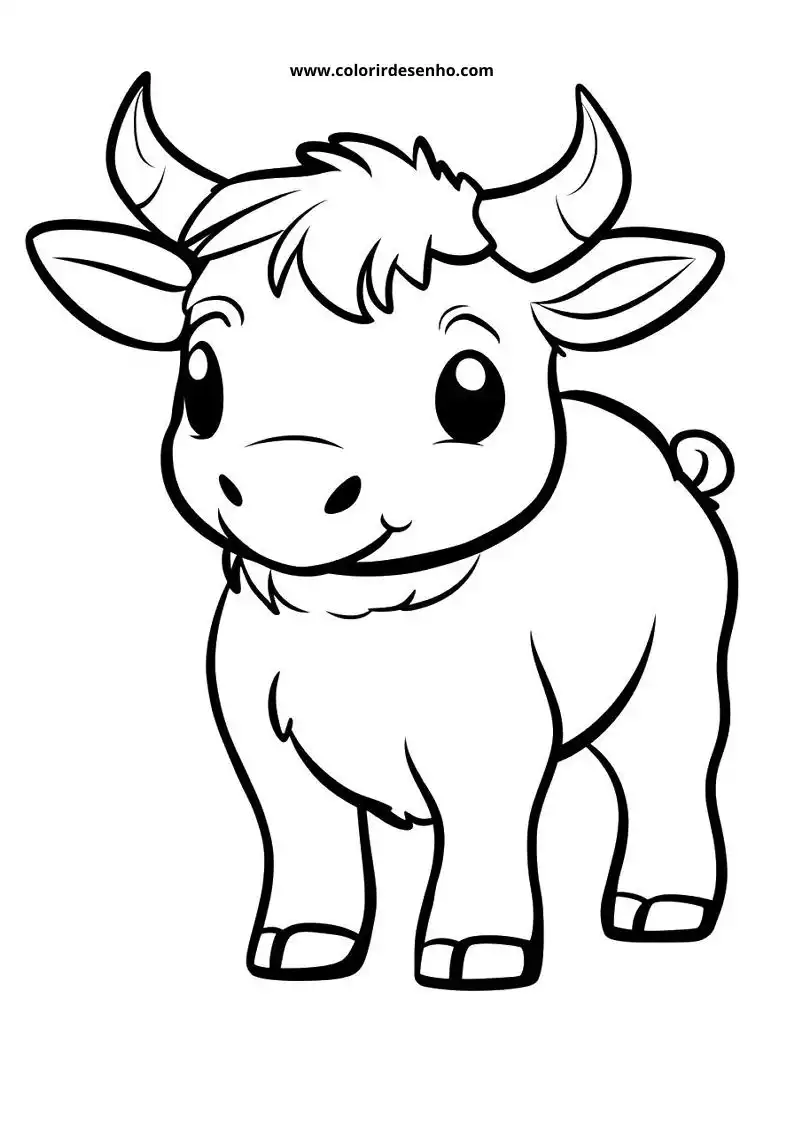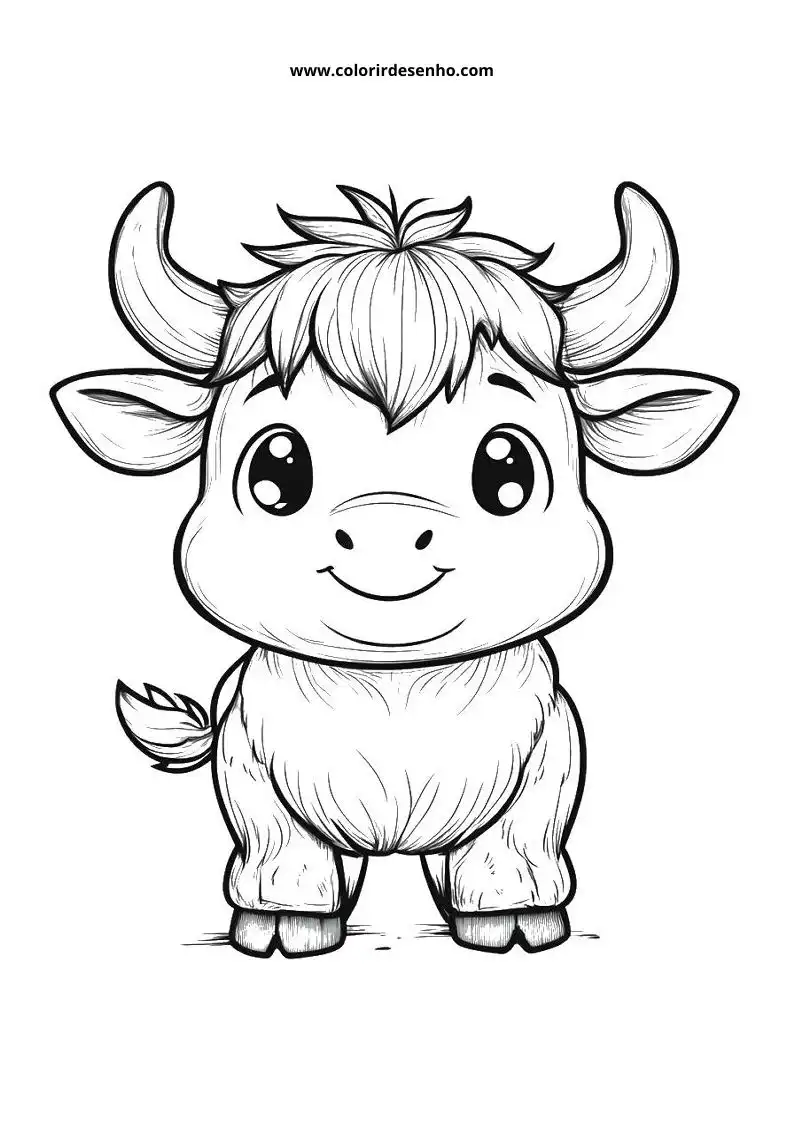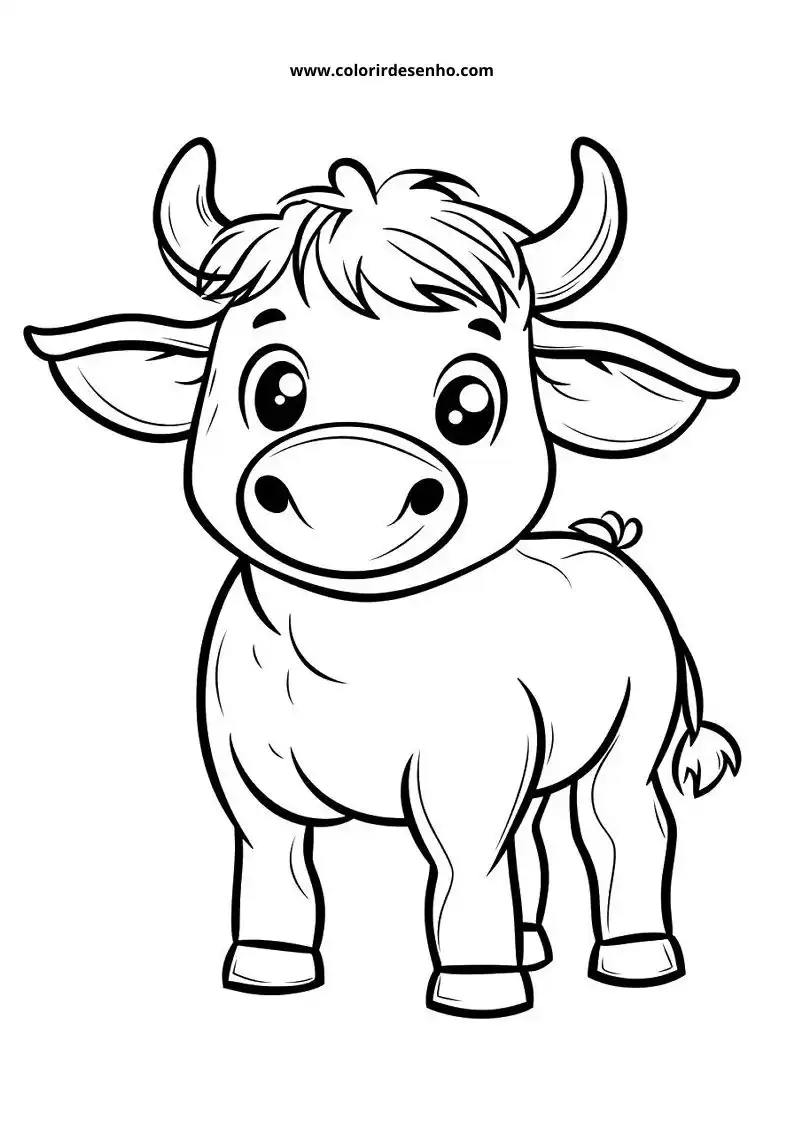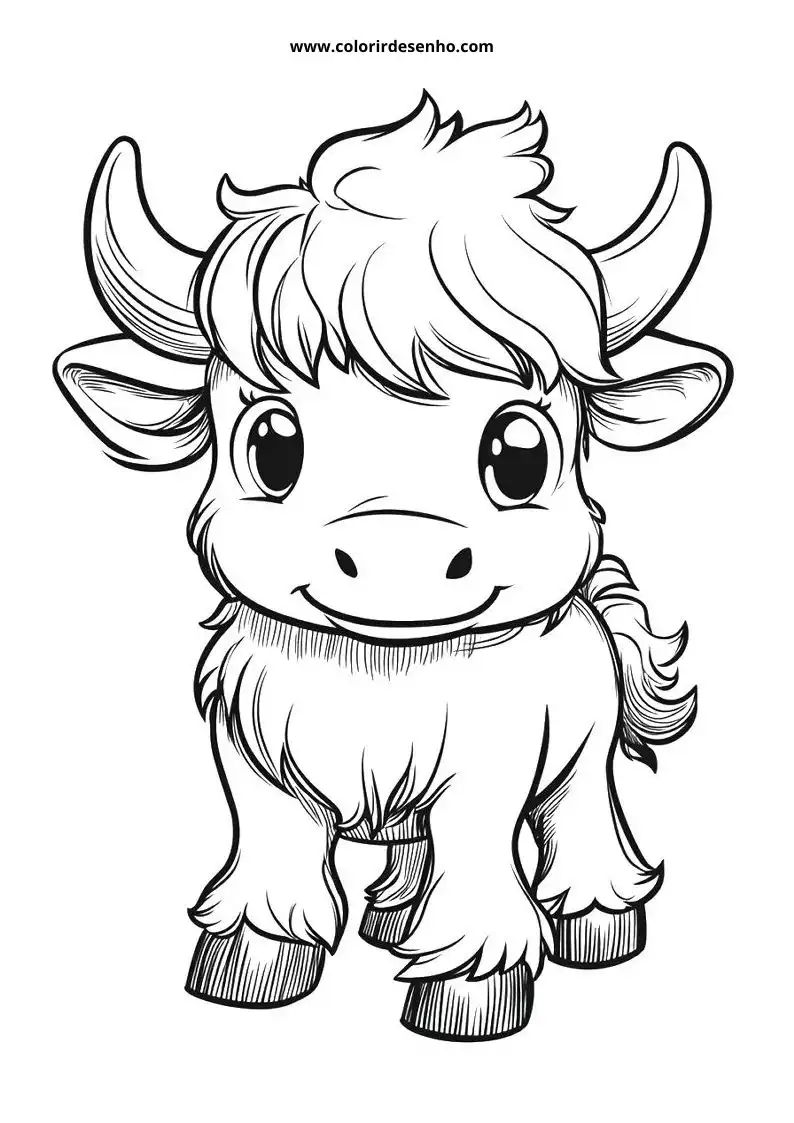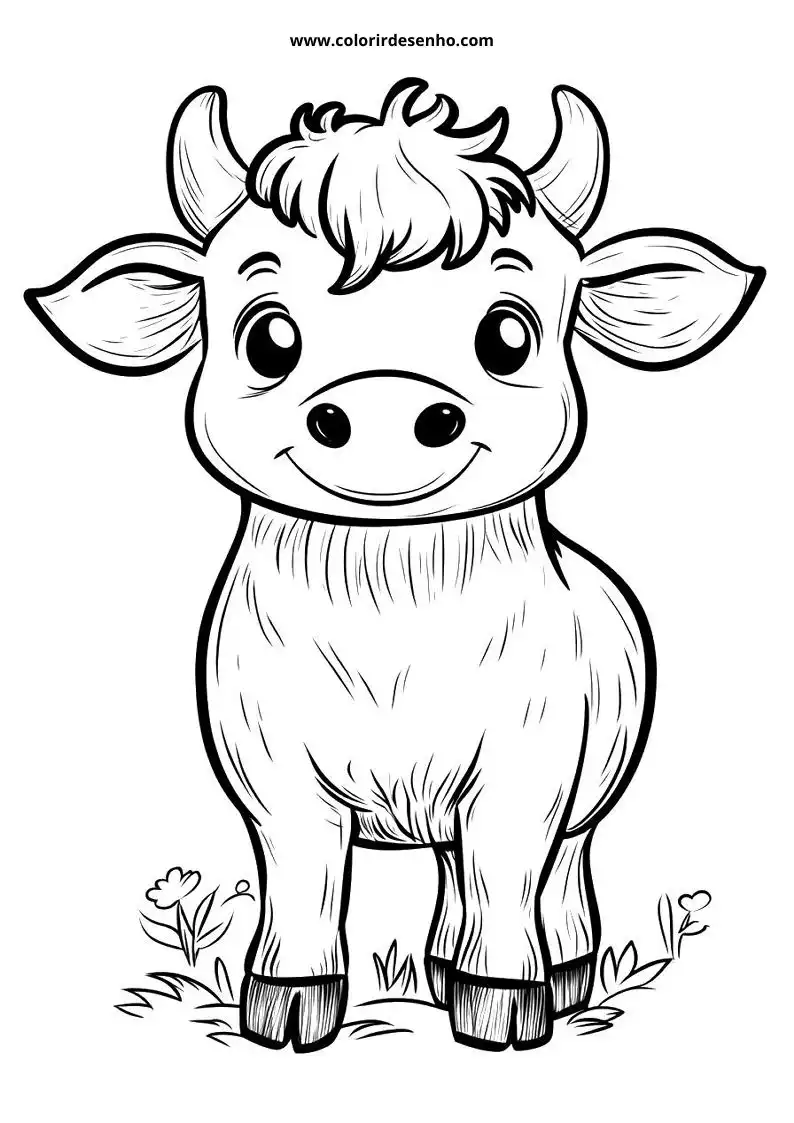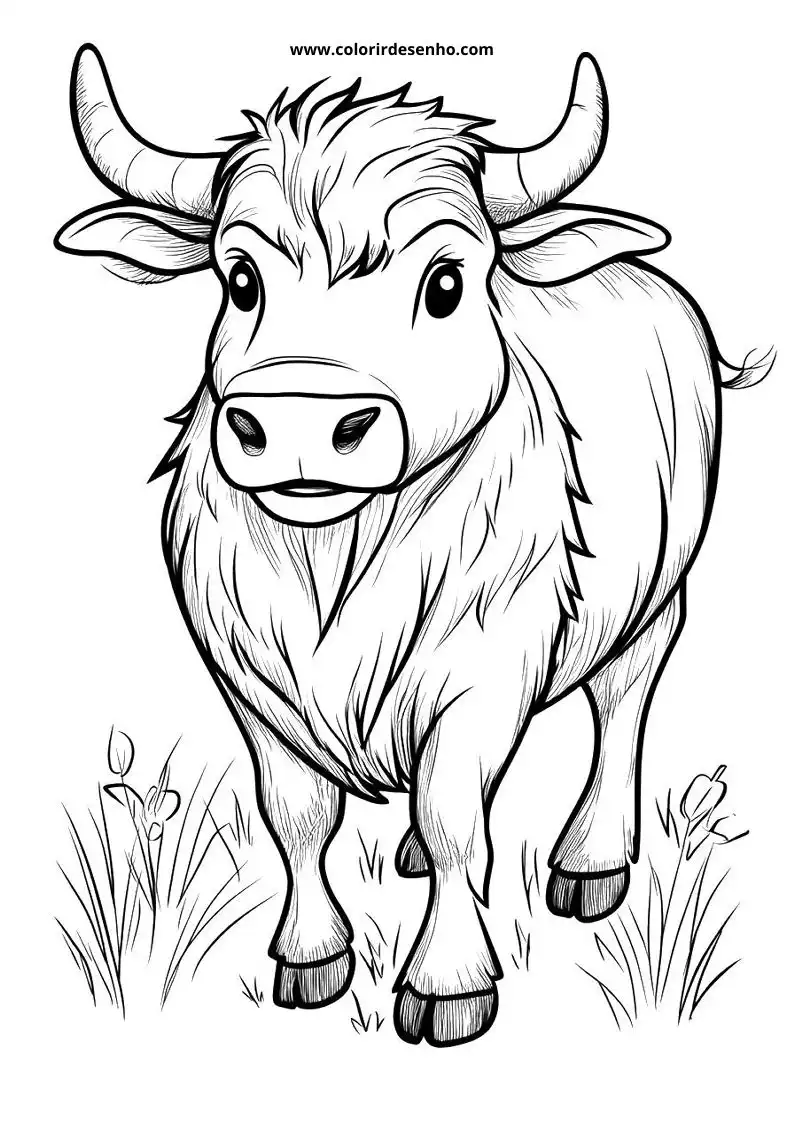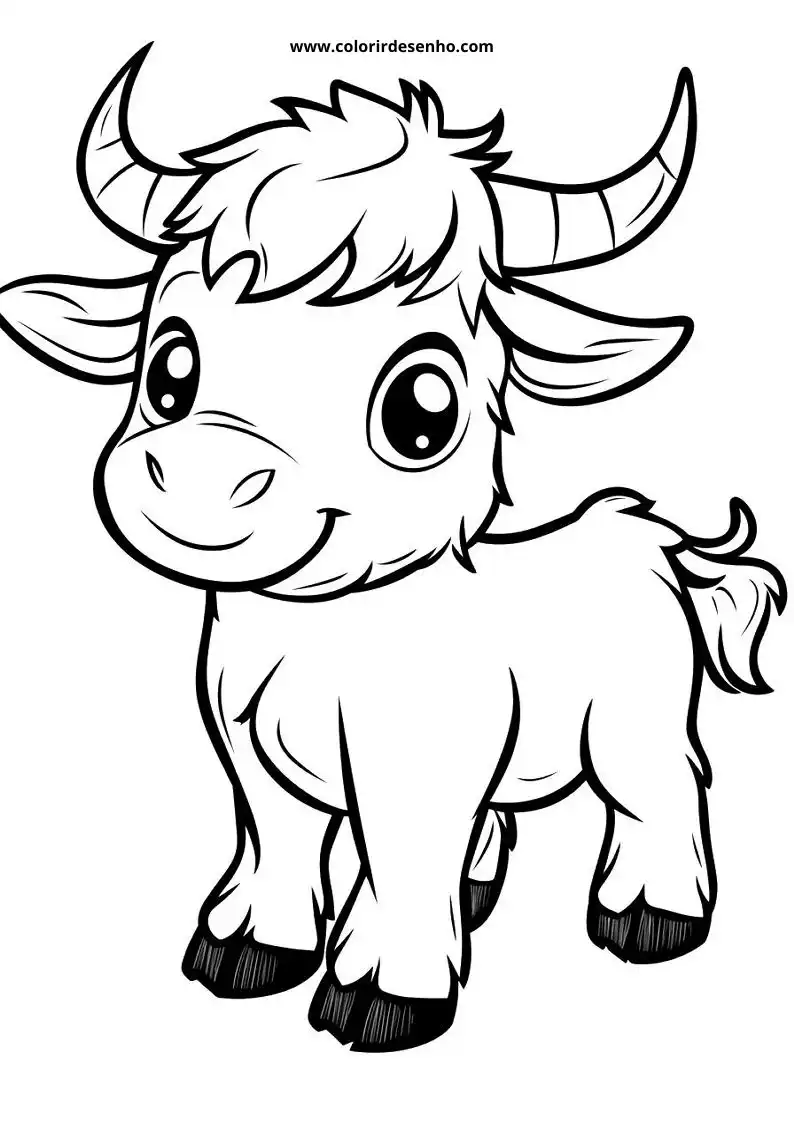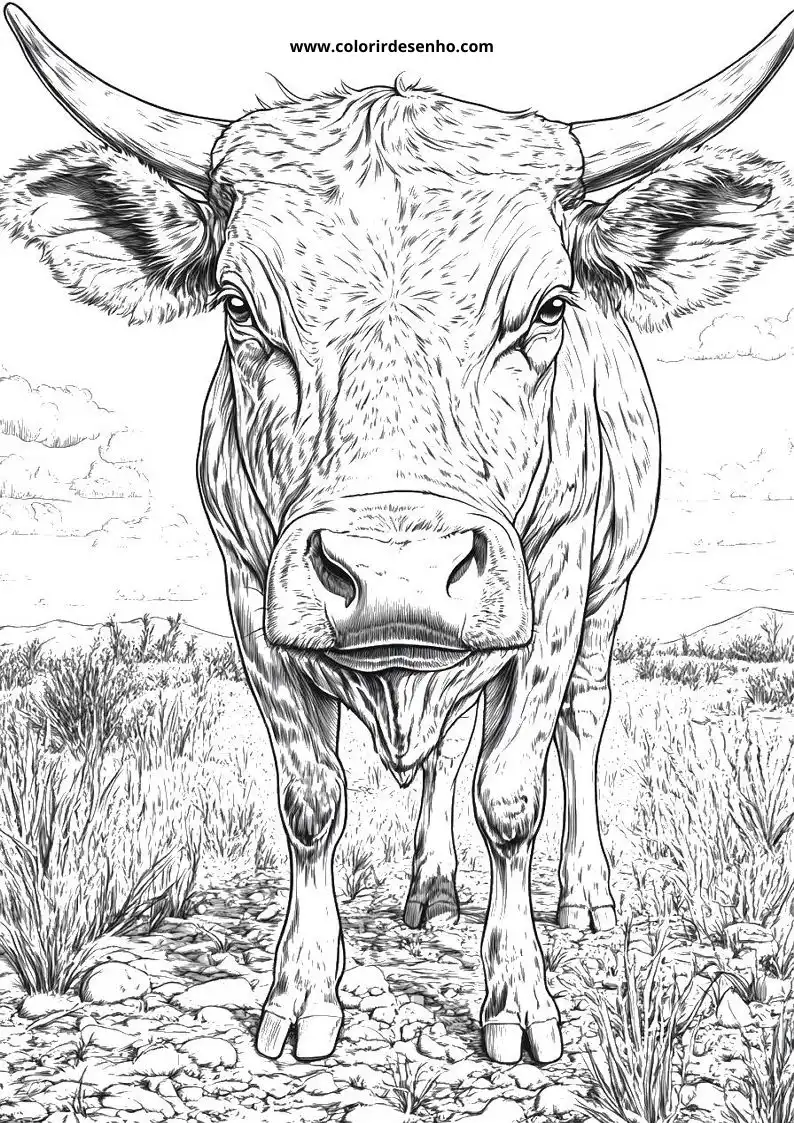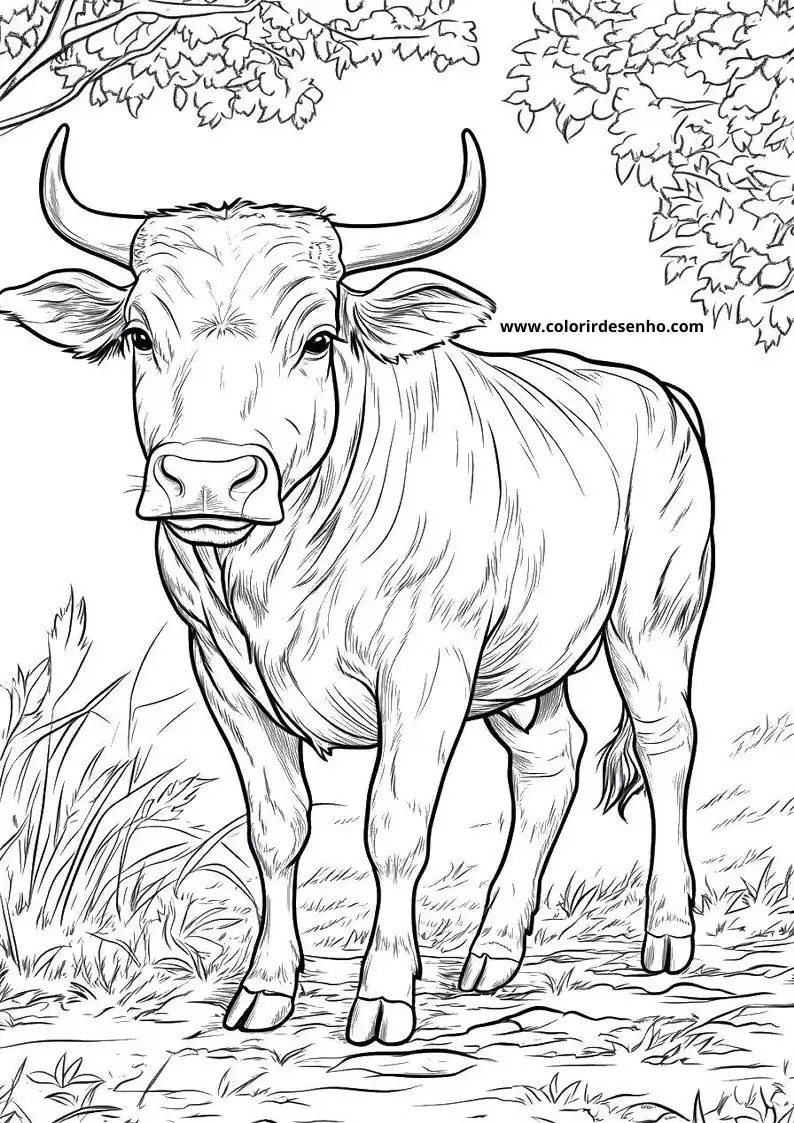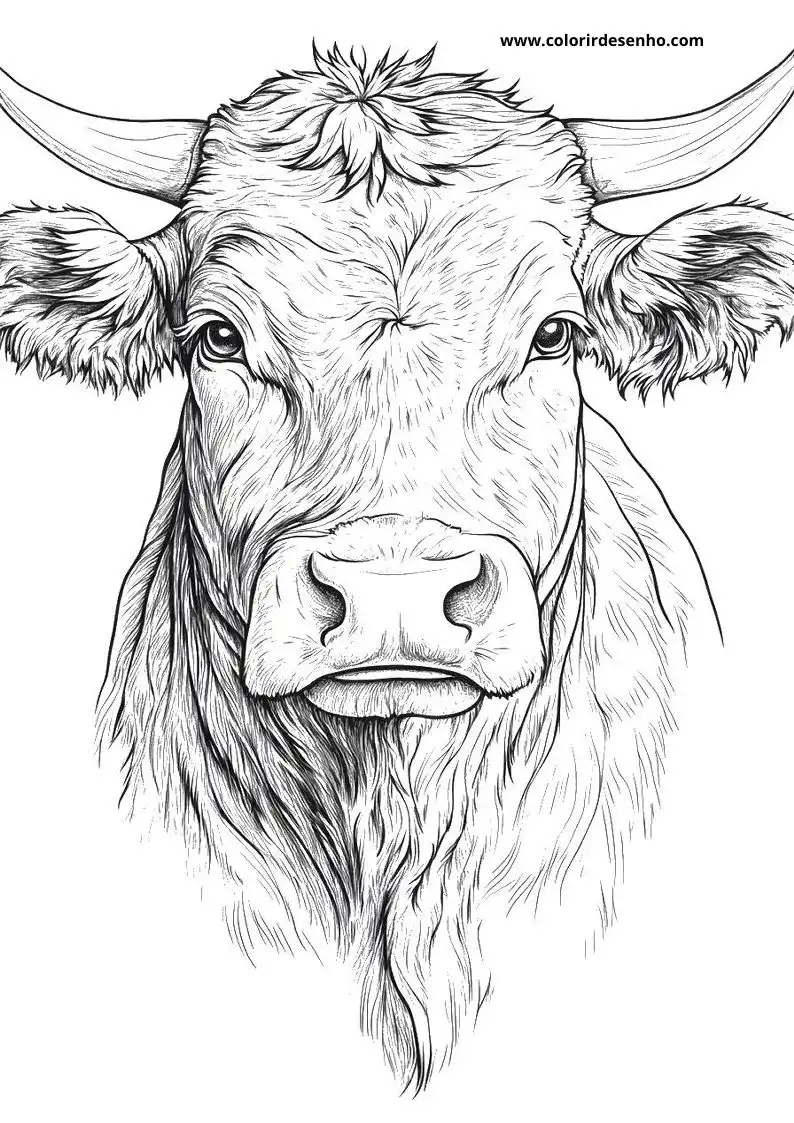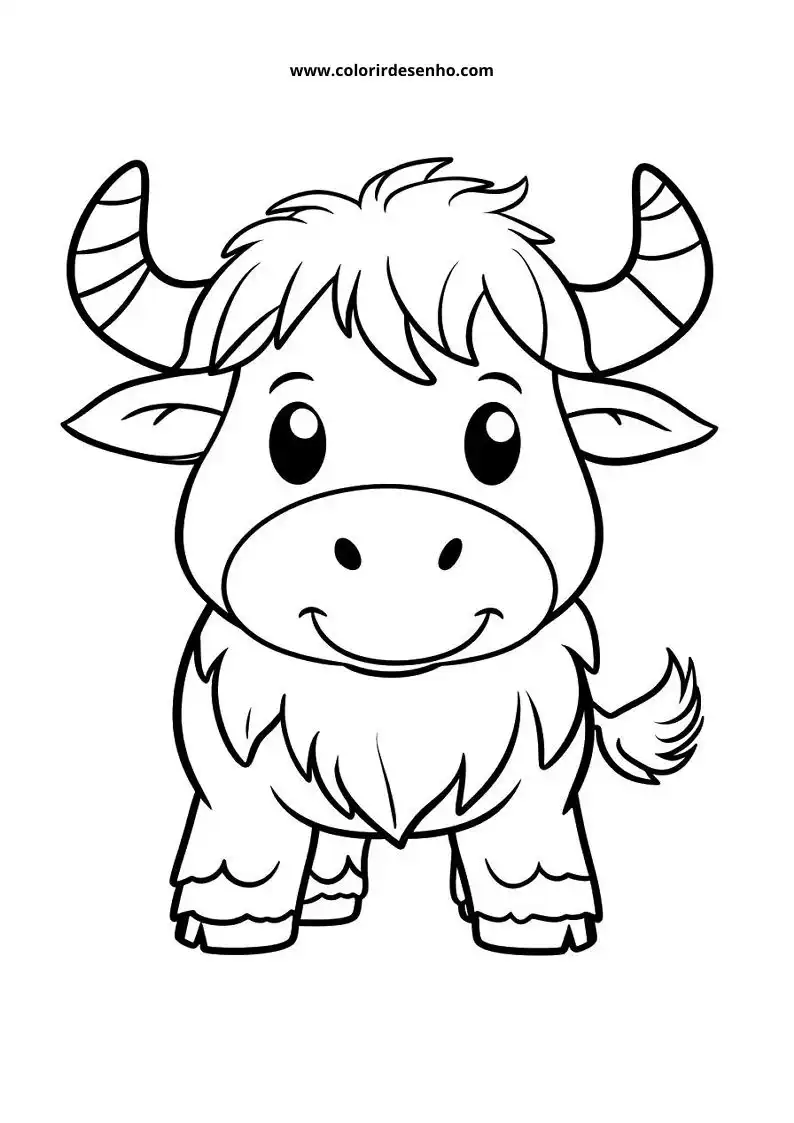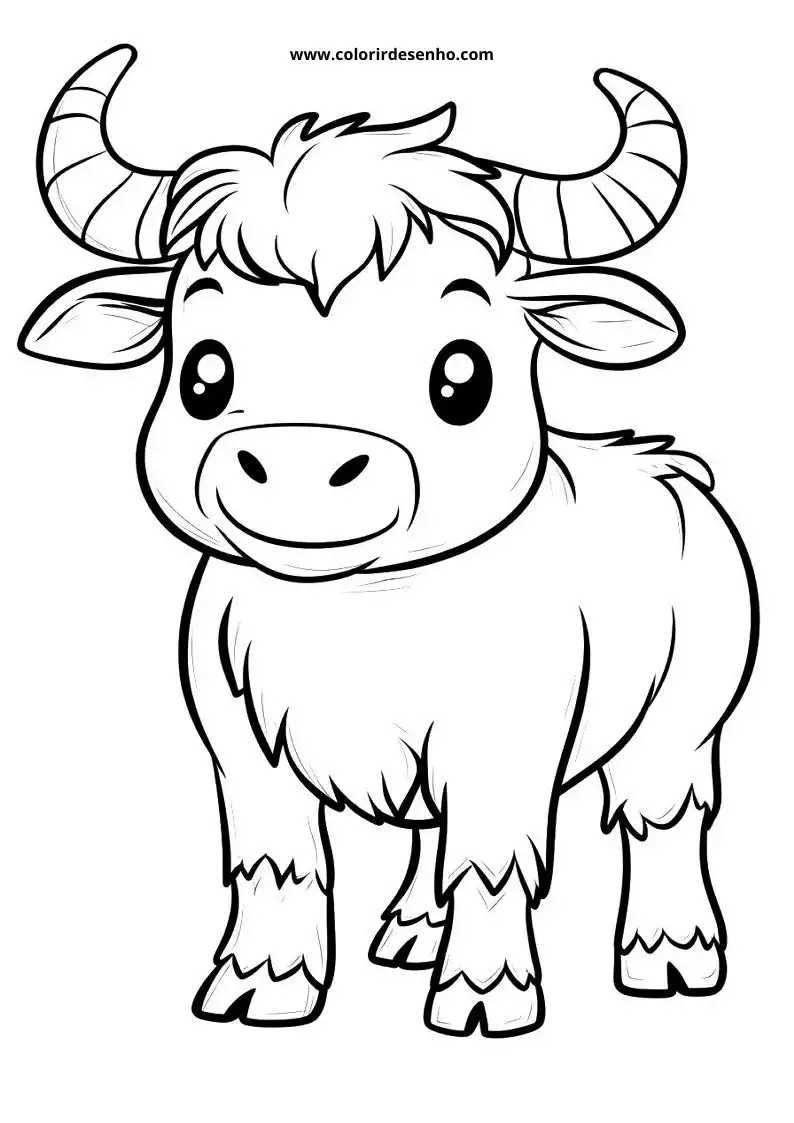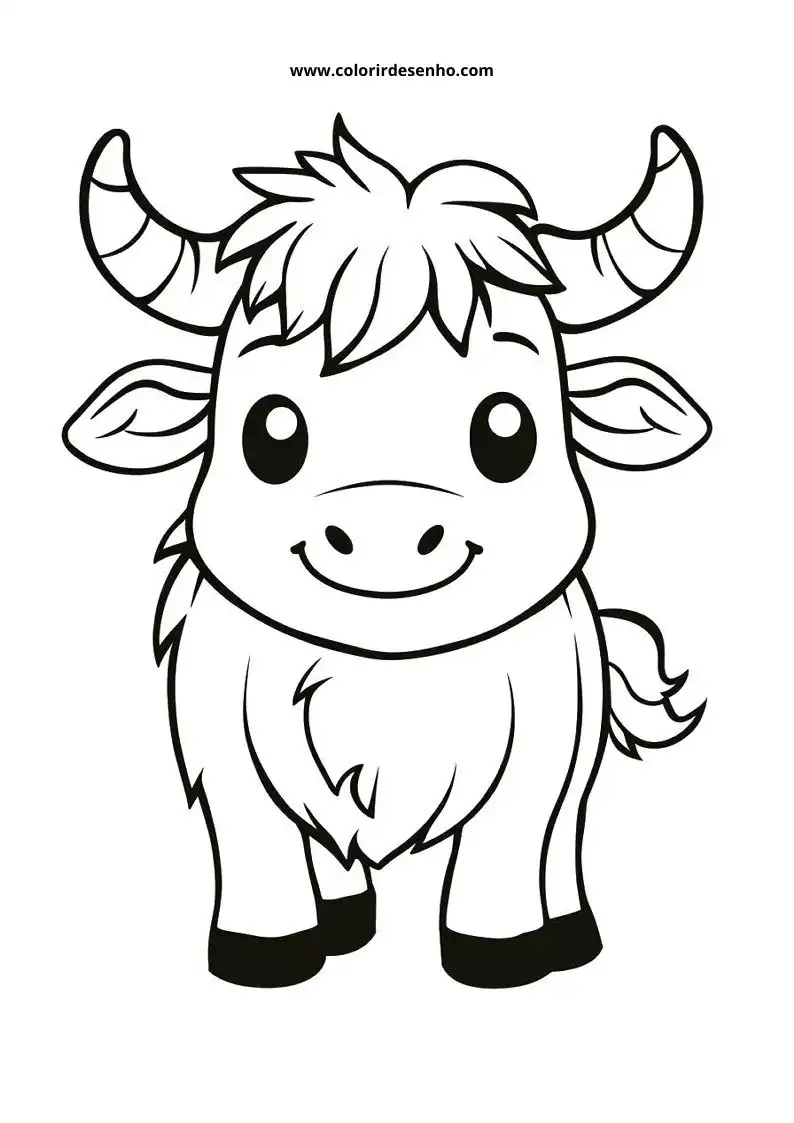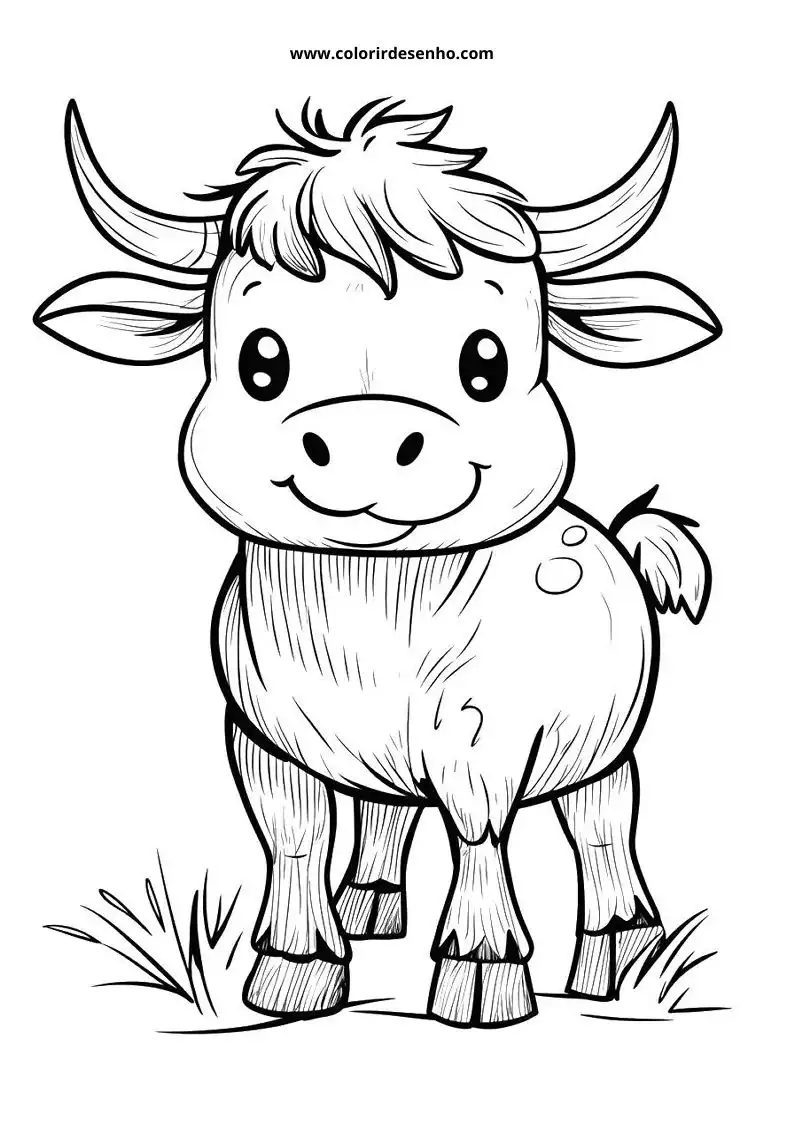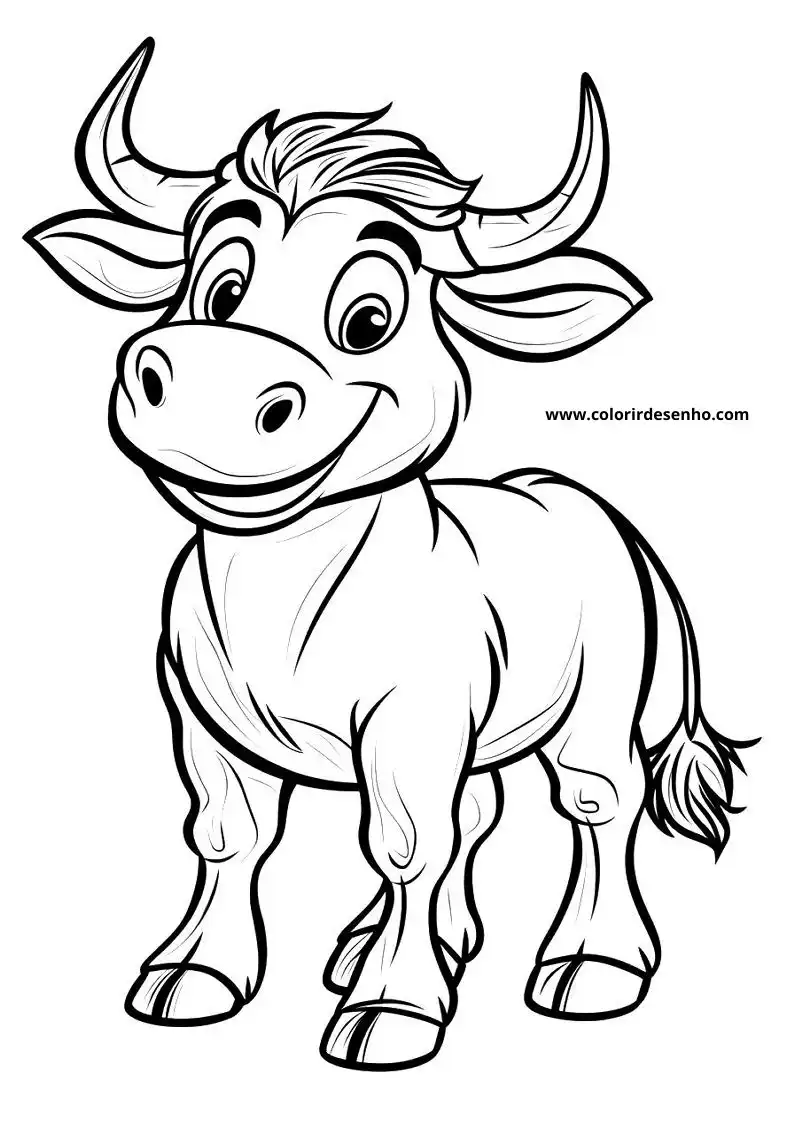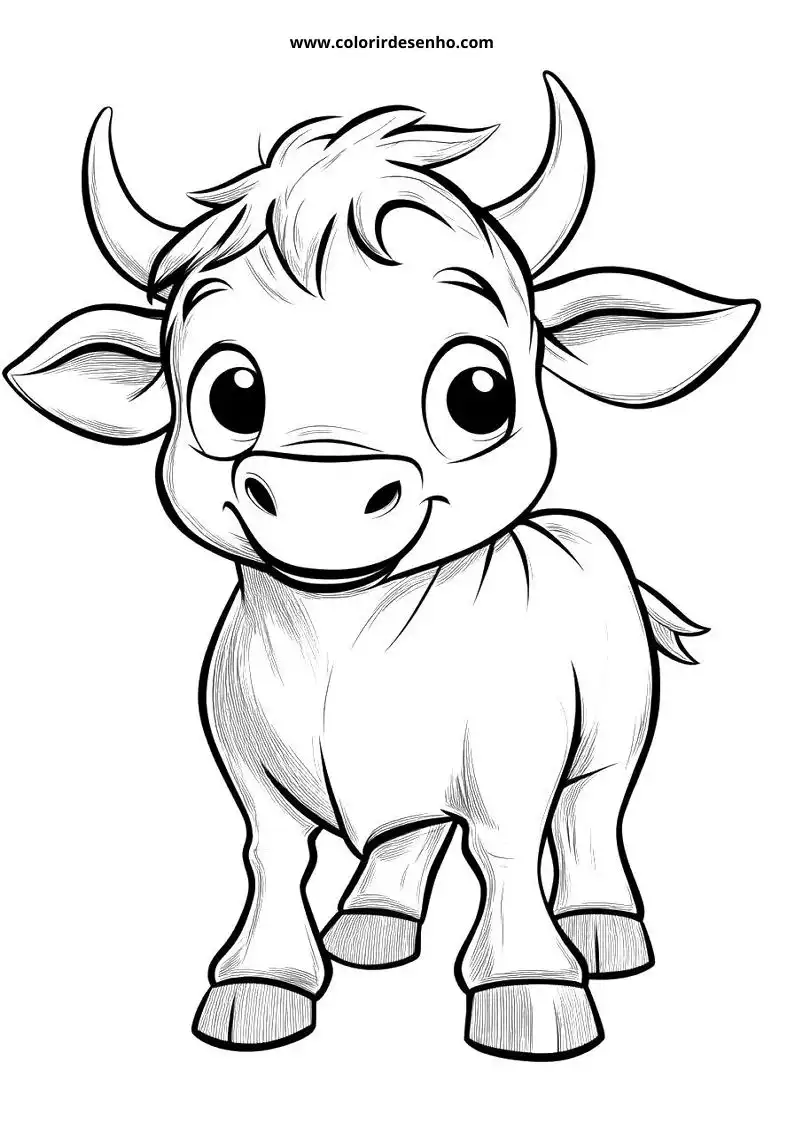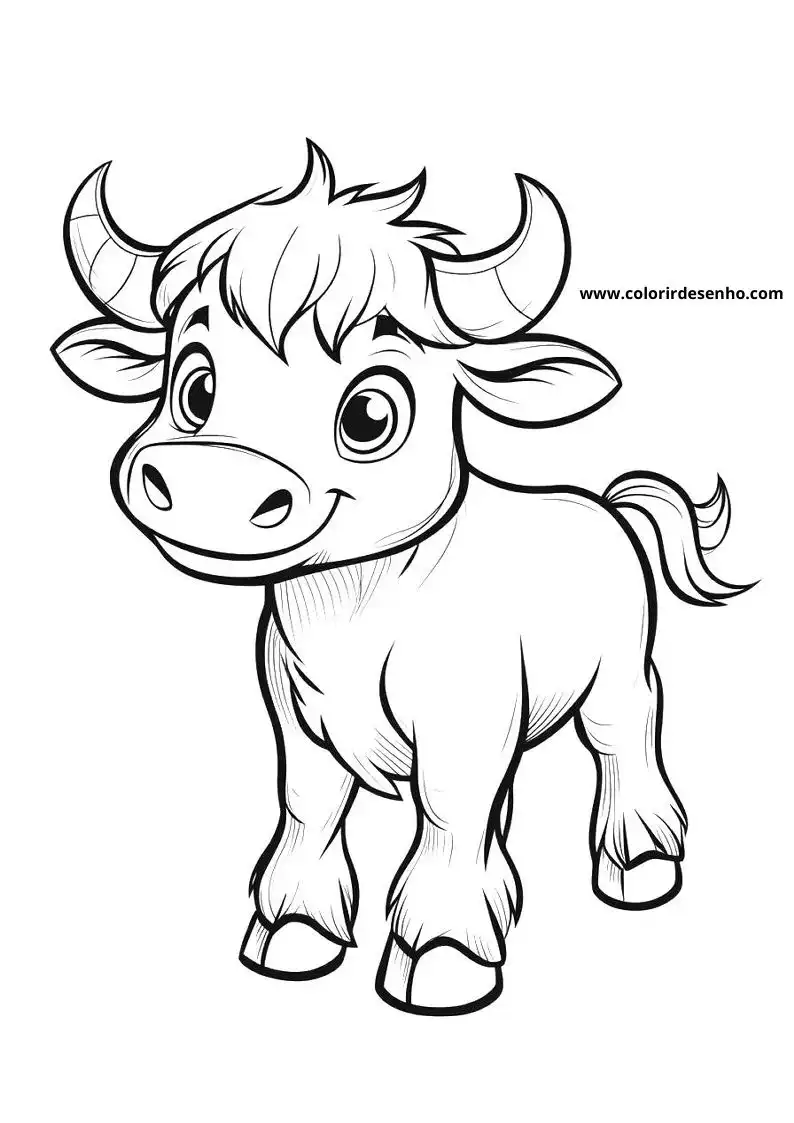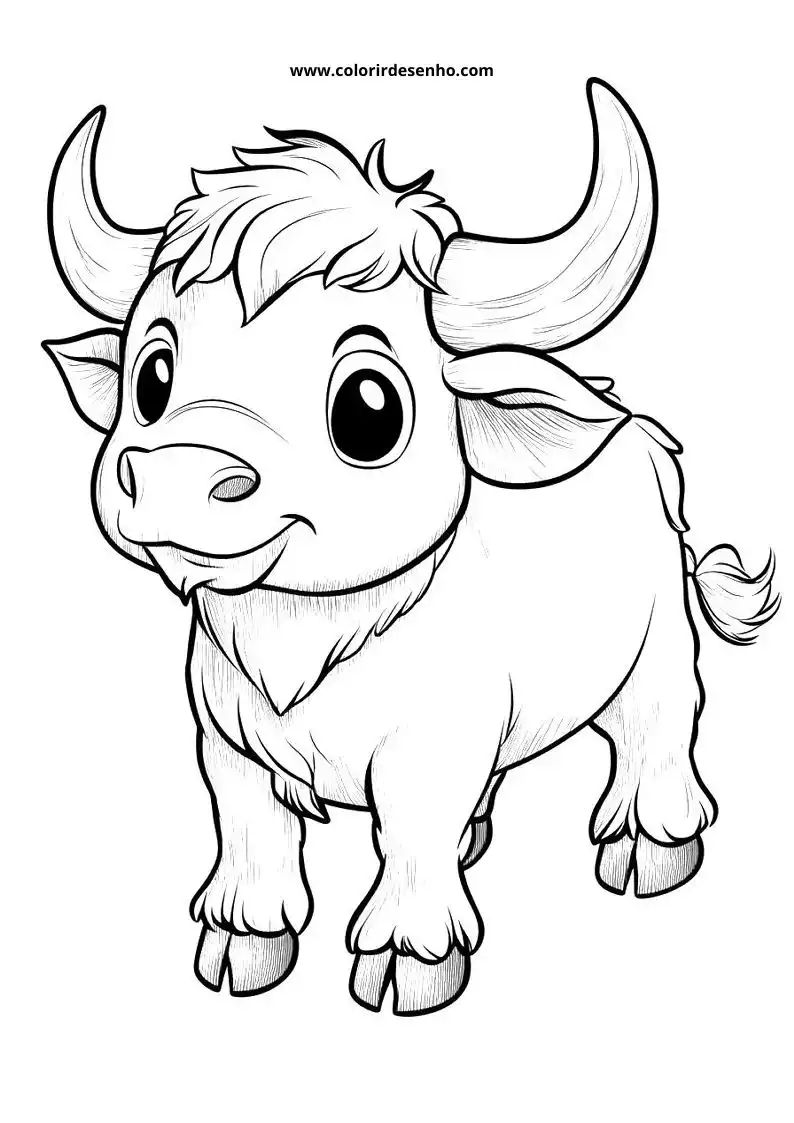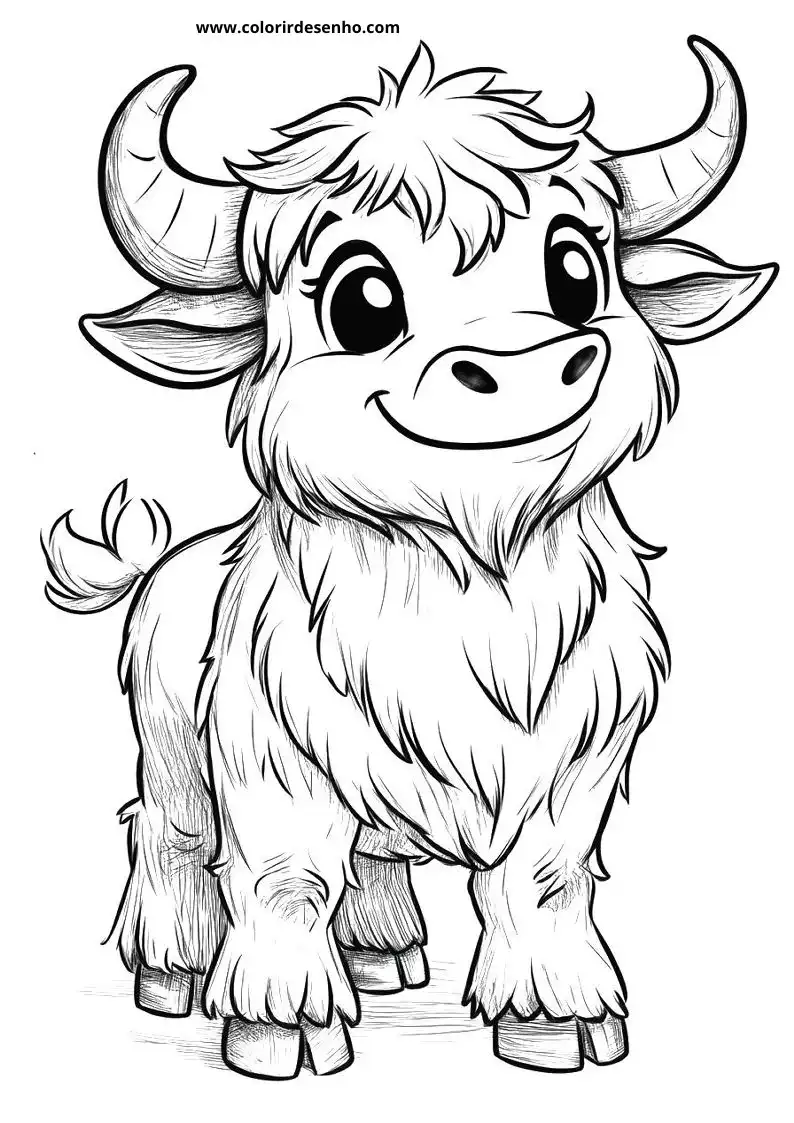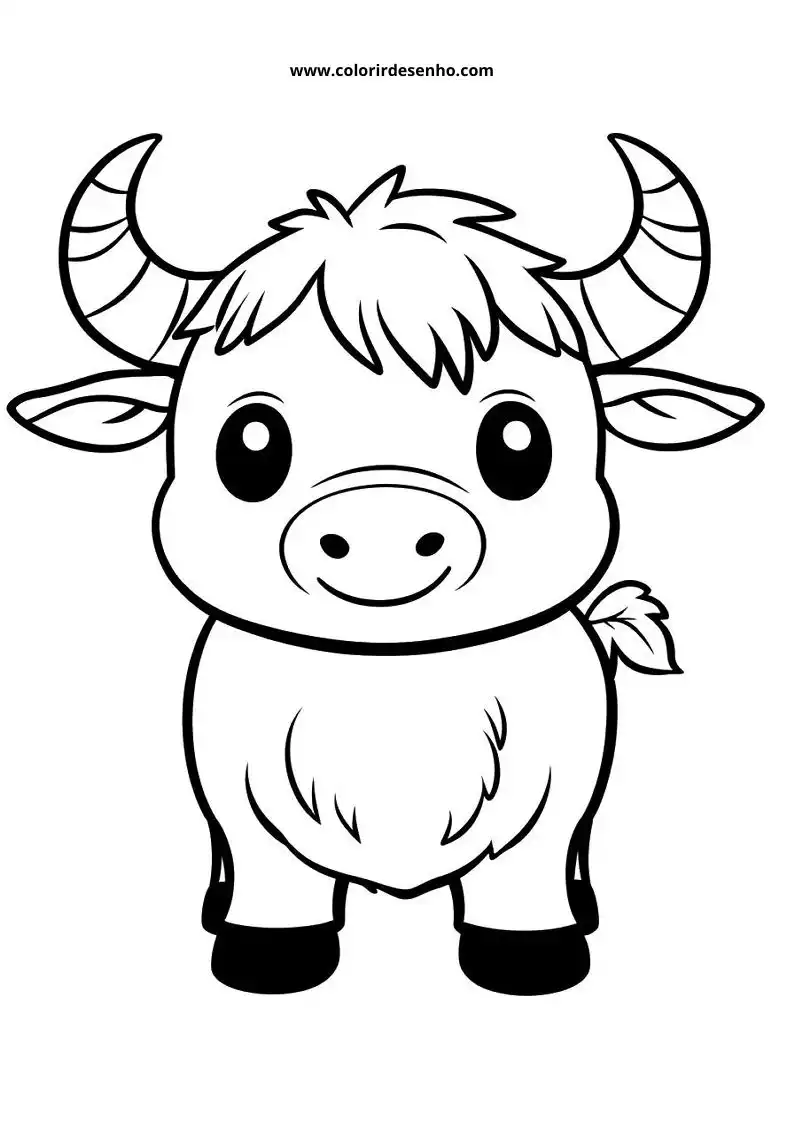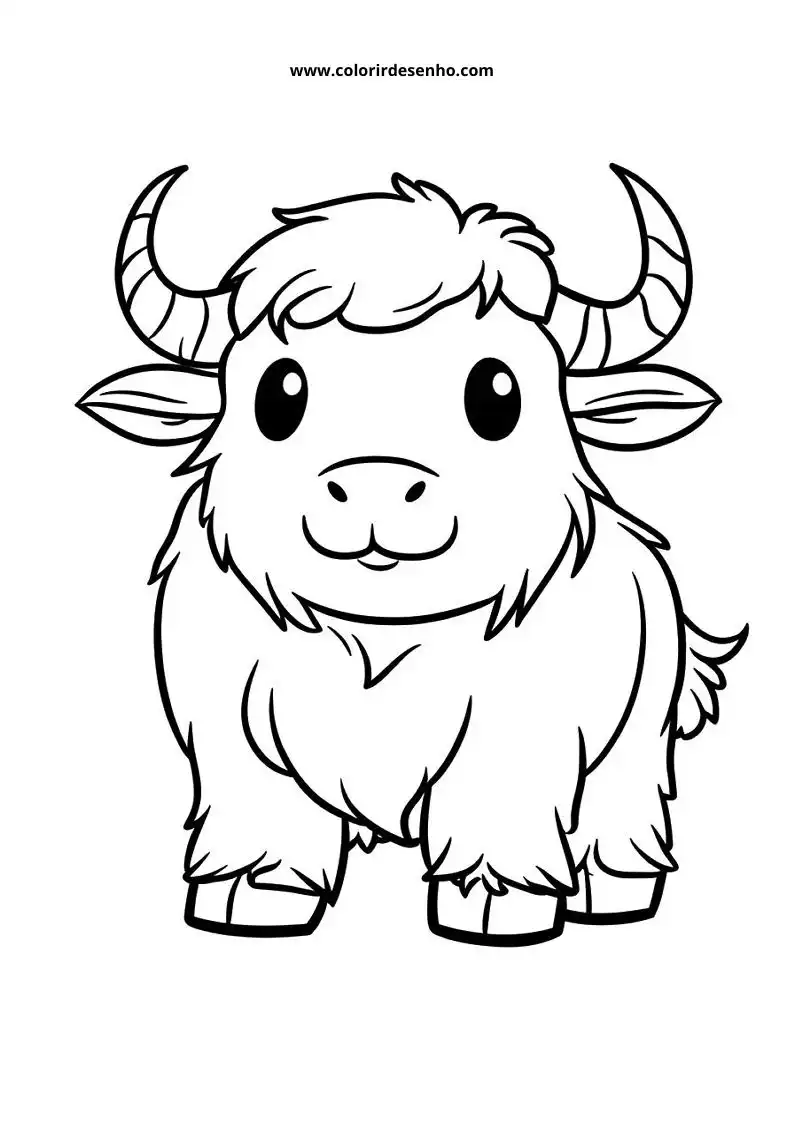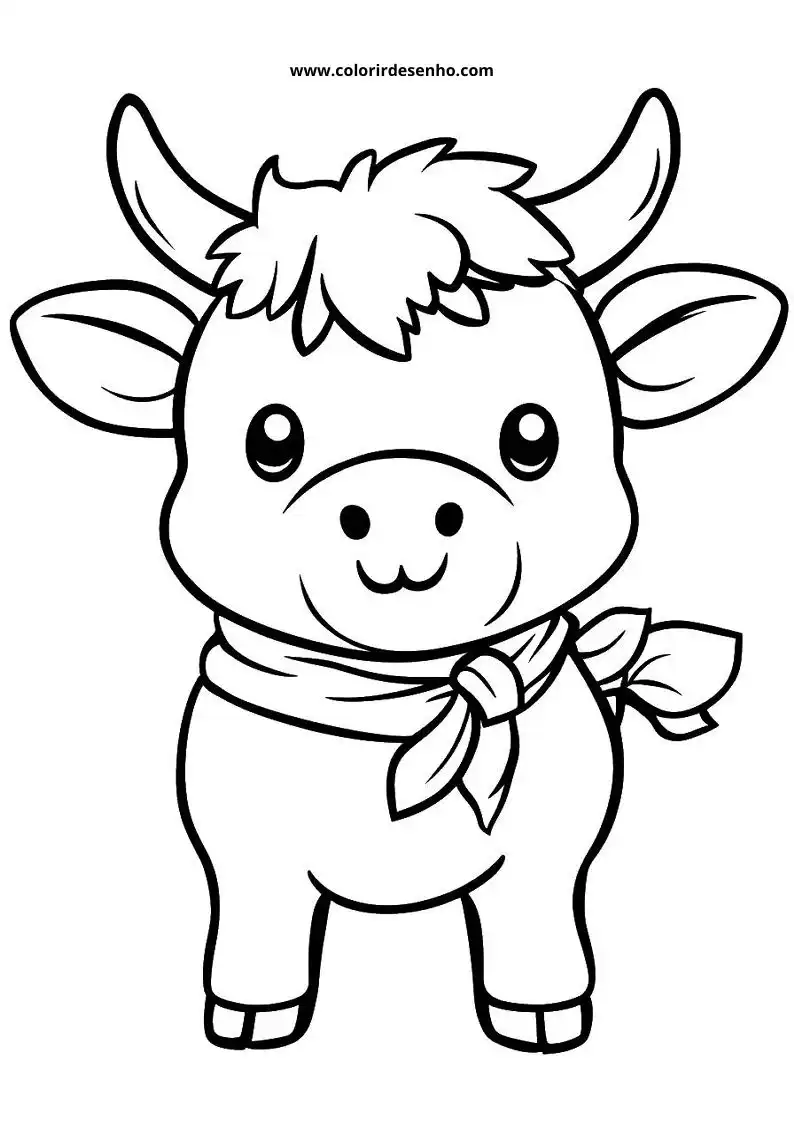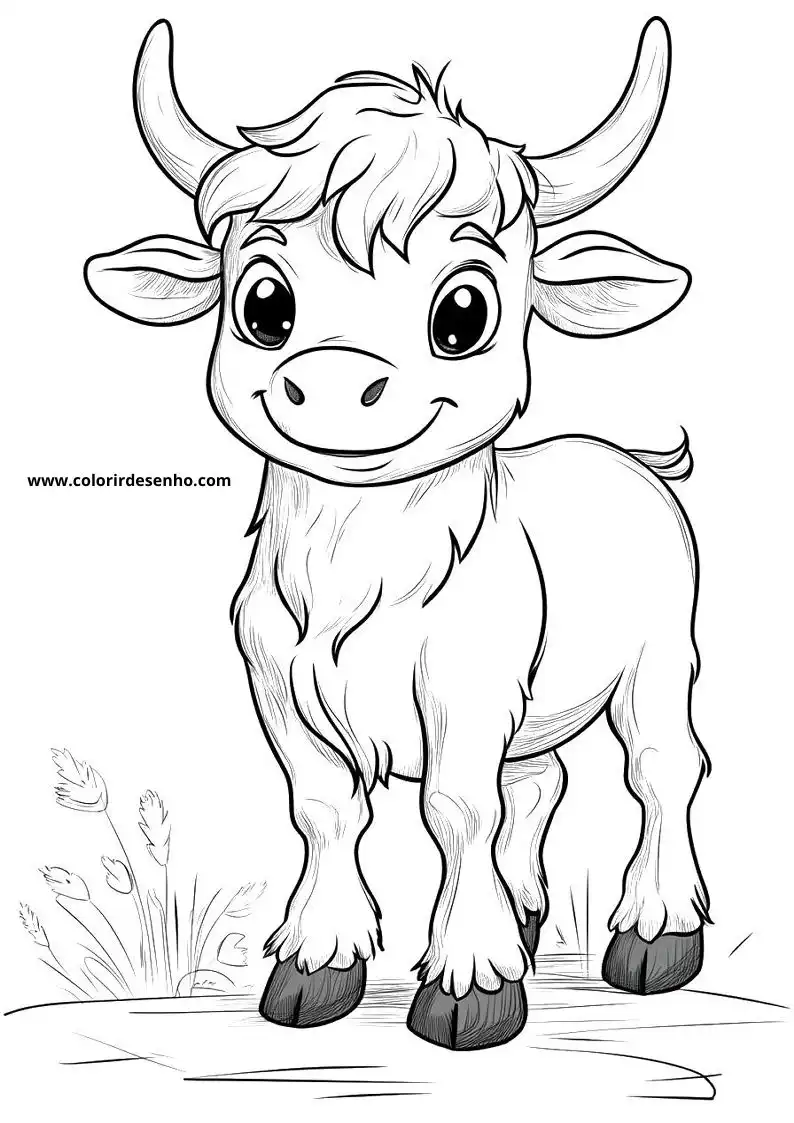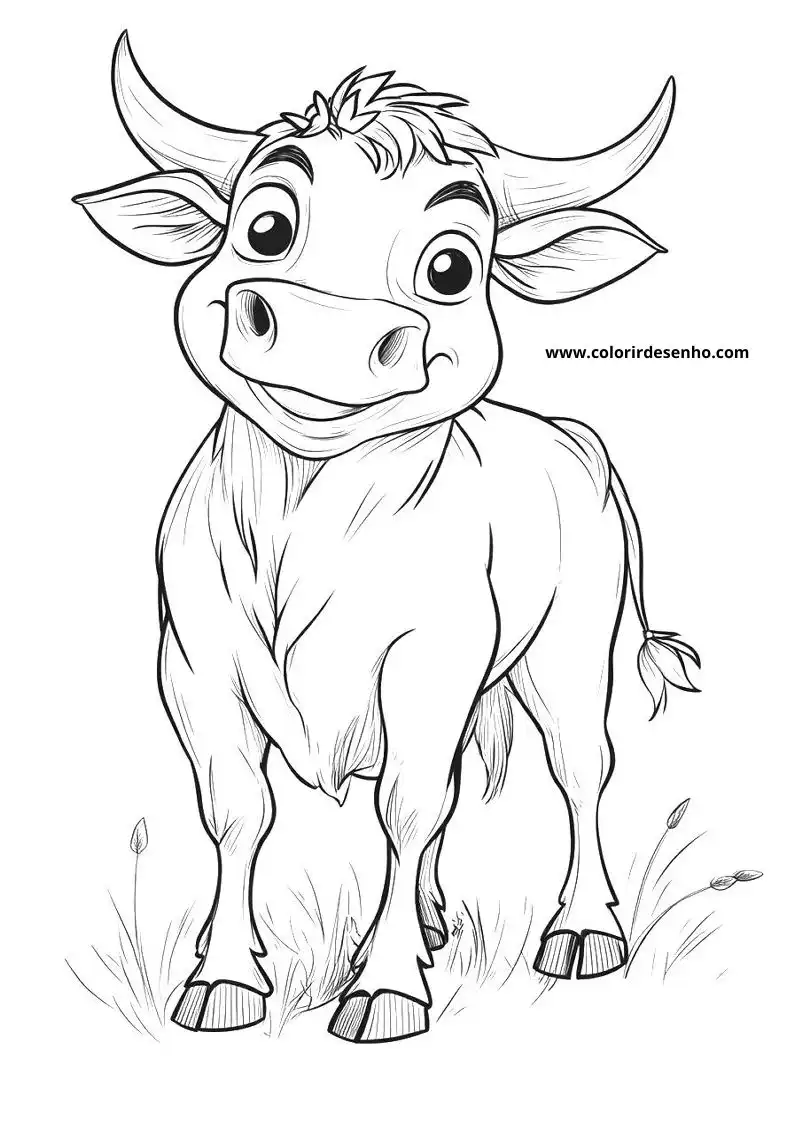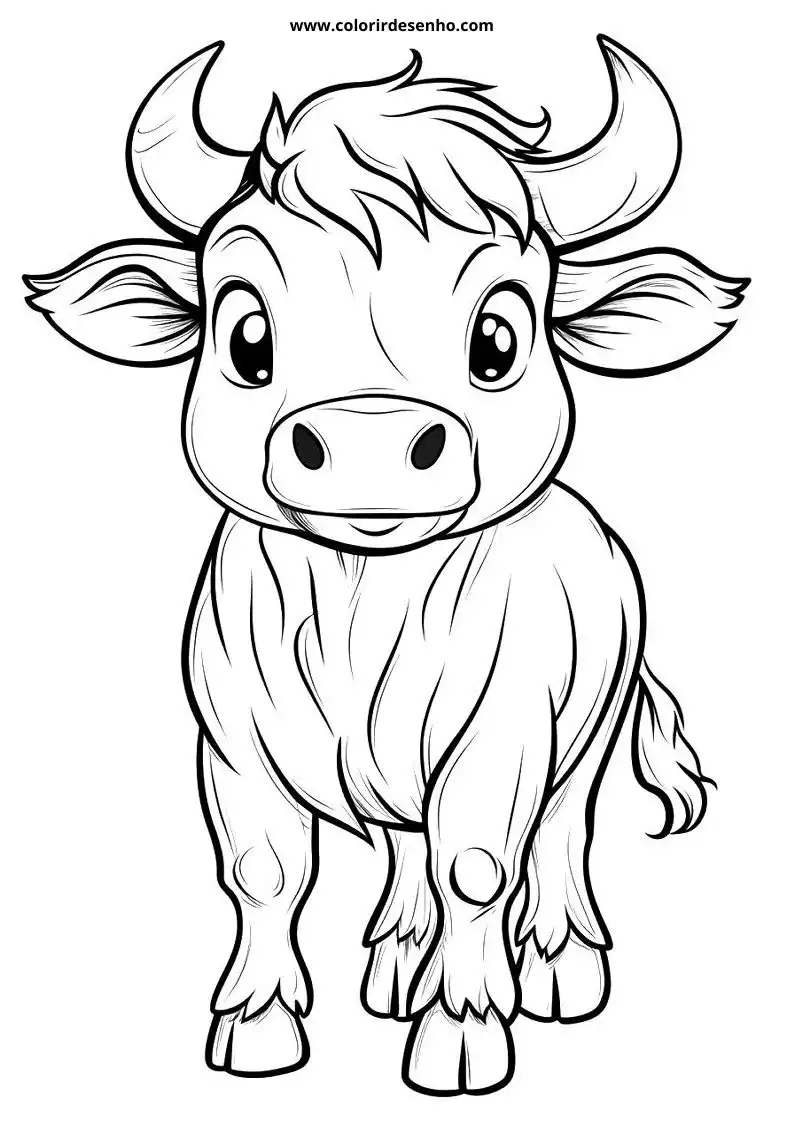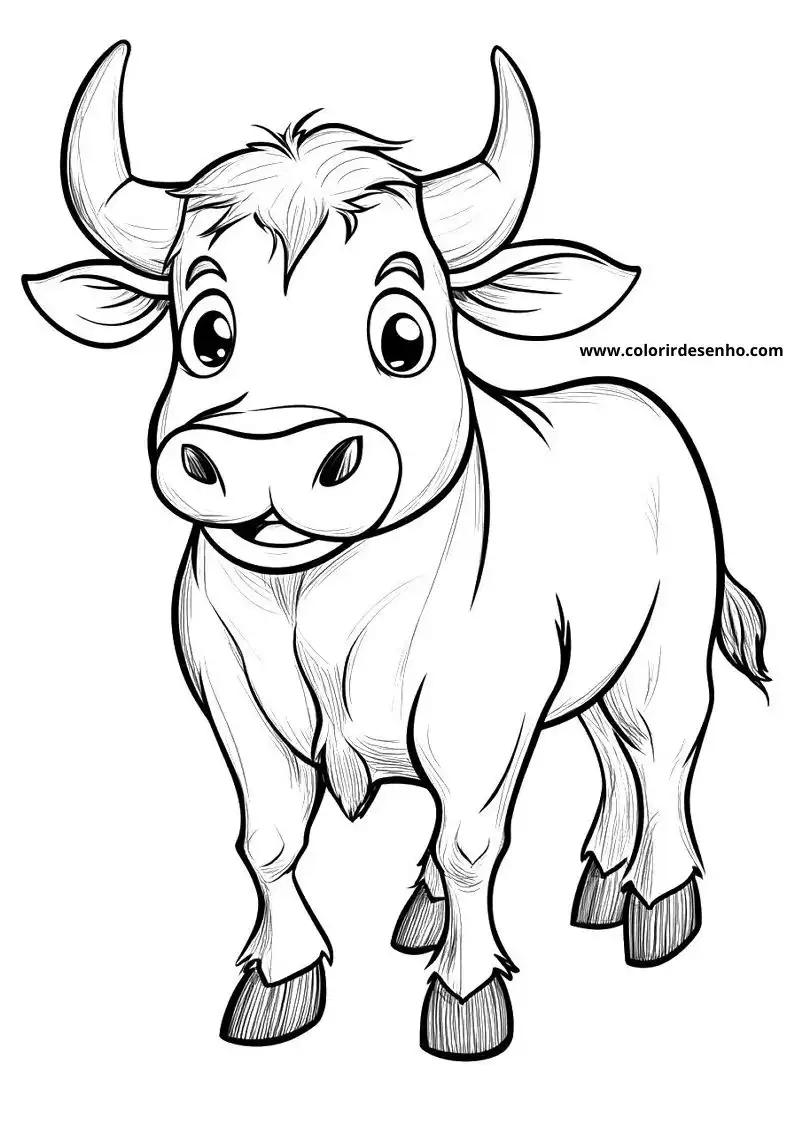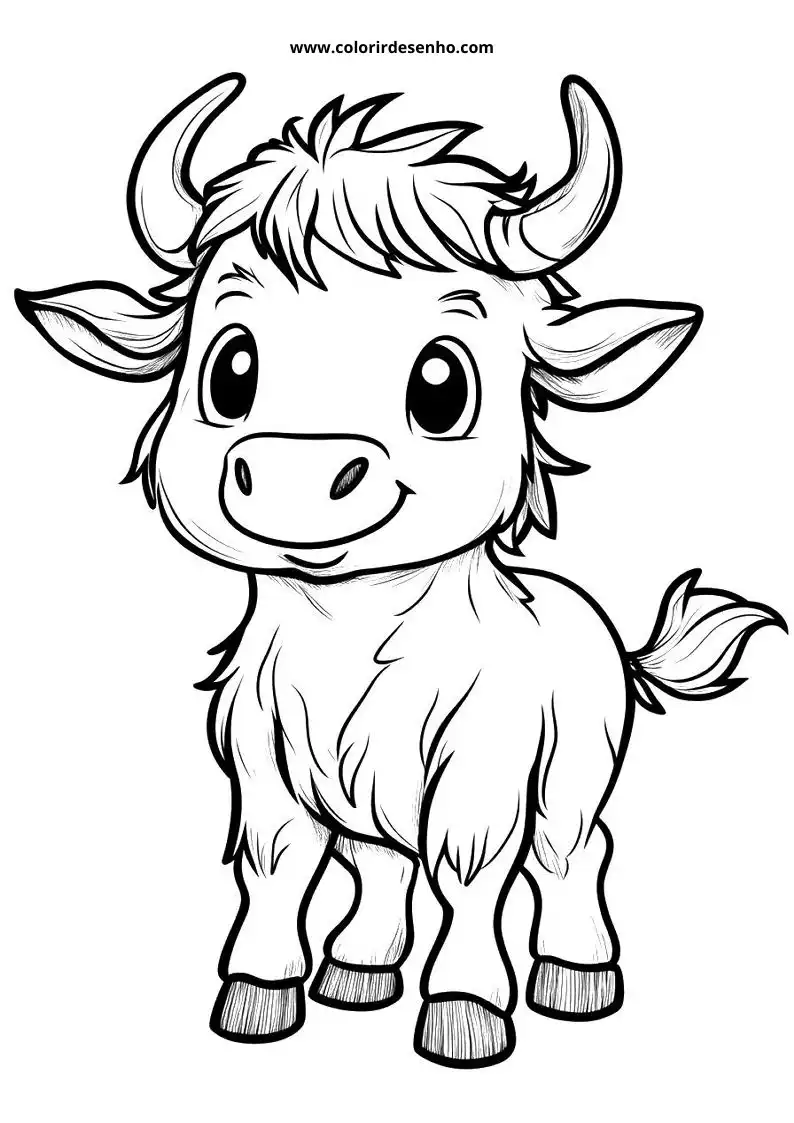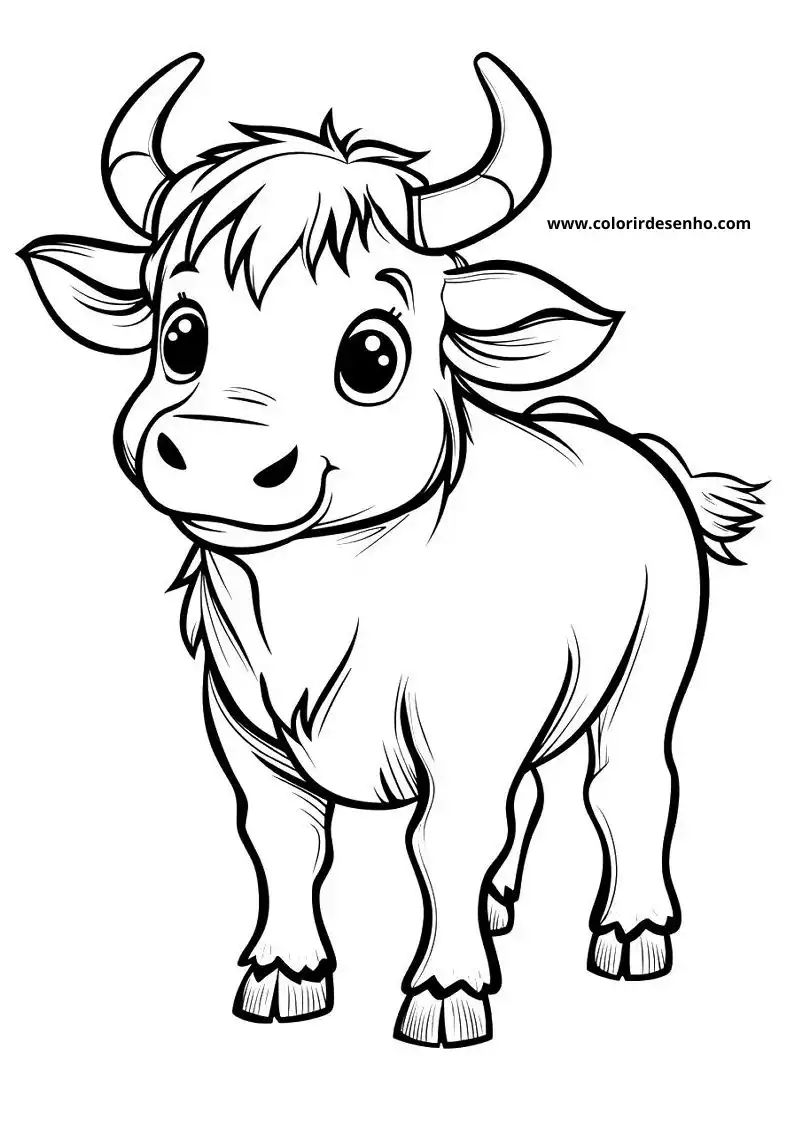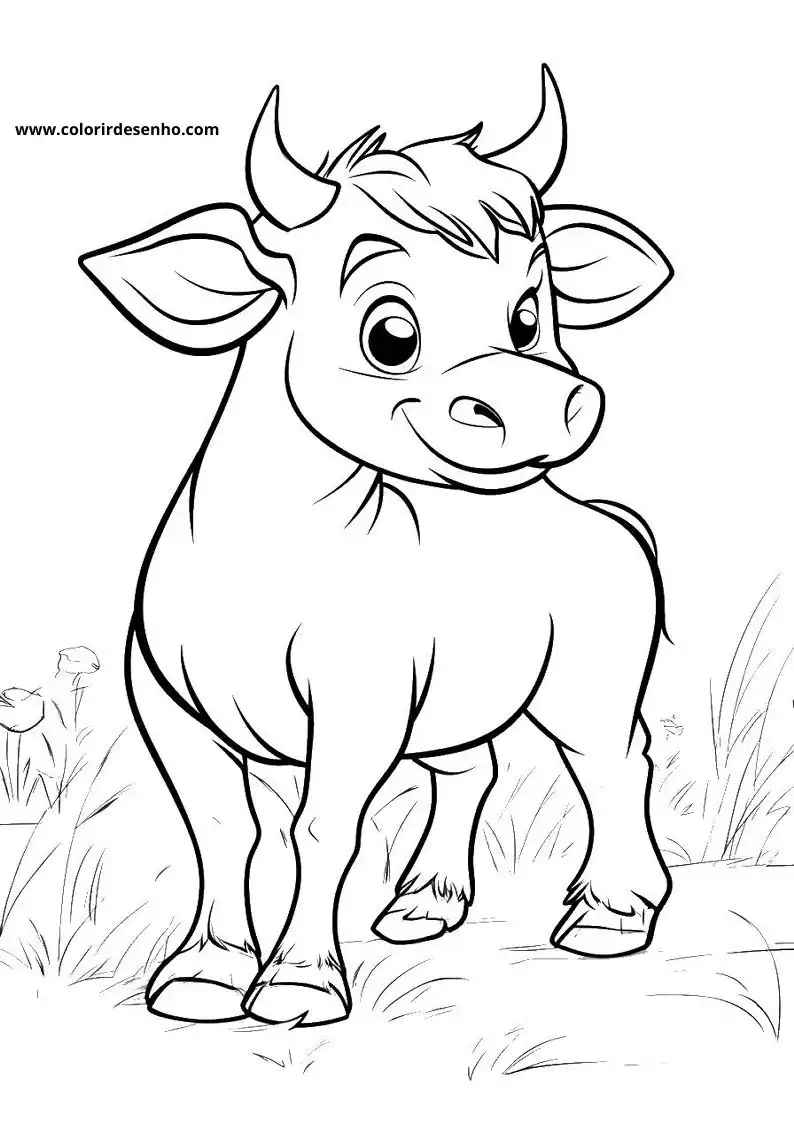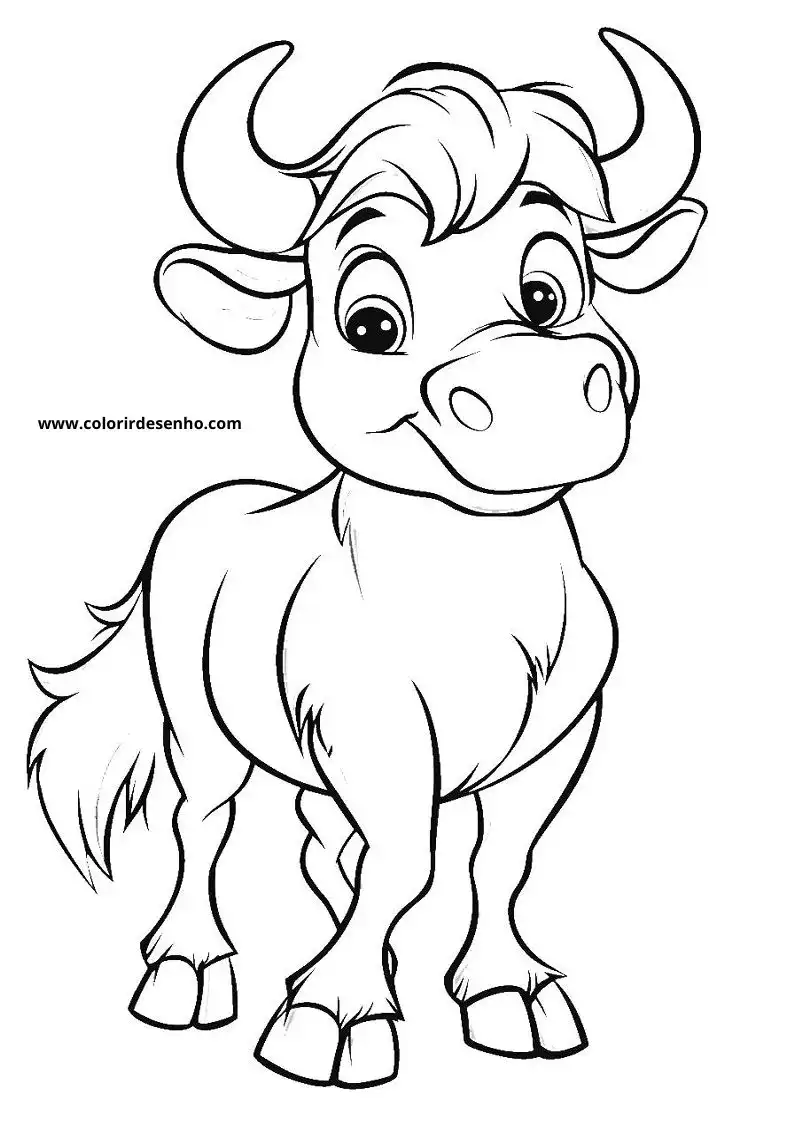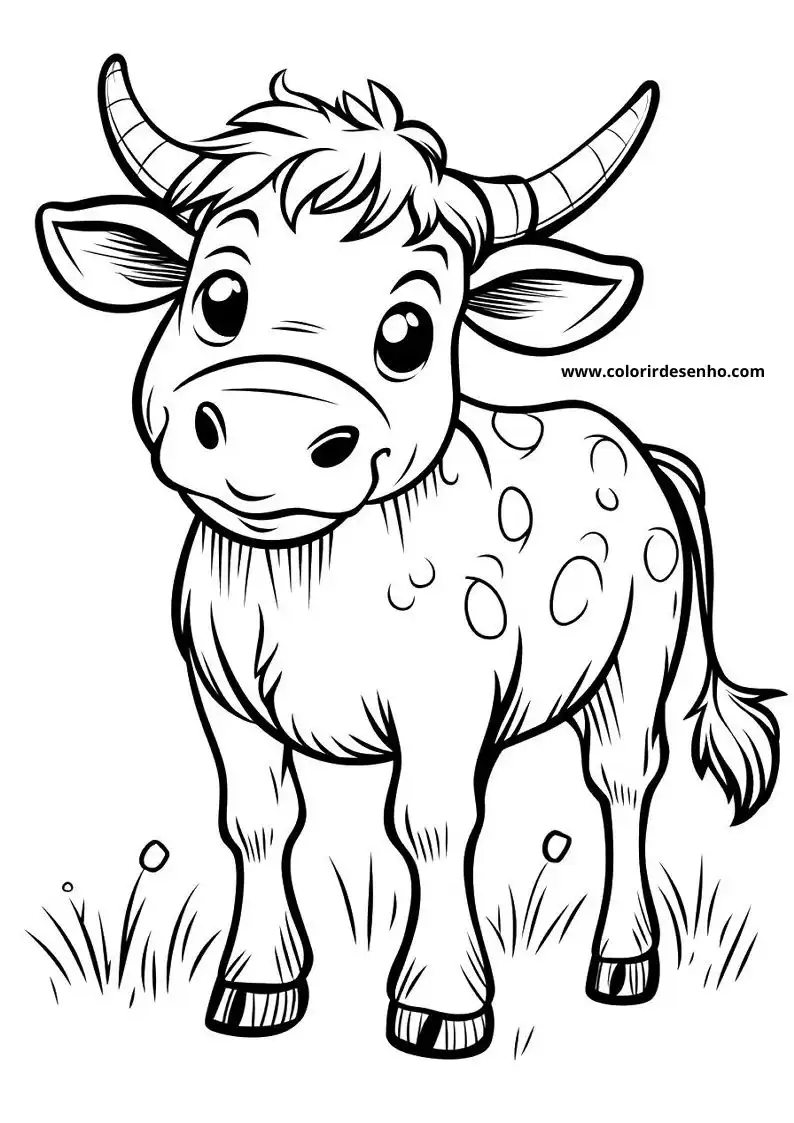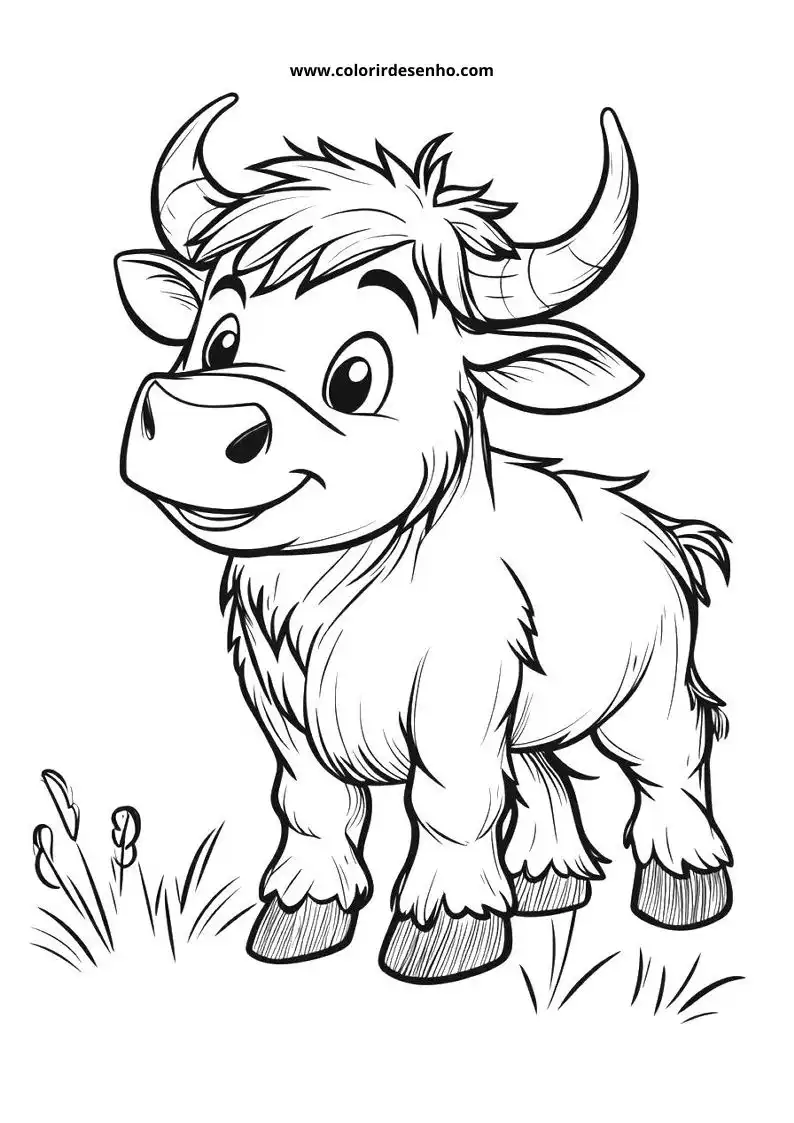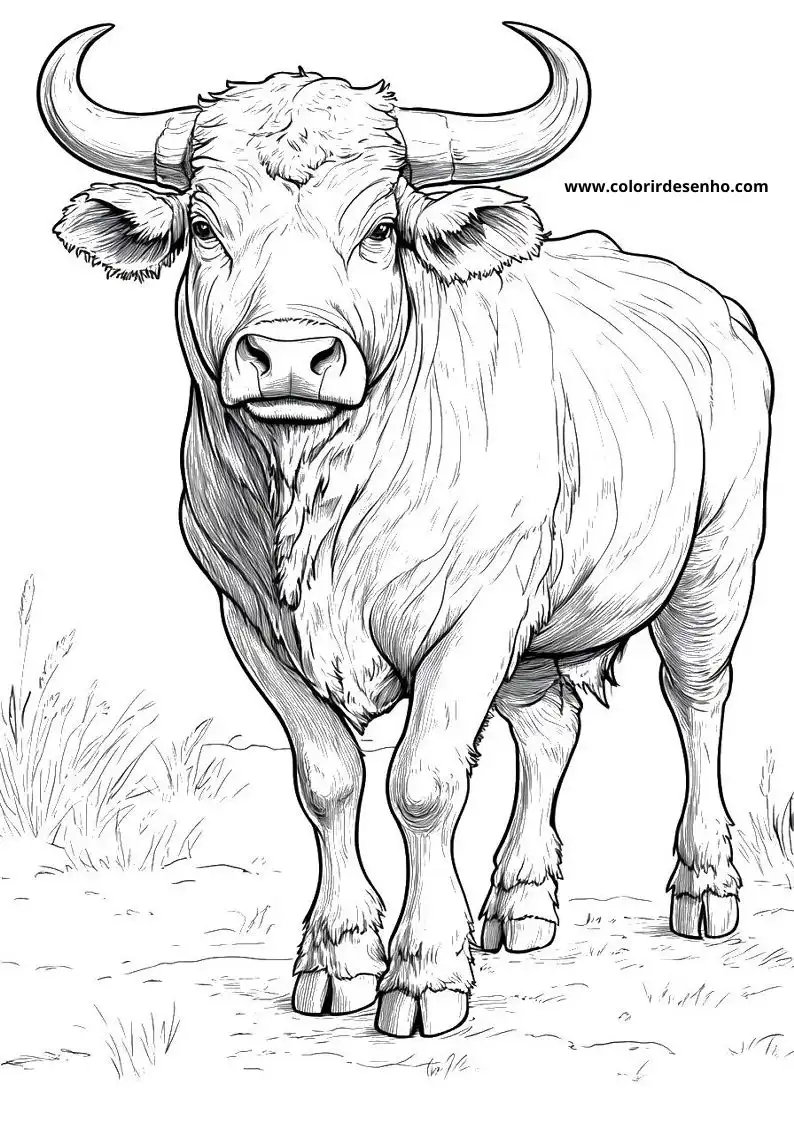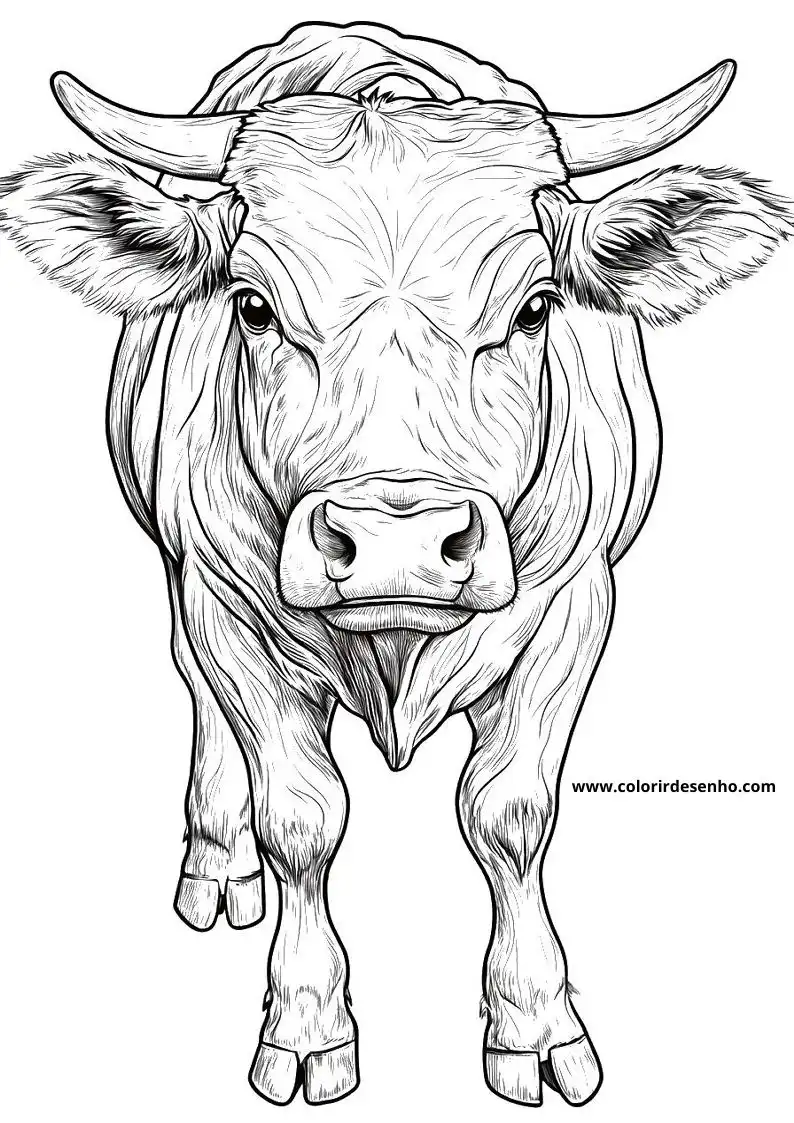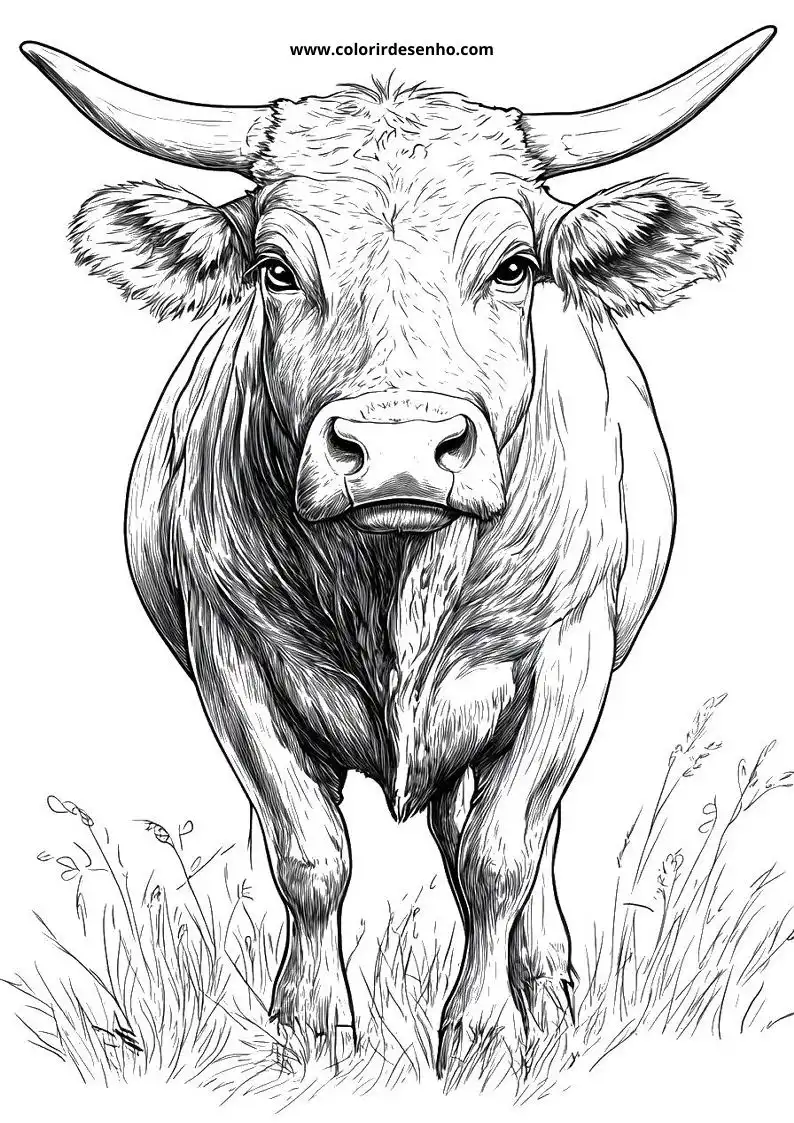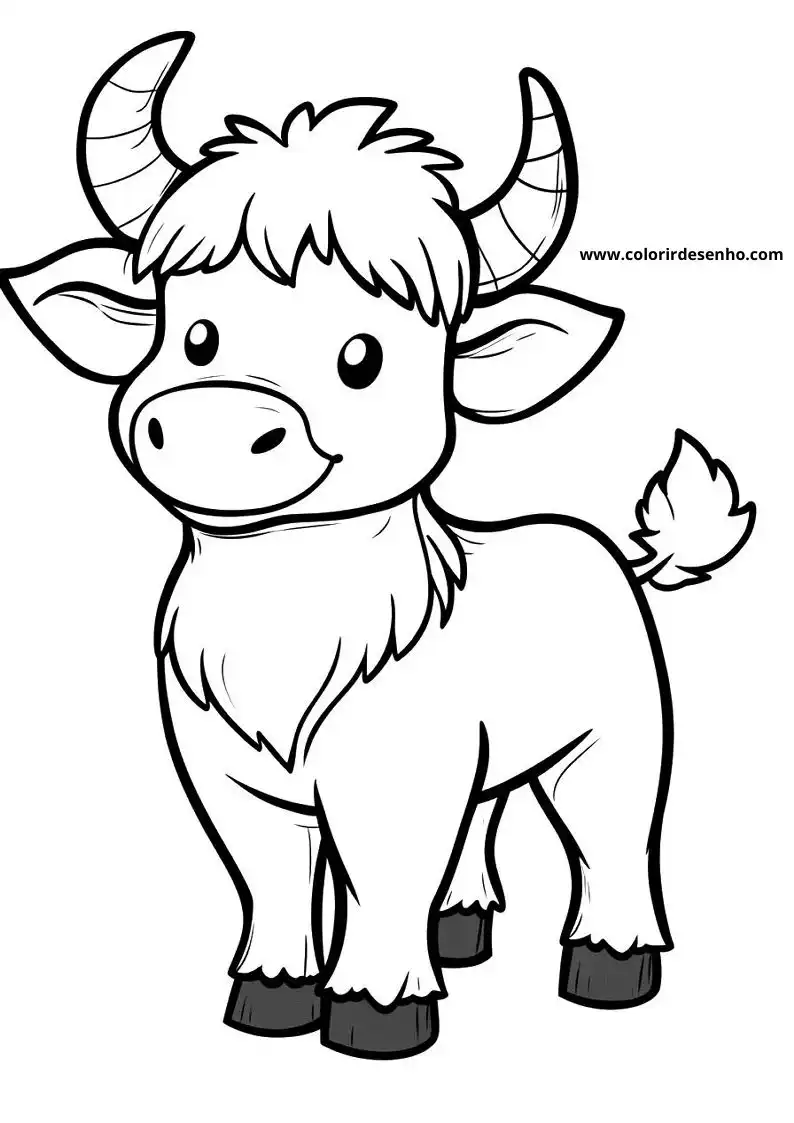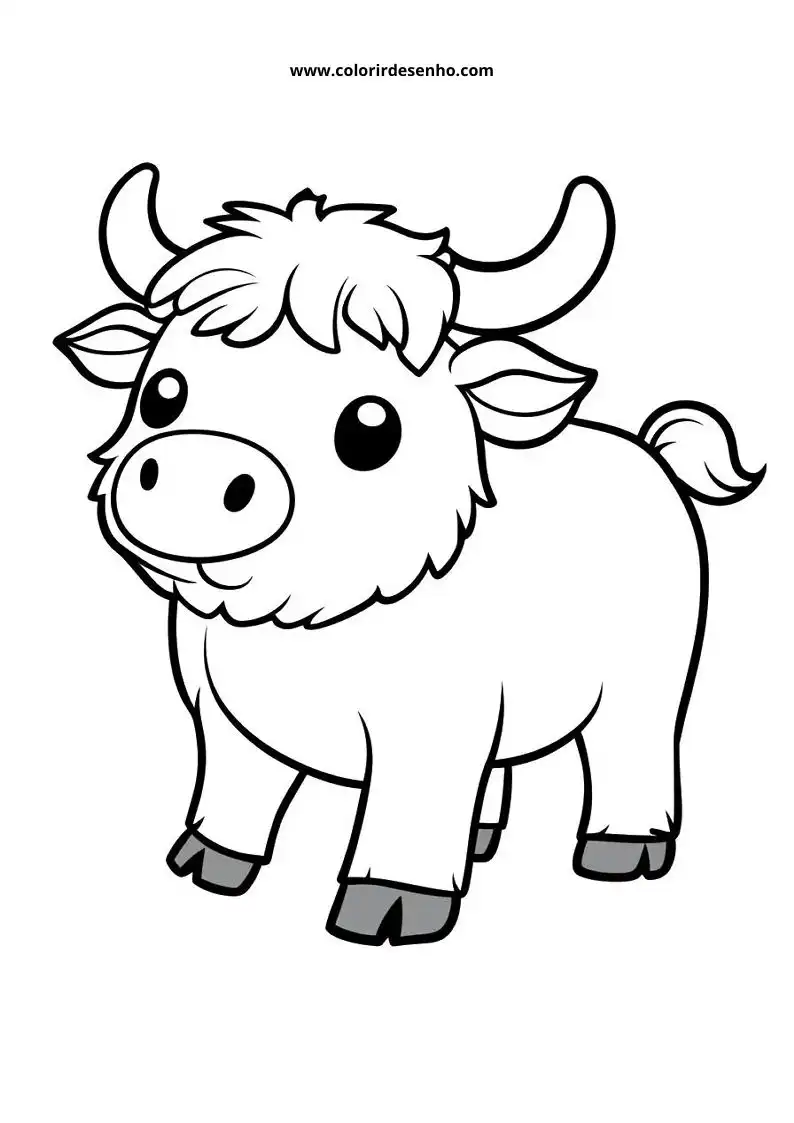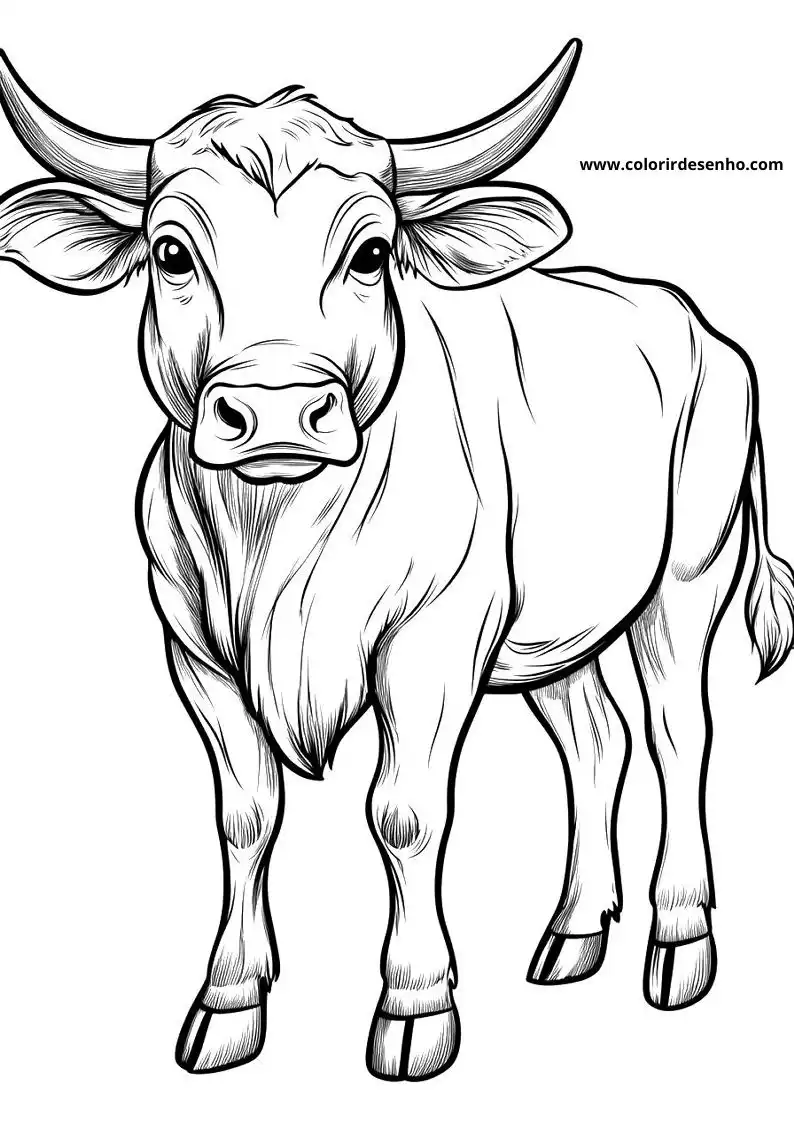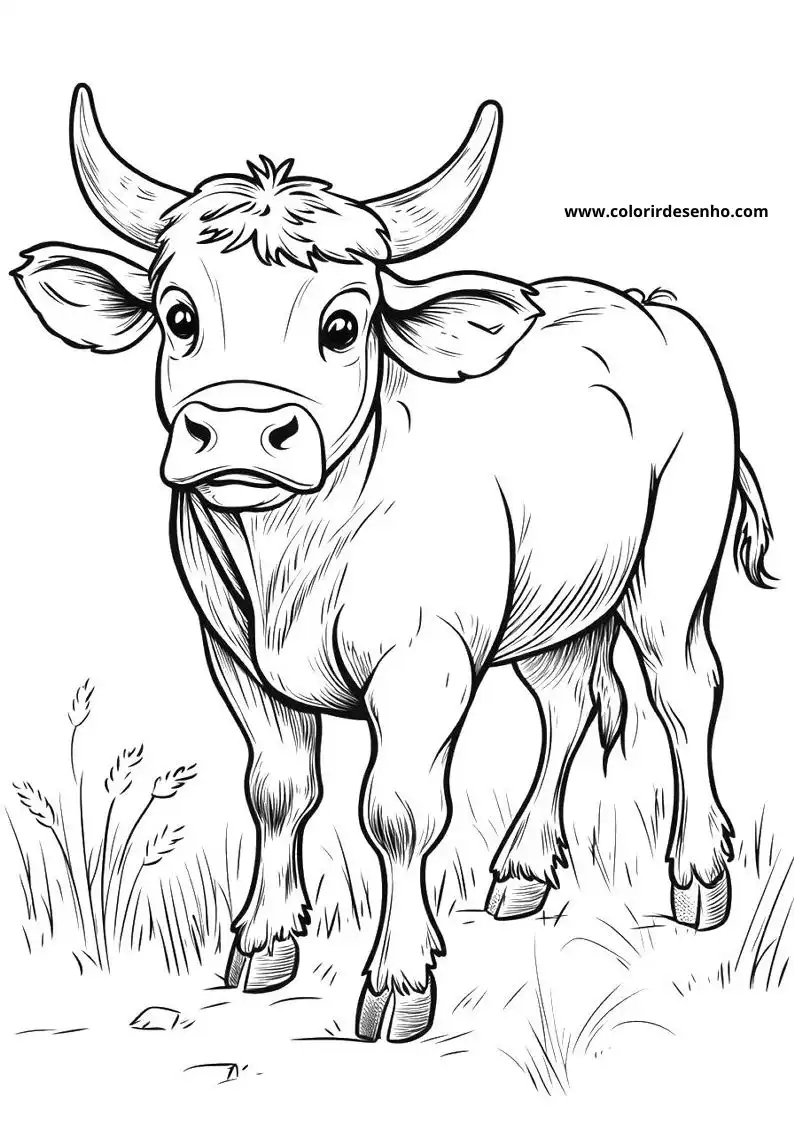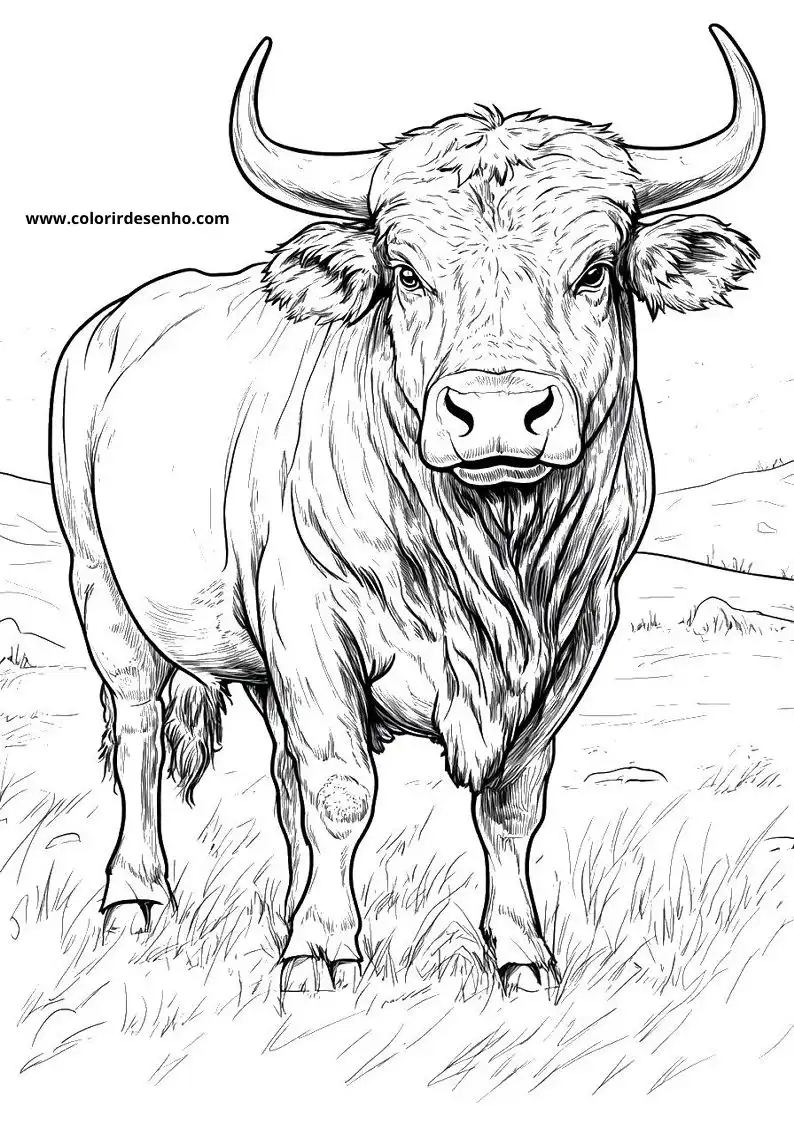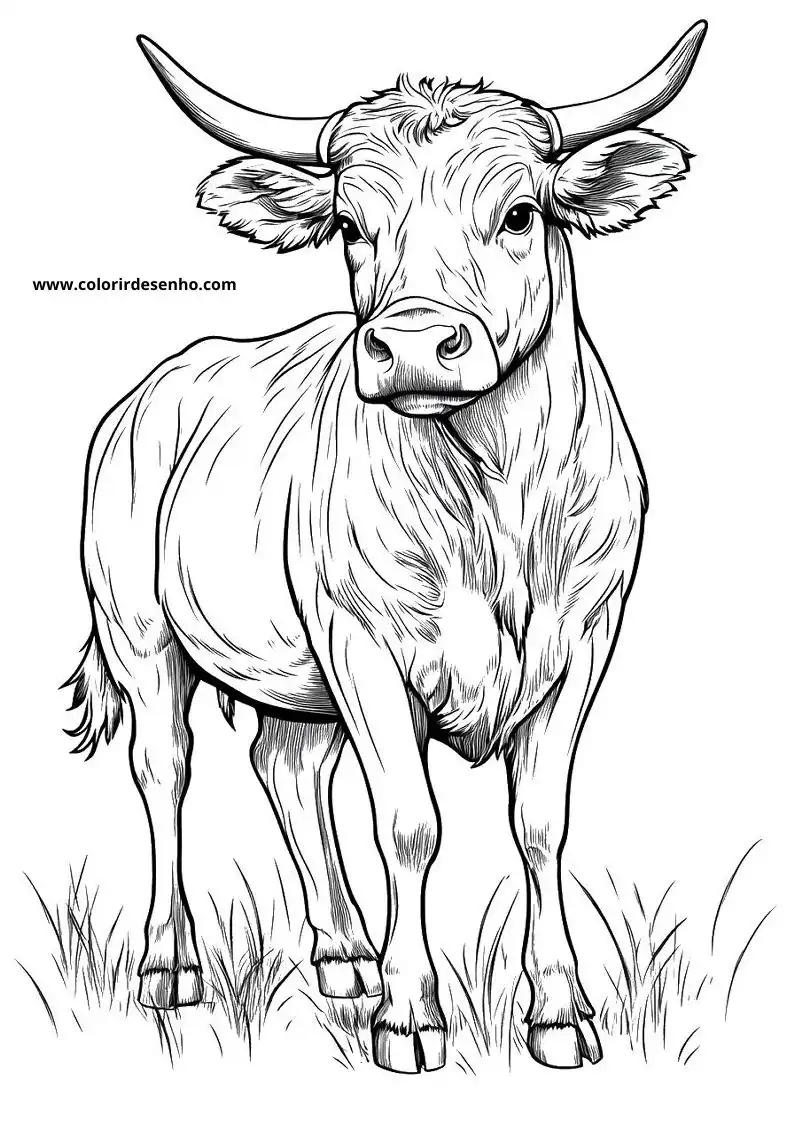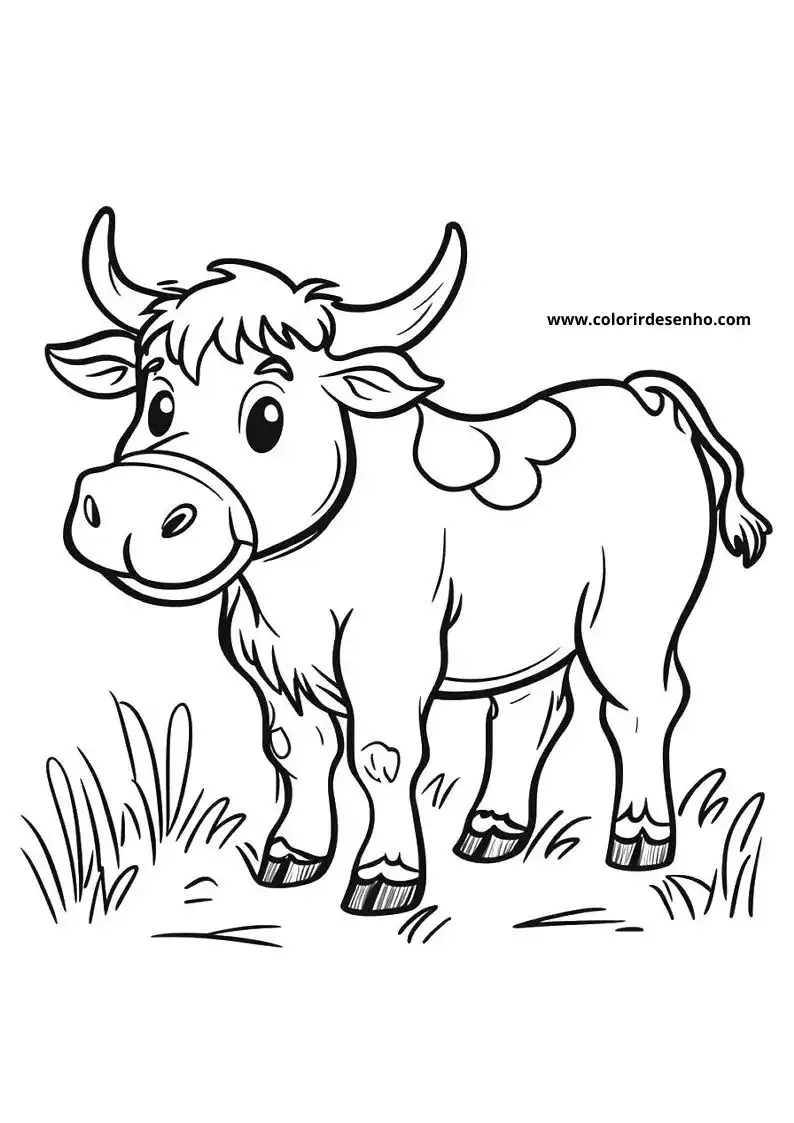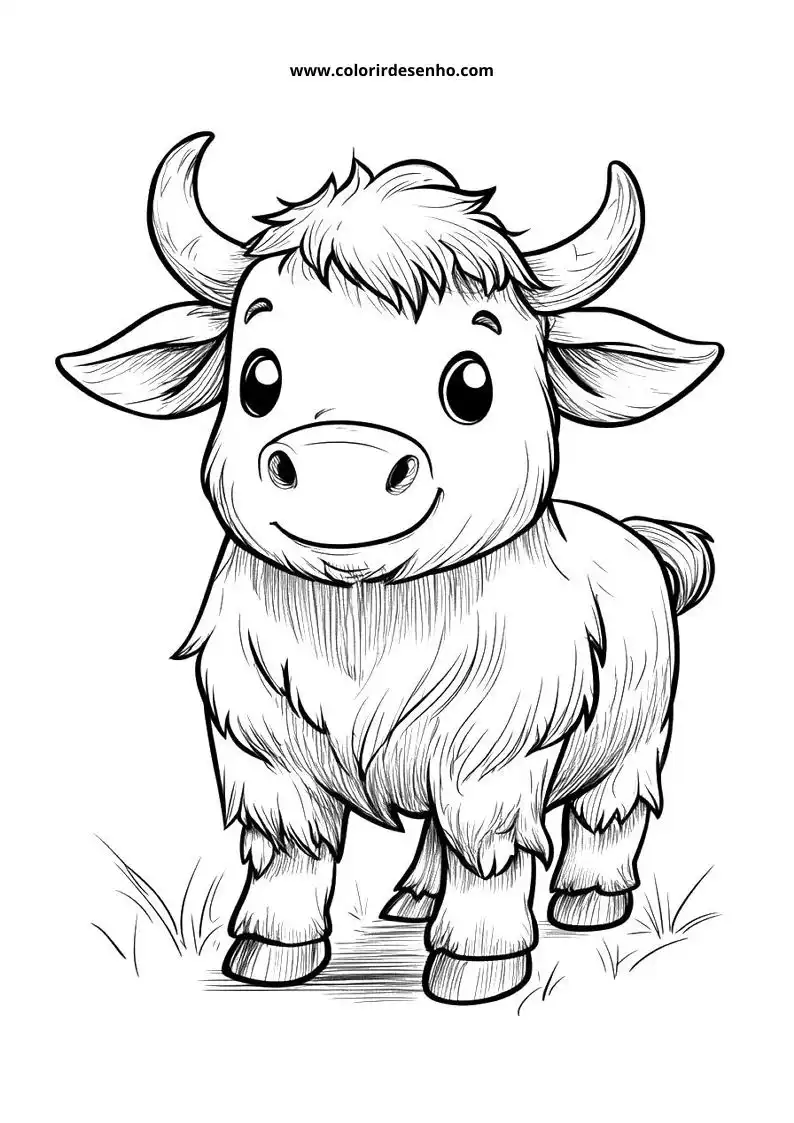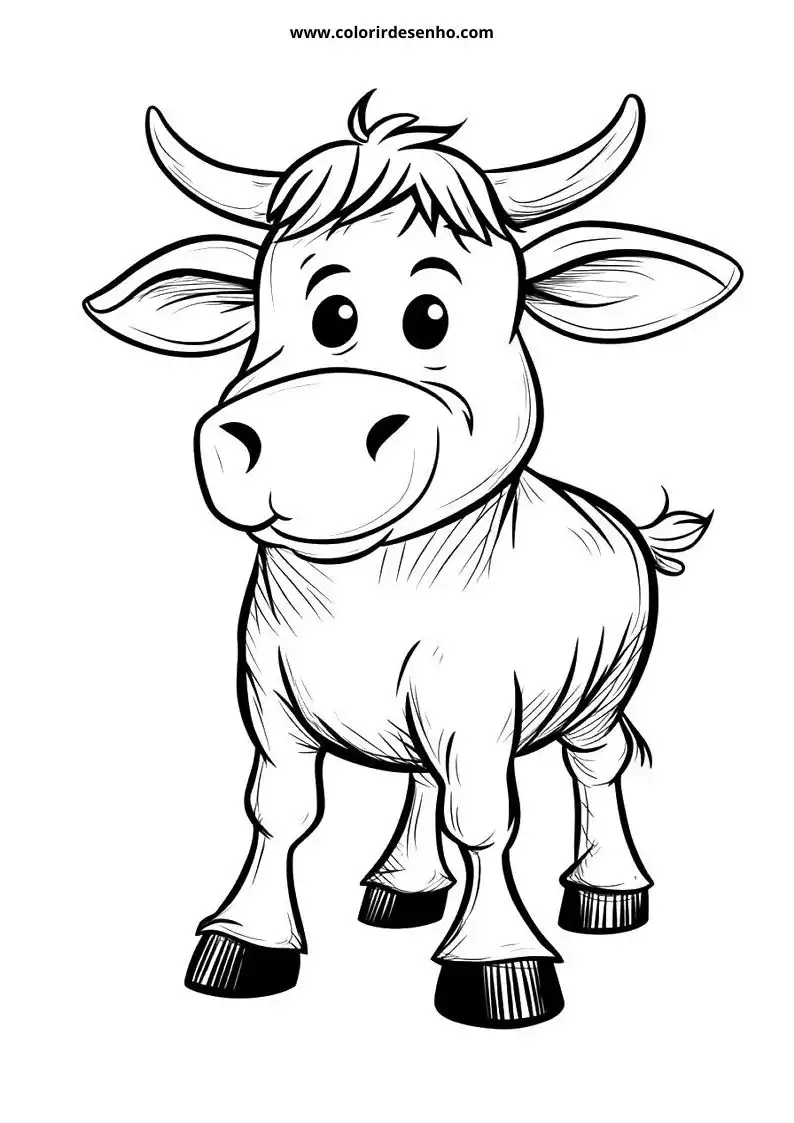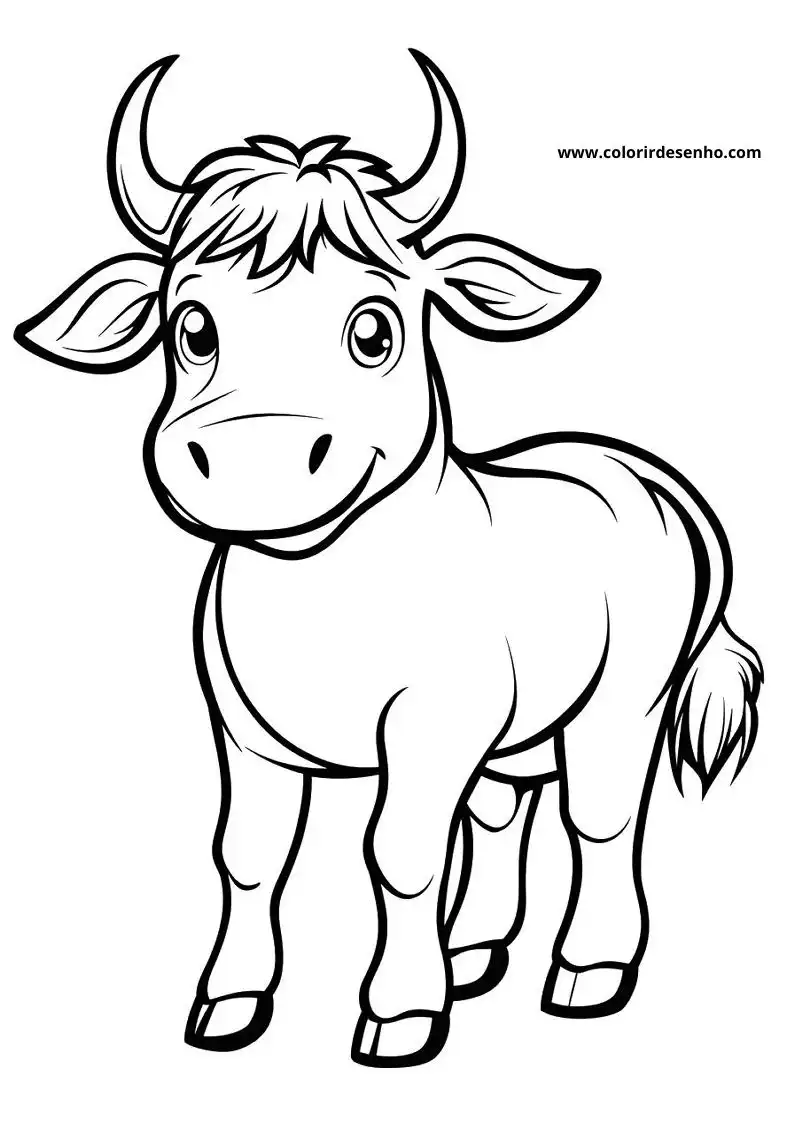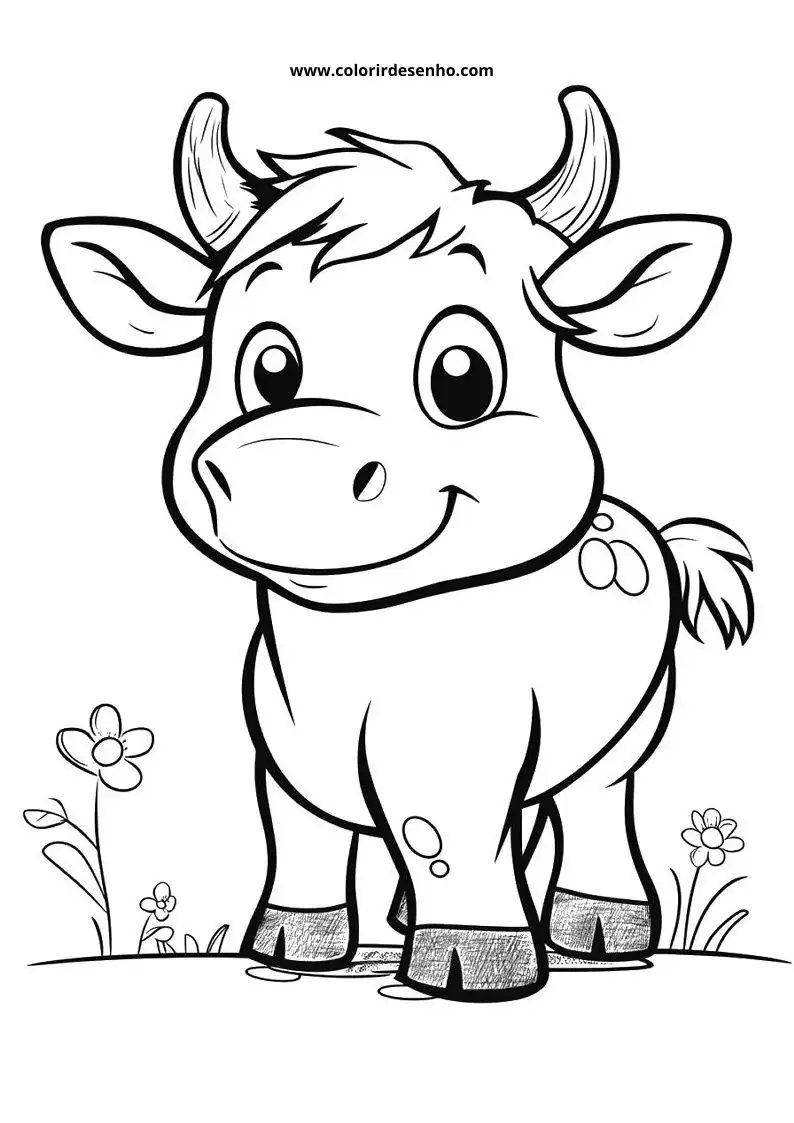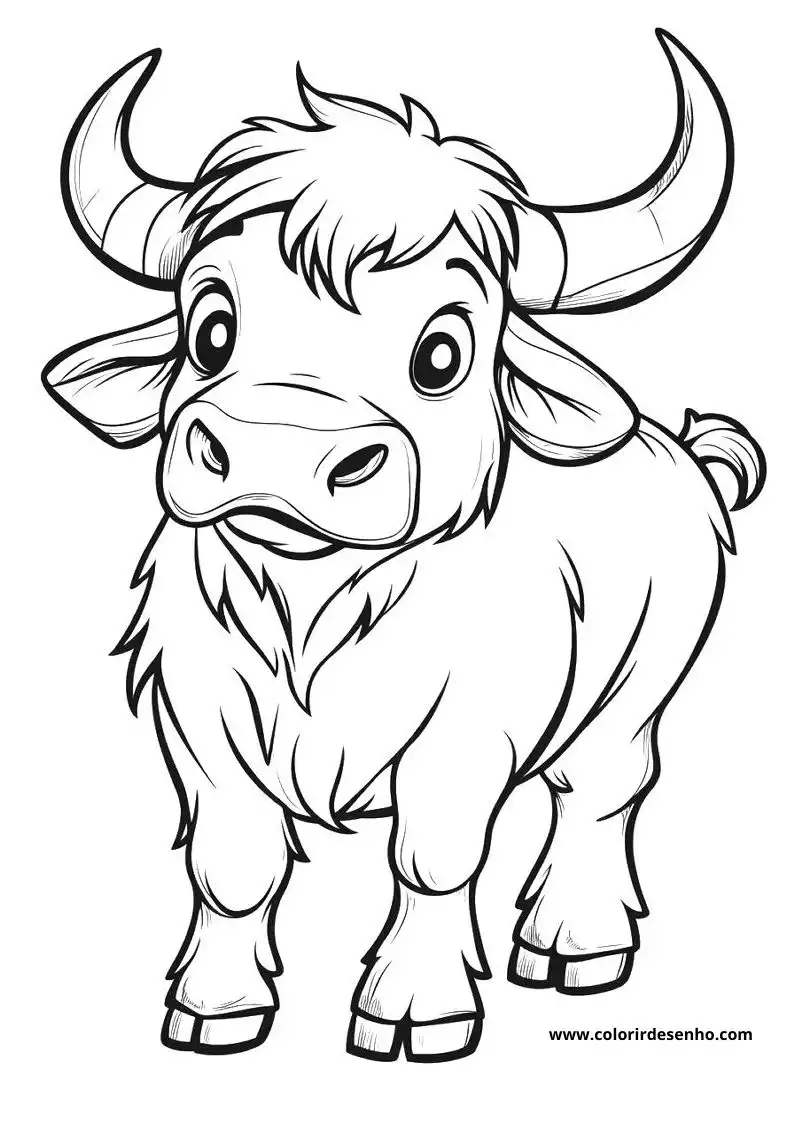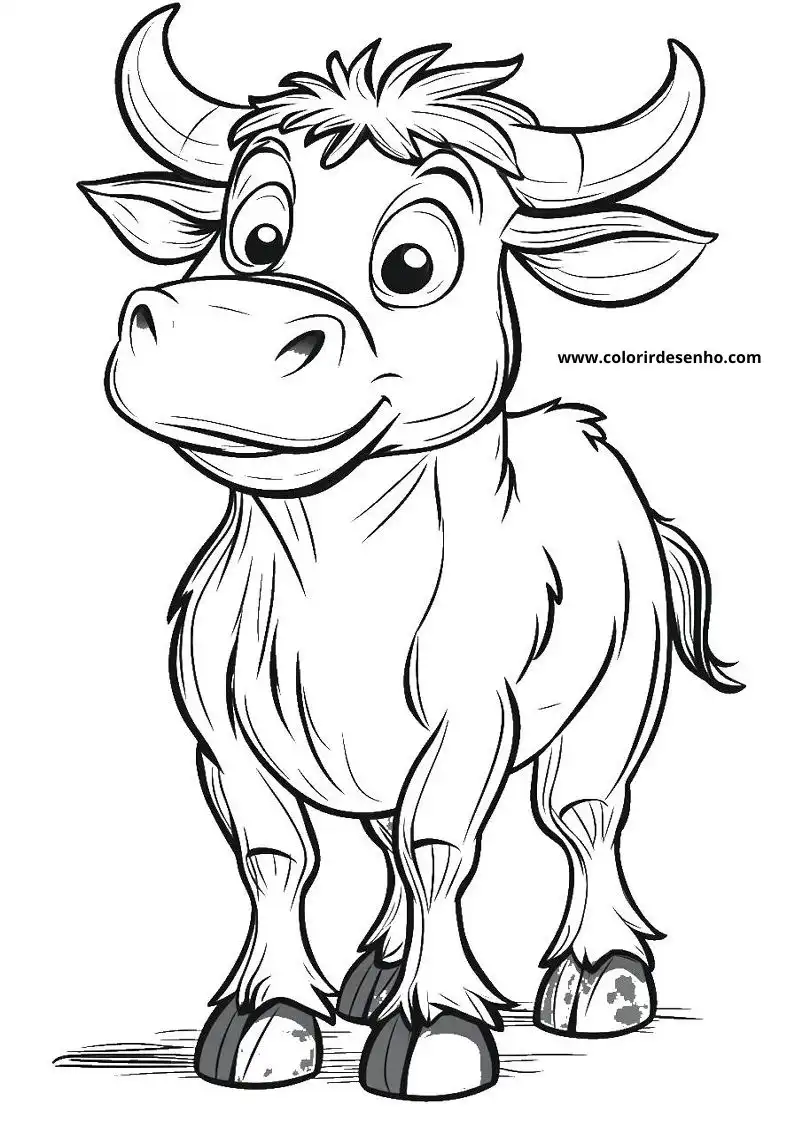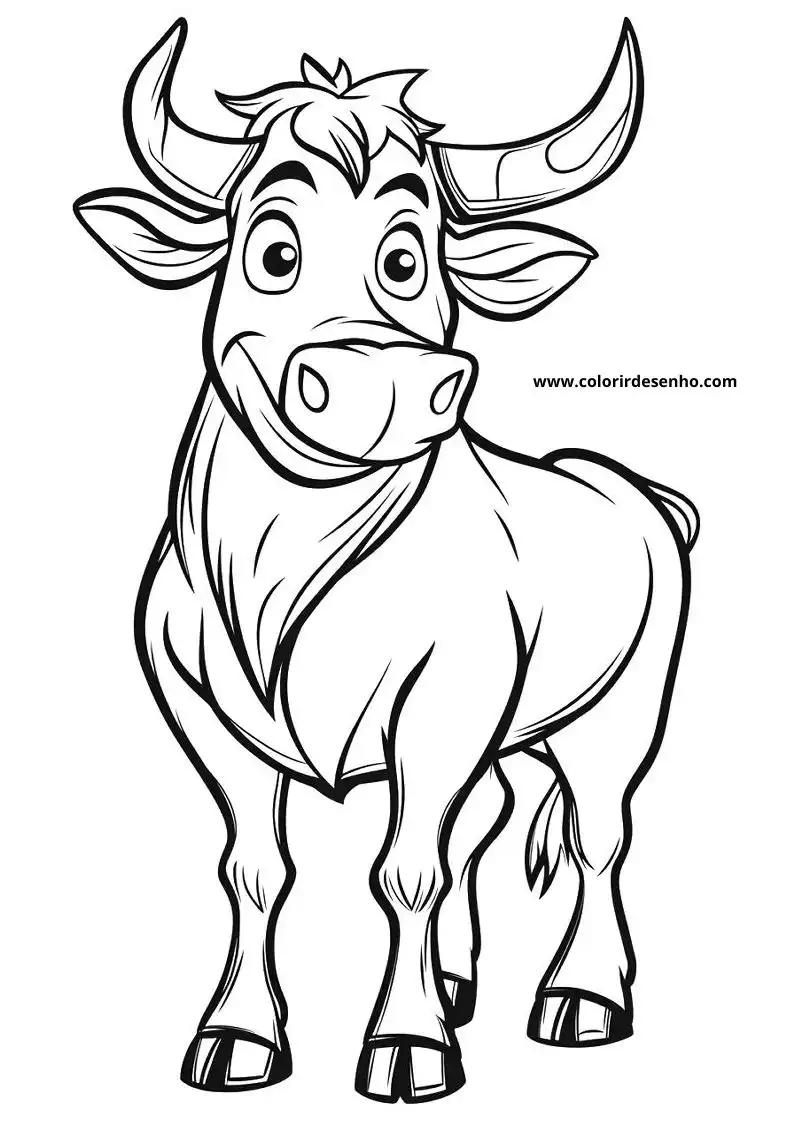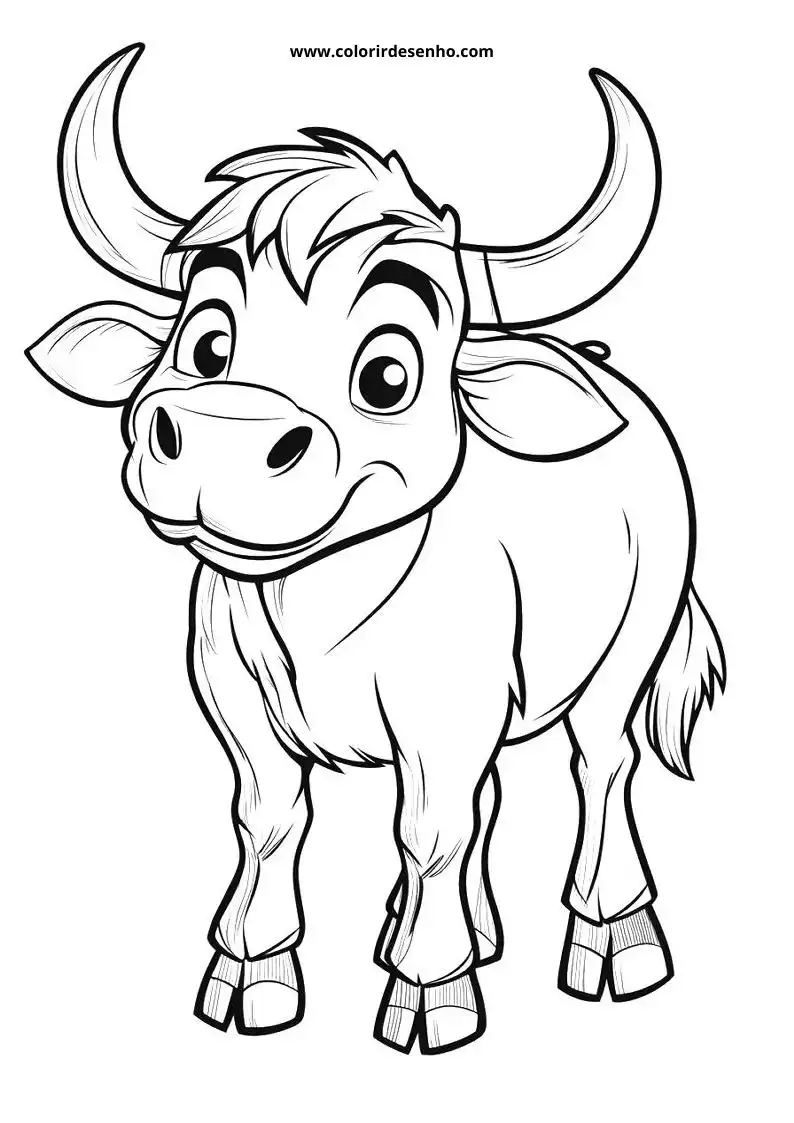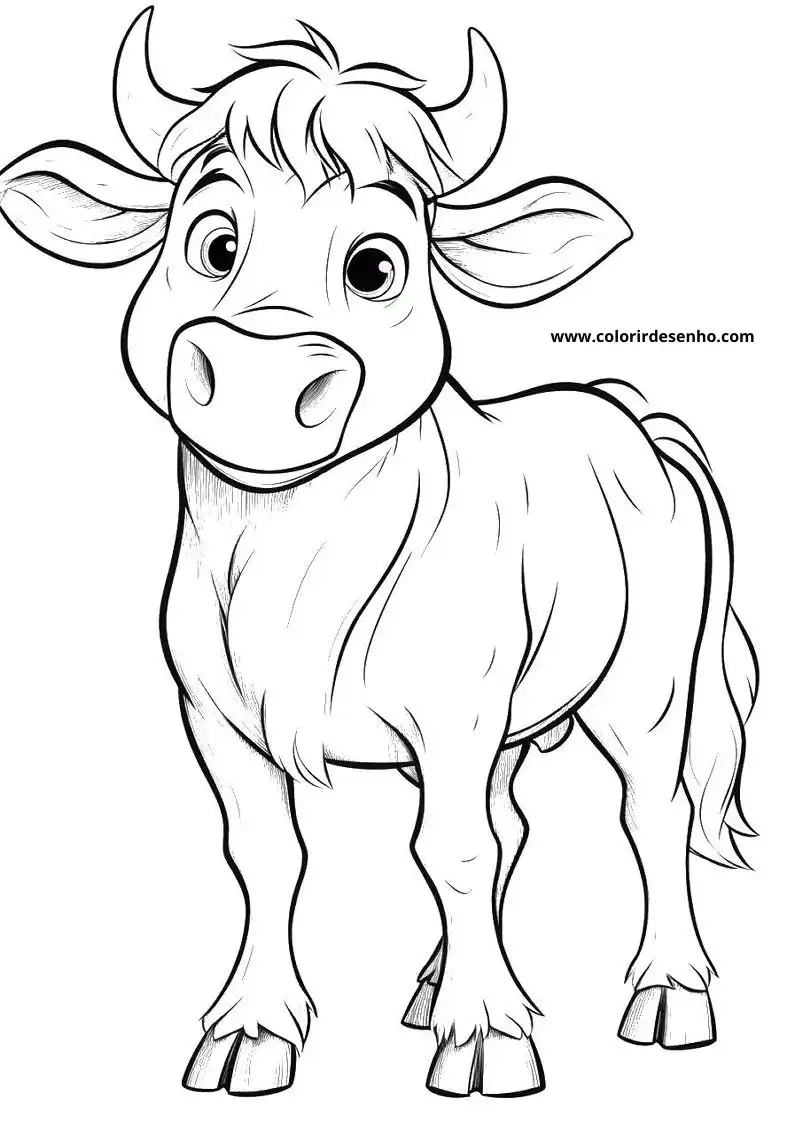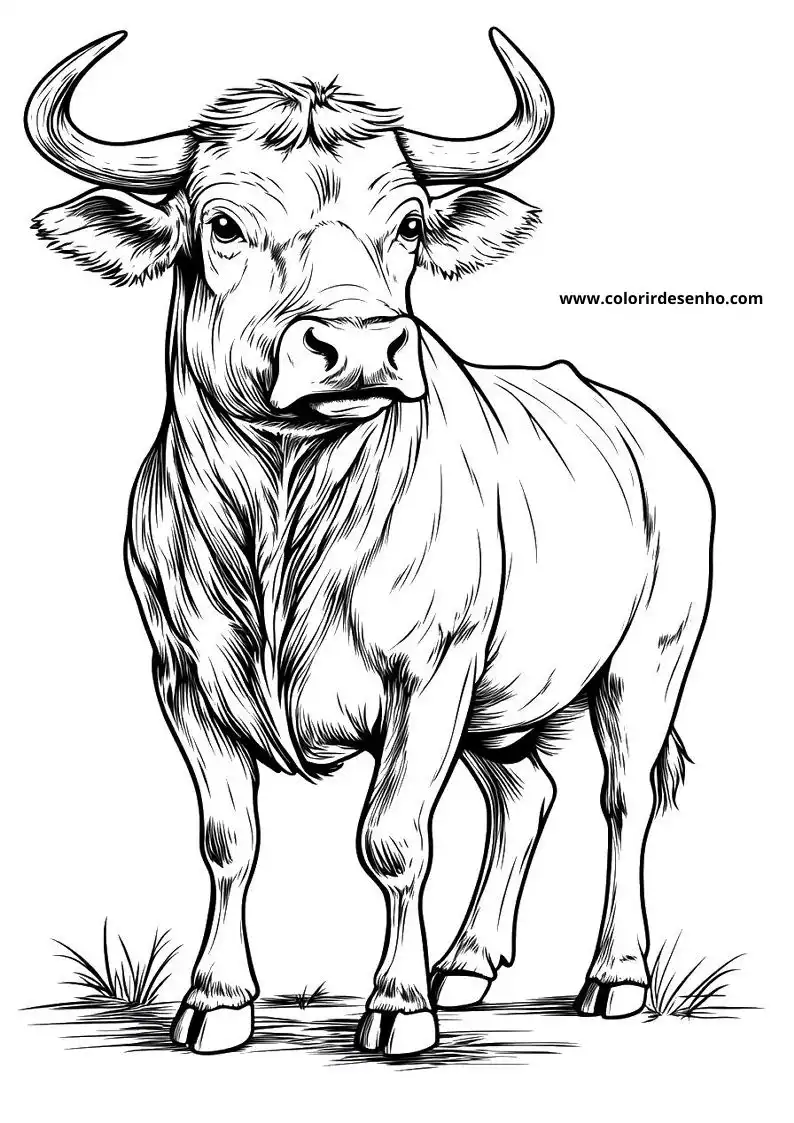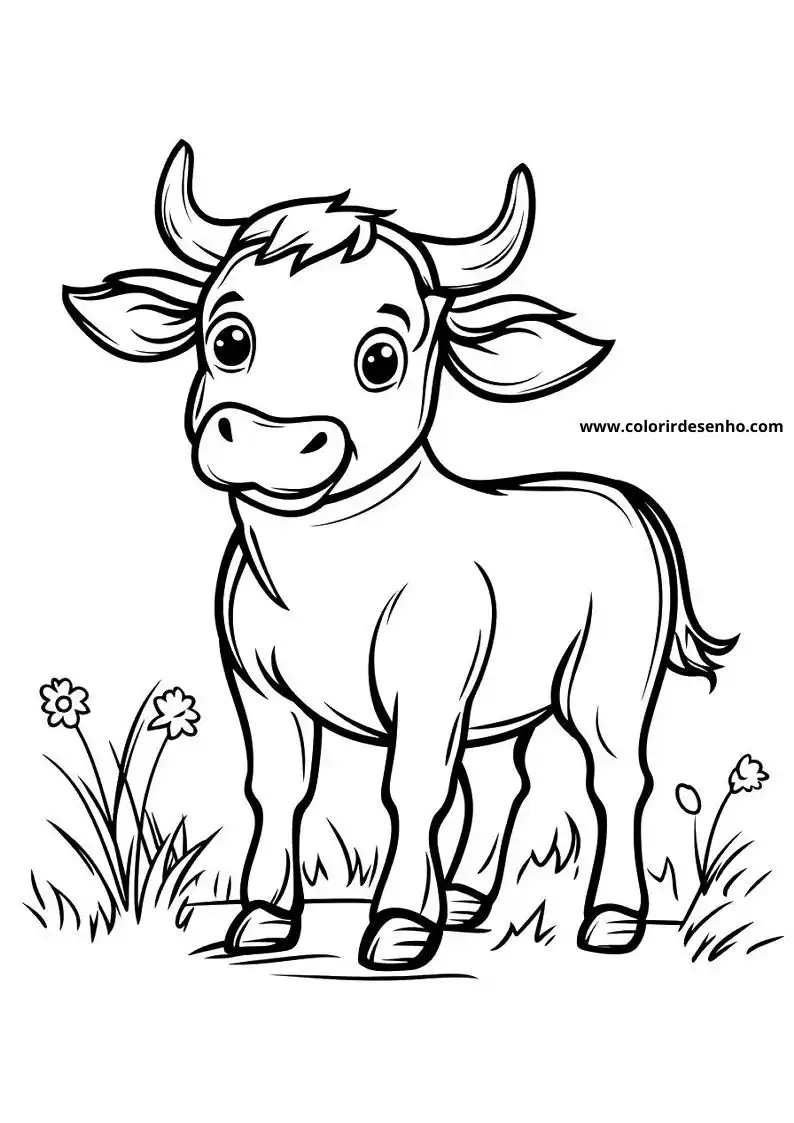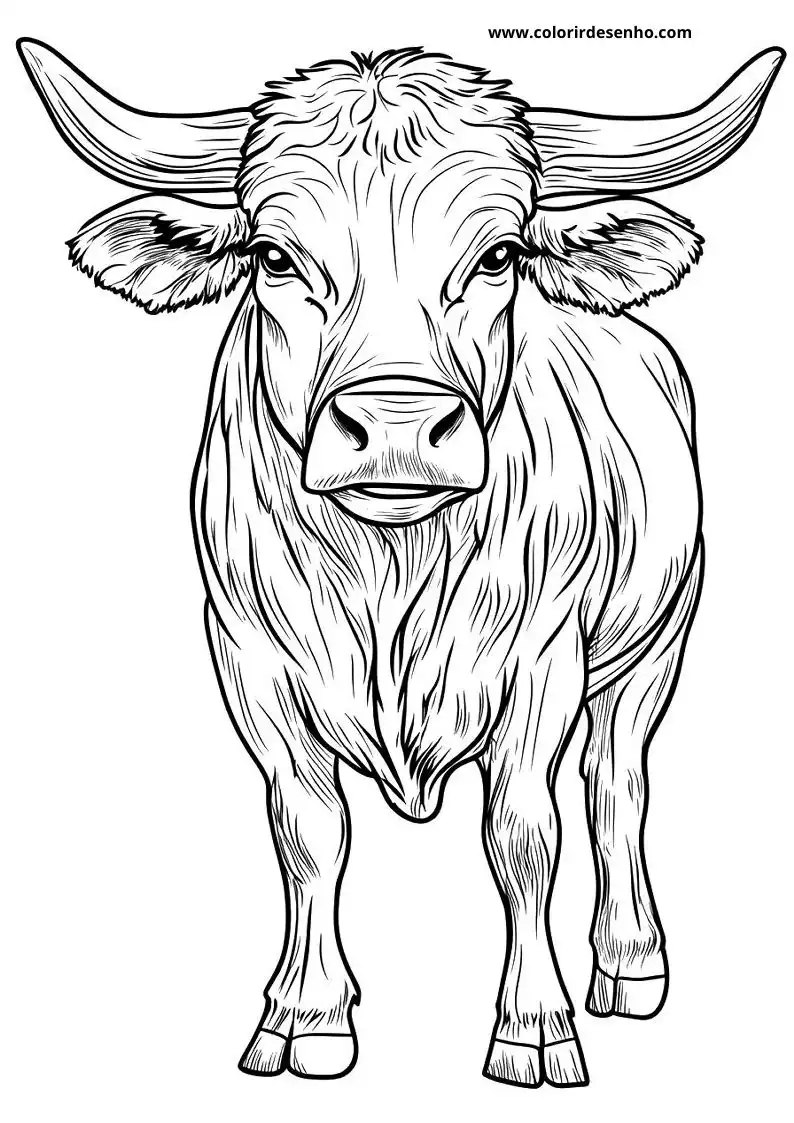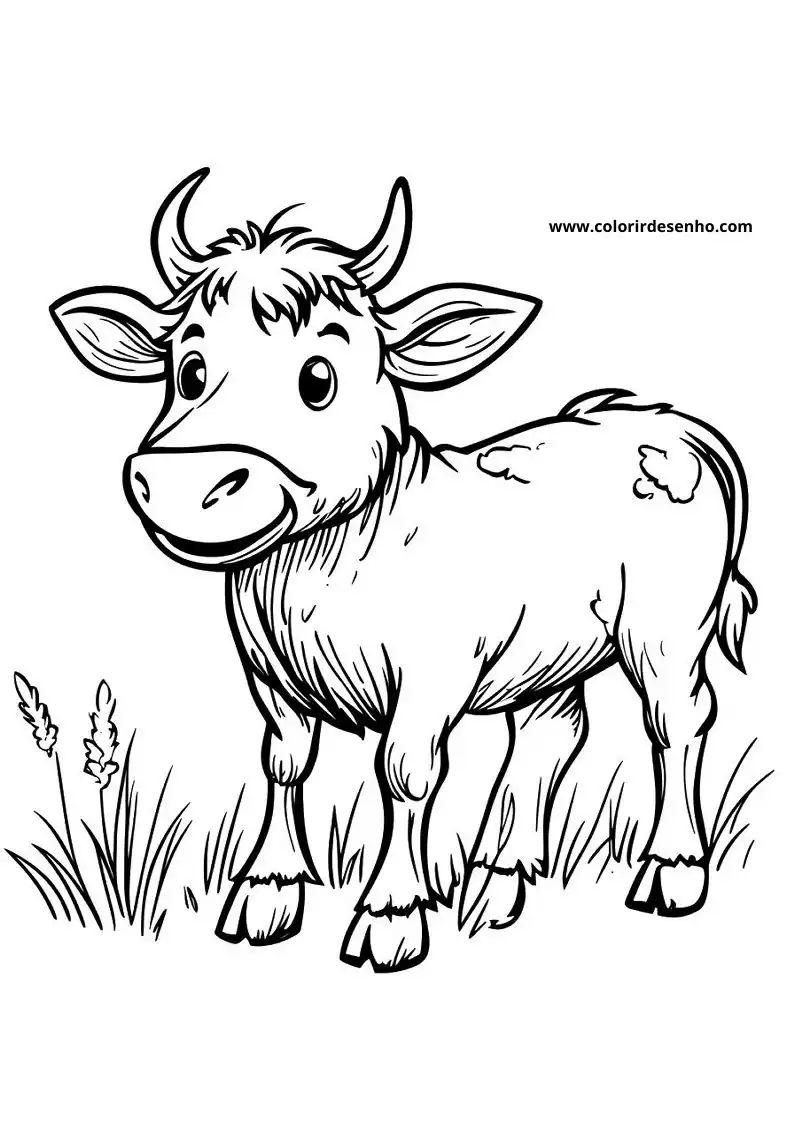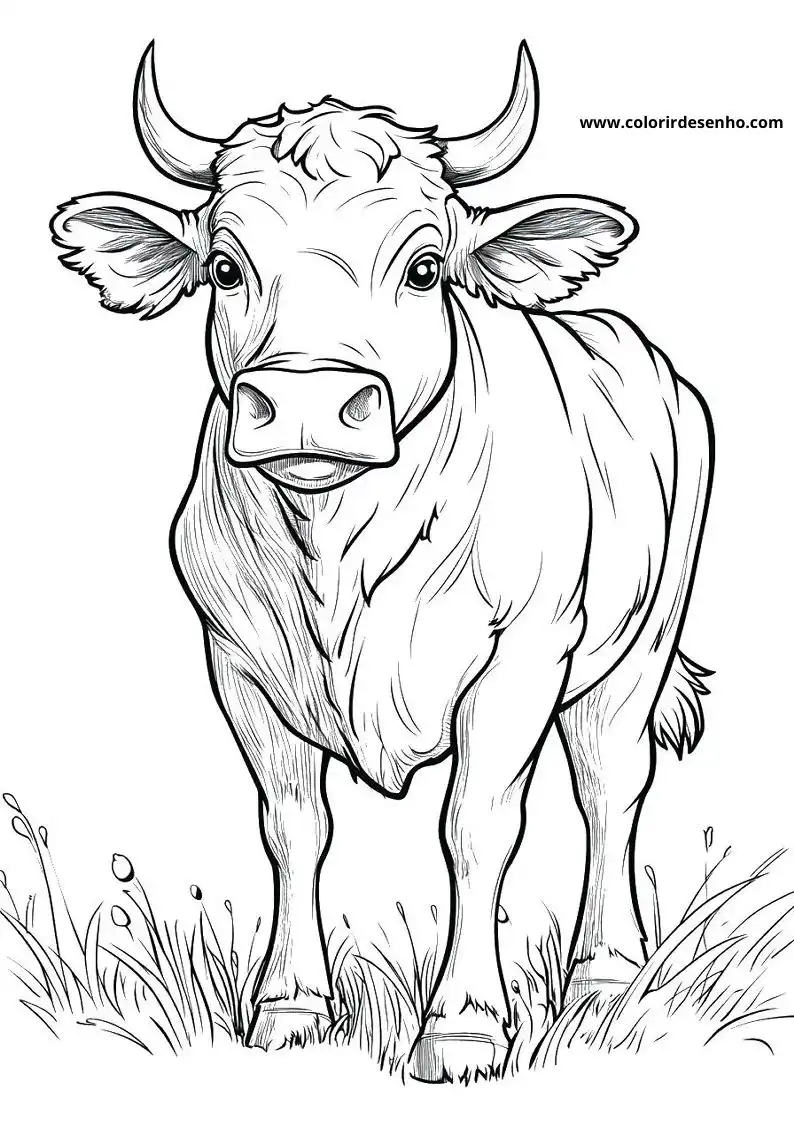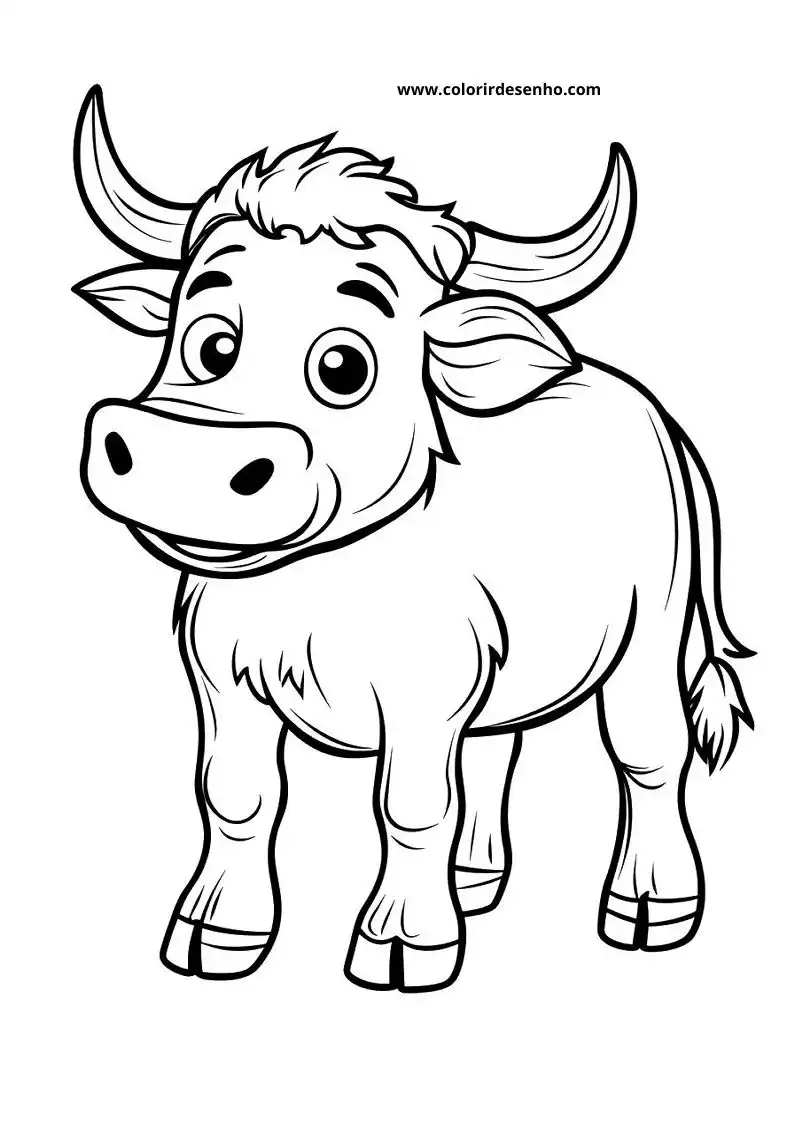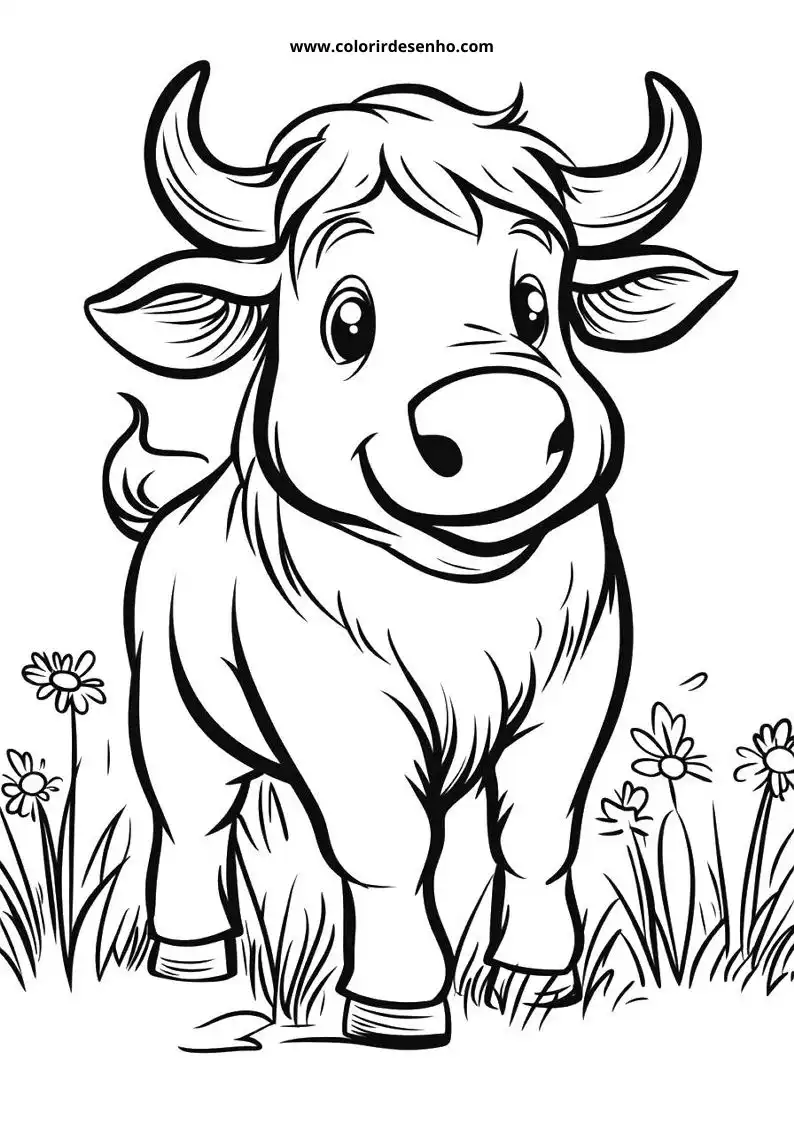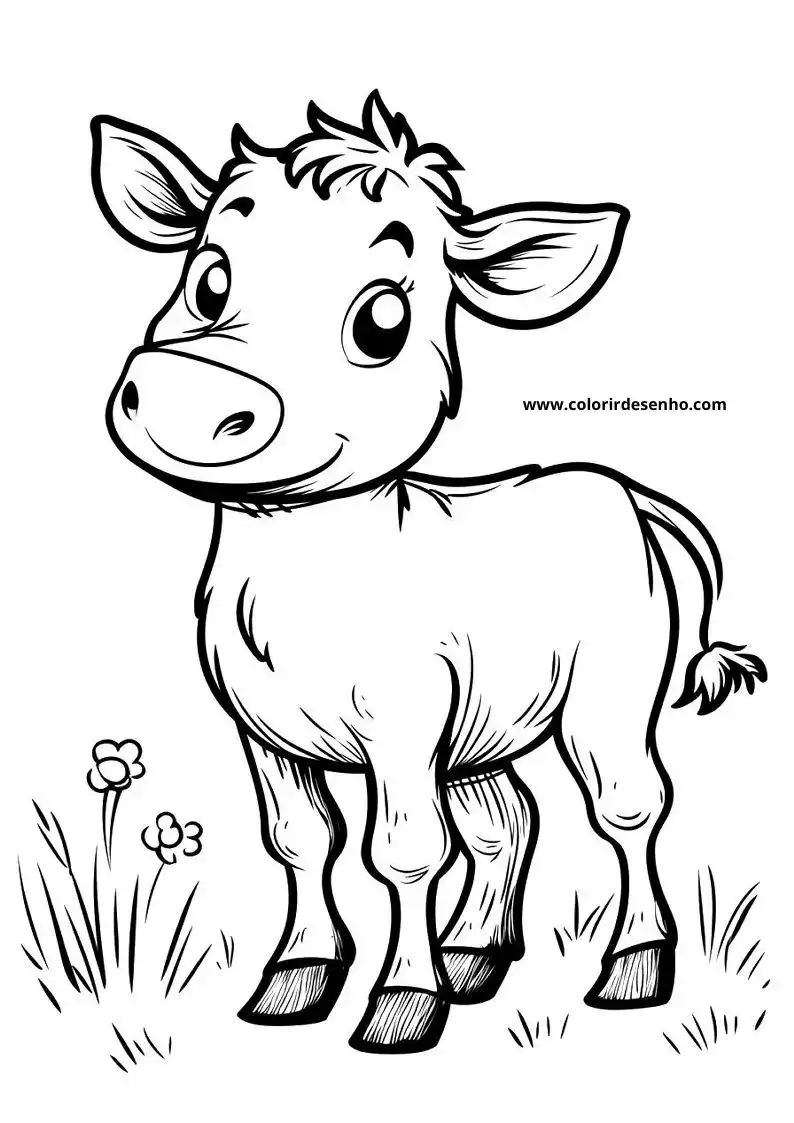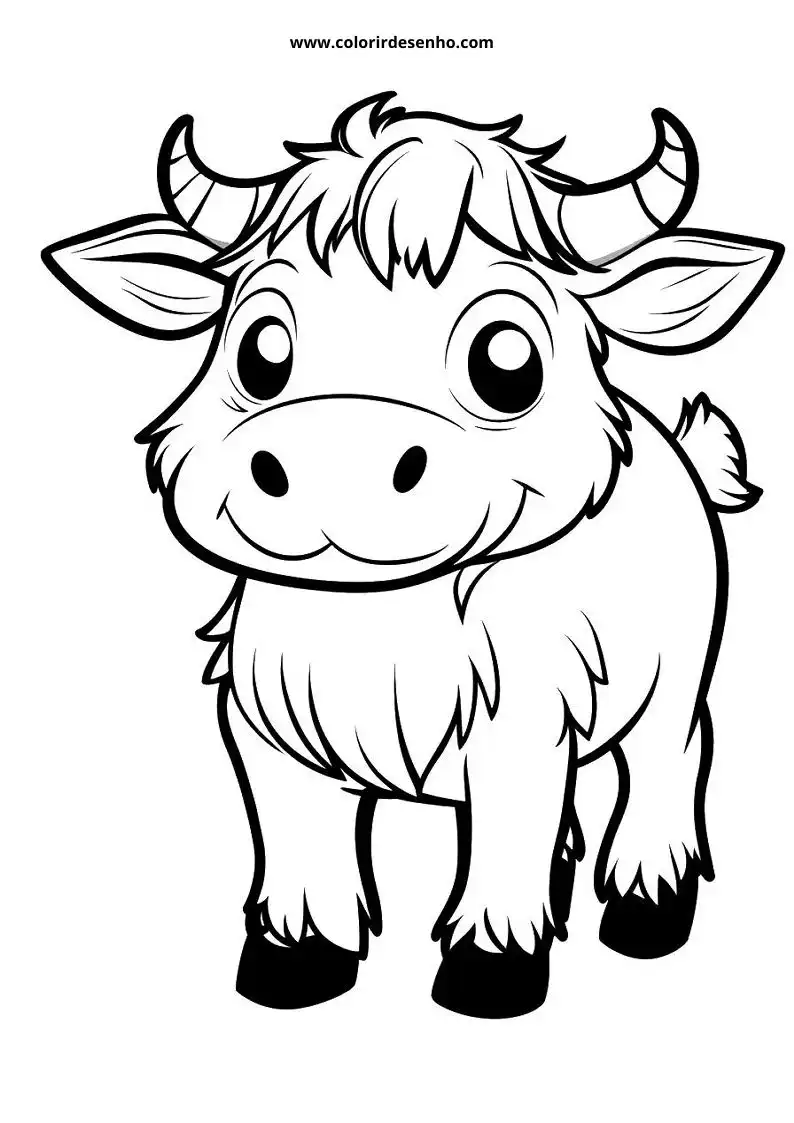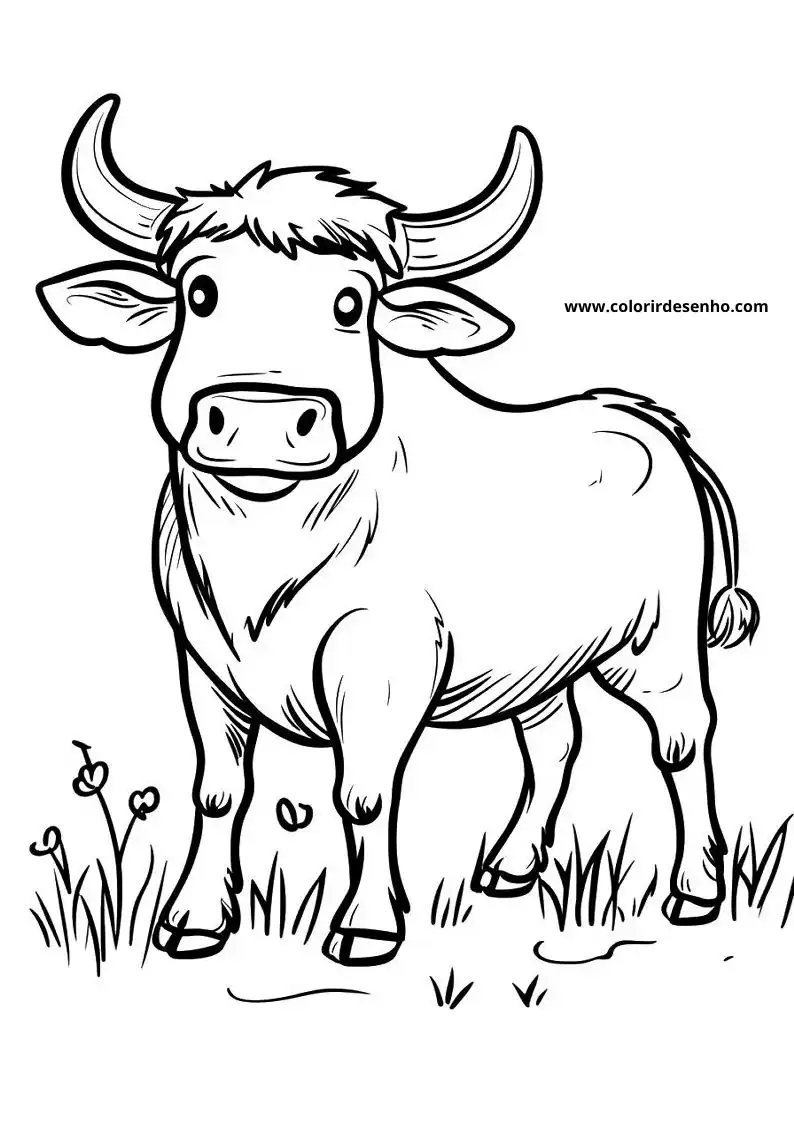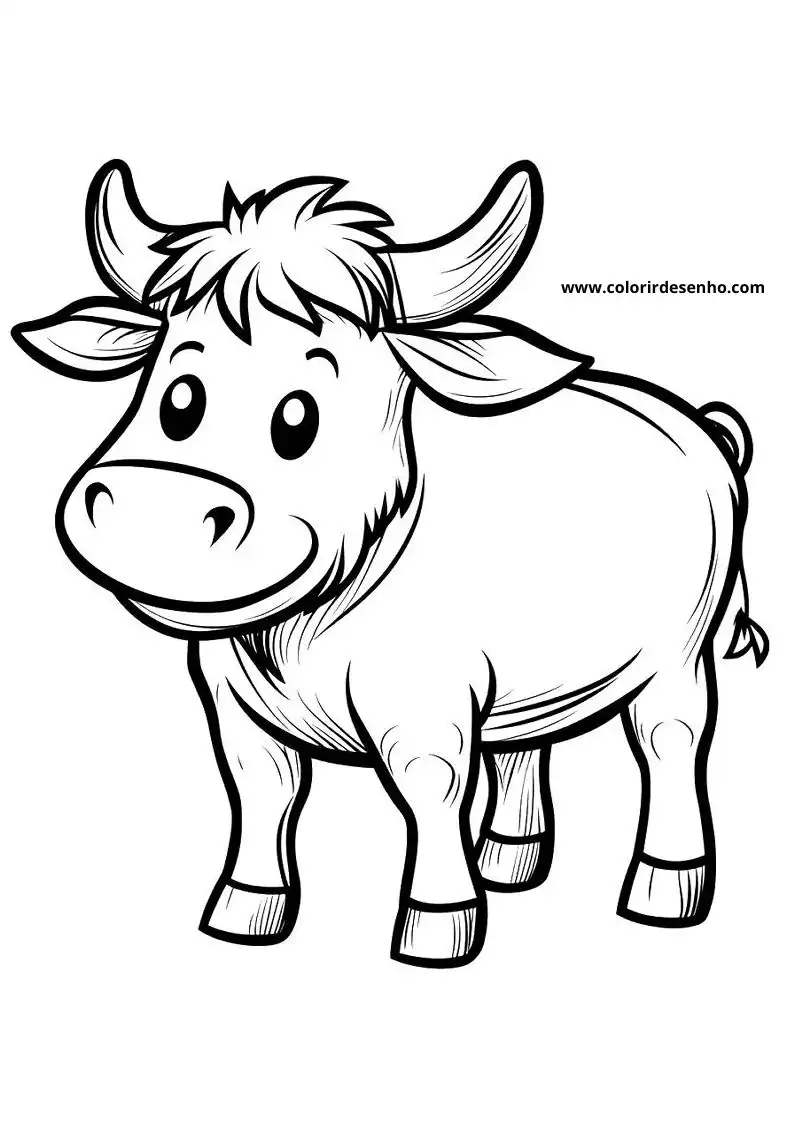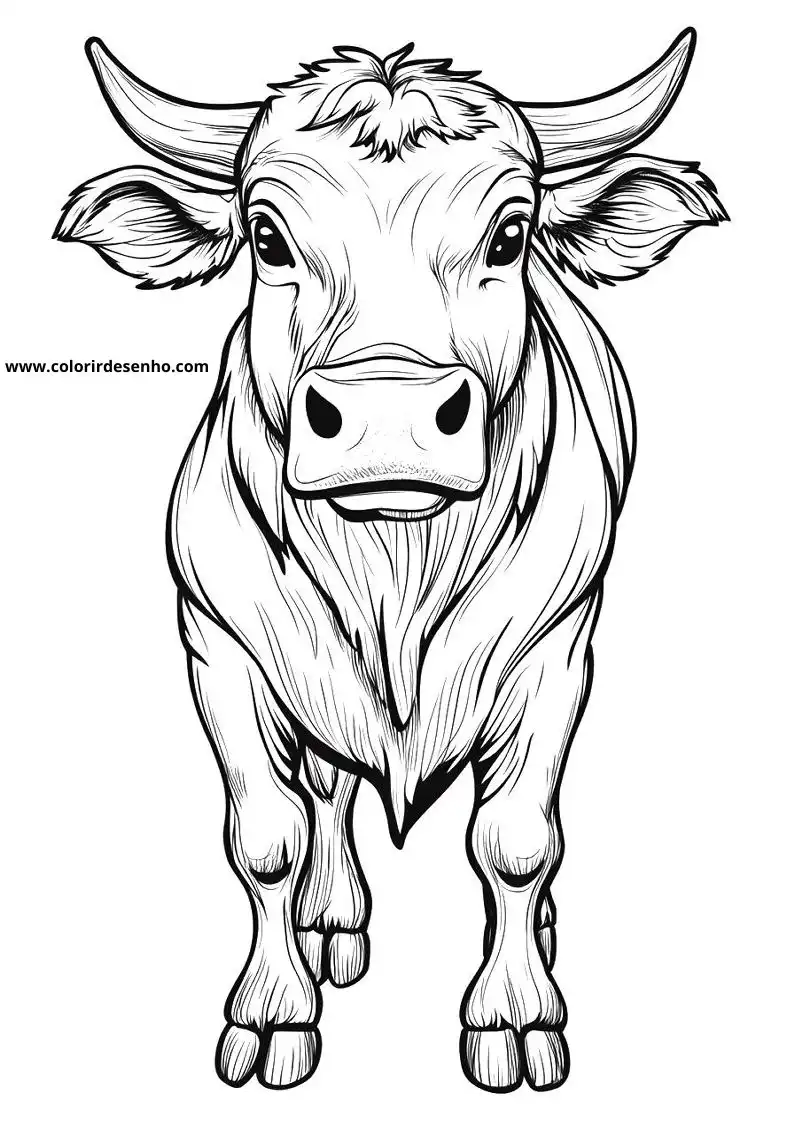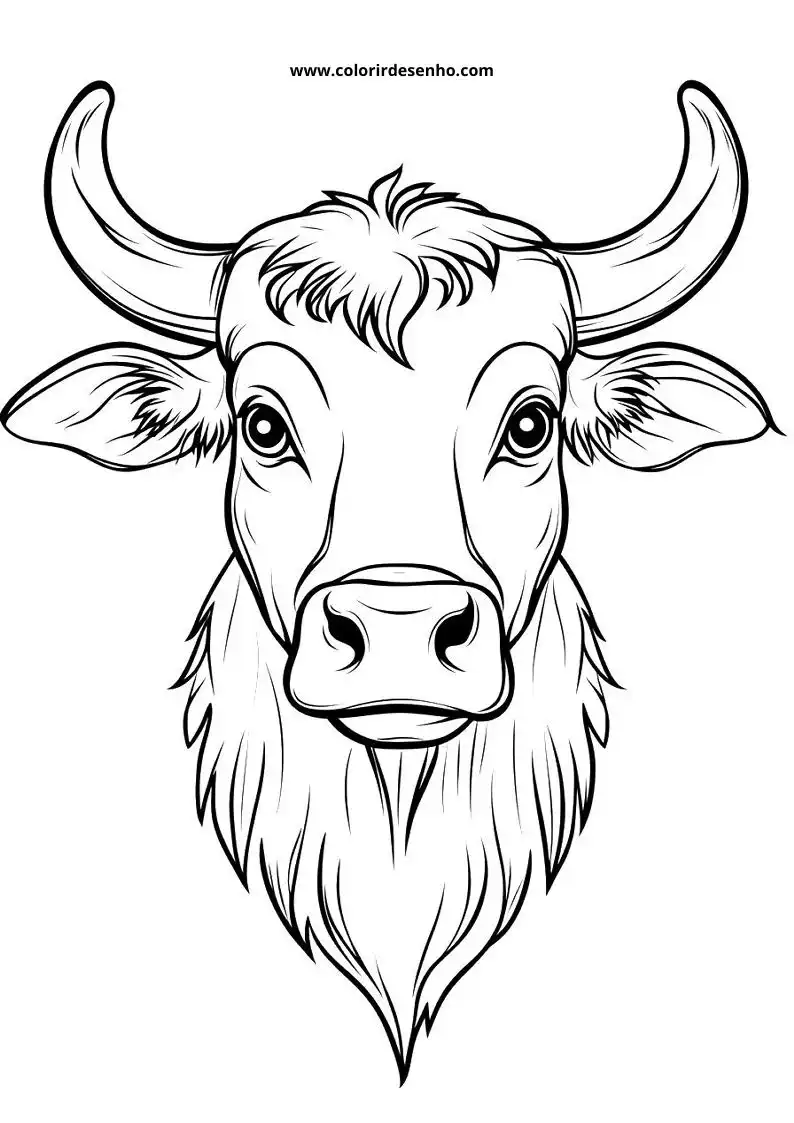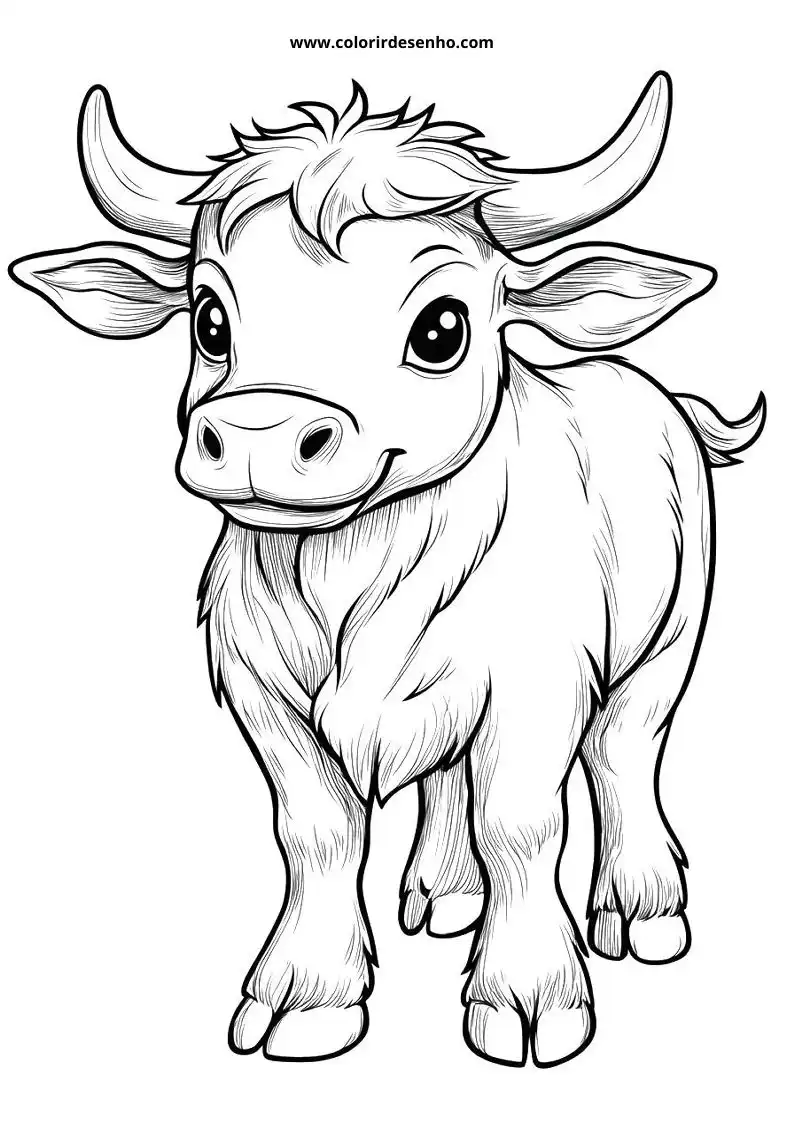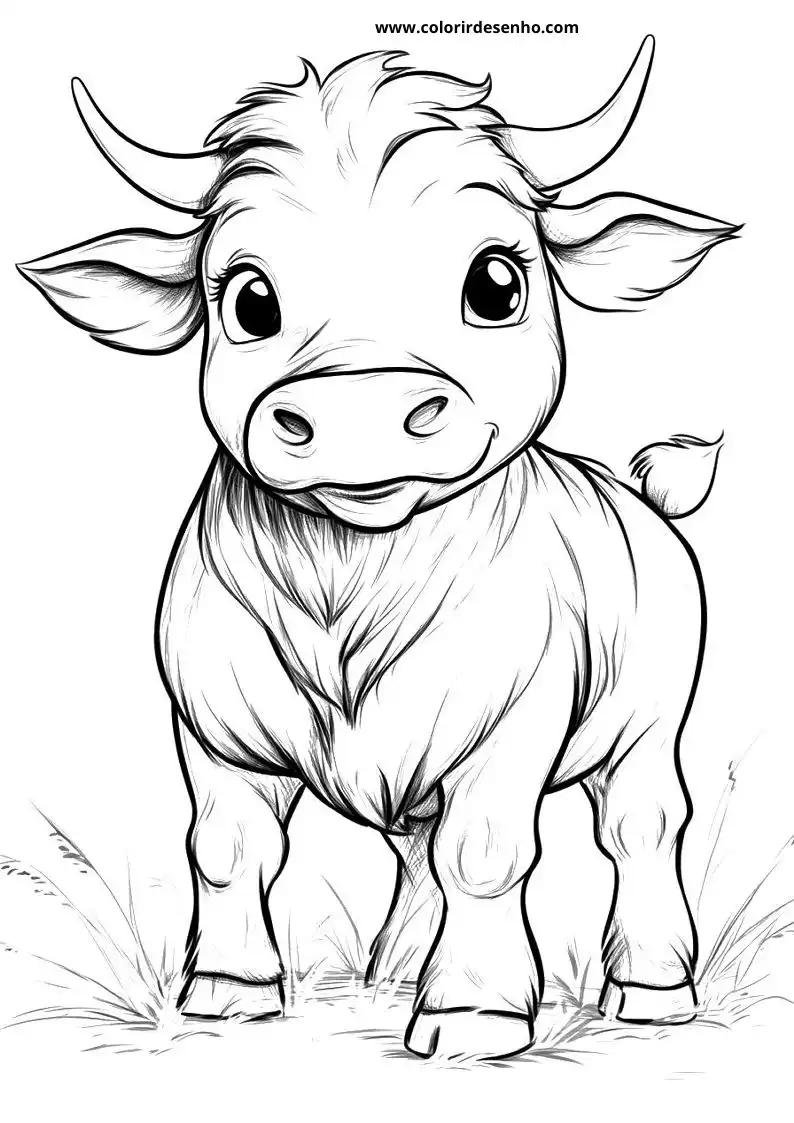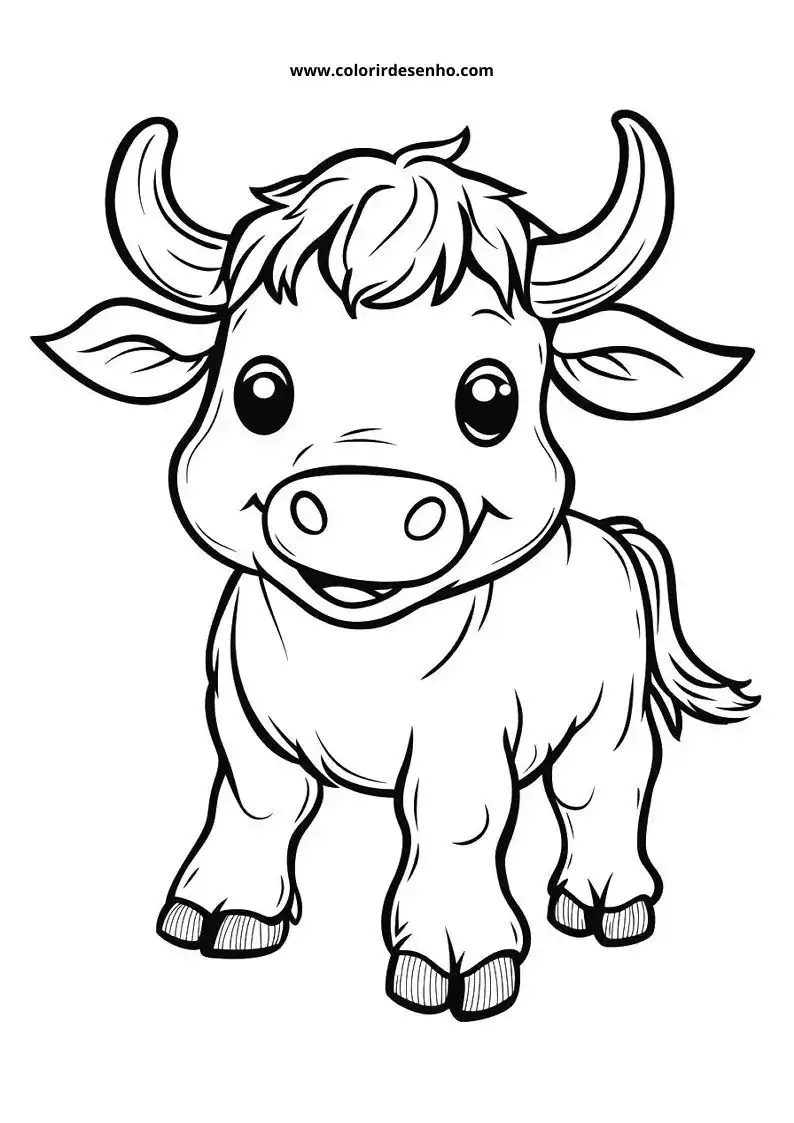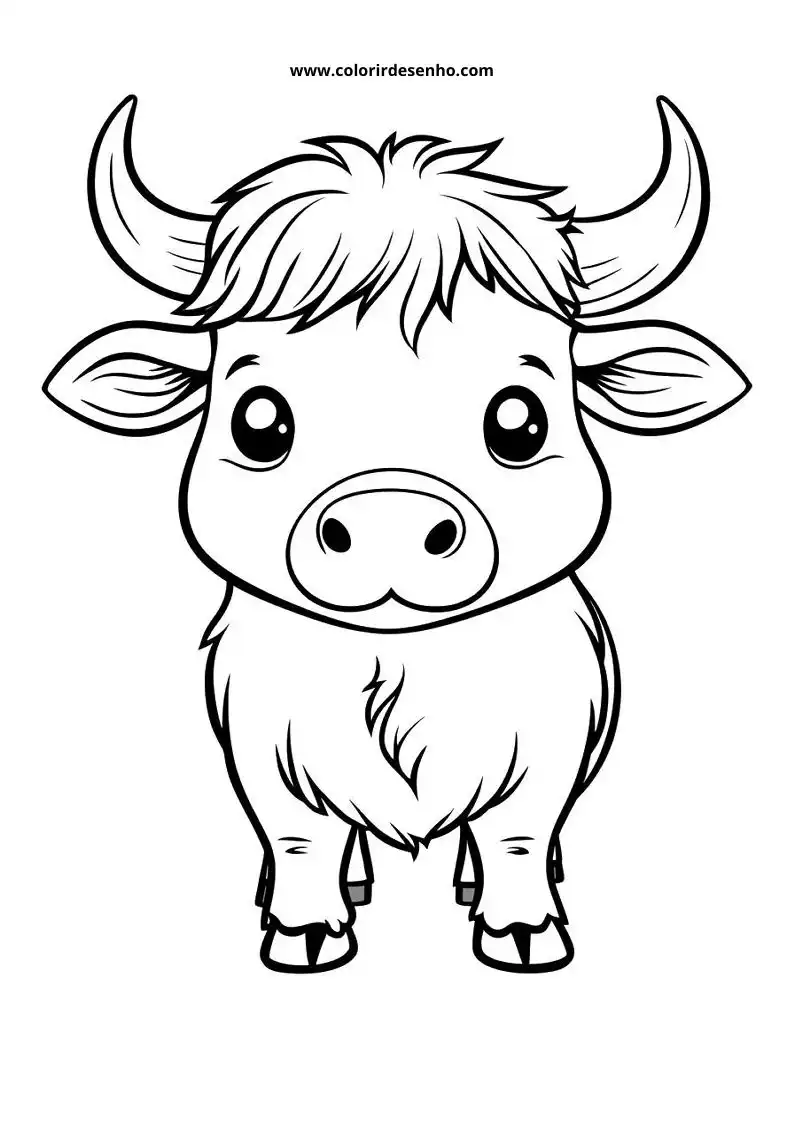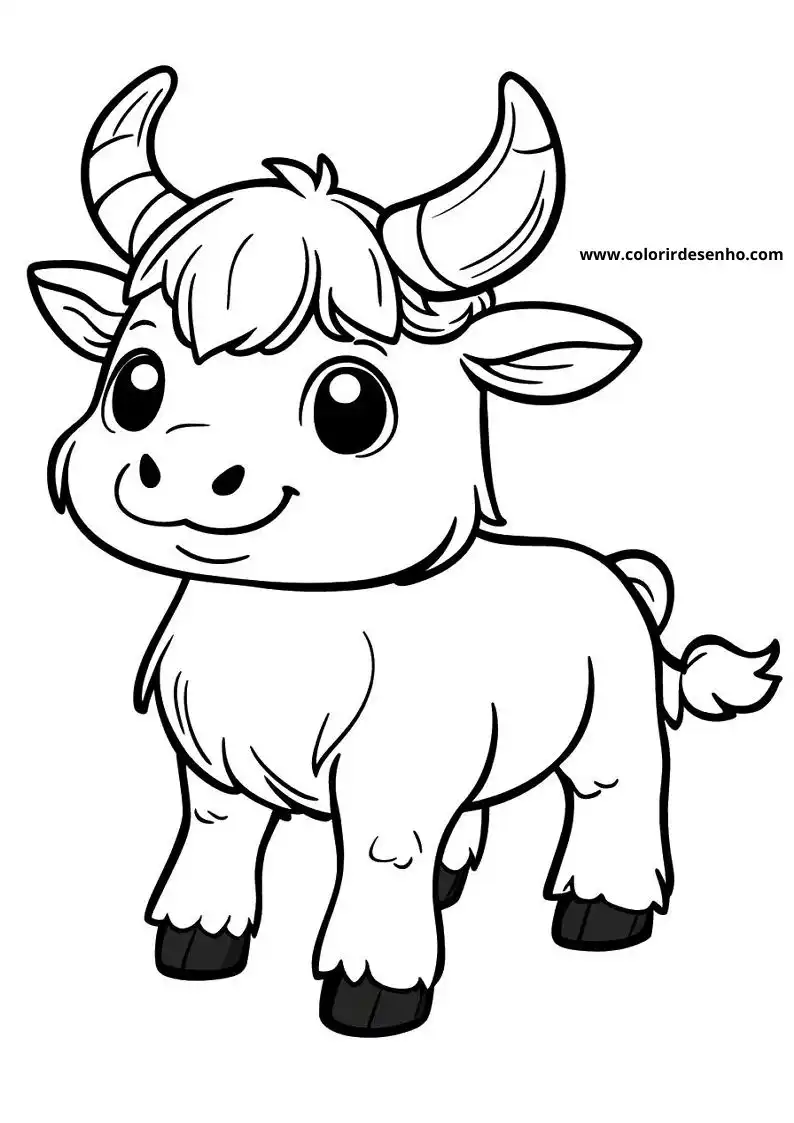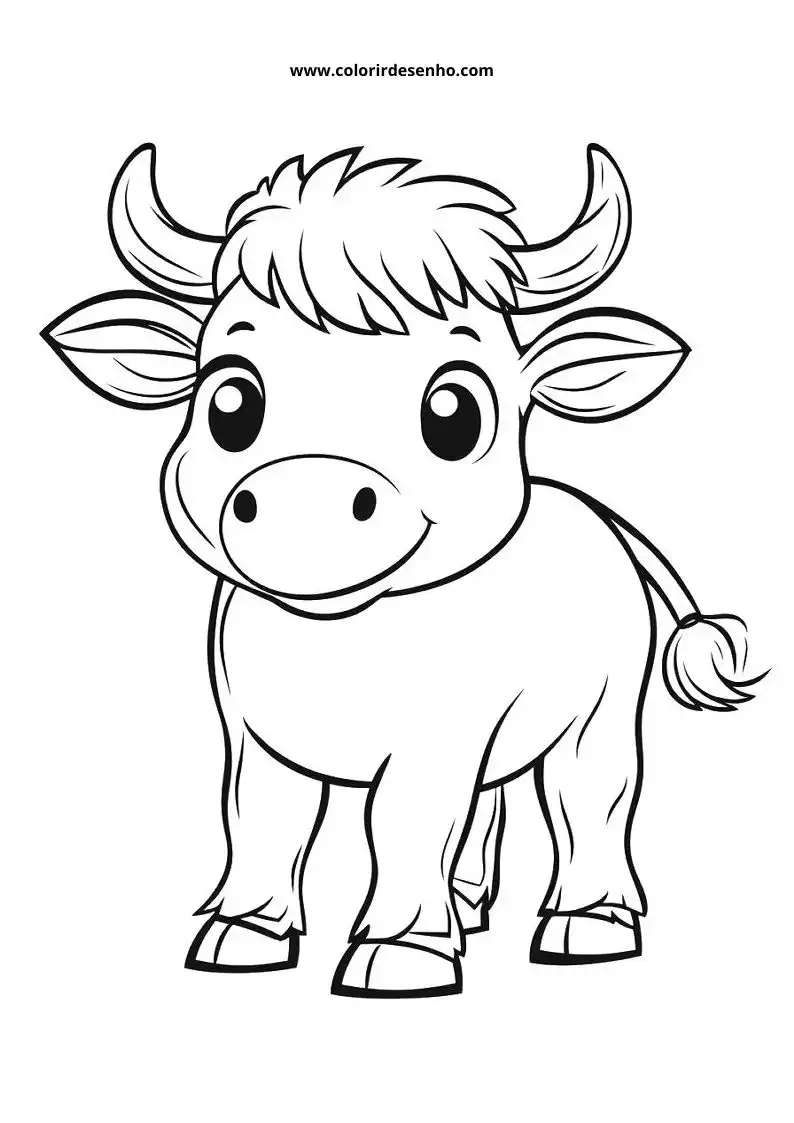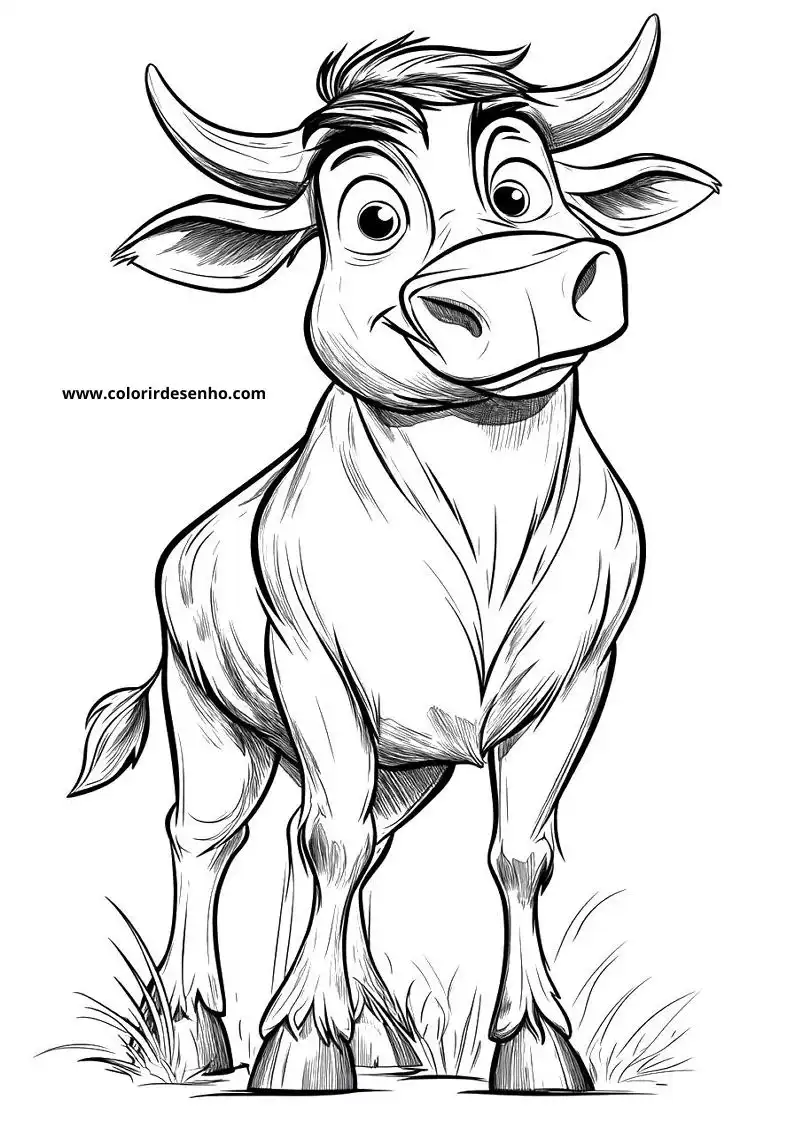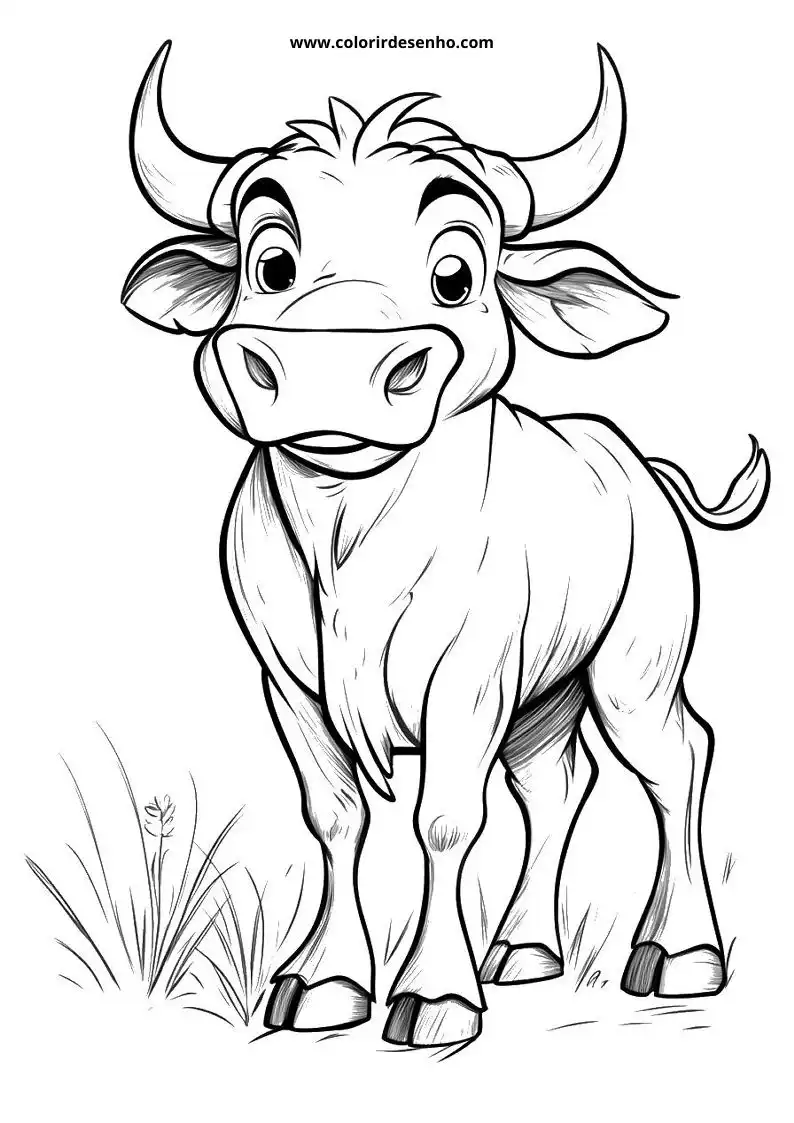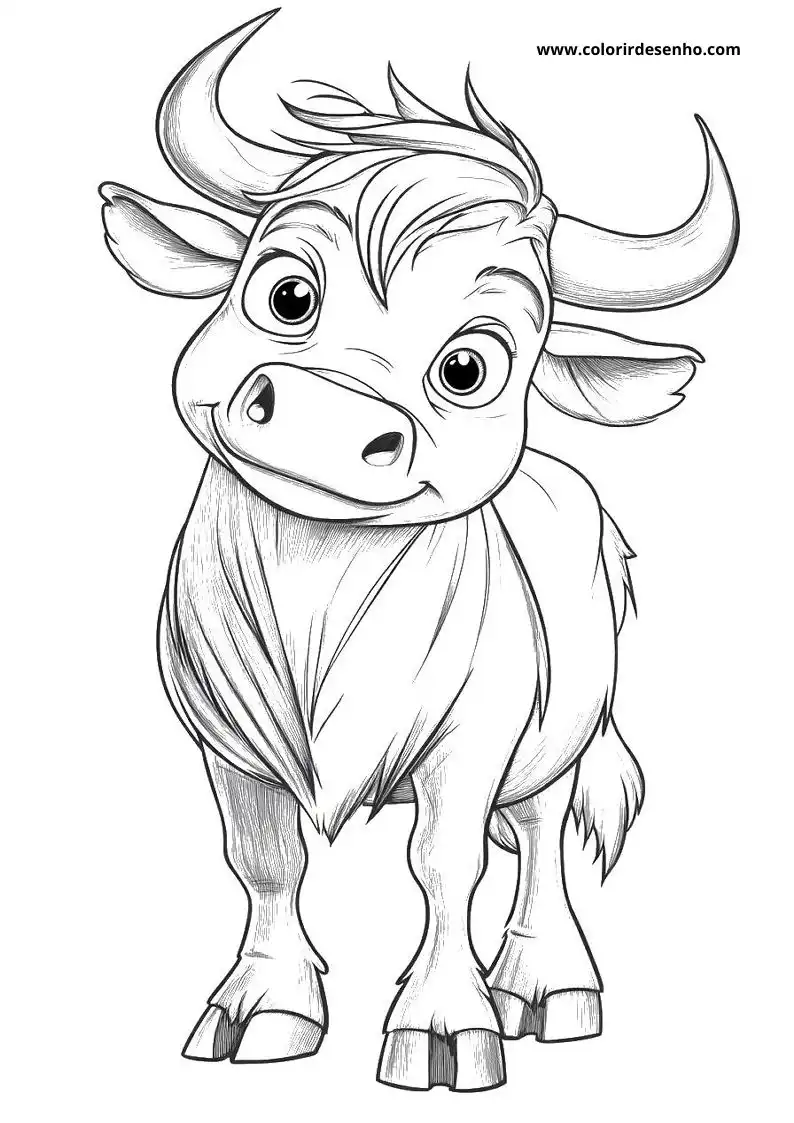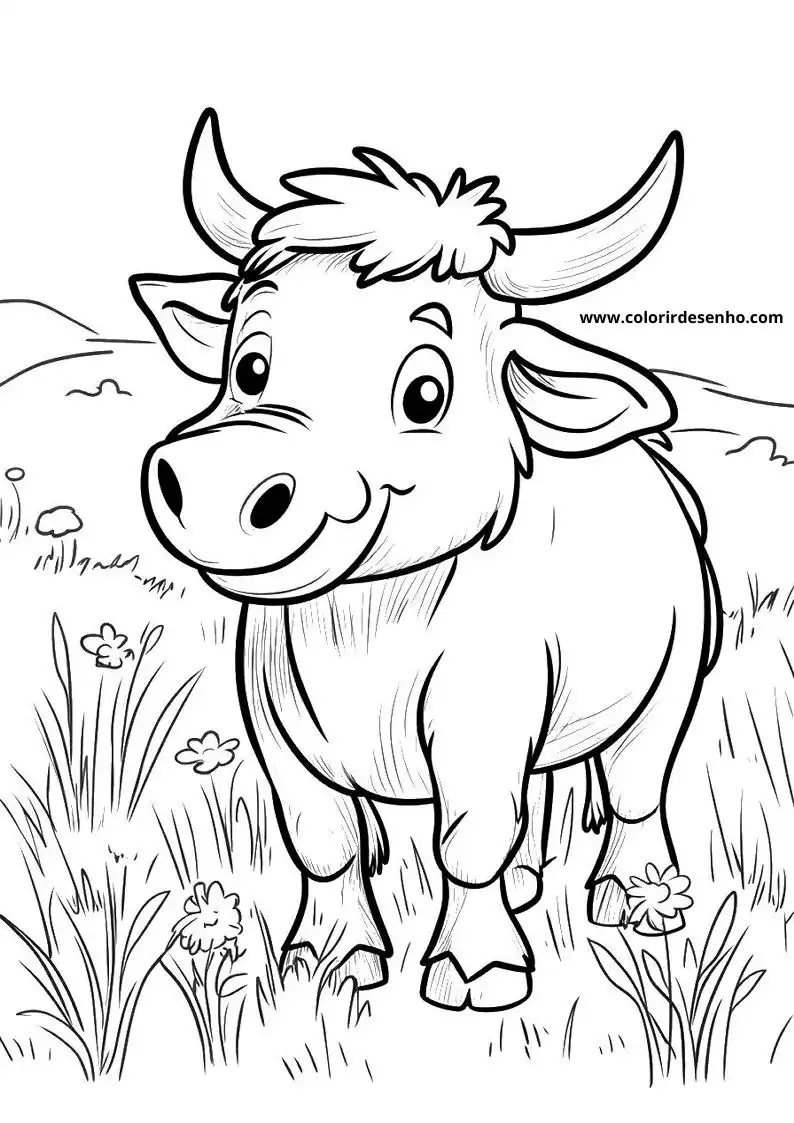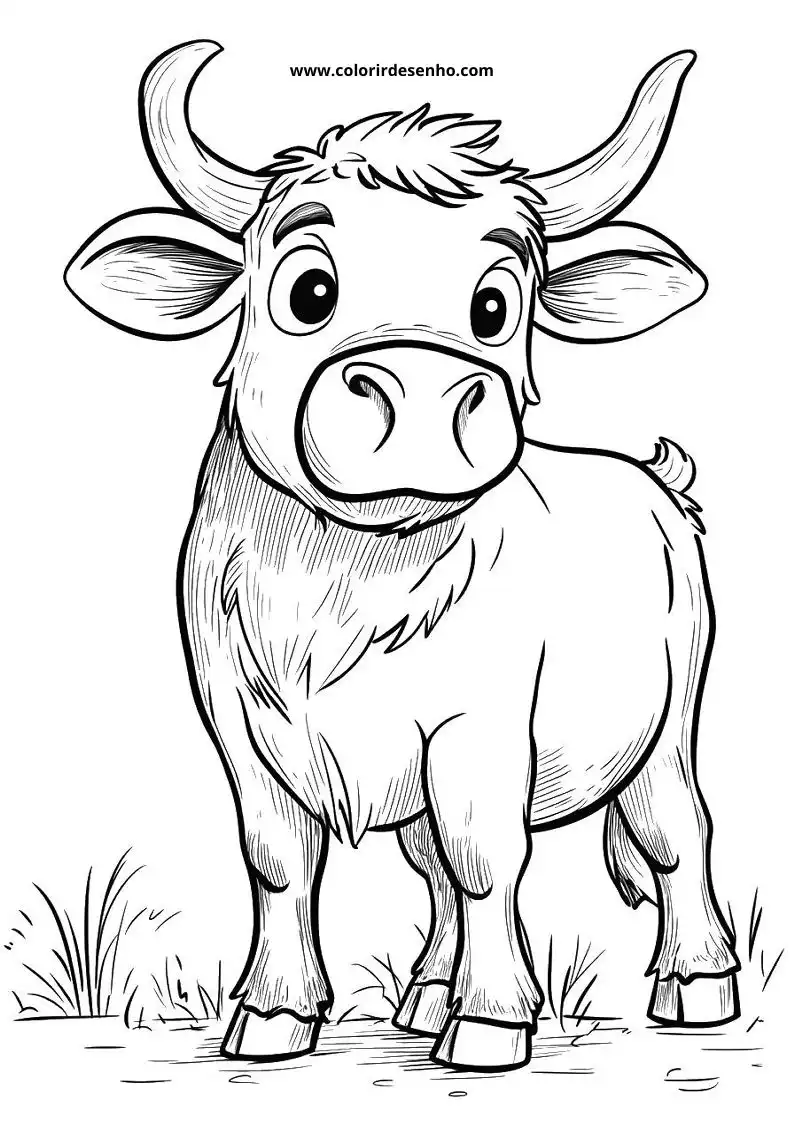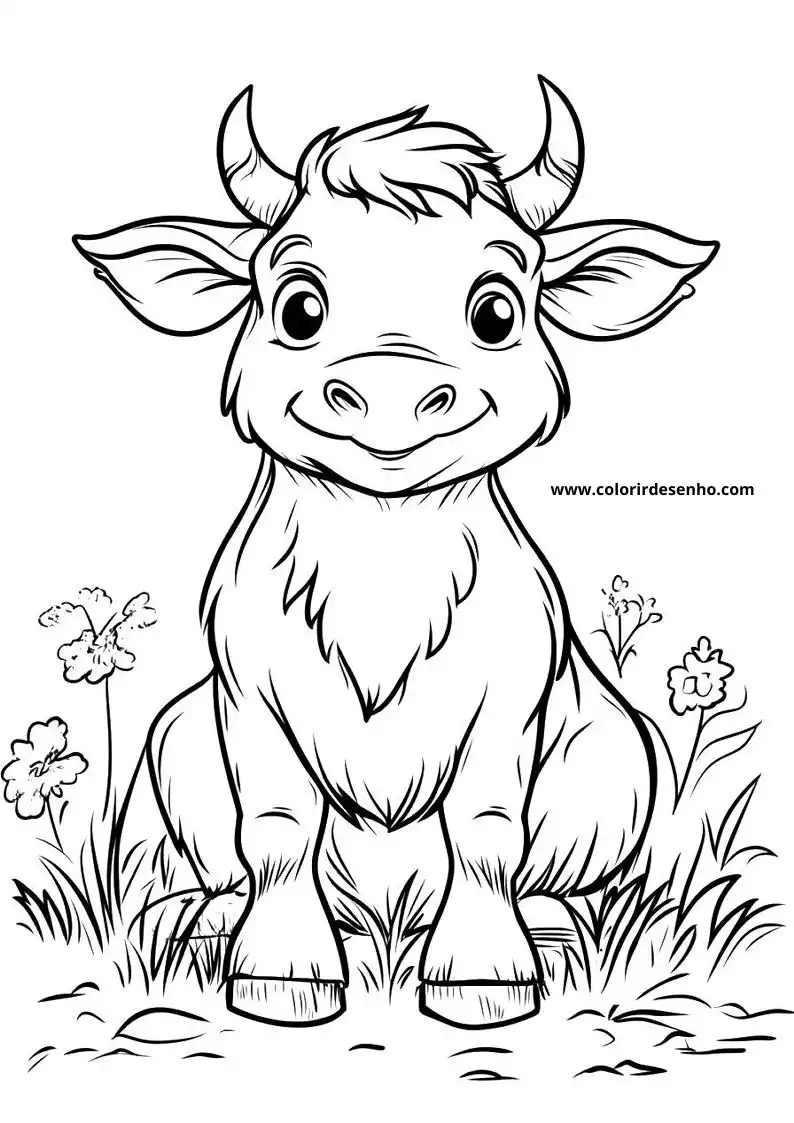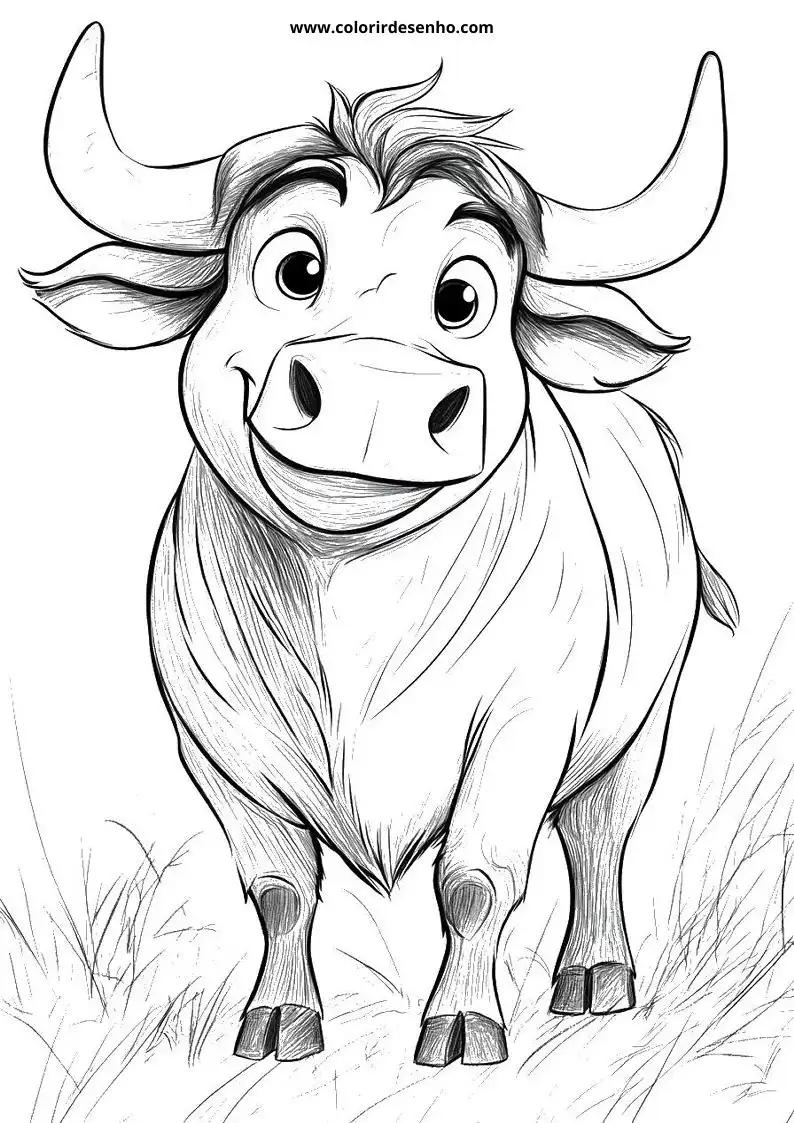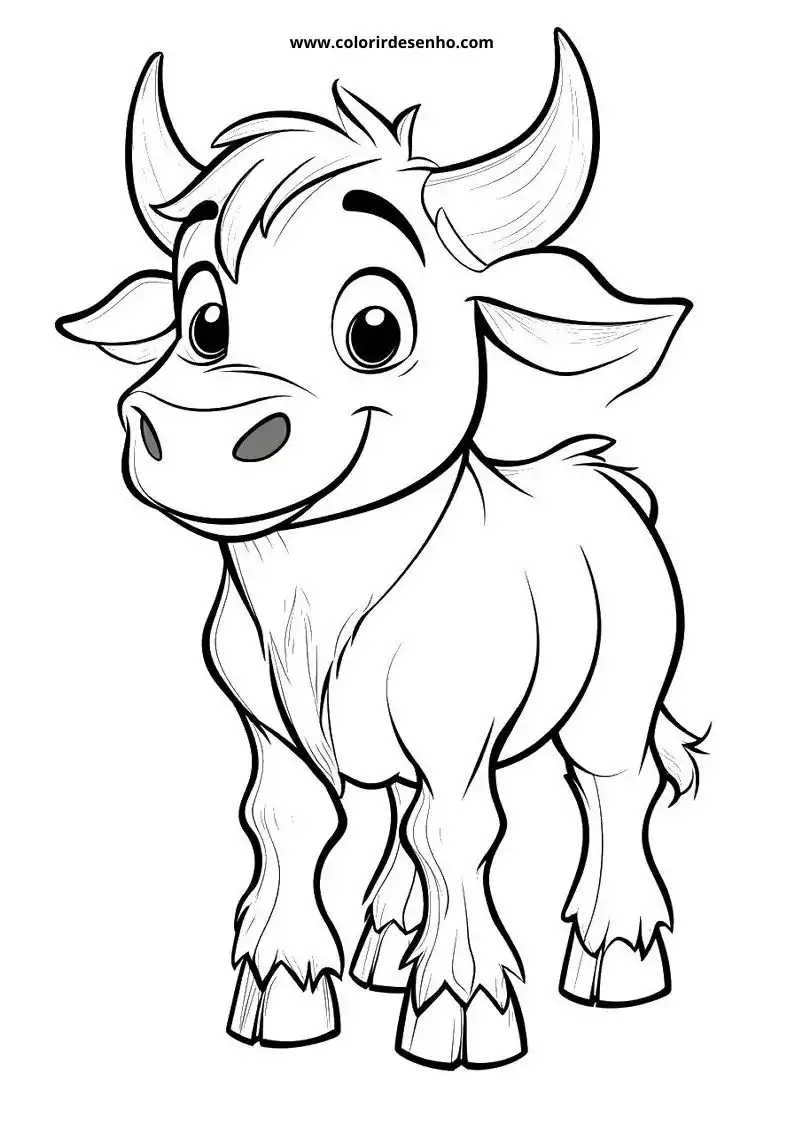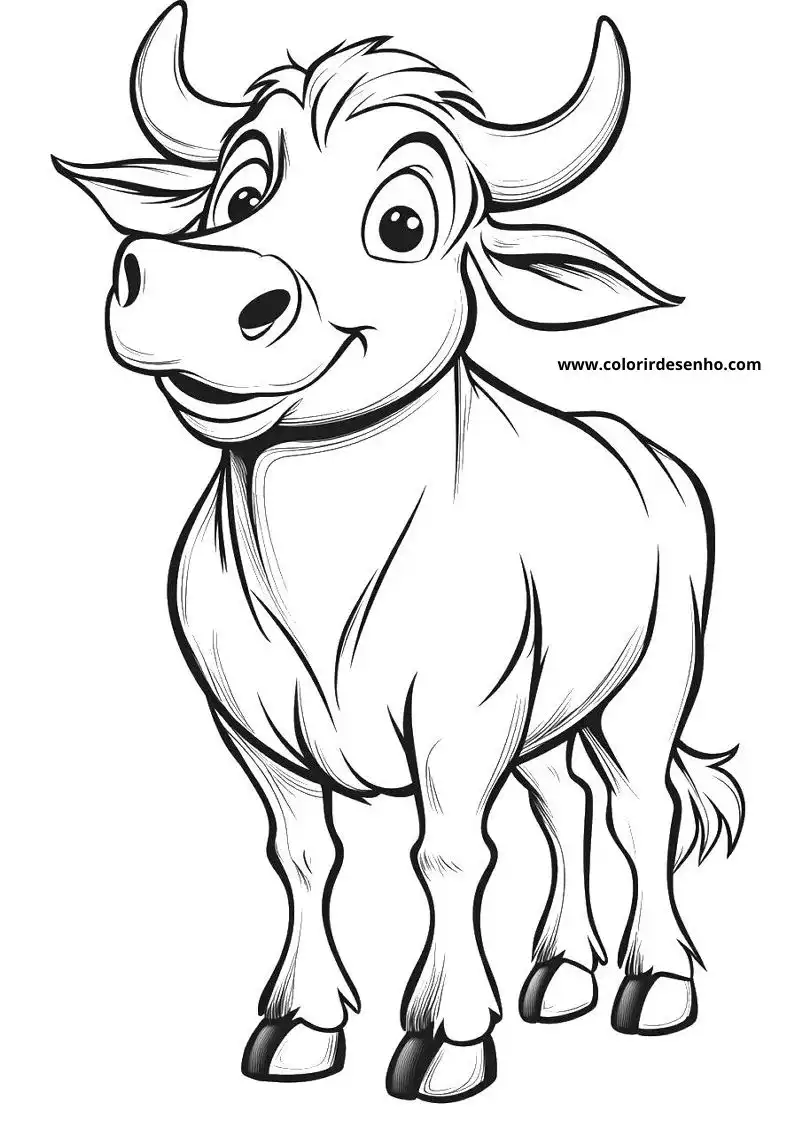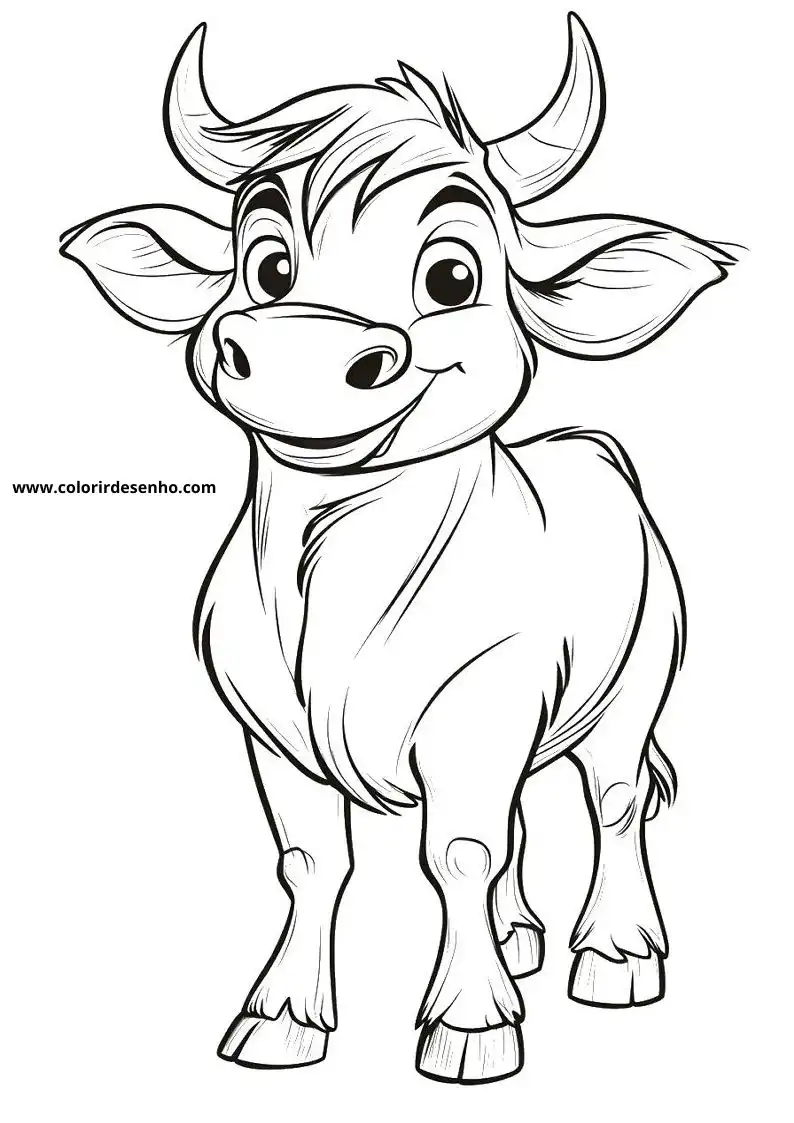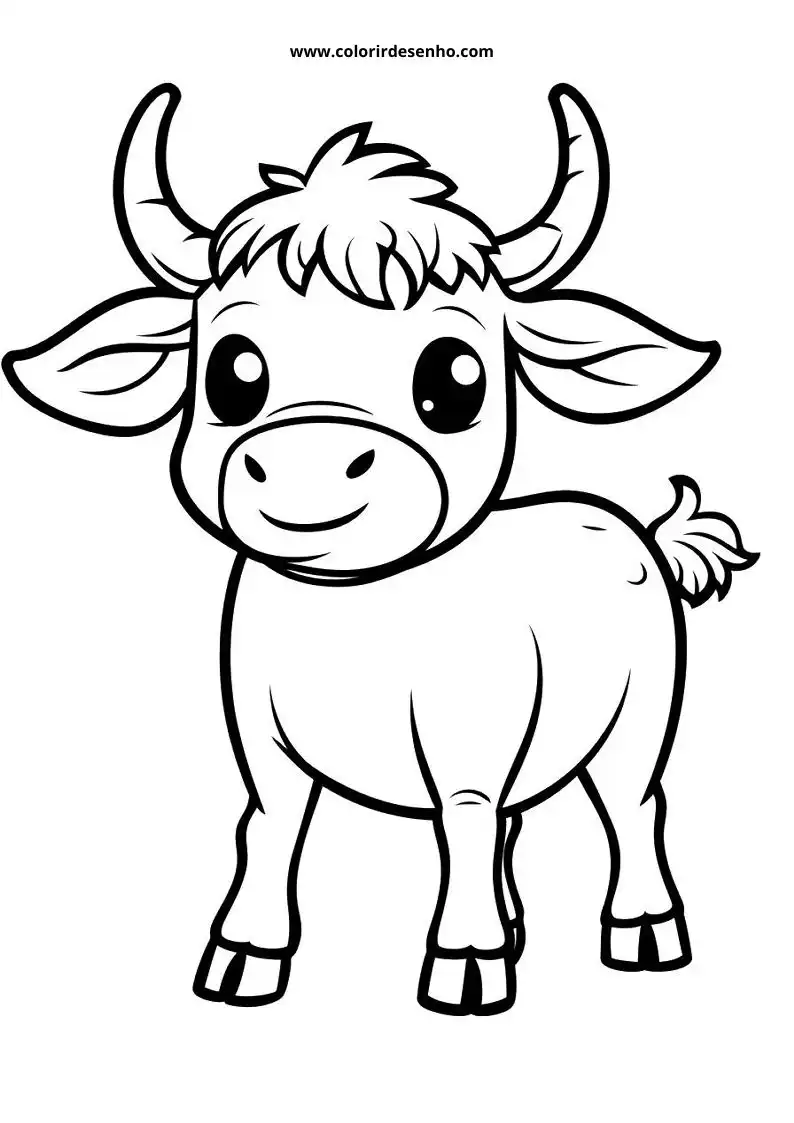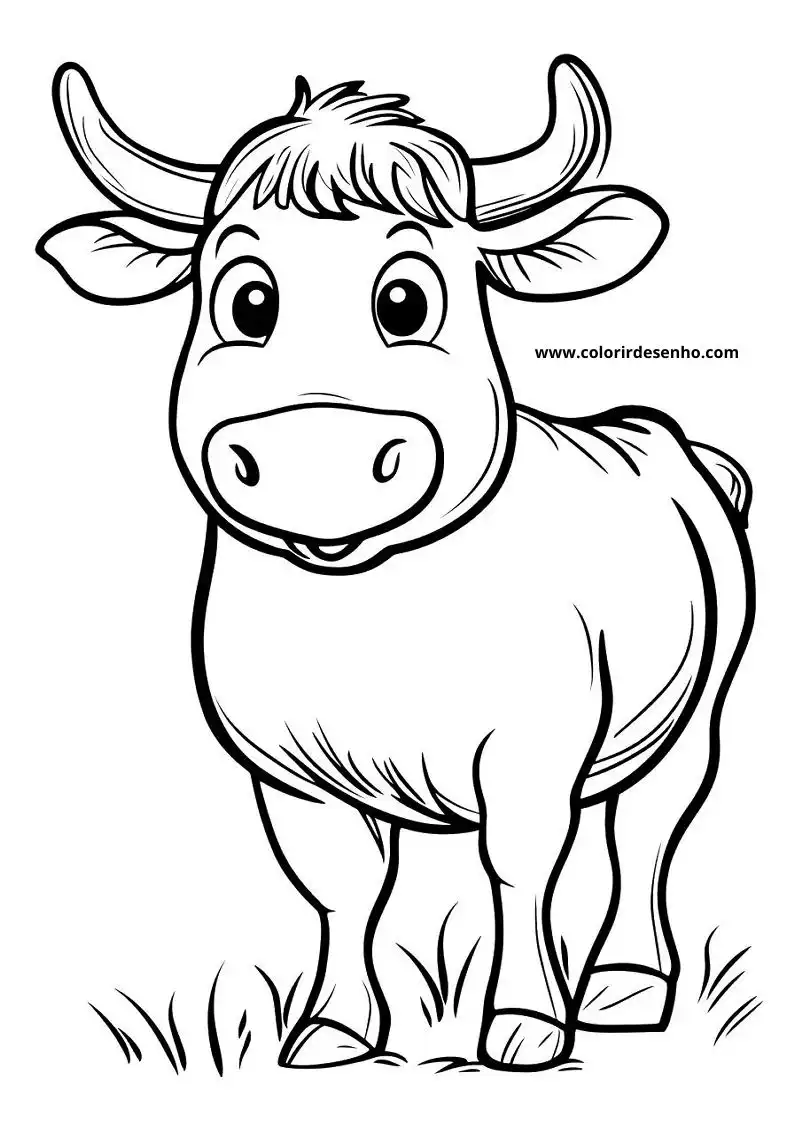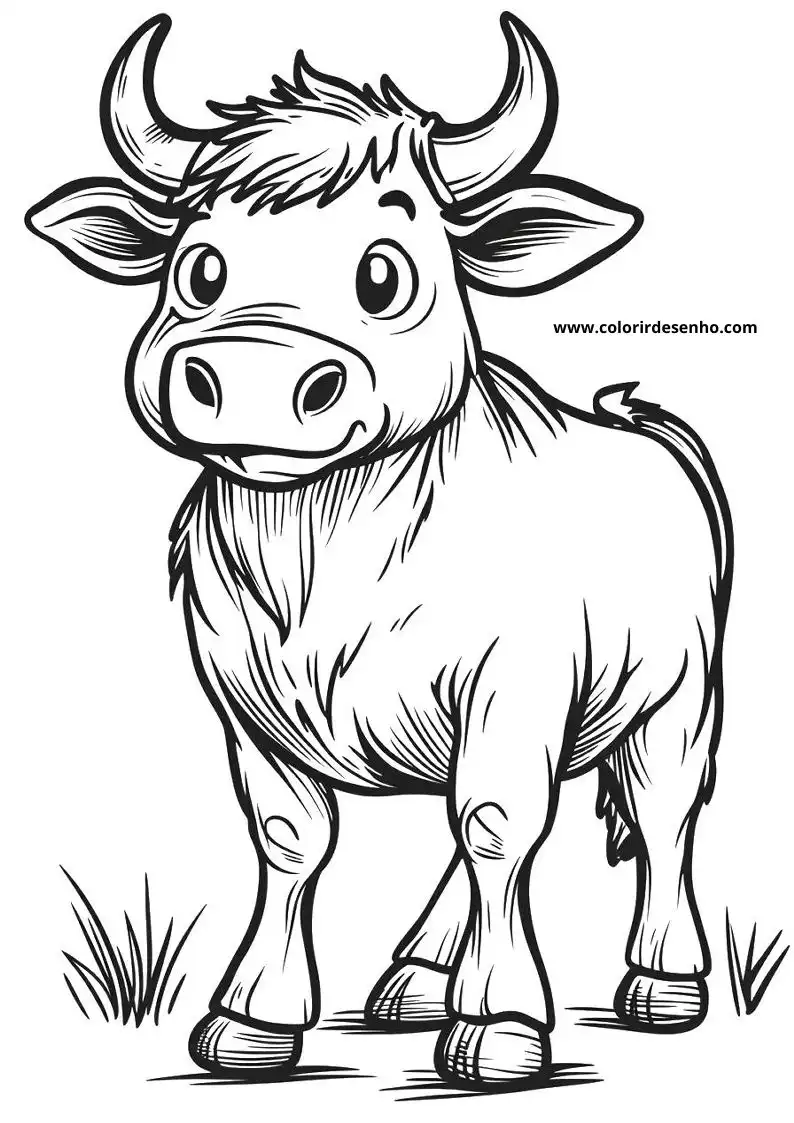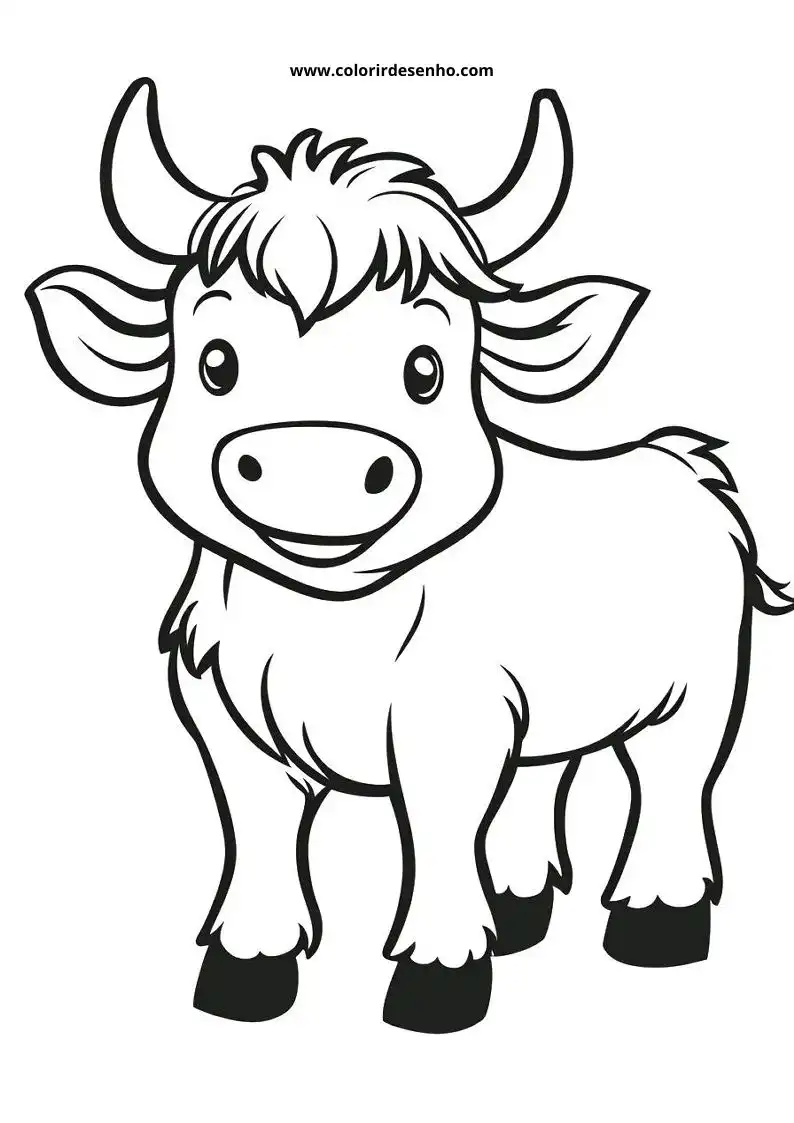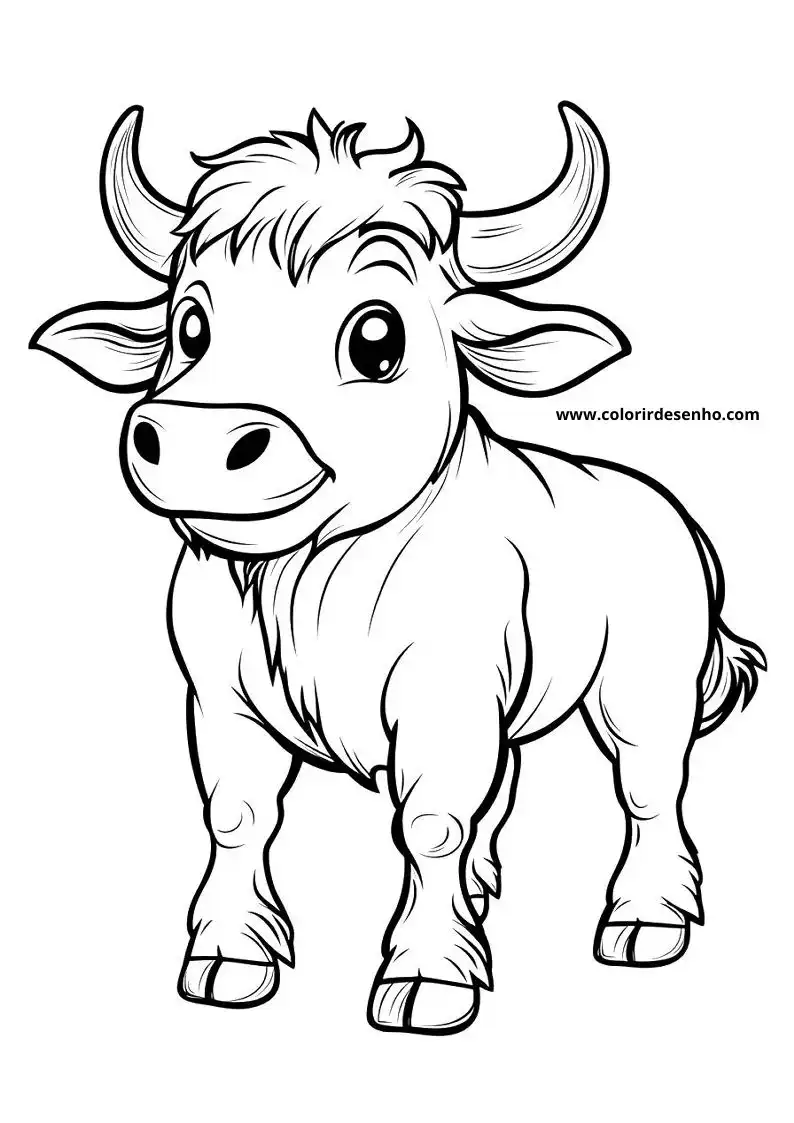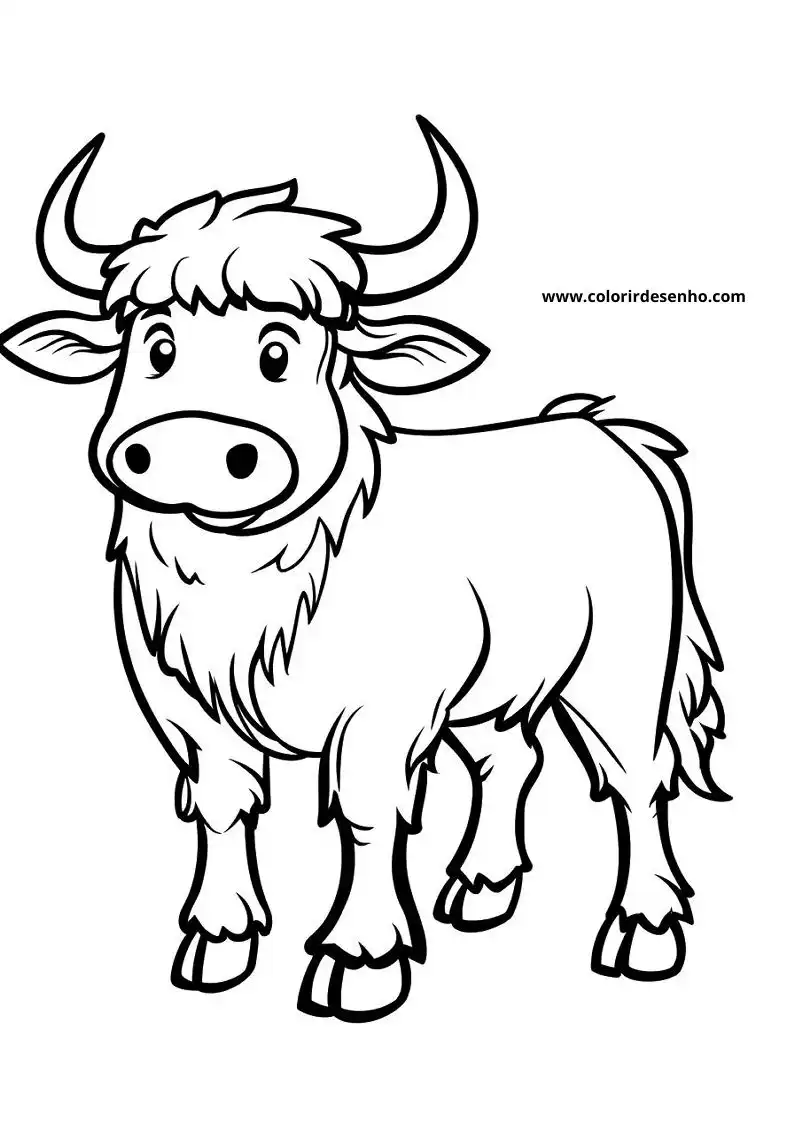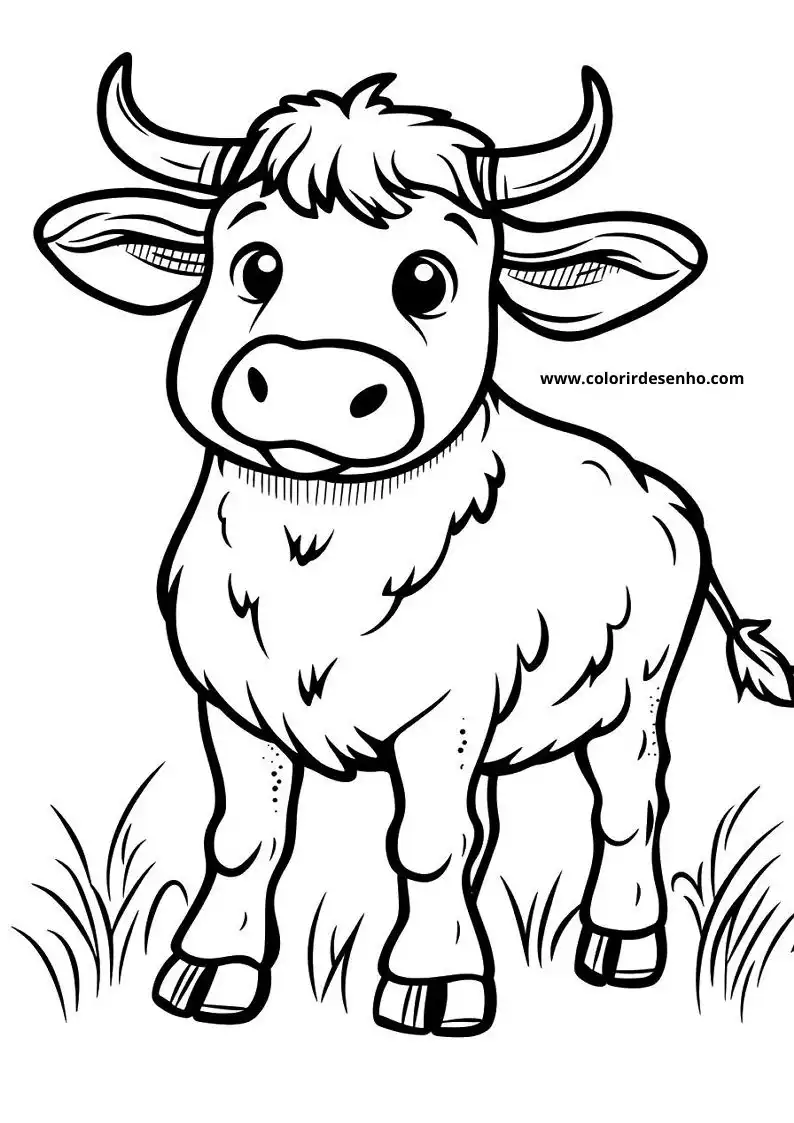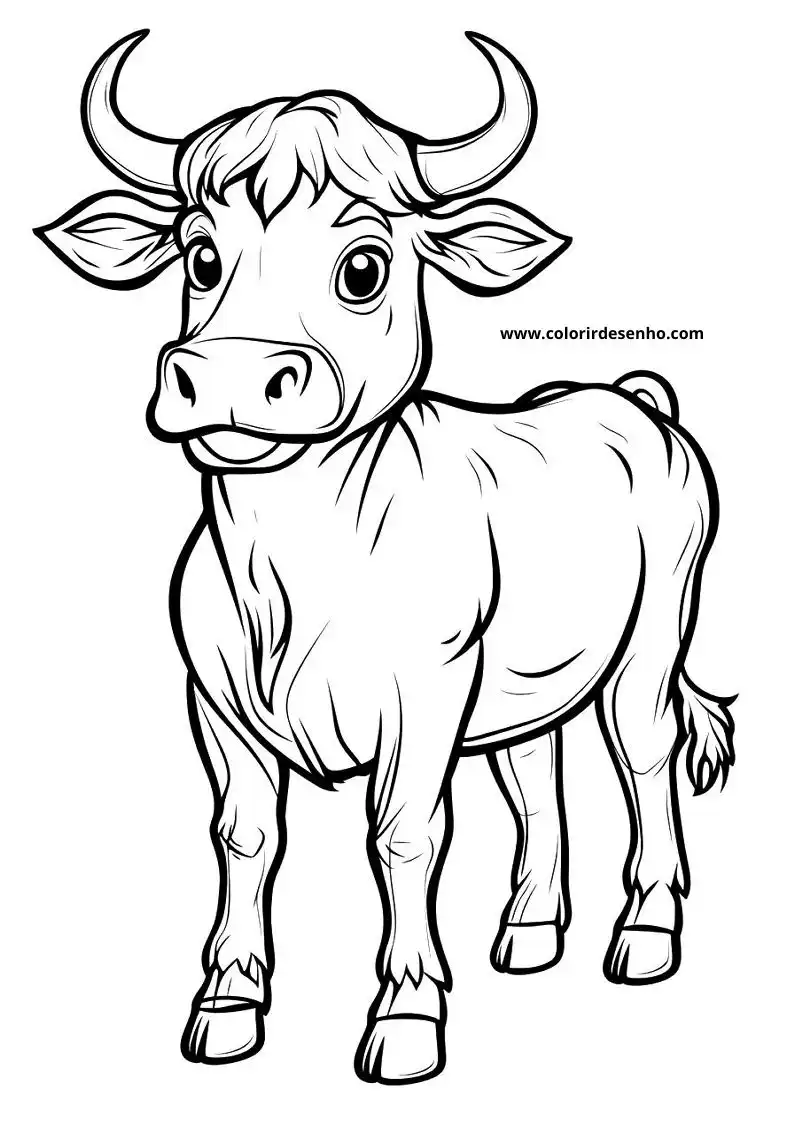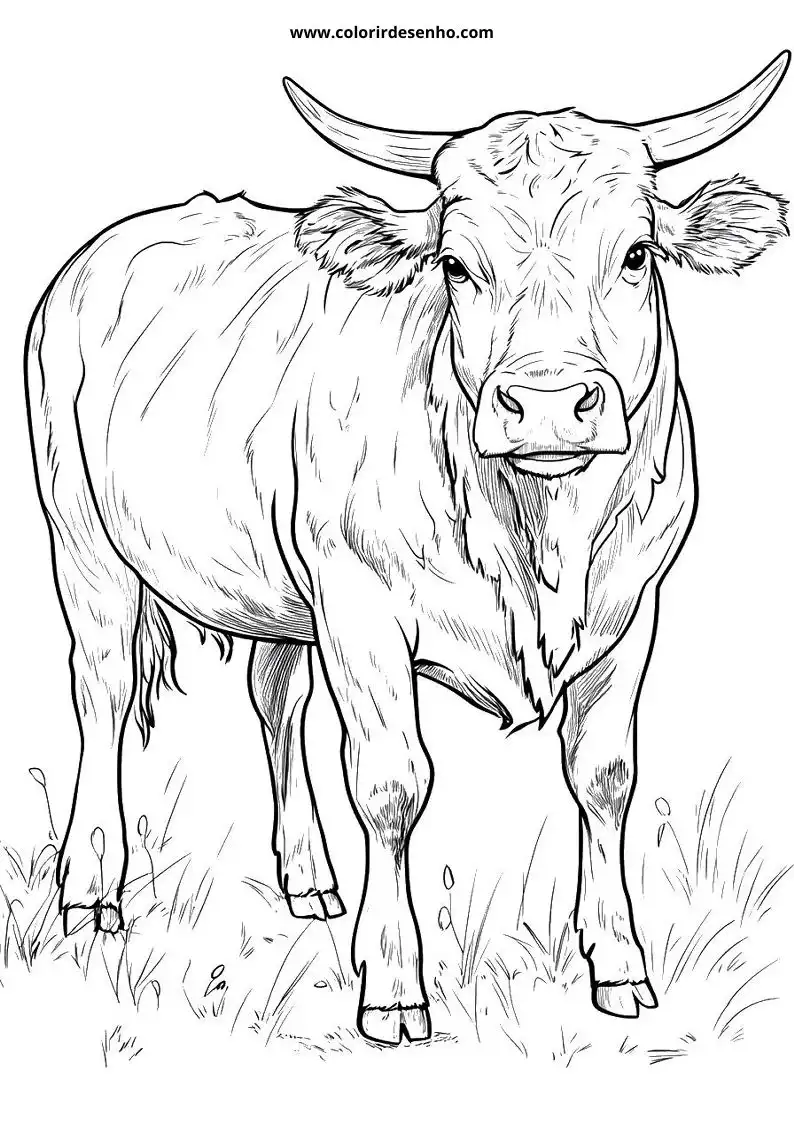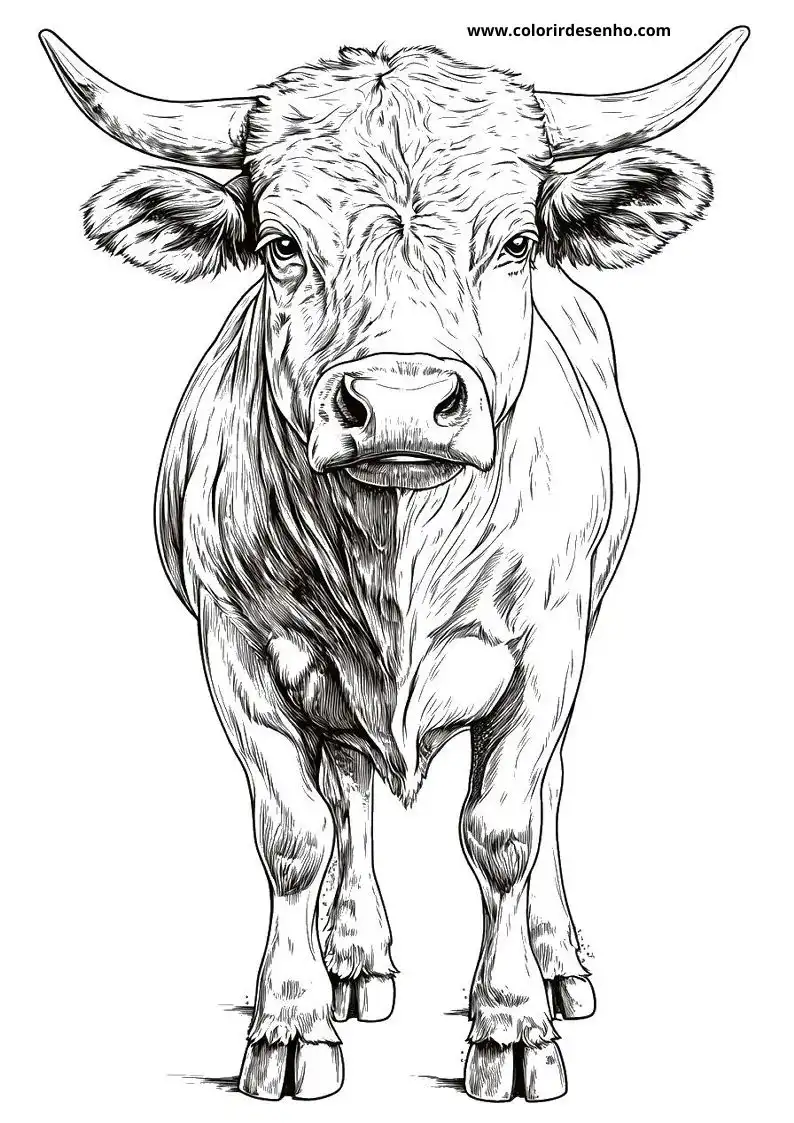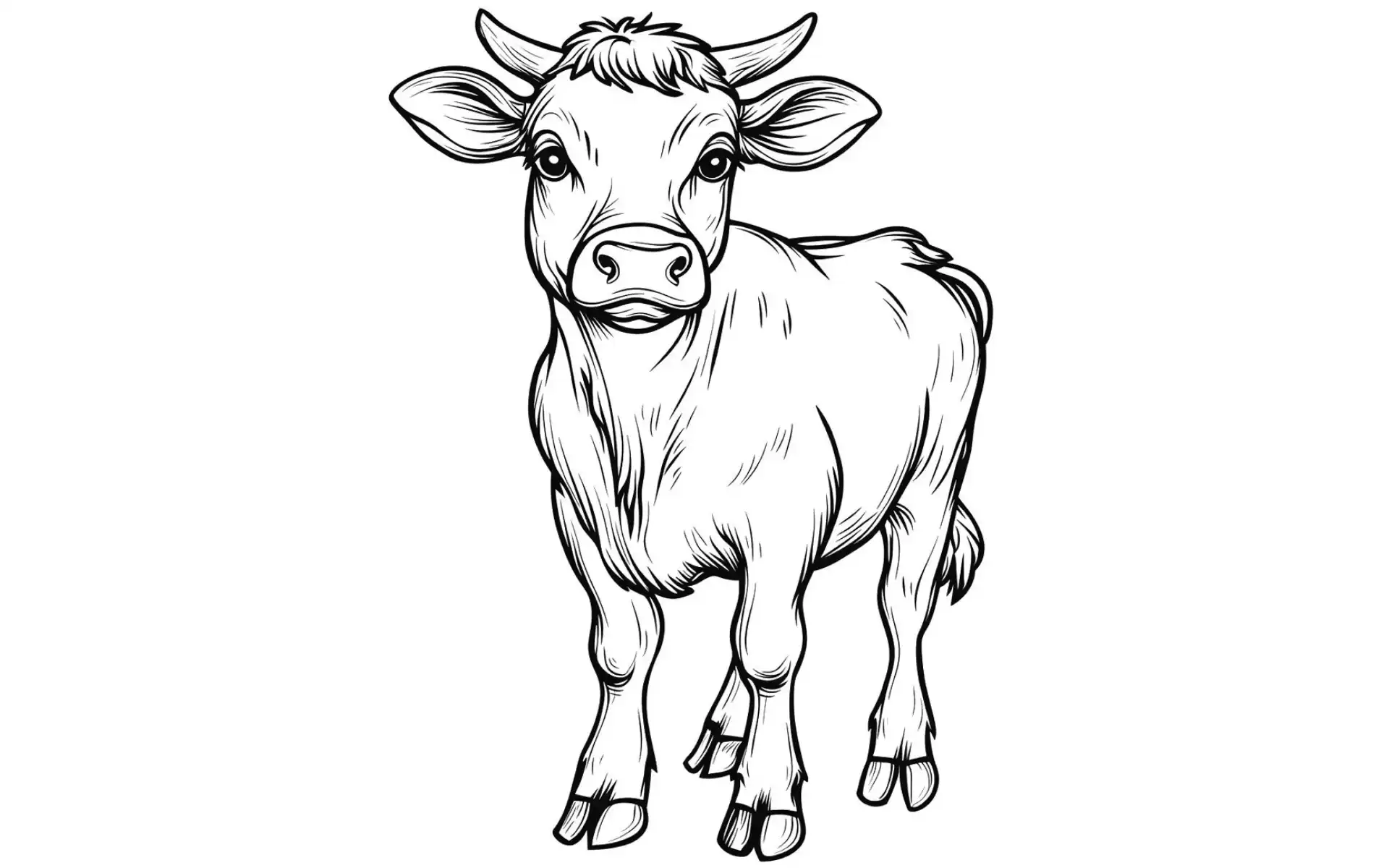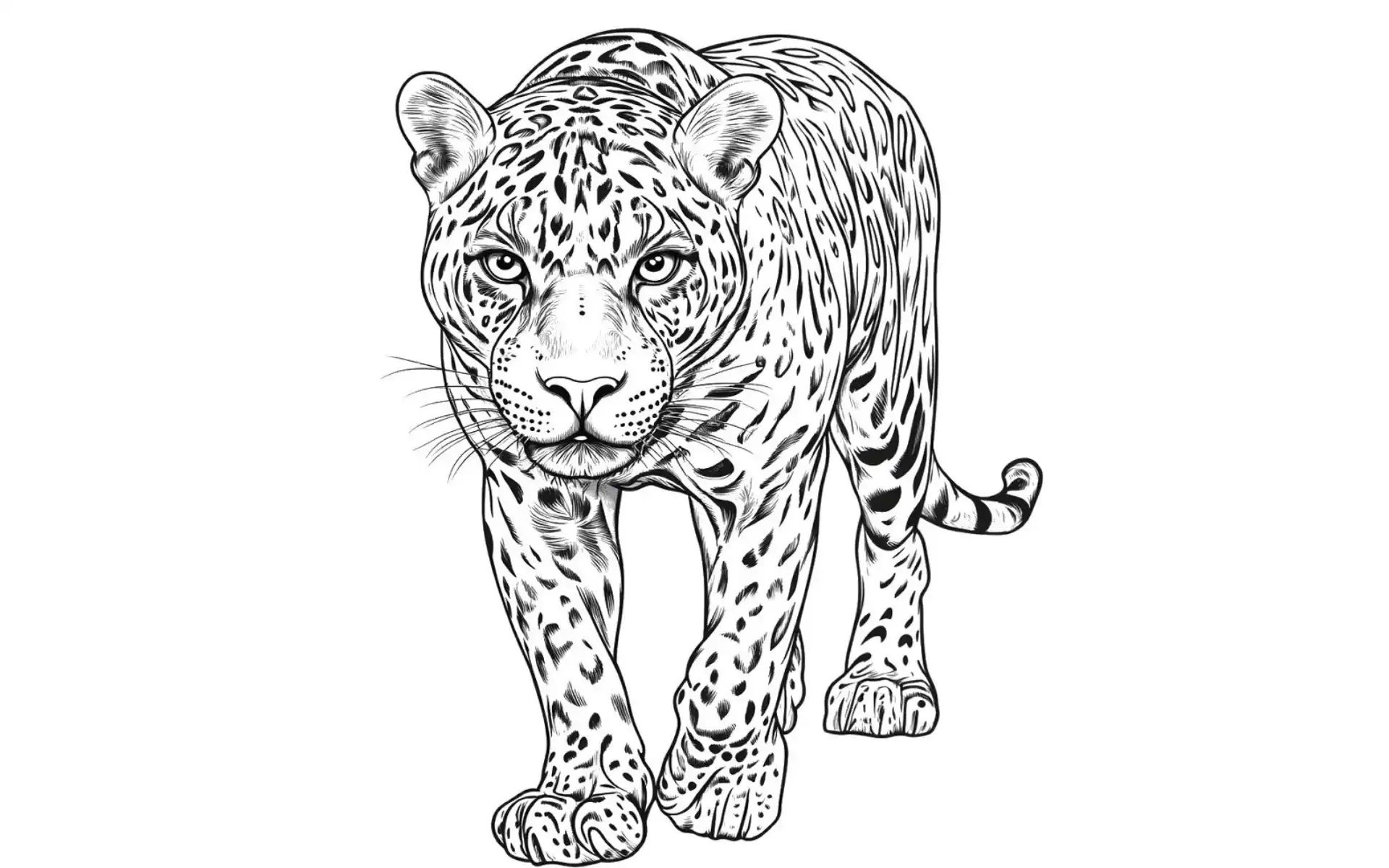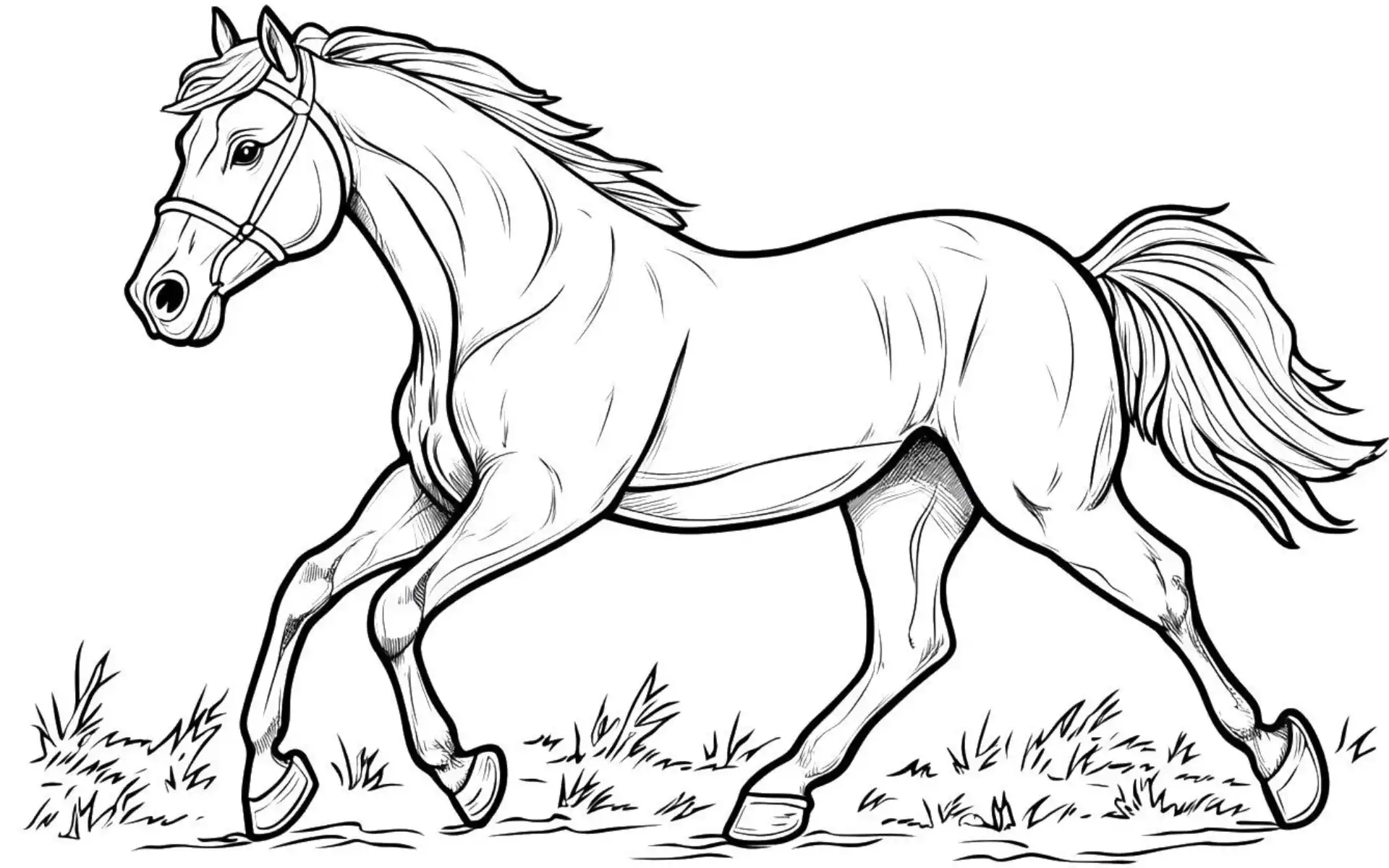Bull to Color - 222 Unique Coloring Pages for Creative Learning
When we talk about bulls, we immediately think of their strength and majesty a symbol present in rural cultures across various regions. In this article, you will find 222 bull coloring pages, perfect for those seeking fun and learning, whether for kids or even adults who enjoy relaxing with art. How about getting to know more about this incredible animal while choosing your favorite drawing?
Here, we’ve gathered a variety of illustrations, some simpler and others more detailed, to cater to all tastes and ages. Plus, between one choice and another, you’ll learn several fascinating facts about bulls!
Free Printable Bull to Color: Explore and Learn
If you’re looking for free printable bull to color, you’ve come to the right place. Bulls are fascinating animals closely linked to human history. Since ancient times, they have been used in farming work, transportation, and also as a food source. Their importance goes far beyond their physical strength; bulls have been depicted in different cultures as symbols of perseverance and abundance.
In the United States, for example, the bull is a central figure in various cultural events, symbolizing power and resilience. This folklore blends dance, music, and theater, often telling stories that reflect the cycle of life and fertility.

THE COLORING PICTURES ARE AT THE BOTTOM OF THE PAGE, WHEN YOU OPEN THE PICTURE, CLICK ON THE SAVE BUTTON ABOVE THE PICTURE.
The Importance of Bulls in Ancient Cultures
Bulls have always played a fundamental role in various civilizations. In Ancient Egypt, they were considered sacred animals, and the goddess Hathor, associated with love and fertility, was often depicted with bull horns. In Hindu mythology, the bull is a divine animal frequently associated with the god Shiva, being respected and revered by millions.
Moreover, bulls have played a crucial role in the development of agriculture in many parts of the world. Before tractors and other machinery, they were used to plow fields, making large-scale food cultivation possible. So, by coloring a bull drawing, you’re actually connecting with one of the pillars of human civilization’s evolution.
The Strength and Power of Bulls in the Field
The strength of a bull is something admirable. These animals are capable of pulling heavy loads and, for many centuries, were essential in transporting goods. Imagine a wagon loaded with food or merchandise, being pulled by a bull over miles of dirt roads. They were undoubtedly the “engine” of many farms in the past.
Nowadays, despite technological advances, bulls are still used in some regions to plow the land, especially where access to modern machinery is limited. They also play an important role in agricultural fairs and exhibitions, admired for their robustness and beauty.
Curiosities About Bulls You Might Not Know
Bulls are more than just working animals. They possess fascinating characteristics that often go unnoticed. For example, did you know that a bull can live up to 20 years? And that they can remember human faces for a long time? These abilities make bulls not only strong but also intelligent animals.
Additionally, bulls have quite interesting social behavior. They form bonds with other bulls and even with humans, creating a relationship of trust. On some farms, they are so attached to their caretakers that they follow commands very easily, even without the use of force.
The Bull and American Folklore
One of the richest cultural traditions involving bulls is the rodeo, which takes place in various regions of the United States. This festival, rooted in cowboy culture, celebrates the skills and bravery of those who work with cattle. The stories told in rodeos often revolve around the challenges of taming bulls, symbolizing strength and the human connection to nature.
The festival is a vibrant mix of music, dance, and theater, where participants dress in colorful outfits and enact stories about bulls. Besides being a cultural festivity, rodeos have profound spiritual and social significance, uniting communities and celebrating the connection between humans, the land, and animals.
The Versatility of Bulls in Art
Bulls are frequently depicted in art, both in paintings and sculptures. In the United States, folk artists often use the bull as a central theme in their works, whether for its economic importance or its striking presence in national culture.
Moreover, the image of the bull appears in crafts, especially in ceramic and wooden pieces that represent typical rural scenes. These works are highly valued, especially in regions where bull culture is even more present.
The Bull as a Symbol of Prosperity
In many cultures around the world, the bull is seen as a symbol of prosperity and abundance. Historically, owning bulls meant having the ability to work the land and produce food, which was a guarantee of survival and wealth.
In China, for example, the bull is one of the 12 signs of the Chinese zodiac and is associated with characteristics like strength, patience, and honesty. People born under the sign of the bull are seen as hardworking and reliable, reflecting the qualities of the animal itself.
Bull Coloring Pages for Relaxation and Creativity
Coloring is a relaxing and therapeutic activity, and choosing bull coloring pages can be a great way to connect with nature and history. Each bull drawing brings with it the essence of this powerful animal, allowing you to explore your creativity while learning more about its importance in the world.
Whether you’re looking for something more complex or simple, there’s a wide range of bull to print and color options. And if you intend to share this activity with children, they’ll love discovering curiosities about this animal while coloring.
The Bull in Literature and Cinema
Bulls also have prominence in literature and cinema. A classic example is the story of “Ferdinand the Bull” by Munro Leaf, which tells the tale of a gentle bull who prefers smelling flowers to fighting in bullfights. In cinema, movies like “The Bull” depict rural life and the relationship between cowboys and cattle.
These representations reinforce how the bull is a central character in rural life and human culture as a whole. It’s an animal that, in various ways, has been a source of inspiration for works exploring the relationship between man and nature.
Different Types of Bulls Around the World
There are several breeds of bulls spread across the world, each with its specific characteristics. In the United States, breeds like Hereford and Angus are very popular, known for their quality meat production.
Interestingly, the size of bulls can vary greatly from one breed to another. Some bulls can weigh up to 2,200 pounds, while others are smaller and more agile, used mainly for work in the field.
The Future of Bulls in Agriculture
With technological advancements, the use of bulls in agriculture has decreased, being replaced by tractors and other machines. However, in many rural regions, especially in remote areas, bulls are still a fundamental part of life in the countryside.
Moreover, there’s a growing movement in favor of sustainable agriculture, which seeks to revive more natural practices less dependent on machines. In this context, bulls can once again have a prominent role, being used as an ecological alternative to tractors powered by fossil fuels.
The Environmental Impact of Bulls
Despite their economic importance, bulls also have a considerable environmental impact. Large-scale cattle raising is responsible for significant greenhouse gas emissions, especially methane produced during digestion.
Therefore, the debate on making cattle raising more sustainable is increasingly common. Some proposed solutions include proper pasture management and technologies that help reduce methane emissions.
The Domestication of Bulls and Their Relationship with Humans
The domestication of bulls dates back thousands of years. Humans realized early on the potential of these animals for agriculture and transportation. The domestication of the bull was a significant human advancement, allowing rural populations to expand and prosper.
An interesting fact is that the bull holds strong symbolism in rural life. Its presence in the field helped shape entire cultures, even being represented in cave paintings. Our ancestors drew bulls as a way to portray their importance in hunting and survival.
Domesticated bulls are generally docile, easy to train, and obey the farmer’s commands. They help not only in plowing the land but also in transporting goods. For a long time, they were the backbone of agriculture, boosting productivity and, consequently, city development.
The Bull and the Pharaohs
Did you know that in Ancient Egypt, besides being considered sacred, bulls were offered to pharaohs? They believed bulls had a direct connection with the gods and that sacrificing one could bring good harvests and prosperity. In some pharaohs’ tombs, bones of sacrificed bulls were found, attempting to ensure the king had abundance in the afterlife.
The Role of Bulls in Modern Livestock
Although historically used for heavy labor, today bulls have a fundamental role in livestock. Raising cattle for meat production is a primary economic activity in many countries, including the United States, one of the largest beef producers globally.
Unlike ancient times, when bulls were mainly used to plow and transport, today they’re bred focusing on meat quality and leather use. Genetic improvement techniques have led to specific breeds for meat and milk production, ensuring greater productivity and quality.
Famous Bull Breeds
In the United States, breeds like Angus and Hereford are famous for their tender and flavorful meat, highly appreciated in barbecues and gourmet dishes.
Interestingly, each bull breed has its characteristics and requires different care. Angus, for example, demands careful management to ensure meat quality. When choosing a bull coloring page to print and color, you can find different breeds, each with its visual peculiarities.
The Impact of Bulls on American Culture
In the United States, the bull is deeply rooted in culture, whether in folklore, popular festivals, or artistic expressions. Events like rodeos celebrate the skills and bravery of those who work with cattle, with the bull as the main character. These events attract thousands of tourists every year, especially in states like Texas and Wyoming.
The history of the bull in America is closely linked to colonization when Europeans brought cattle to the continent. Over time, these animals became essential for economic development, especially in the Midwest and West. Besides their economic importance, bulls have inspired various cultural and artistic manifestations celebrating their presence in rural life.
The Myth of the Enchanted Bull
In some U.S. regions, especially rural areas, there’s the legend of the “enchanted bull.” According to the story, a magical bull appears only to certain people, mainly those with a pure heart. Described as a huge bull with golden horns, he roams the fields at night. It’s said that whoever captures or rides him will have eternal riches and prosperity. This legend fuels the popular imagination and is often depicted in plays and festivals.
The Ecological Importance of Bulls
Although often associated with livestock and agriculture, bulls also play an essential role in the ecosystem. Proper grazing can help maintain pasture balance, prevent overgrowth of weeds, and promote soil regeneration. However, poorly managed grazing can cause environmental degradation and contribute to greenhouse gas emissions.
An increasingly discussed issue is the need for sustainable management practices in bull raising. Recent technologies, like direct planting and pasture rotation, help minimize livestock’s environmental impacts, ensuring production is more efficient and eco-friendly.
Sustainable Innovations in Bull Raising
Some countries are leading the way in sustainable bull raising, using innovative methods to reduce environmental impact. One innovation is integrated pasture management, combining cattle raising with tree planting and agricultural crops. This system, known as agroforestry, improves land productivity while reducing carbon emissions.
Another interesting innovation is using additives in bull feed to reduce methane production, a primary greenhouse gas released by cattle. Made from seaweed and other natural ingredients, these additives show promising results in reducing emissions.
Bulls as Artistic Inspiration
Beyond their physical and economic presence, bulls have inspired artists throughout history. From prehistoric cave paintings to contemporary sculptures, bulls have been a recurring theme in art. In the United States, it’s common to see bulls represented in ceramics, woodwork, and textiles, especially in rural regions.
Crafts depicting bulls often capture the spirit of rural life, showing scenes of farms, cowboys, and herders in harmony with nature. The vibrant colors used by artists reflect the energy and vitality of these animals, and many tourists seek these pieces as souvenirs of their travels through the American countryside.
Bull Coloring Pages as a Form of Expression
For art enthusiasts, coloring bulls can be an excellent form of creative expression. By choosing drawings to color, you can bring this fascinating animal to life, selecting colors that reflect your vision of rural life. Some prefer coloring bulls in natural tones like brown and black, while others opt for vibrant and fantastical colors.
The beauty of bulls lies in their simplicity and strength, making them a perfect theme for drawings and illustrations. Whether you’re a professional artist or just looking to relax with a creative activity, bull coloring pages offer a unique opportunity to connect with this incredible animal.
Conclusion
Bulls have been a fundamental part of human history for thousands of years. From their origins as working animals to their presence in modern livestock, they continue to play a crucial role in our lives. Moreover, their cultural and symbolic importance is undeniable, appearing in myths, legends, festivals, and artworks around the world.
So, by choosing a bull to color, you’re not just having fun but also connecting with a millennial legacy of strength, resilience, and prosperity.

